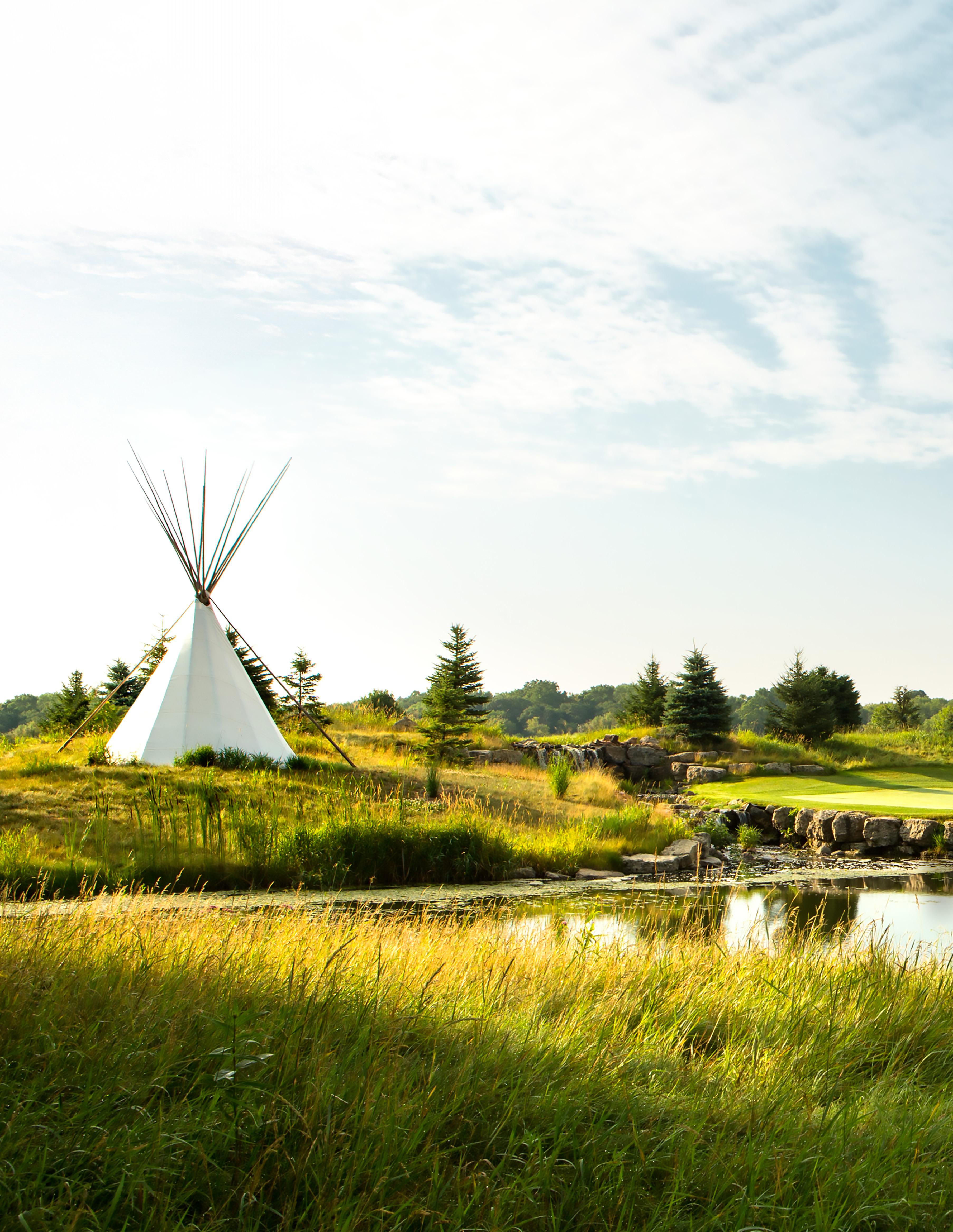

W coskaŋ
MAGAZINE OF THE SHAKOPEE MDEWAKANTON SIOUX COMMUNITY




CHAIRMAN
COLE W. MILLER
VICE-CHAIRWOMAN
NATASHA K. HACKER
SMSC BUSINESS COUNCIL
SECRETARY/TREASURER
ASHLEY J. CORNFORTH
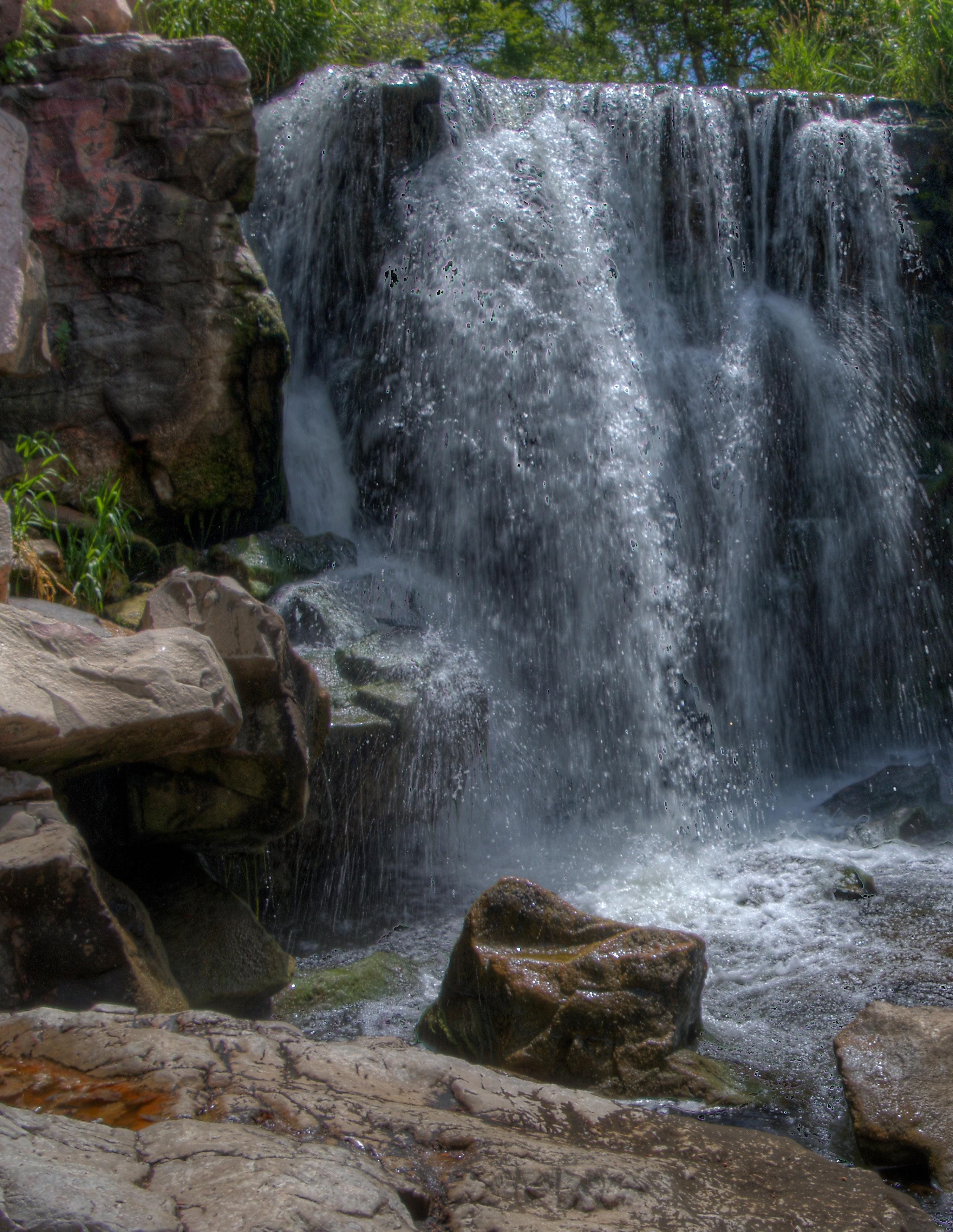
WELCOME TO WIĊOṠKAŊ
This quarterly magazine shares the collaborative efforts, collective achievements, and captivating stories of the Shakopee Mdewakanton Sioux Community. The Dakota word Wiċoṡkaŋ carries multiple meanings, but in the context of this publication it refers to the actions and efforts of a group of people. Each edition of this magazine highlights the contributions of those who come together in our shared purpose— to be a good neighbor, good employer, and good steward of the earth. We are grateful for the opportunity to share these stories, which reflect our enduring strength, resilience, and commitment to building a brighter future.
6 Voices of SMSC Leadership
A deep dive into the SMSC’s path to sovereignty and self-sufficiency through the eyes of the leaders who made it happen.
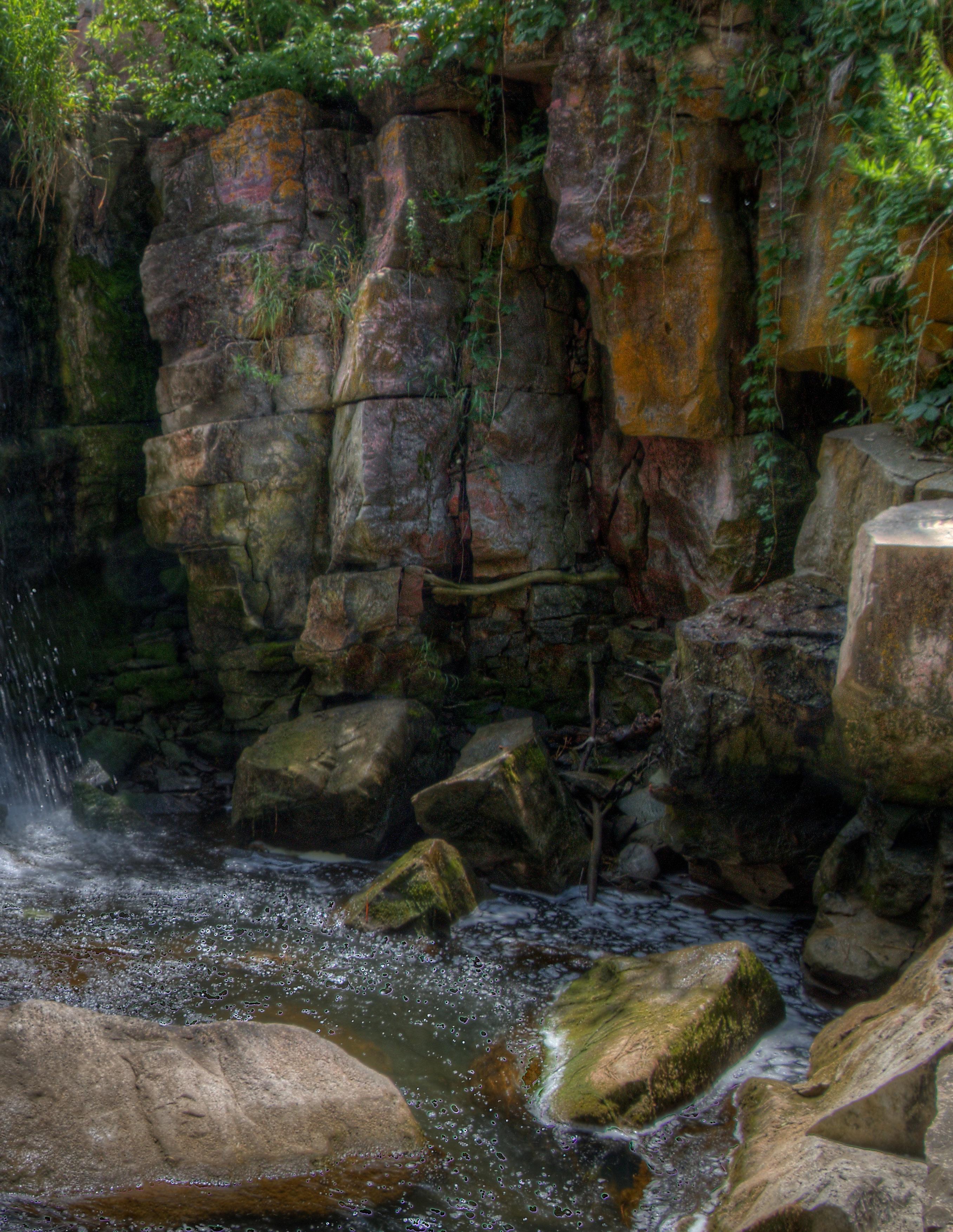
38
Leading the Way in Organics Recycling
The SMSC has opened Dakota Prairie Composting, a new and larger facility that will significantly expand their ability to turn organic waste into compost.
90 Two Decades of Swings and Serenity
Explore the entertainment and ambiance of the SMSC’s award-winning public golf course.

06 Voices of SMSC Leadership
A deep dive into the SMSC’s path to sovereignty and self-sufficiency.
14 Meet Lakeside Diamond
SMSC member Rachel (Welch) Bjornberg takes us inside her family-run jewelry store.
18 A Timeline of the SMSC
Tracing the history of the Mdewakanton
Dakota people in the Minnesota River Valley.
22 The School of Hard Knocks
SMSC elder and former Vice-Chairman
Ken Anderson Sr. shares stories and insights from his past.
26 Celebrating Dakota Heritage Through Song and Dance
How Young Native Pride honors ancestors and inspires the future.
32 Minnesota Tribes and Lawmakers Come Together to Honor Sovereignty
Sovereignty Day provides an opportunity for state and tribal leaders to build lasting relationships.

VALUES
38 Leading the Way in Organics Recycling
The Shakopee Mdewakanton Sioux Community’s Dakota Prairie Composting opens its doors.
46 Team Member Q&A
ASPIRE Counselor Lance Armstrong shares his advice from a career spent helping others.
52 From the Community to the Classroom
Behind the tribe’s efforts to restore identity and culture through the Dakota language.
56 Good Stewards of the Earth
Exploring the Shakopee Mdewakanton Sioux Community’s legacy of environmental stewardship.
62 Partners in Growth
Tribal Nations Plaza marks 15 years of tribe-university collaboration.
68 Partners in Preservation
Leading an effort to care for sacred Dakota pipes.
72 Beyond the Music
Uniting community and celebration at Lakefront Park in Prior Lake, Minnesota.
80 Honoring Dakota Values in Nature
A new, collaborative interpretive trail opens at Lowry Nature Center.
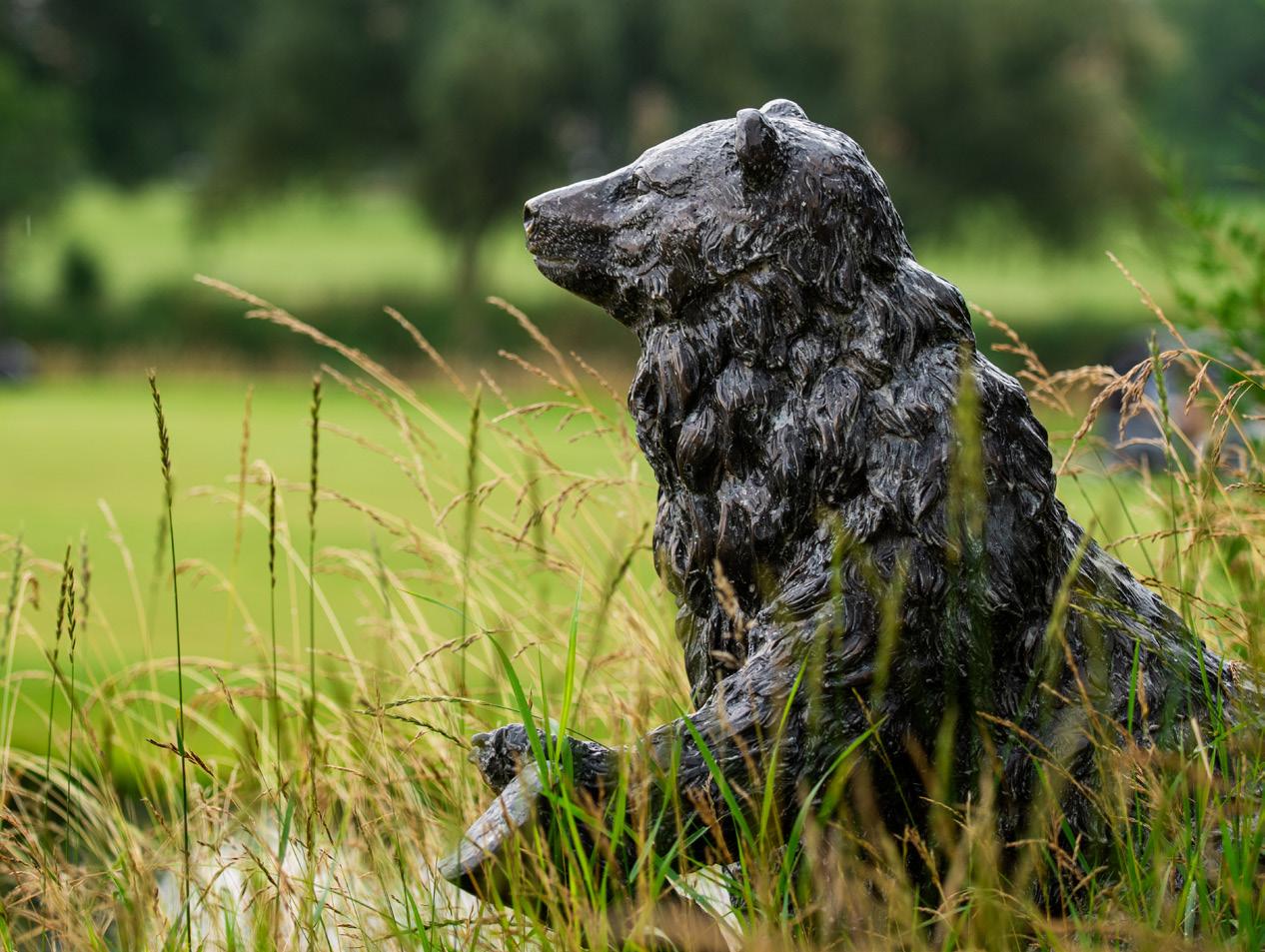
LIFESTYLE
90 Two Decades of Swings and Serenity
How The Meadows at Mystic Lake earned its reputation as a top-tier golf destination.
96 A Golf Lover’s Paradise
The latest and greatest equipment and apparel available at The Meadows Golf Shop.
100 Take a Moment for Yourself
Relax and rejuvenate with luxurious treatments at The Spa at Mystic Lake.
104 Simple and Sweet
Sun Blossom Cookies are a tasty treat you can feel good about eating.
106 Event Calendar
BUSINESS COUNCIL
CHAIRMAN
Cole W. Miller
VICE-CHAIRWOMAN
Natasha K. Hacker
SECRETARY/TREASURER
Ashley J. Cornforth
CONTRIBUTORS
Keith B. Anderson
Lance Armstrong
Jenny Appenzeller
Javi Avalos
Andrew Basil
Jack Bjornberg
Raine Cloud
Rebecca Crooks-Stratton
Rachel Crownhart
Margo Gavle Prescott
Dea Goldy
Willie Hardacker
Mike Luckraft
Mystic Lake Marketing
Dustin Montey
Allison Neaton
Bill Rudnicki
Kelsey Scares The Hawk
Erin Skelly
Sarah Taylor
Tricia Velure
Andy Vig
Jason Wedel
Caitlin Welch
ISSUE 3
MARKETING AND COMMUNICATIONS
LEADERSHIP
Danny Olsen
Amber Chesney
Mike Christenson
Kelsey Hagen
Aleks Katane
COMMUNICATIONS
Erin E. Belanger
Brian Deutsch
Joni Komperda
Jesse Menden
Chaundra Rich
Chantre Smith
DESIGN
Elle Campion
Jaclyn Ficek
Karen SC Hanson
Randy Palmer
Allison Snider
Lydia Velishek
MULTIMEDIA
Jake Miller
Blake Ziemer
THANK YOU TO THE FOLLOWING
SMSC MEMBERS AND YOUTH FOR SHARING THEIR STORIES
Ken Anderson Sr.
Rachel (Welch) Bjornberg
Leonard Prescott
Allene Ross
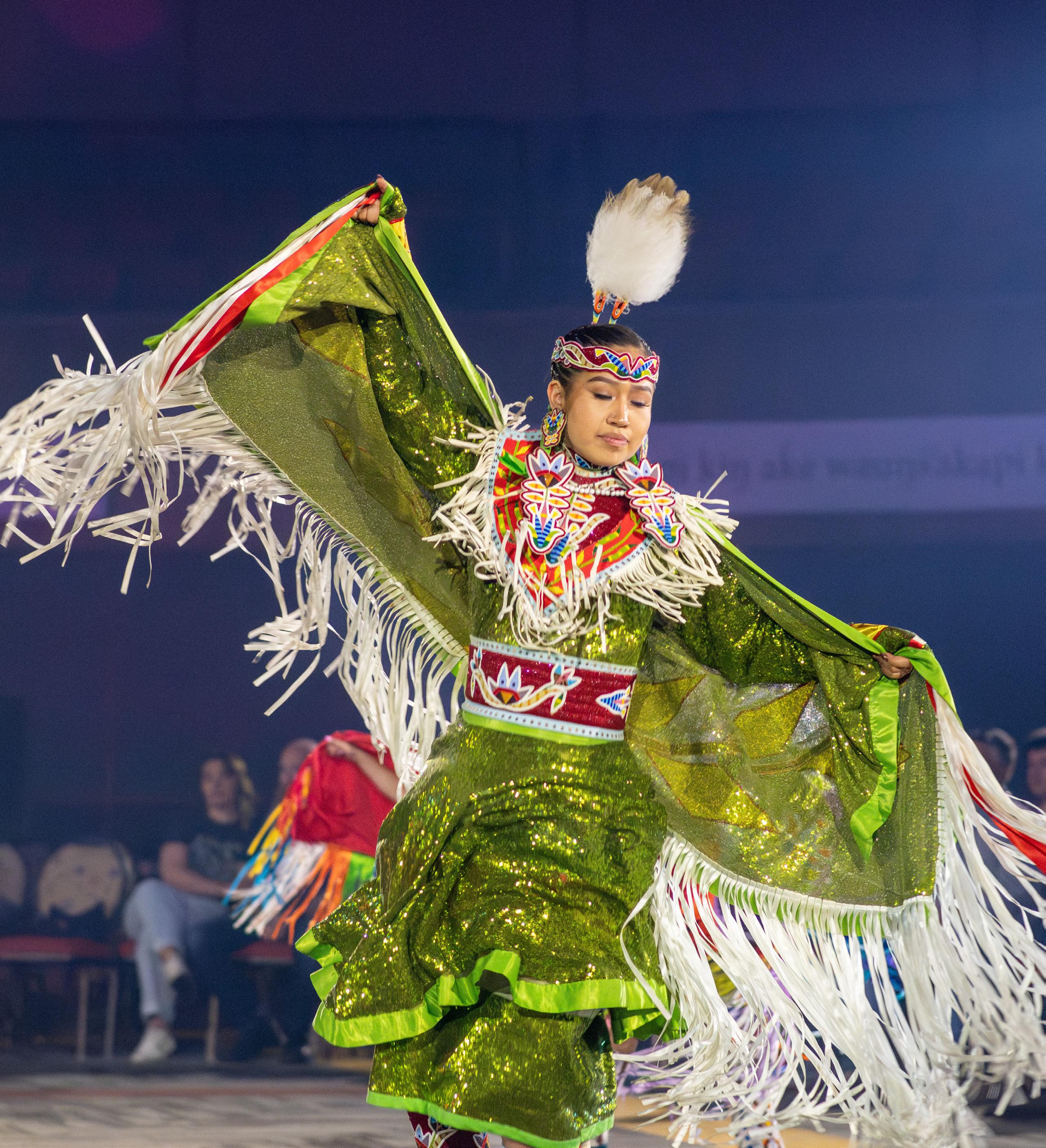

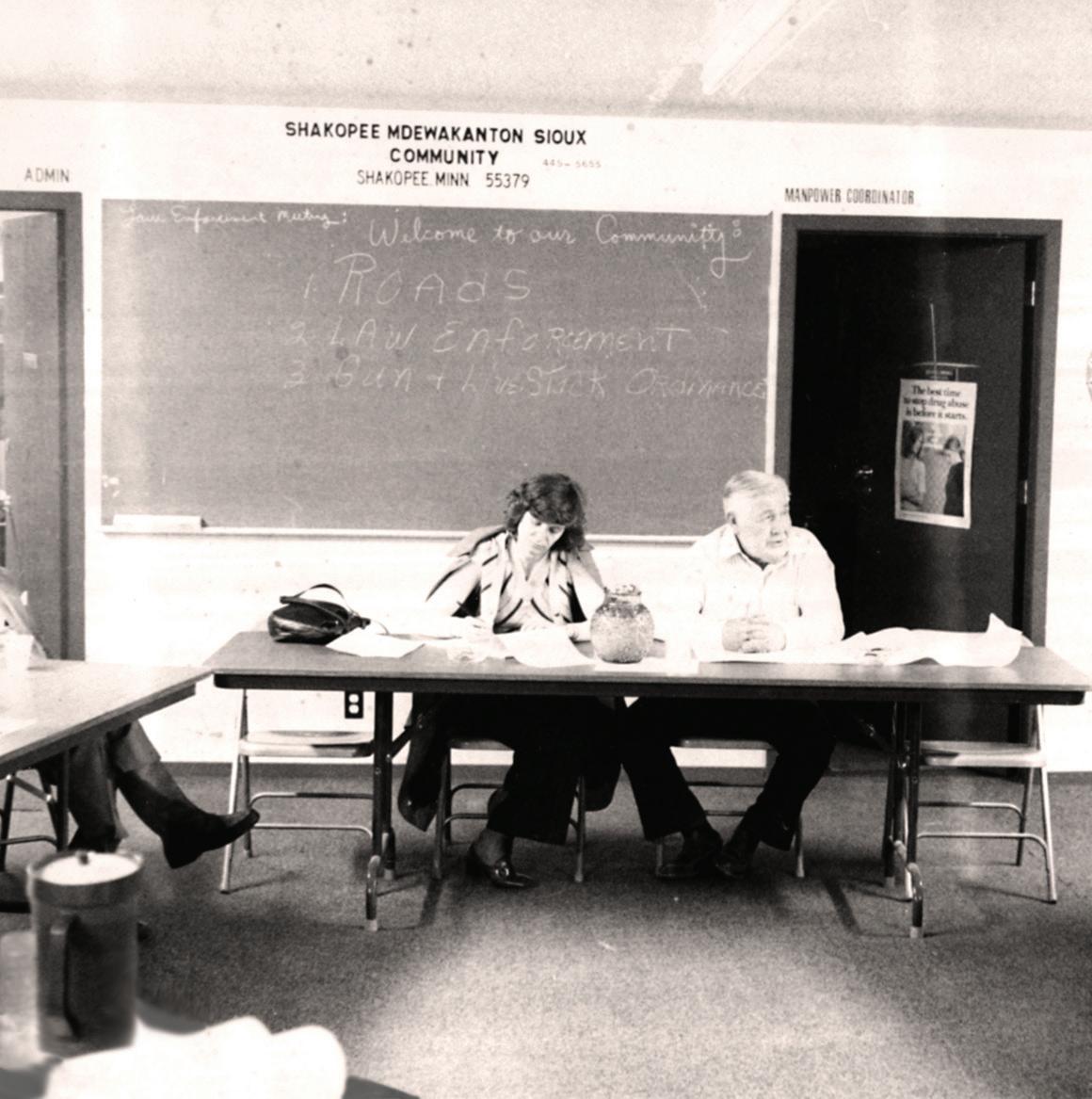

VOICES of SMSC LEADERSHIP
Part I: PAVING THE WAY to TRIBAL SOVEREIGNTY
This is the first installment in a multi-part series exploring key moments that shaped the modern-day Shakopee Mdewakanton Sioux Community.
BY CHANTRE SMITH
Through periods of scarcity, adversity, and after many years, prosperity, the Shakopee Mdewakanton Sioux Community (SMSC) has grown into a self-sufficient tribal government. Prior to the SMSC’s formal recognition as a tribal government, the Mdewakanton people living on the tribal lands in Prior Lake faced severely limited resources and uncertain economic conditions. Roads were unpaved, running water was scarce, access to health care was limited, and life was a daily struggle for many. Despite these challenges and determined to make a change for their people, several Mdewakanton families in the Prior Lake-Shakopee area came together in 1969 to begin the process of drafting a tribal constitution, determining membership requirements, and making the case for federal recognition as a tribal government.
With formal approval of its constitution from the U.S. Department of the Interior, the Shakopee Mdewakanton officially achieved federal recognition from the U.S. government on November 28, 1969. The impact of this decision would change the course of the tribe—and the lives of its members—immeasurably. Federal recognition meant that the SMSC had the right to self-govern, the right to enter government-to-government relationships, and the right to pursue a true state of self-sufficiency and economic independence. Less than a month after receiving federal recognition, the SMSC held an election to select three members—Chairman Norman Crooks, Vice-Chairman Amos Crooks, and Secretary/Treasurer

Edith Crooks—to serve on the first Business Council to run the day-to-day operations of the tribe.
From the beginning, the SMSC Business Council has played a central role in shaping the SMSC’s direction—driven by a commitment to Dakota culture, sovereignty, and the well-being of future generations. As the elected leadership body, the Business Council carries the responsibility of making decisions that reflect the needs, values, and priorities of the tribe and its members. With a focus on governance, financial stewardship, and long-term planning, the Business Council members over the years have guided the SMSC through historic moments of growth and transformation.
“We here at the SMSC didn’t just spring forward in 1969 and have a social order that was fair and just. Our journey was filled with hard lessons we had to go through in order to slowly make progress in getting our people to recognize a system that would have the rights and privileges we could all enjoy and feel protected by,” said former SMSC Business Council Member Leonard Prescott.
With over 55 years since federal recognition, the ability of the SMSC to self-govern as a sovereign nation has proven to yield innumerable opportunities and benefits for the tribe to pursue, from cultural preservation and environmental safeguarding to infrastructure development and improved access to health care, services, and programs.

on the HORIZON
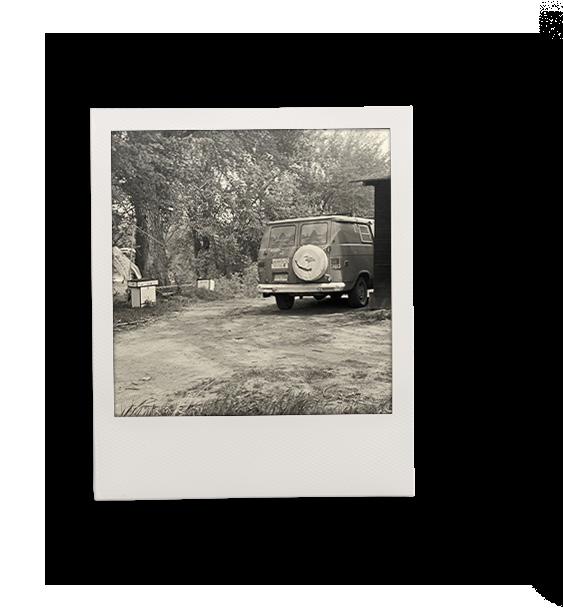
While the tribe had achieved federal recognition, it would take many years and hard work to offset decades of deficient federal government policies that had left the SMSC with dirt roads, inadequate housing, and few prospects for a better future for the next generations. Running water, which was common off the reservation for decades, had only just arrived.
In 1972, the city of Prior Lake annexed the SMSC reservation, bringing the tribe’s land within the city’s official boundaries. Although the annexation did not alter the tribe’s sovereign status, it introduced a complex jurisdictional landscape involving land use, zoning, and municipal services. In 1983, the city attempted to reverse course by redrawing election precinct boundaries to exclude the reservation, claiming the annexation had been illegal and that tribal members could not vote in city elections, and that the city was not required to provide municipal services to the SMSC and its members. The SMSC and tribal member Edith Crooks filed a federal lawsuit challenging the city’s effort to exclude the tribe. The federal courts later ruled that the annexation was valid and required the city to provide voting rights and municipal services to SMSC residents on the reservation on an equal basis—despite having no civil jurisdiction over tribal lands.
The first few Business Councils worked diligently—from the ground up—to establish necessary programming and services for people living on the reservation. Several tribal initiatives, a health care program, a child care facility, and a home improvement program were finally coming to fruition after years of planning.
Faced with challenges securing bank loans for homes on trust land, the Community established a home mortgage assistance program in 1989. This important step toward self-sufficiency and independence laid the foundation for long-term housing stability for tribal members and their families on the reservation. “The reason we did the home mortgage program to begin with was because it allowed us to fully own these homes on our trust land,” said former SMSC Business Council Member Allene Ross. “Individuals can get their own contractors to design and build their own homes because of the program that we started back in the 80s.” Still in place today, the home loan program remains one of the tribe’s most successful programs— empowering generations of SMSC members to achieve homeownership, build equity, and take pride in establishing roots on their tribal lands.
As the SMSC and its government continued to slowly grow, one continuing need tackled by the SMSC’s young government was securing a source of sustainable revenue to support the growing population. Early economic development projects included stripping copper wire, burning diseased trees in a fire pit, and selling cigarettes.
Under the leadership of multiple Business Councils, the SMSC took bold steps over the years to establish tribally owned enterprises that would generate revenue, provide jobs, and strengthen the SMSC’s economic independence. From gaming to hospitality, agriculture to retail, each venture was strategically developed to support a sustainable economic future. These enterprises not only fueled internal development but also created new opportunities for surrounding communities. The SMSC’s journey to successful economic diversification was possible, in large part, because of the early development of gaming as an economic development tool.
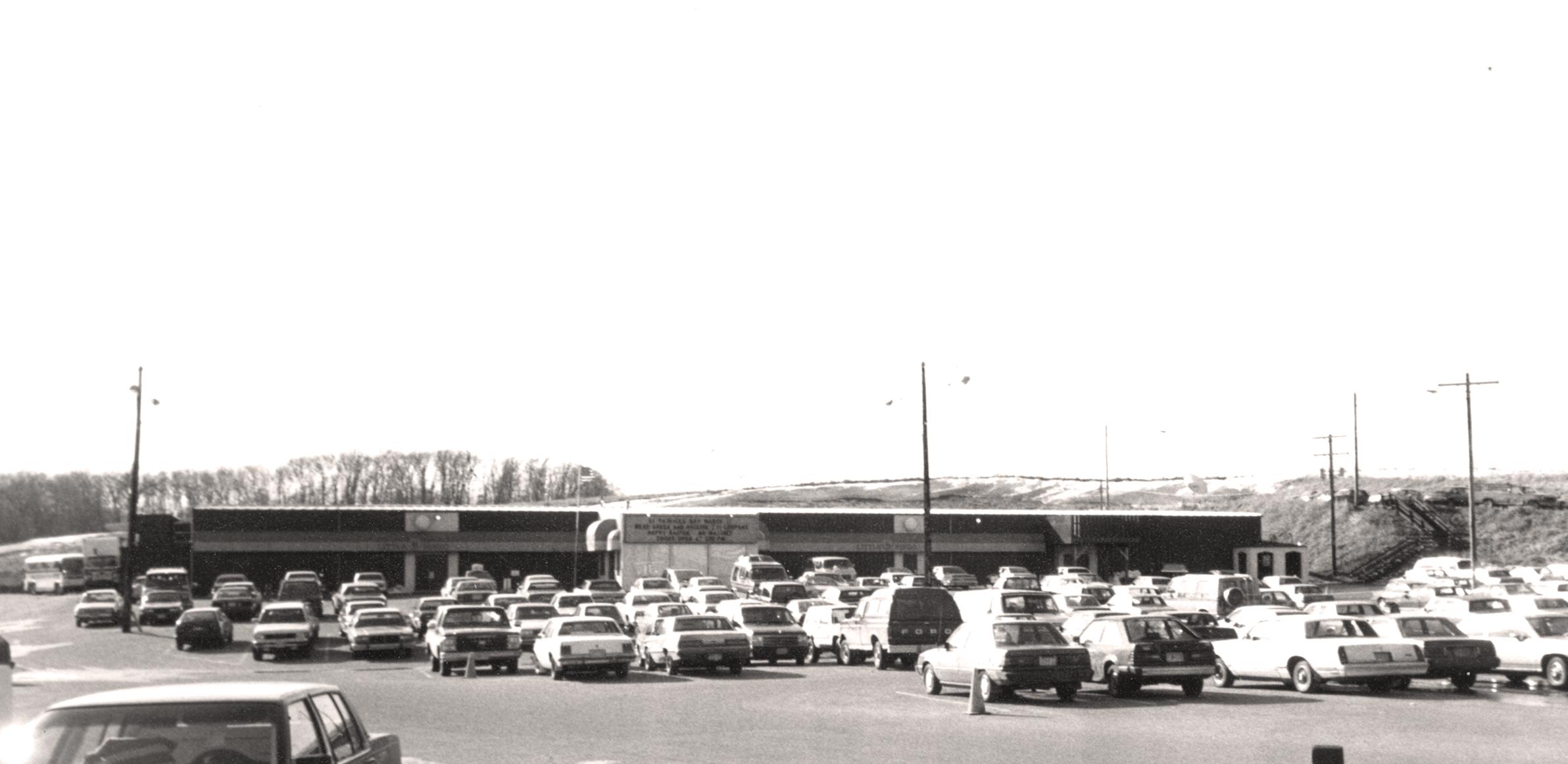





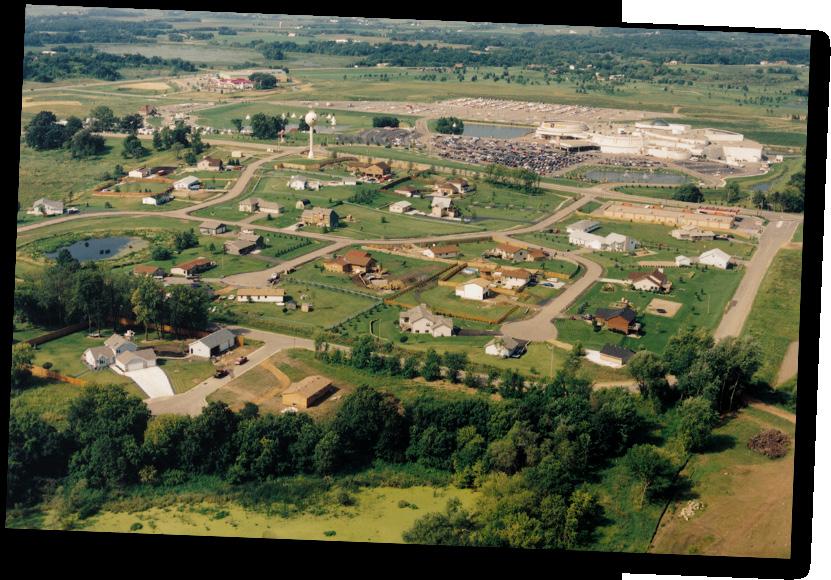
Recognizing the economic potential of high-stakes bingo after learning of its success in Florida, the first SMSC Chairman, Norman Crooks, guided the SMSC to seize the opportunity to generate revenue for the tribe by opening Little Six Bingo Palace on October 16, 1982. The 1,300-seat high-stakes bingo hall quickly became a regional draw, attracting visitors by the busload from across Minnesota. Its immediate success marked a turning point for the tribe, opening the door to new economic opportunities and a more promising future. The bingo hall also provided jobs for tribal members and other people living in the area. Early revenues were used to help fund construction of paved roads leading to the reservation and a new Community Center to house tribal member services.
In the summer of 1984, another major milestone in the development of the SMSC’s gaming operations occurred with the move into casino-style gaming with early versions of slot machines being operated at the Tipi, which was originally built as a cultural center. What became known as Little Six Casino in 1989 was a tribal enterprise that jump started the SMSC’s development of one the of most successful gaming enterprises in all of Indian Country. With the success of Little Six Bingo and Little Six Casino, and the thousands of visitors now coming to the SMSC, the need for essential government infrastructure, on a much larger scale, became apparent.
One of the most significant achievements of the 1980s was the introduction of sewer and water infrastructure to the reservation—an essential step toward expanding housing and supporting the tribe’s economic development. Driven by the Business Council’s determination and made possible through a grant
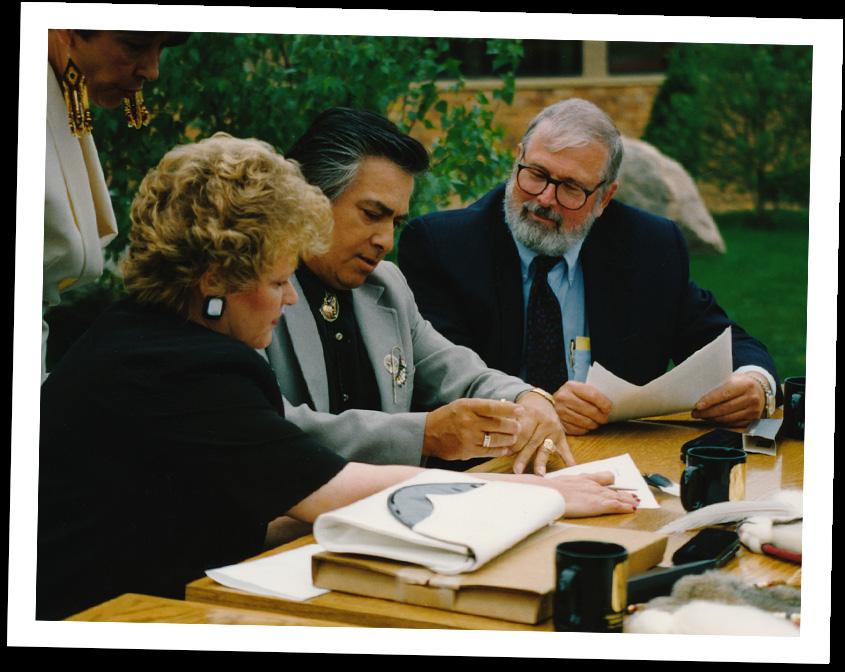
secured by the tribe, this long-standing priority moved forward despite years of delays. In December 1986, the SMSC, Metropolitan Waste Control Commission (this organization was later reorganized into the Metropolitan Council), and the city of Prior Lake signed an agreement, allowing the development of 80 acres of tribal land and 20 new housing units. The agreement permitted the SMSC to own and maintain its sewer system on the reservation and turn over the portion of the pipe that lay outside of the reservation. All 20 housing units, the casino, and the Community Center were connected to the sewage system.
More importantly, the utilities allowed for further economic development on the 80 acres. Through this historic agreement, the SMSC would finally have the opportunity to diversify its economic base for the first time.
“After receiving the grant to construct the sewer and water line, we were able to develop our first housing division, Big Eagles Village,” said former SMSC Business Council Member Ross.
“To this day, that same sewer and water line is in use and has lasted all these years.”
While the SMSC was part of a small number of tribes around the country blazing a trail of exercising
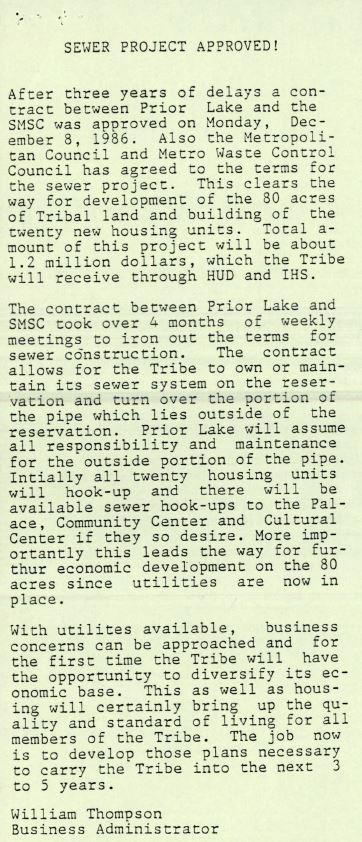

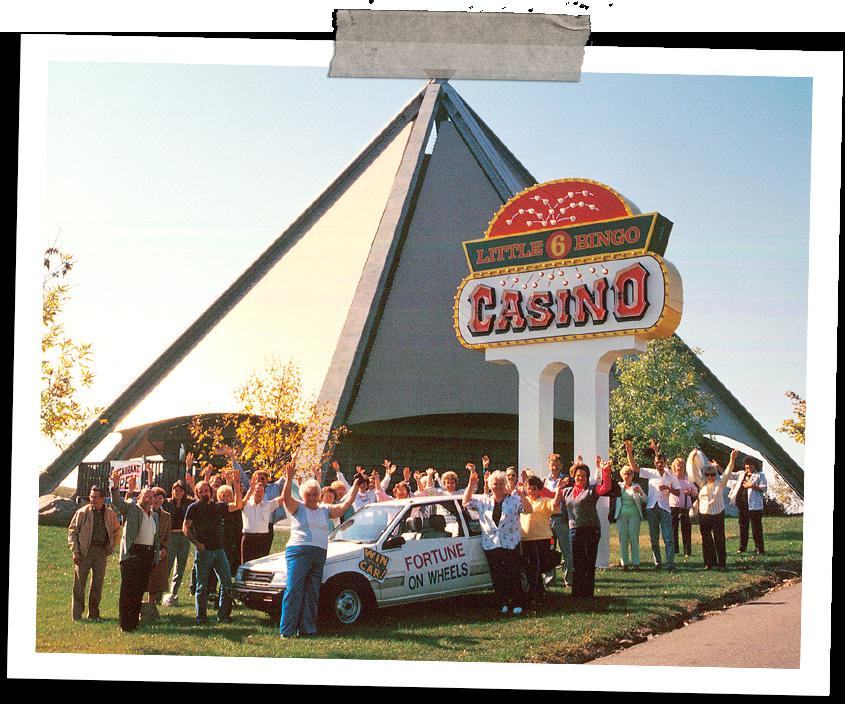
inherent tribal sovereignty to operate gaming enterprises, changes in the law allowed for tribal gaming to grow even larger. Two U.S. Supreme Court decisions recognized inherent tribal authority to conduct activities on tribal lands that were not otherwise expressly prohibited by state governments. Bryan v. Itasca County (1976), a case out of Minnesota on the Leech Lake Reservation, was the foundation for the Califonia v. Cabazon Band of Mission Indians (1987), a decision where the Supreme Court held that the state of California could not prohibit or otherwise regulate a tribal bingo facility operated by the Cabazon Band located near Palm Springs. It was a recognition of inherent and retained tribal government authority to operate gaming on Indian lands outside the control of state government. In 1988, U.S. Congress enacted the Indian Gaming Regulatory Act (IGRA) which established the regulatory framework for Indian tribes to operate tribal gaming on their lands.
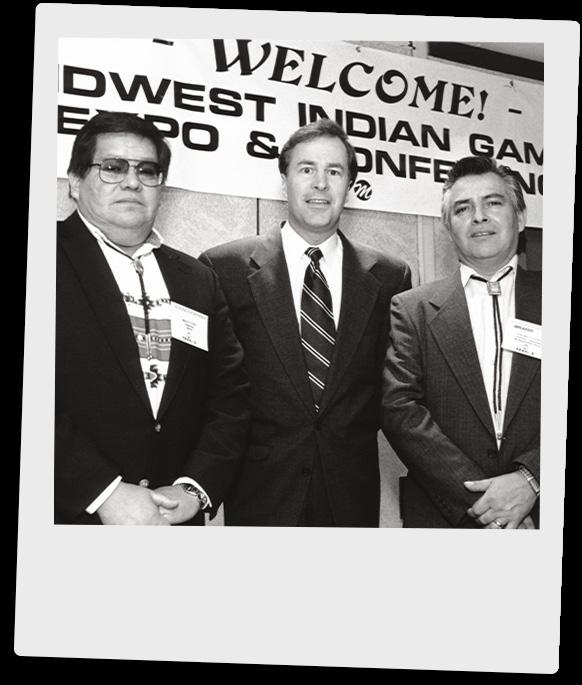
the California v. Cabazon Band of Mission Indians case and how it helped to change the scope for tribes in the late 1980s and early 1990s. As one of the founding members of the National Indian Gaming Association, Prescott worked with tribal leaders to help grow and protect the tribal gaming industry. Furthermore, Prescott identified a need to start a similar association with all 11 tribes in the state of Minnesota.
Tribal leadership at the time recognized that there is power in numbers. If Minnesota tribes were going to open casinos, they needed to join forces and support each other. “It was important to have a unified front with other tribes,” said former SMSC Business Council Member Ross. “The Minnesota Indian Gaming Association (MIGA) was created out of necessity to lobby state legislation for Class III gaming in Minnesota.”

This was a pivotal time for the SMSC as they now had the legal authority to operate a tribal gaming enterprise. “This monumental case created more opportunities for us than we could have ever imagined,” said former SMSC Business Council Member Prescott, reflecting on
As a result of the efforts of the tribes in Minnesota through their work as MIGA, Minnesota tribes were the first in the nation to negotiate and sign gaming compacts with a state government under the requirements of the IGRA. “We accomplished so much working together that we were able to have the first 11 compacts in the nation for video games of chance and another 11 compacts for blackjack,” said former SMSC Business Council Member Prescott. With these two favorable tribal-state gaming compacts in hand, the SMSC broke ground on a new casino in 1991.
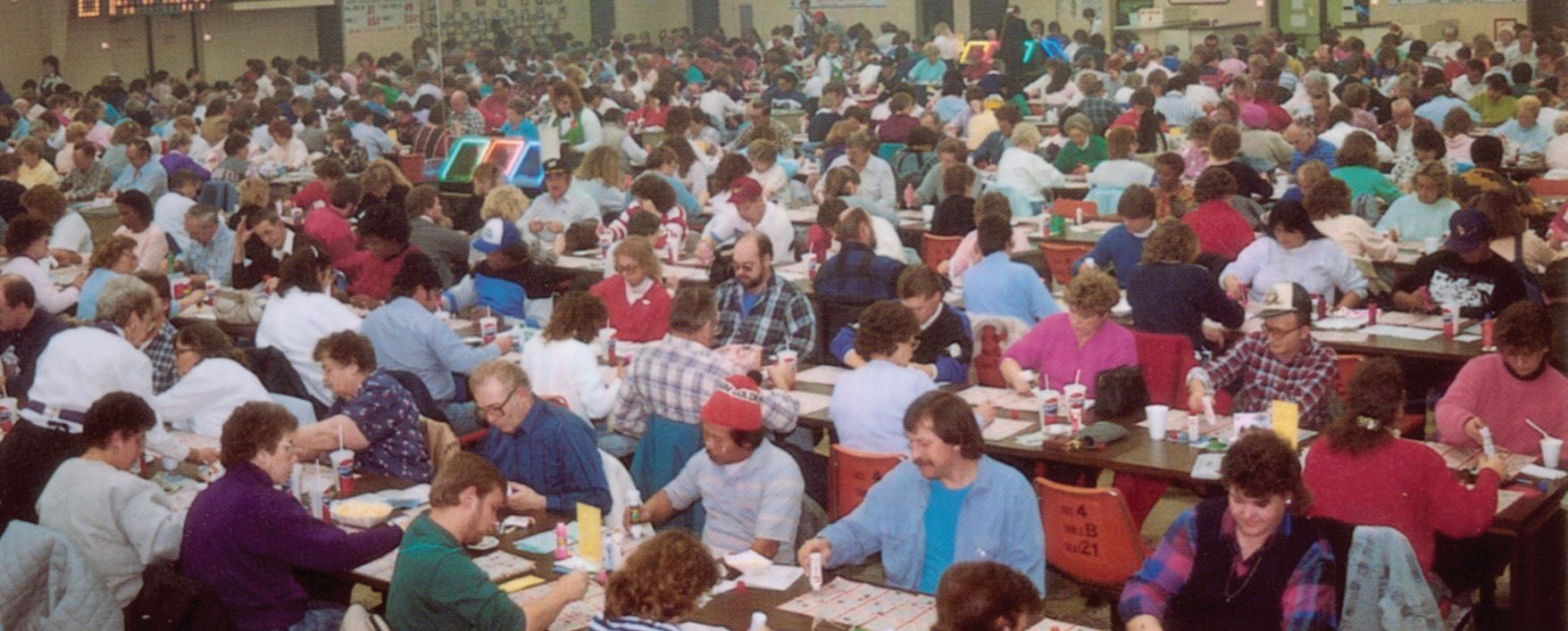
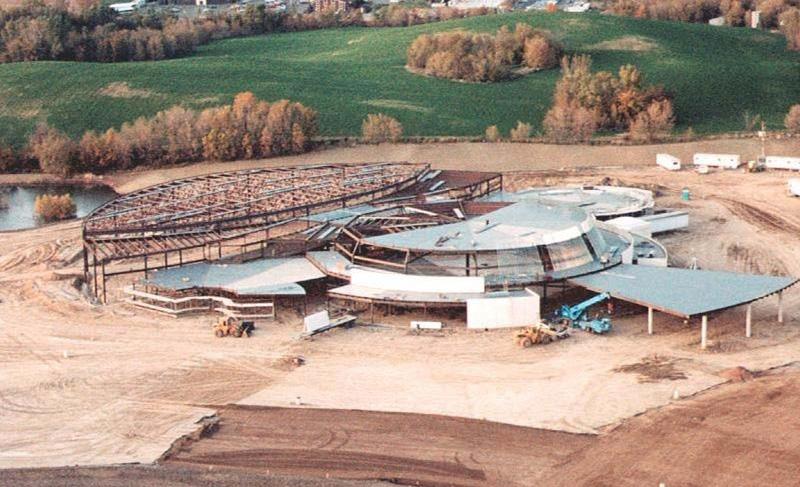


ECONOMIC DEVELOPMENT and SELF-SUFFICIENCY
As record attendance at Little Six Bingo and Little Six Casino continued, the opportunity for tribal revenue growth became apparent. A new bingo/casino facility that would house both operations would grow the SMSC’s gaming enterprise in ways only dreamed of 10 years prior with the opening of Little Six Bingo. As a result, Mystic Lake Casino—which developers described as the most technologically advanced casino building in the United States at the time—opened in May 1992.
Tribal gaming, after the opening of Mystic Lake Casino, ushered in a new era of marked economic growth, catapulting the SMSC toward selfsufficiency by enabling improvements in health care, infrastructure, economic conditions, cultural preservation, and tribal governance.
Amidst all the newly realized economic growth, the SMSC began to grow its tribal government and
essential government services. It now had the financial resources to build out its government structure. The SMSC built a new Community Center that included a health clinic and a Tribal Court. The Tribal Court, which was established in 1988, now had dedicated space for its offices and courtroom. The SMSC further enacted additional tribal ordinances filling out the mission of the Tribal Court. “Once we adopted a tribal court, we could handle our internal issues,” said former SMSC Business Council Member Ross. “It led to securing greater tribal sovereignty to determine our own affairs and legal matters.”
With the additional financial resources available to the tribe because of the tremendous growth in tribal gaming, the SMSC grew other government service programs such as land and natural resources, public works, social services, and health and dental. Basic infrastructure
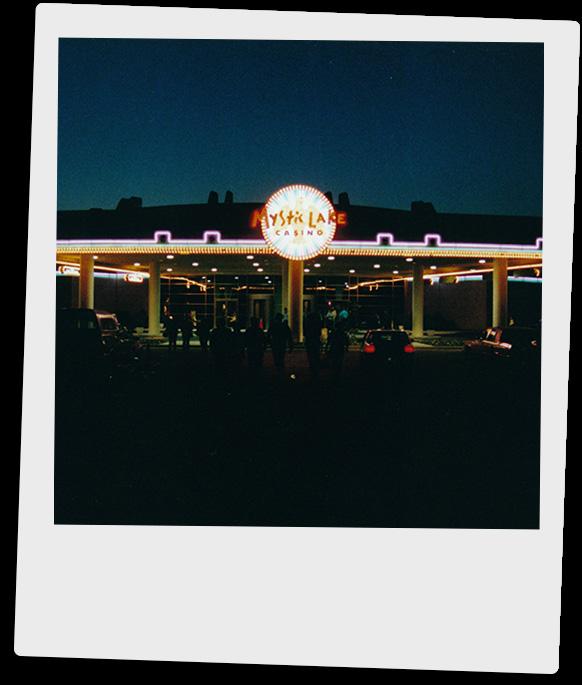
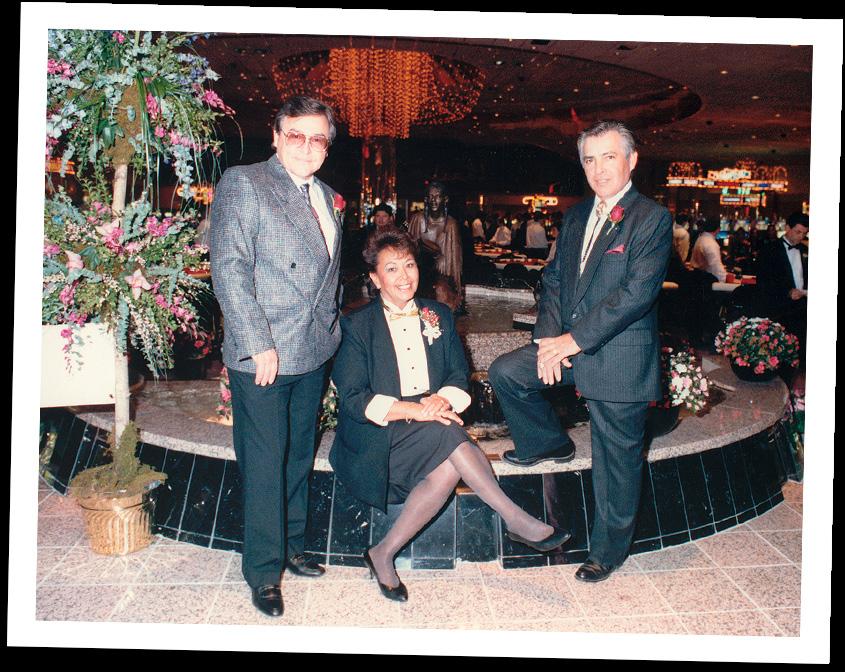
in roads, water and sewer systems, parks, and green initiatives all saw significant investments.
Economic development soon began to extend in directions other than gaming. Diversification of the tribal economy was made a priority with the opening of several enterprises, including a convenience store, a fitness center, a child care facility, an RV park, and the addition of a hotel to Mystic Lake Casino.

In February 1994, the SMSC opened its first convenience store, across the street from Mystic Lake Casino, to meet the basic needs of the community’s growing population and casino guests. It served as a one-stop shop and no longer required members and guests to travel to surrounding cities for gas and other household necessities. A few months later—in


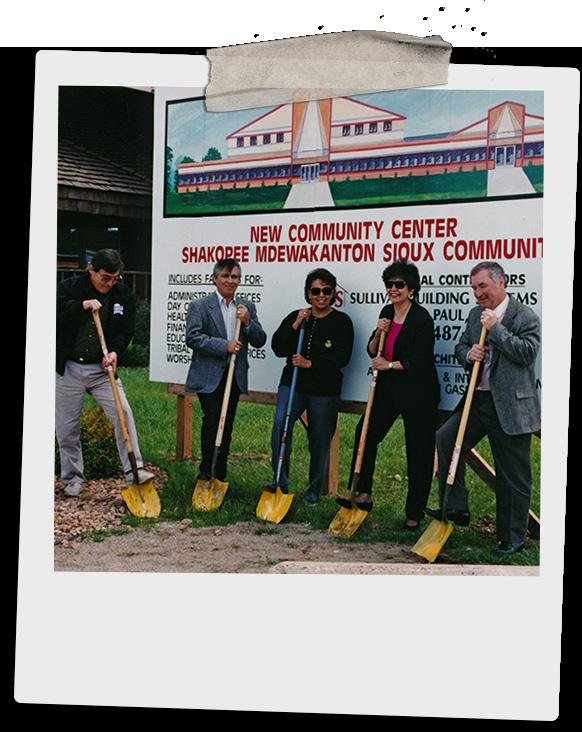
May 1994—Dakotah Meadows RV Park opened to the public, providing alternative lodging for Mystic Lake Casino guests. As a means for tribal members to have a full-service recreation center without having to leave the reservation, Dakotah! Sport and Fitness was constructed over the course of 1994 and opened its doors in November. The increased need for early childhood education and care led to the completion of Playworks—an on-site child care facility with curricularbased programs—in January 1995, fulfilling the tribe’s desire to provide a larger day care to serve tribal members, employees, and offer dropoff child care options.
For many years, the SMSC’s Business Council and General Council—the highest governing body of the SMSC that
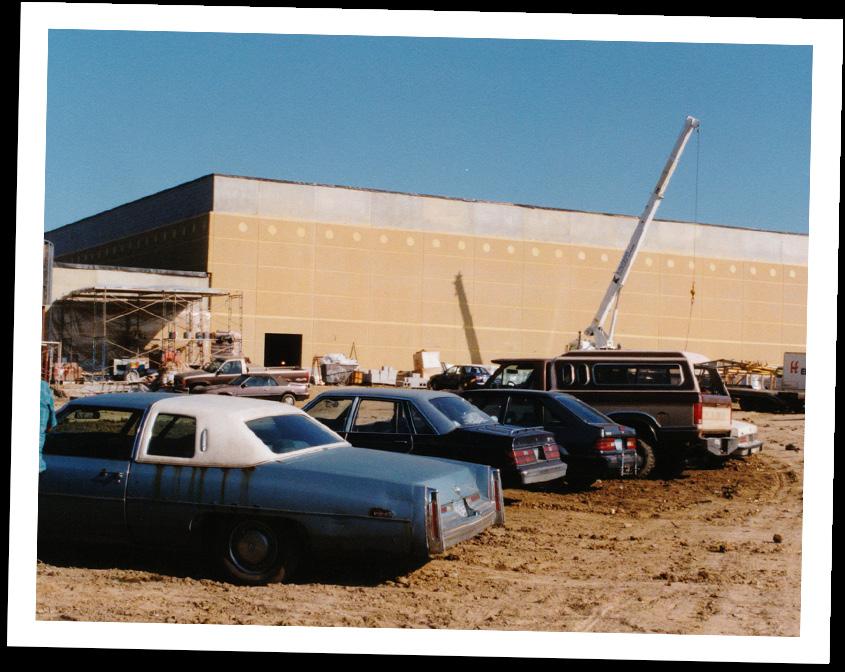
is responsible for setting bylaws, developing policies, and making decisions on all significant tribal matters—dreamt of ways to create the ultimate experience for guests coming to gamble at the SMSC’s casino and bingo halls, while also promoting sustainability for the tribe and for tribal members. Destination tourism came one step closer in August 1995, as ground was blessed for the new 10-story hotel adjacent to Mystic Lake Casino. With 216 rooms, Mystic Lake Casino Hotel became one of the largest hotels in the south metro area.
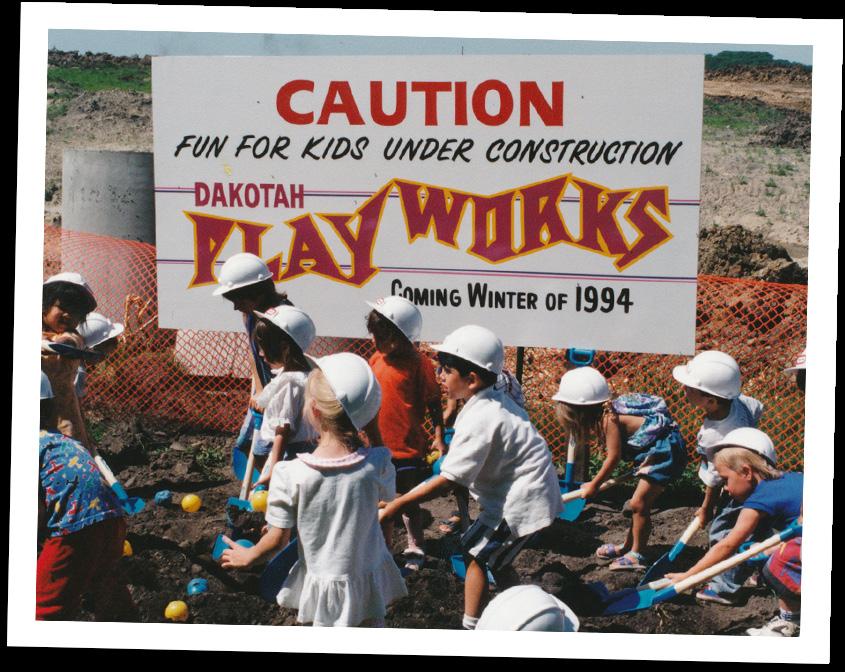
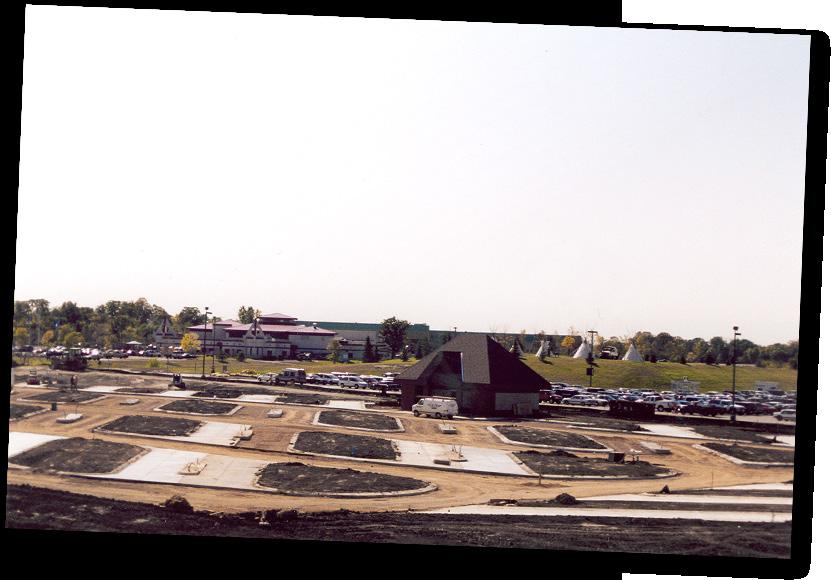
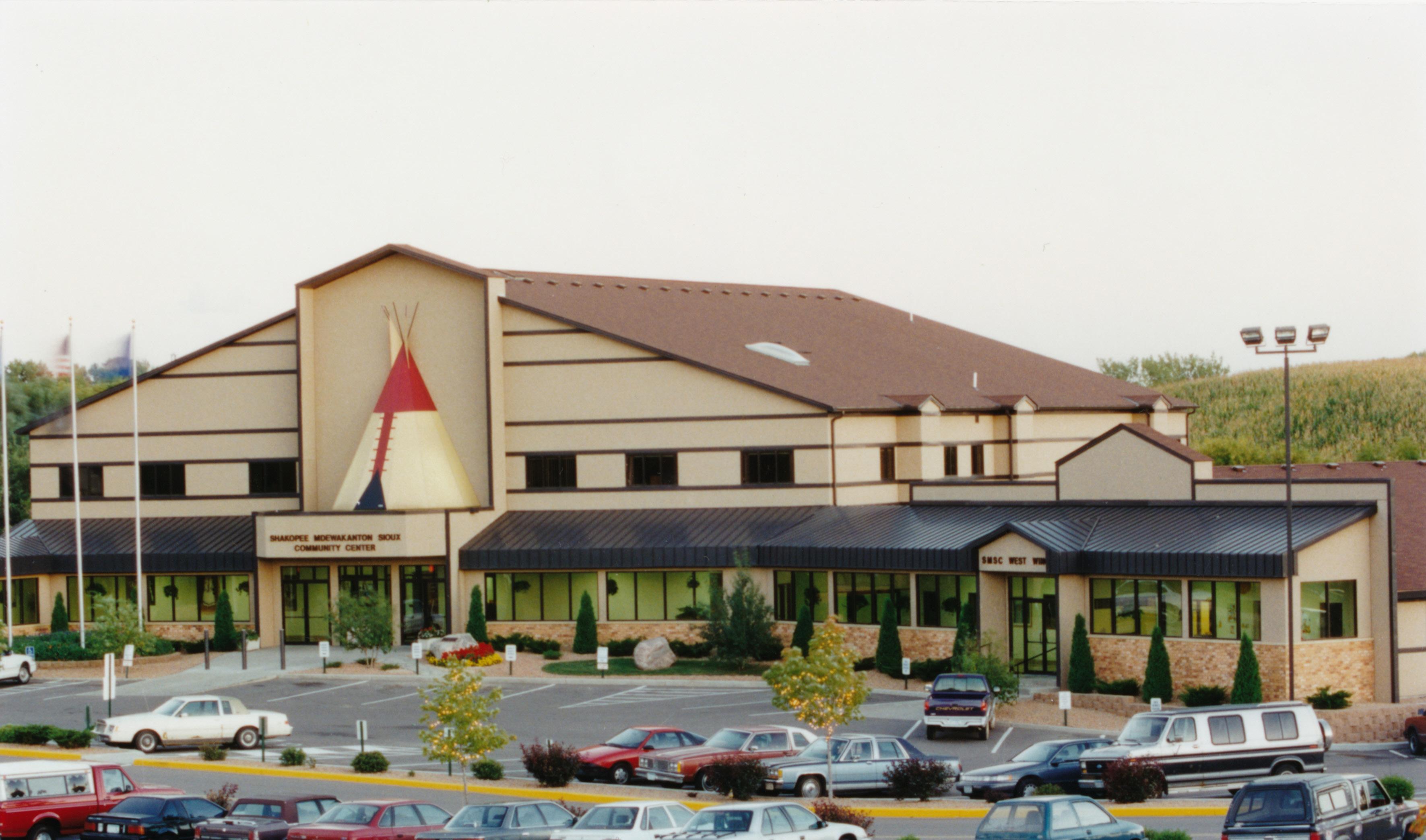

COMMITMENT TO GIVING and PARTNERSHIPS
With the success of the Gaming Enterprise and other economic ventures, the SMSC embraced the opportunity to help communities locally and across the country. A core pillar of the Business Council’s vision has always been to give back—to help uplift others through charitable giving, grants, and partnerships. Over the years, the SMSC has become one of the nation’s leading philanthropic tribal governments, distributing hundreds of millions of dollars to tribal nations, nonprofit organizations, and educational initiatives. This commitment reflects the Dakota tradition of generosity and being a good neighbor—values that have guided the SMSC long before receiving federal recognition in 1969.
“We must look out for our relatives and our neighbors,” said former SMSC Business Council Member Ross. “Our relations span from shore to shore. We need to keep an eye out for each other and work toward the benefit of one another.”
There have been no great things that have been accomplished without great struggle.
“We’ve always donated to other tribes. The thought was, do a good business, and then be generous to others,” said former SMSC Business Council Member Ken Anderson Sr., who was in office when Mystic Lake Casino opened.
– FORMER SMSC BUSINESS COUNCIL MEMBER LEONARD PRESCOTT
The SMSC’s growing presence in the area also paved the way to begin building relationships with local governments and community organizations. Throughout the 1990s, the Business Council maintained respectful working relationships with the city of Prior Lake and Scott County on issues of mutual interest. Today, the SMSC has more than 60 agreements with local governments related to shared priorities, such as public safety, natural resources, road projects, and infrastructure.
Through years of determined leadership and strategic growth, the SMSC has become a model of tribal governance and economic independence over the past 50 years, facing unprecedented growth and prosperity. But it wasn’t an easy road to get to where they are today. The Business Council continues to guide the tribe with integrity, honoring the legacy of past leaders while planning for the needs of generations to come. Their leadership reflects the strength, resilience, and values of the Dakota people—always with an eye on protecting sovereignty, supporting SMSC members, and building a brighter future. The dedication of these leaders has shaped the course of SMSC history for more than five decades.
As the SMSC continued to grow, new challenges and opportunities emerged. Stay tuned for part II of the SMSC Business Council’s story during the 21st century in the next issue of Wiċoṡkaŋ W
SMSC BUSINESS COUNCIL MEMBERS
1969-2ooo
KENNETH ANDERSON SR.
DELORES BLUESTONE
LOIS BREWER
MELVIN CAMPBELL SR.
AMOS CROOKS
DANNY CROOKS
EDITH CROOKS
GLYNN CROOKS
NORMAN CROOKS
STANLEY CROOKS
PATRICIA HOVE (PRESCOTT)
DARLENE MATTA
LEONARD PRESCOTT
ALLENE ROSS
AMY STADE (CROOKS-LARCA)
SUSAN TOTENHAGEN (BREWER)
LORI WATSO
VICTORIA WELCH (LUCIO)
VIOLET WELCH


Meet LakeSide Diamond
THE VIP JEWELER NEXT DOOR

BY ERIN E. BELANGER

With practiced hands and an artist’s eye, the jeweler works meticulously. There’s a sense of anticipation— the sparkle, the shine, the twinkle—a moment when the light dances across the surface, awakening the stone’s inner fire. As it turns, each flicker reveals the color, clarity, and cut brilliantly captured by each shimmering angle.
The designer feels the emanating energy and the weight of the gemstone, knowing every rock has the possibility for brilliance. The final design must embrace the stone, and the setting must accentuate its radiance, drawing out the vivid hues and luminous depths. While presenting its natural splendor, the design ensures seamless harmony between stone and metal, with every curve, prong, and bezel placed with precision. Each detail is created intentionally as the masterpiece begins to take shape.
At Lakeside Diamond there are no suits and ties. Instead, graffiti-style murals grab your attention and set the tone for a laidback, friendly, and welcoming experience. The cool, hip-hop atmosphere stems from the contemporary and innovative jewelry boutique’s owners, Shakopee Mdewakanton Sioux Community (SMSC) member Rachel (Welch) Bjornberg and her husband Jack Bjornberg. For five years, the couple has worked hard to build a premium jewelry shop from the ground up. “It’s been an organic process,” said Rachel. “There has been a lot of learning as we go.”
The desire to own a high-end jewelry shop has always been Rachel’s dream. When she was little, her mother Julie, owned Queen of Diamonds, which was located inside Mystic Lake Casino Hotel in the ‘90s.


Rachel recalls, “I always loved going to work with my mom, and I knew I wanted to own a store like her someday.”
As Rachel and Jack began to move forward with their vision, the perfect location in the Dakota Mall on Mystic Lake Drive became available. “We really liked the idea of having special, custom pieces made right here on the reservation,” said Rachel. “We wanted to create a space where people felt comfortable, where they could ask questions without feeling intimidated.”
The boutique sells everything from earrings, necklaces, engagement rings, pendants, watches, and also offers custom and heirloom jewelry and timepieces. “We take pride in offering a full-service shop,” said Jack. “We have a lot of clients, and they deserve a private, intimate experience without the stress and pressure that can be found in a more traditional jewelry store.”
Lakeside Diamond happily serves a variety of customers with varying needs and desires—whether you’re looking for something young, hip, and fresh, or you prefer something classic, traditional, and timeless. They will even help you repurpose precious stones that have been passed down to offer a new look for one-of-a-kind family treasures. “It’s amazing to see how a piece of jewelry that has been in a family for generations can be transformed into something new while still holding sentimental value,” Rachel shared.
Throughout the years, the reputation of Lakeside Diamond has grown exponentially, attracting clients from all around the metro area and across the country. “We create lots of unique pieces for tribal members, local patrons, musicians, and even professional athletes,” explained Rachel. “We’ve had clients fly in just to have a custom piece designed by us.” Rachel and Jack have made a
name for themselves in the jewelry world, earning the trust of celebrities and athletes from teams like the Minnesota Vikings, Timberwolves, Wild, United, LA Clippers, and more.
“They appreciate the privacy and VIP experience we offer,” Jack added. “They know that when they come here, they’ll be treated like family.”
The couple has grown their business to employ more than a dozen local residents, friends, and family. “It became really important to us to be able to offer the full experience right here in-house,” said Jack.
“Now we can do everything from selling merchandise to ring sizing and repairs. We can bring a client’s sketch to life with a computer-aided


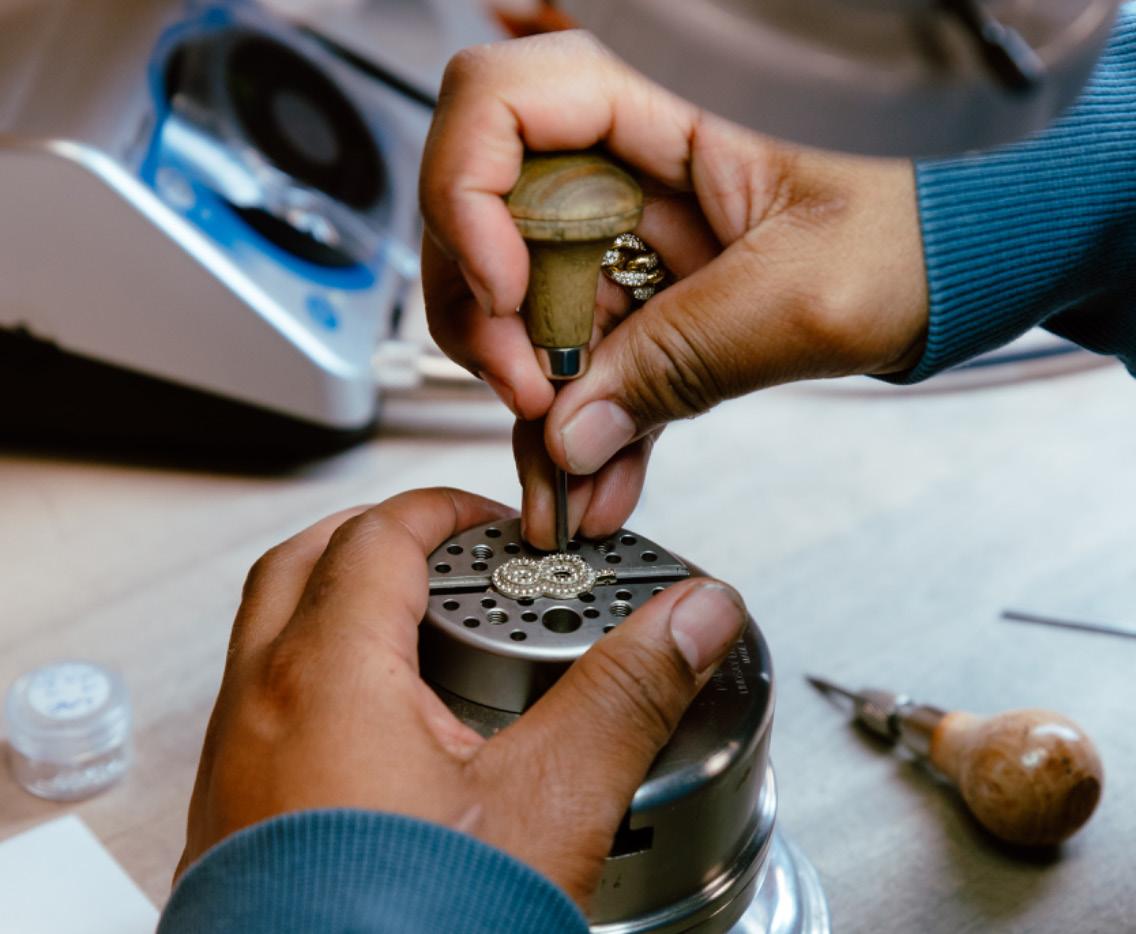
design and then using a 3D printer showcase what the piece will look like. Then, if that’s what the client is looking for, we have the stones set in place with our in-house jewelers. Depending on the piece, the whole process only takes a few days.”
Rachel and Jack are excited about the future of Lakeside Diamond.
“We have big plans,” said Jack.
“Recently, we expanded our space to include a new showroom and a lounge area for clients who want a more relaxed shopping experience.”
The new expansion provides more space for customization and consultations. “We want our



“Jewelry isn’t just about luxury—it’s about storytelling, and we love being a part of that journey.”
-RACHEL (WELCH) BJORNBERG
clients to enjoy the process of creating something special,” Rachel said. “Jewelry isn’t just about luxury—it’s about storytelling, and we love being a part of that journey.”
Beyond the boutique, the couple is preparing to launch a podcast to discuss all things jewelry, fashion, and business. “We want to educate people on what goes into making high-quality jewelry,” Rachel explained. “There’s so much that people don’t know about the process, and we’re excited to share our knowledge.”
From their in-house diamond setters to their insightful sales staff, Lakeside Diamond prides itself on unmatched knowledge and professionalism, and they will deliver a top-notch, quality experience to every customer who walks in the door. “More than anything else, we have the most fun helping people!” said Rachel. “Seeing the joy on a client’s face when they receive their piece is what makes all the hard work worth it.” Jack nods in agreement, “The best part about being Lakeside Diamond is getting to help our friends and to be a part of their dreams.”
It is more than jewelry—it is a story that creates a legacy. With their passion for craftsmanship, dedication to their clients, commitment to innovation, and appreciation for detail, Rachel and Jack Bjornberg are redefining the jewelry-buying experience at Lakeside Diamond— one sparkling piece at a time. W

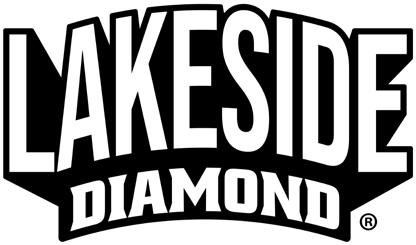
Visit Lakeside Diamond! Schedule an appointment at 612.670.9779.
15037 Mystic Lake Drive
Prior Lake
lakesidediamond.com
1805


U.S. Army Lt. Zebulon Pike negotiated a treaty with the Mdewakanton, ceding land at the confluence of the Mississippi and Minnesota rivers for the construction of a military fort.
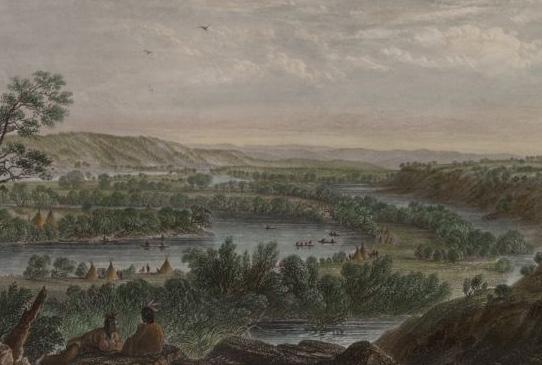
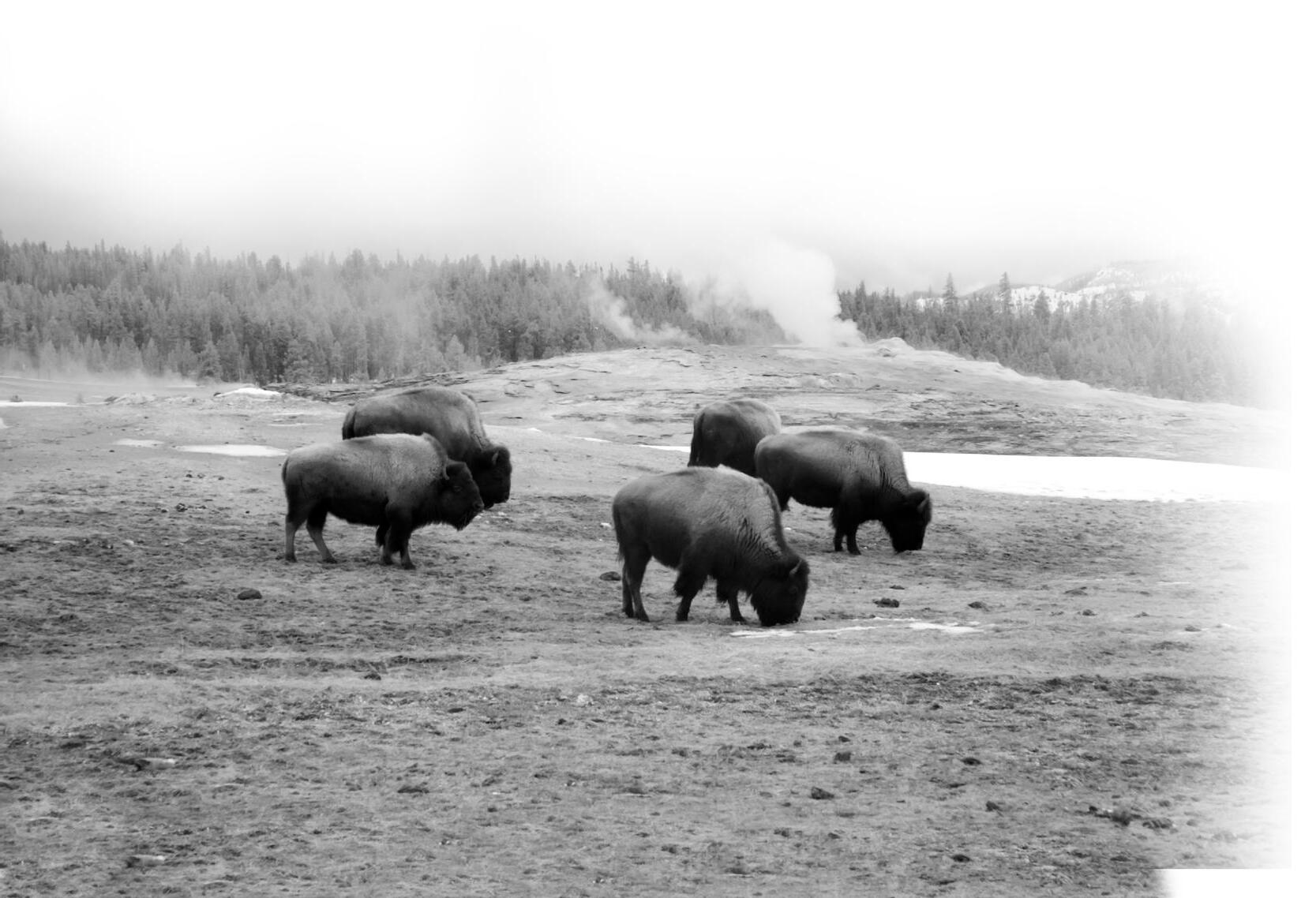
Minnesota River Valley for hundreds of years, fishing from rivers and hunting game on the prairies and in the river valley woodlands.
1837
In the Treaty of 1837, Mdewakanton leaders sold approximately 5 million acres of land east of the Mississippi River to the U.S. government for the promise of annuity payments and other services.
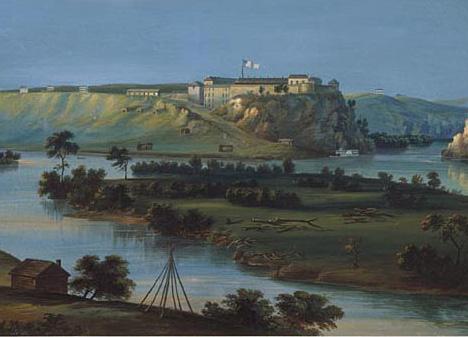
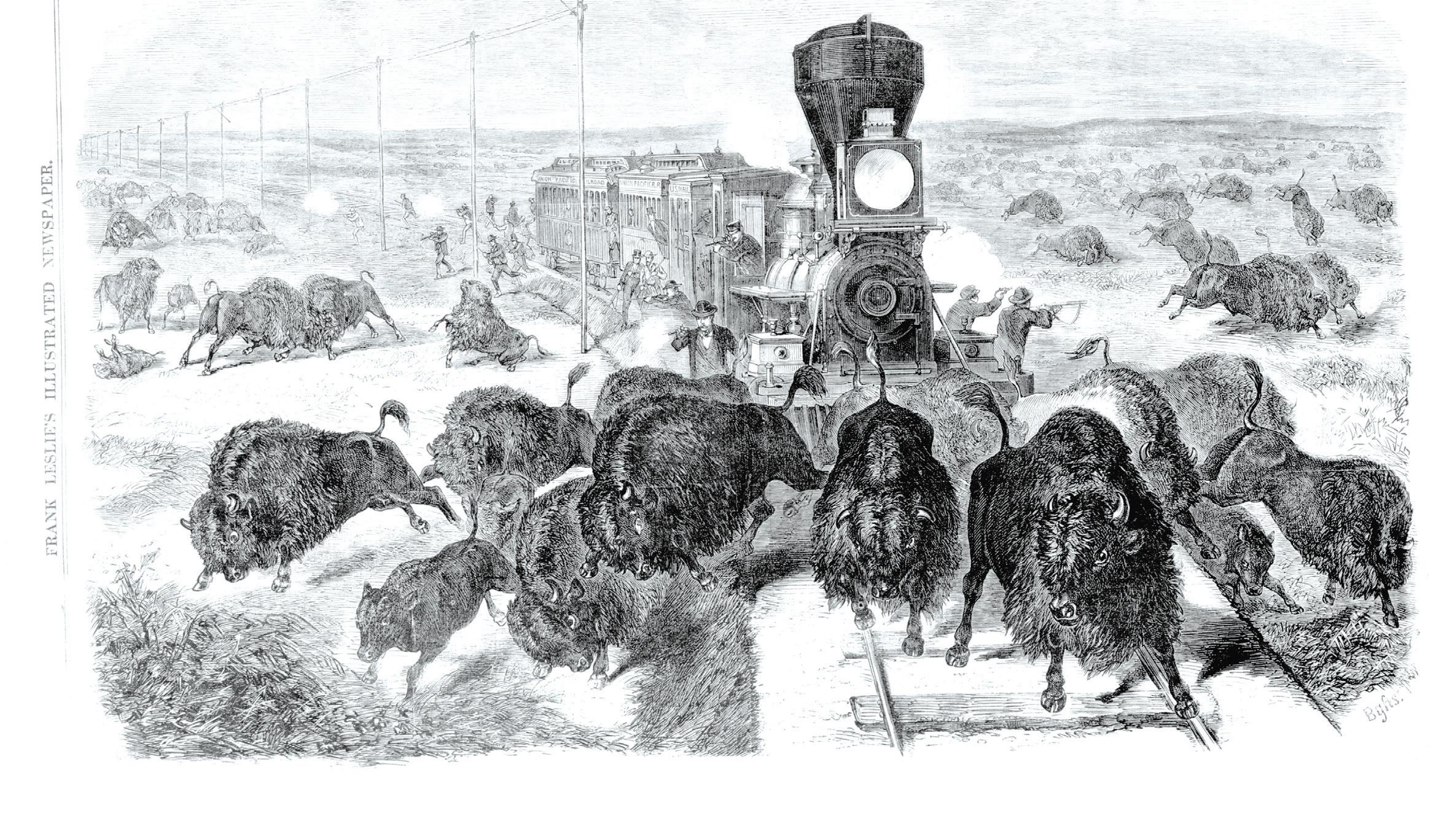
1825
The U.S. government arranged the Prairie du Chien Treaty, setting boundaries of tribal land between many tribes. As a result of the boundaries, the Dakota people were forced to become more permanently settled in the Minnesota River Valley.
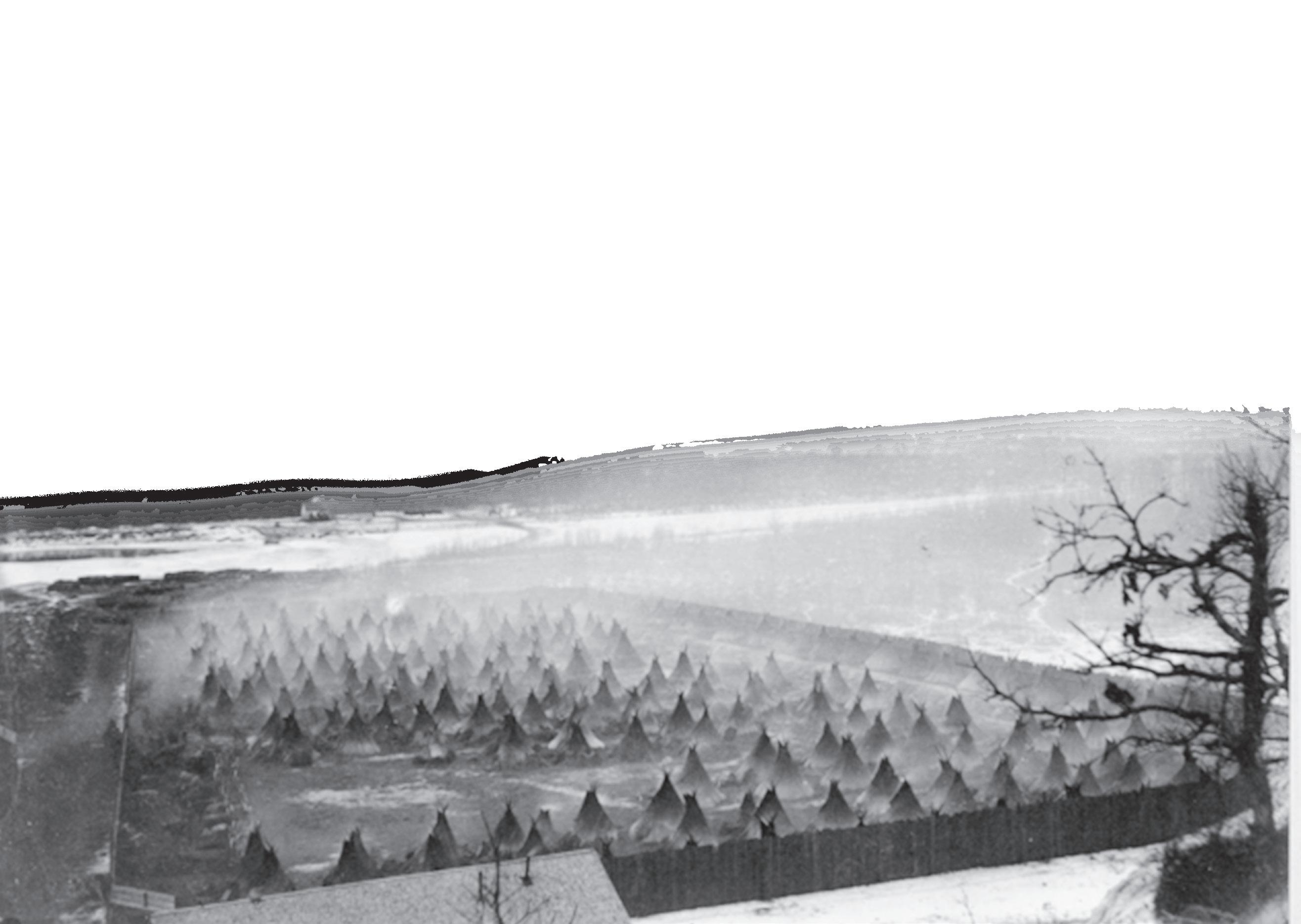
1858
The Mdewakanton and Wahpekute ceded their land on the north side of the Minnesota River in
1862
1886-1891
The U.S. government purchased land for the Mdewakanton, including parcels in the Prior Lake area.




1851
Two treaties—Traverse des Sioux and Mendota—resulted in several Dakota bands ceding their rights to all their lands, over 30 million acres, in the Minnesota Territory and Iowa in exchange for money and a permanent reservation on the Minnesota River.
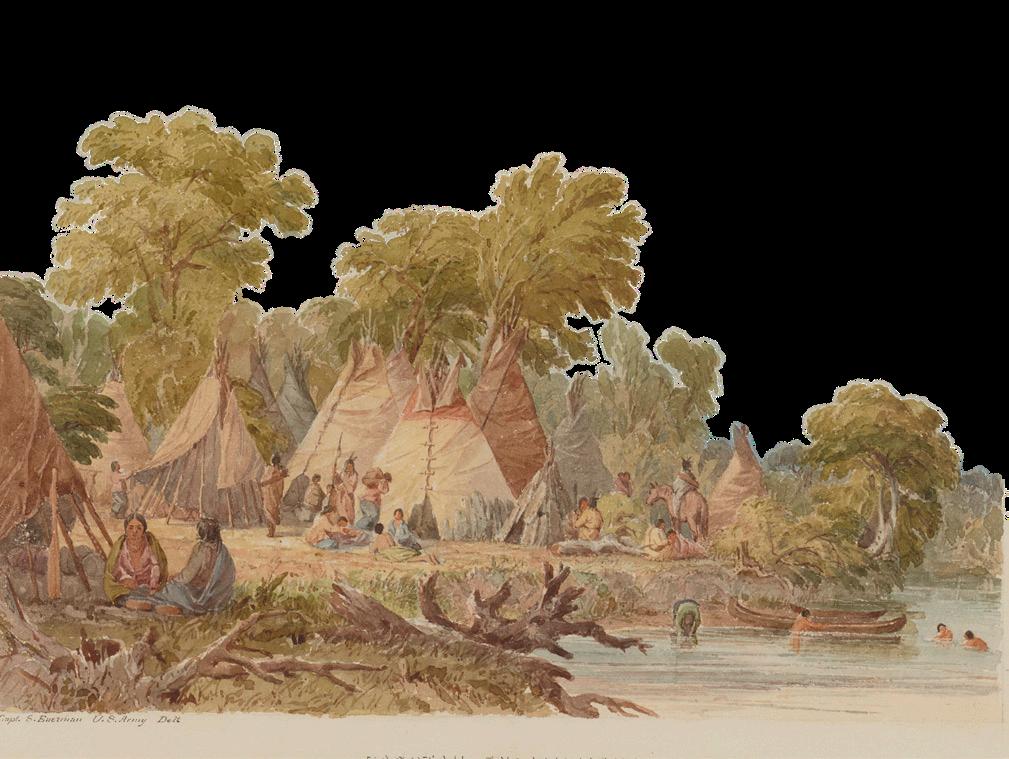
Several Dakota warriors attempted to restore tribal unity by requesting tribes to join them in an uprising against the United States, beginning the U.S.-Dakota War of 1862. Thirty-eight Dakota are hanged for their participation in the war. Almost three years later, Dakota leaders Ṡákpedaŋ and Medicine Bottle were hung at Fort Snelling for their involvement.

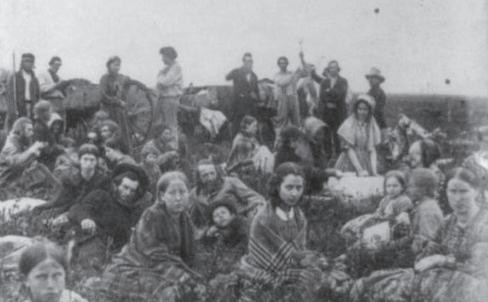

1863
After the U.S.-Dakota War of 1862, almost all of the Mdewakanton were forcibly removed from Minnesota. Congress abrogated all treaties with the Dakota.
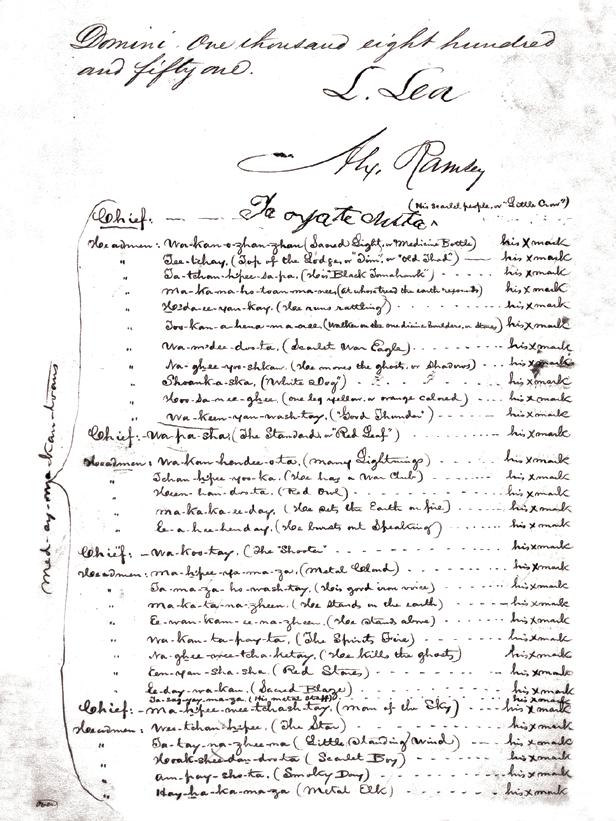
1880S
A small number of Mdewakanton were allowed to stay in Minnesota, and the U.S. Congress appropriated money throughout the 1880s to provide them with land.
1969
The Shakopee Mdewakanton Sioux Community formally became a federally recognized Indian tribe, pursuant to the Indian Reorganization Act.
MID 1990S
The SMSC opened several new enterprises, including an RV park, fitness center, convenience store, and day care facility.
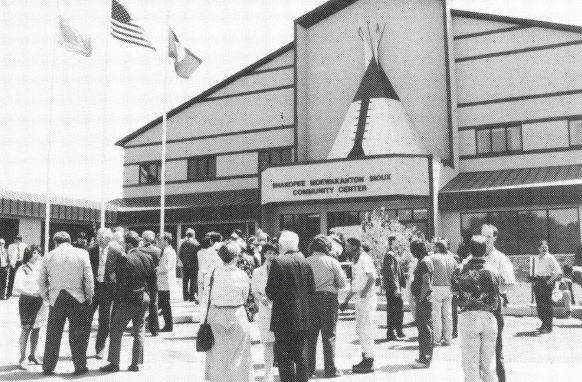
1991
A tribal-state compact was signed between the SMSC and the state of Minnesota, authorizing Class III gaming.
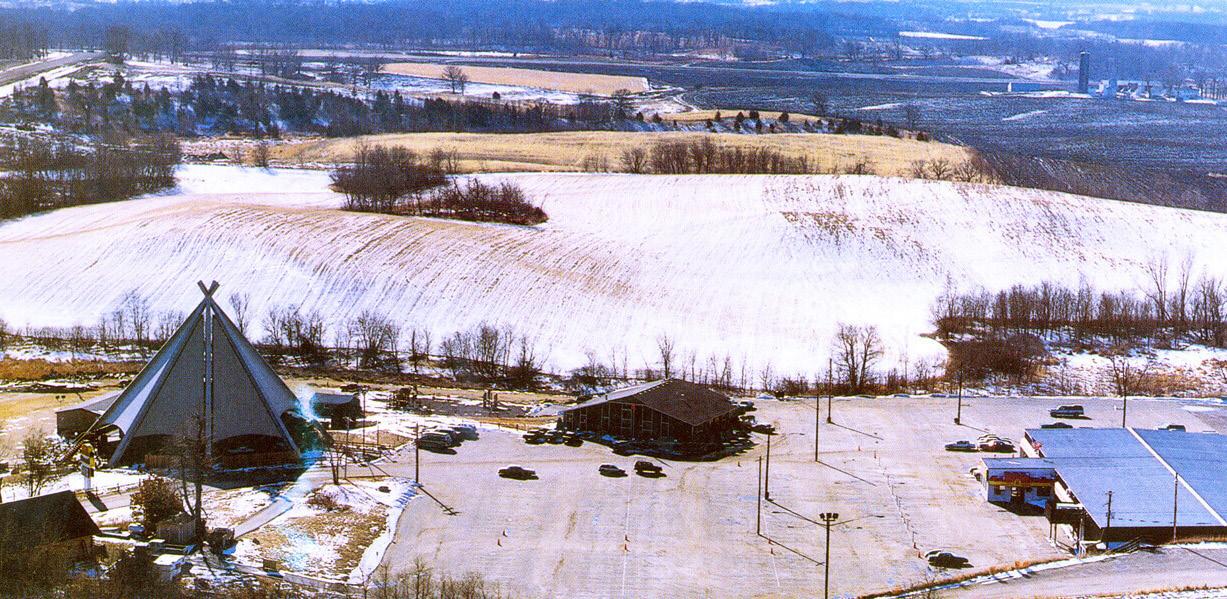
1992
1989
A gaming compact between the SMSC and the state of Minnesota was approved by the Secretary of the Interior.
Mystic Lake Casino opened, marking a significant turning point on the tribe’s path toward stability and self-sufficiency. The new economic opportunity allowed for investment in essential services such as infrastructure, health care, and education.
1996
Mystic Lake Casino Hotel opened its first hotel tower.
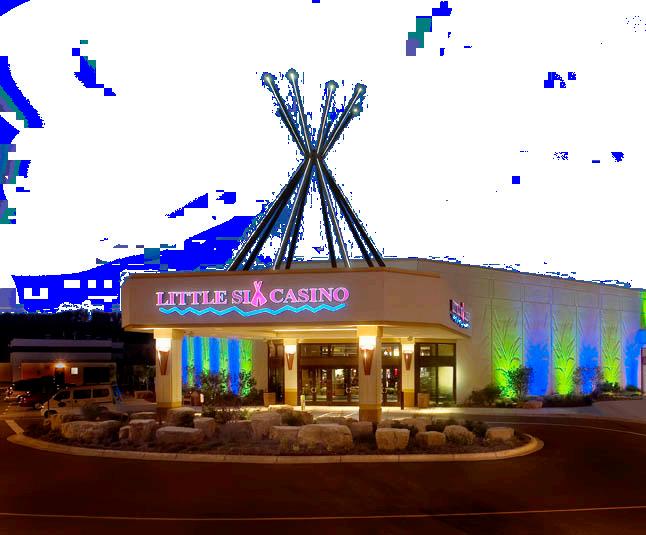
2008
After years of operating in its original structure, Little Six Casino moved into a brandnew building on the original location of Little Six Bingo.
2002
Mdewakanton Public Safety was created to provide fire/rescue and medical services for the Community.
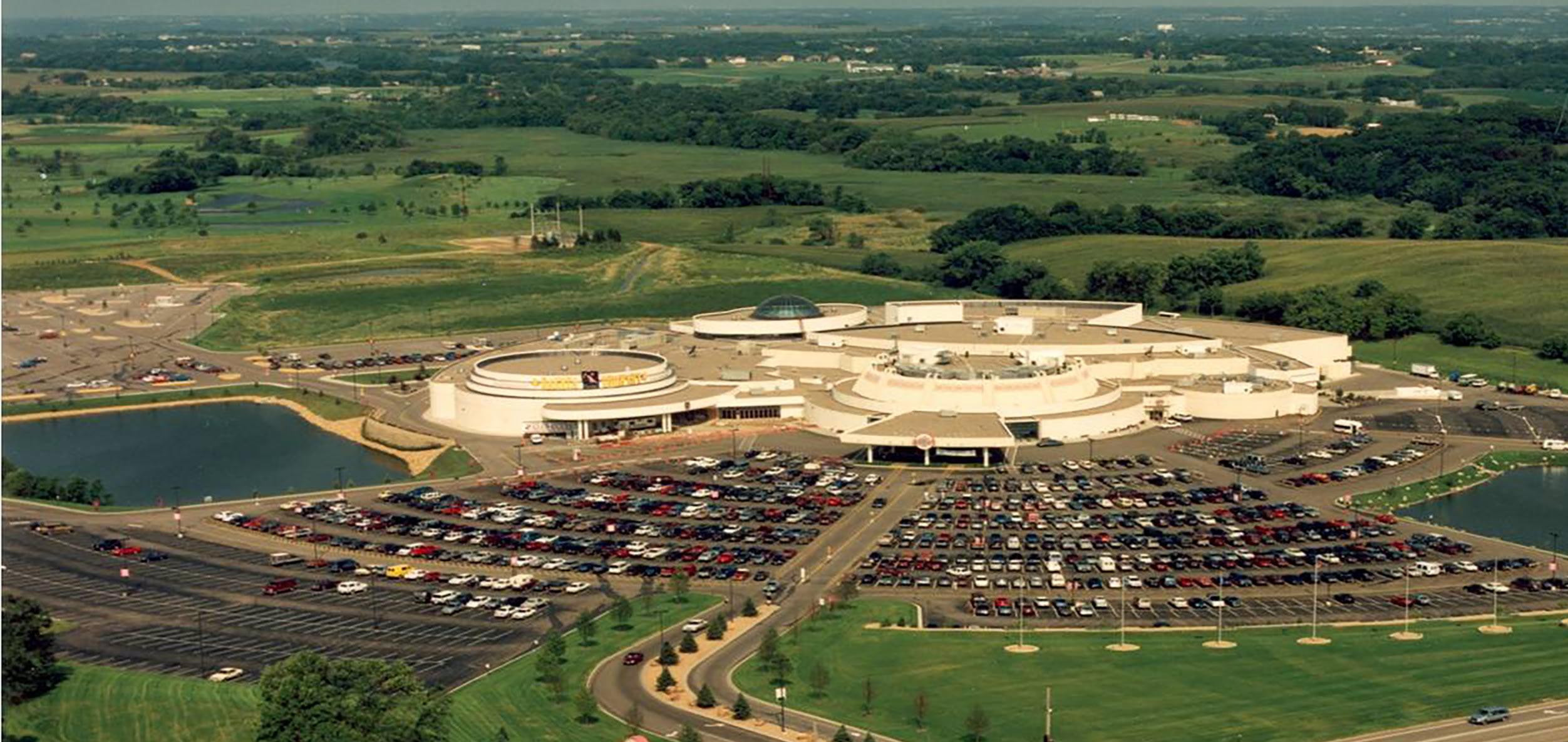
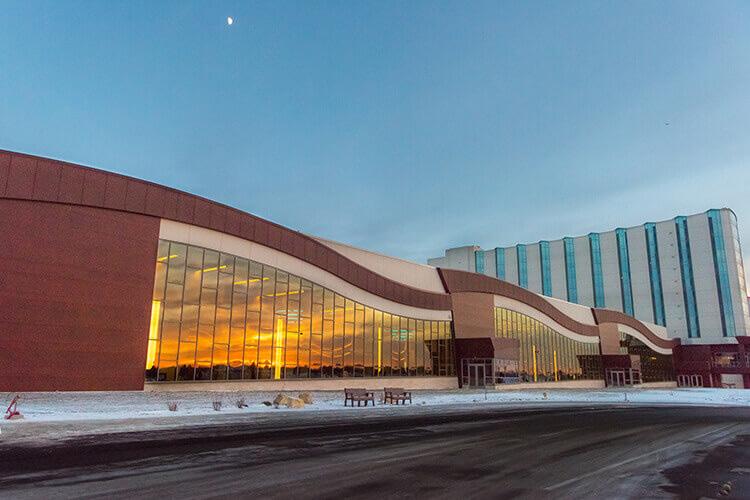
1982
Little Six Bingo Palace opened, creating a new source of economic opportunity for the tribe.

2011
The SMSC built an organics composting facility, further supporting the Dakota tradition of caring for the earth.
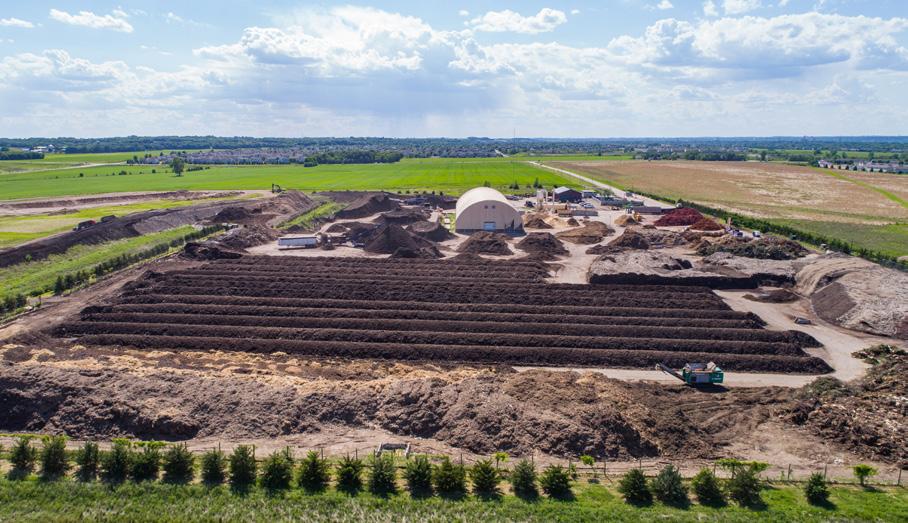
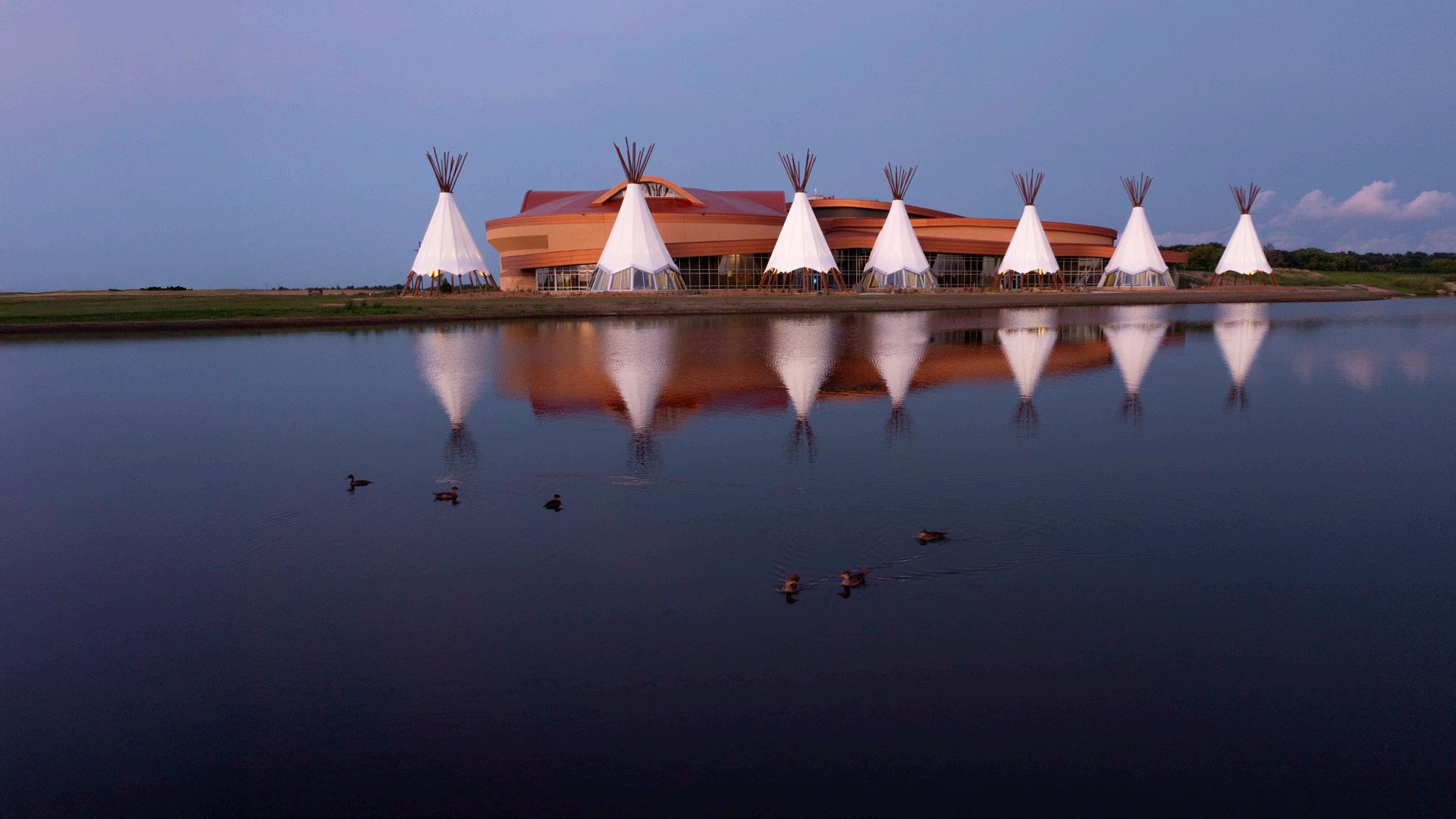
2019
Hoċokata Ṫi, the SMSC’s cultural center, celebrated its grand opening.
The SMSC launched Understand Native Minnesota, a philanthropic campaign to improve the Native American narrative in Minnesota schools.

2018
Mystic Lake Center opened, featuring a new nine-story hotel tower and a 70,000-square-foot meeting and event center.
The Native Farm Bill Coalition—a joint project of the SMSC’s Seeds of Native Health campaign—worked diligently to advocate for the 2018 Farm Bill and advance Indian Country’s interests to improve Native American nutrition.
2023

The SMSC reintroduced a pteoptaye (bison herd) on tribal lands, a gift from the Sisseton Wahpeton Oyate.


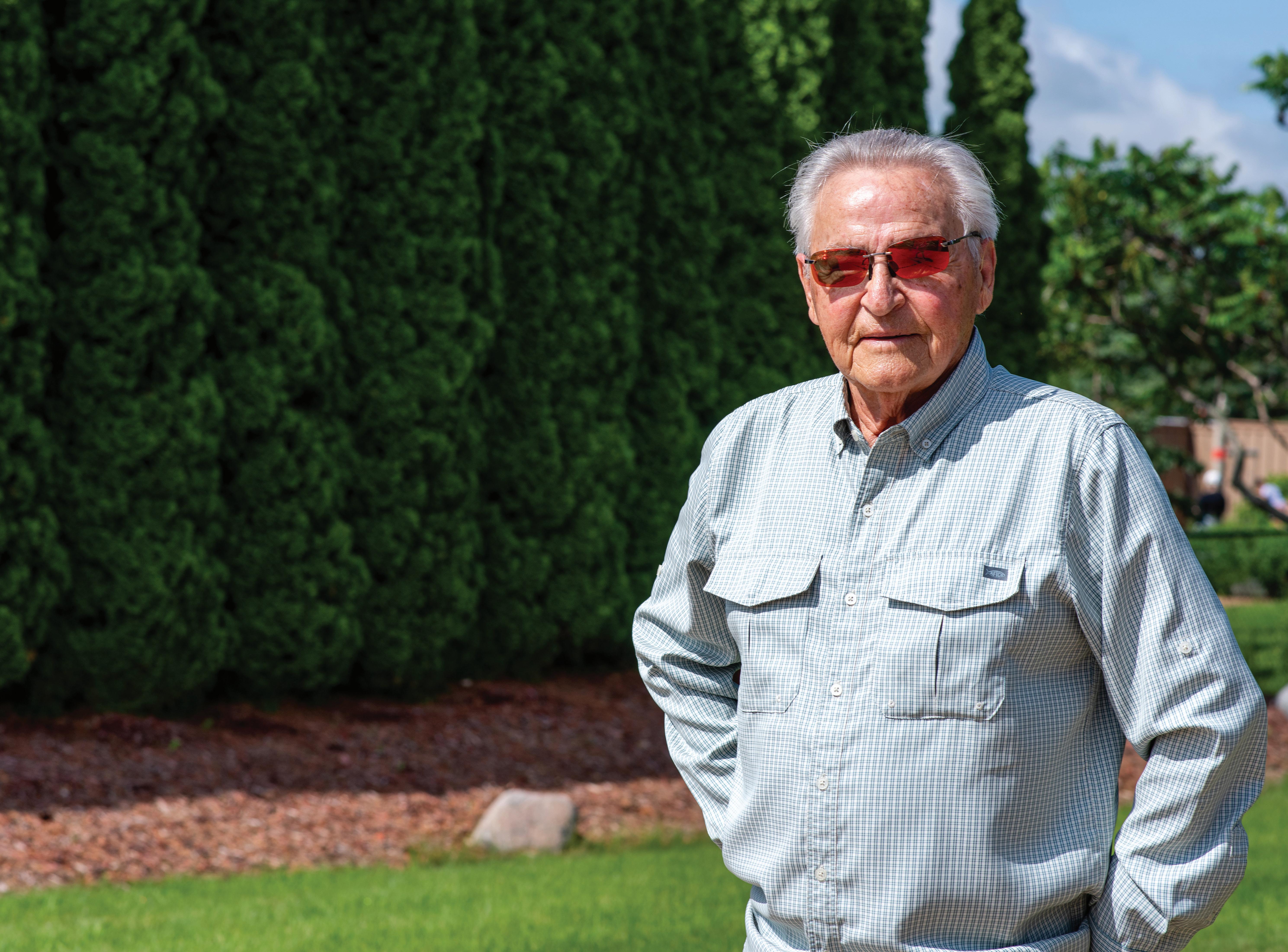
KENNETH ANDERSON SR. SERVED THE SHAKOPEE MDEWAKANTON SIOUX COMMUNITY AS VICECHAIRMAN IN THE EARLY 1970S AND AGAIN IN THE MID-1990S
Long before his leadership days, he was born at home during the depths of the Great Depression in rural Boy River, Minnesota, population 85 and shrinking. The fifth of seven children, Ken transitioned at age 11 from public schools to Indian boarding schools. He graduated high school from the Haskell Institute and credits the school of hard knocks for his successful mechanical illustrating career. Ken also knows how to build a house from scratch, explains auto mechanics like it’s second nature, and inserts humor into every conversation. If you like dad jokes, you’ll love Ken jokes!
YOU WERE BORN IN 1936. HOW DID THE GREAT DEPRESSION IMPACT YOUR FAMILY?
At the time, we lived on a small farm in northern Minnesota. We got along alright because we had our own animals and garden. We had chickens for eggs, and we butchered pigs and chickens for meat. We might see 30-40 deer at a time, so we also ate a lot of deer meat. Living on a farm gave us some advantages, because we could get our own food.



YOU ATTENDED BOARDING SCHOOLS STARTING AT AGE 11. WHAT DO YOU WANT PEOPLE TO KNOW ABOUT YOUR BOARDING SCHOOL EXPERIENCE?
I went to Pipestone through the 8th grade, and Haskell for high school. If I wouldn’t have gone to boarding school, I’d probably be a different person, but I don’t think I’d be a better person. I was taught discipline. In the long run, I was motivated to get out of there. I don’t know that I would’ve had that kind of discipline or motivation at a public school.
TELL ME ABOUT BUYING YOUR FIRST CAR.
My first car was a 1936 Ford convertible that cost $75. I think I was about 17 when I bought it with my wild rice earnings. I’d go out with a buddy on Boy Lake or Boy River or Leech Lake and harvest 200-300 pounds of wild rice a day. One of us poled through the rice beds, and one of us knocked the rice into the canoe—I could do either one. Then we’d sell the rice for 15 cents a pound.
DID YOUR LOVE OF CARS START WITH YOUR 1936 FORD?
The cars that I grew up with are what I like best. I have a 1941 Ford coupe that’s all-original and has only 22,000 miles on it. I think I’m the seventh owner. My favorite is my ‘47 Ford coupe. I get help with the maintenance now, but I used to do miscellaneous things myself, like tear out my carburetor, clean it out, and put it back together.
DID YOU GO TO COLLEGE AFTER HIGH SCHOOL?
I took some college courses, but I mainly went to the school of hard knocks. I cut my finger off in a work accident when I was about 20 years old, and I got special compensation for that injury. I used the money to go to night school for drafting. I had some artistic ability, and after I learned how to draft , I made isometric drawings, and I became what’s called a mechanical illustrator. I put that skill to work for large construction companies in California, building refineries and chemical plants, and then I came back to Minnesota and worked for 3M.

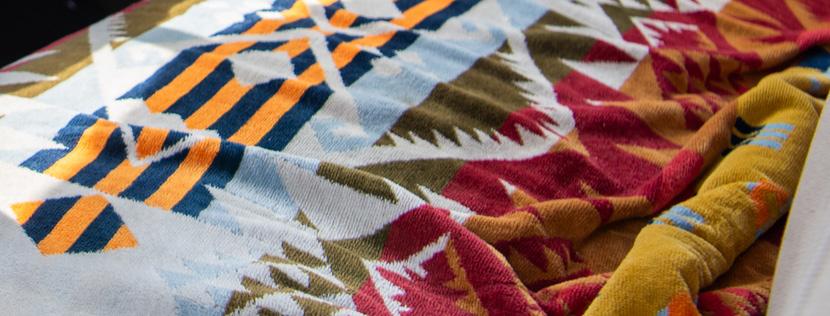
WHEN DID YOU FIRST COME TO LIVE IN THE SHAKOPEE MDEWAKANTON SIOUX COMMUNITY?
My mother was a Minnesota Mdewakanton, and she passed away in 1968. That’s what brought me and my family back to Minnesota from California. My wife Betty and I bought a resort on Kabekona Lake up north, which she and the kids operated during the week while I worked at 3M in St. Paul. I spent weekends and some weeks during the summer at the lake.
Around that time, I visited my cousins on the reservation in Shakopee, and I also ran into Norman Crooks, who talked to me about moving here. He was working to secure the tribe’s federal recognition, which happened in 1969. It seemed like everyone was pointing me in this direction.
So, I obtained a lot here in the Community and bought a double-wide home in Lakeville. I hired someone to pull it to my lot, and Stanley Crooks helped me put the two sides back together after we got off of work at night. We bolted it together, connected the wires and the water, and set it on blocks. That was my family’s first house here.
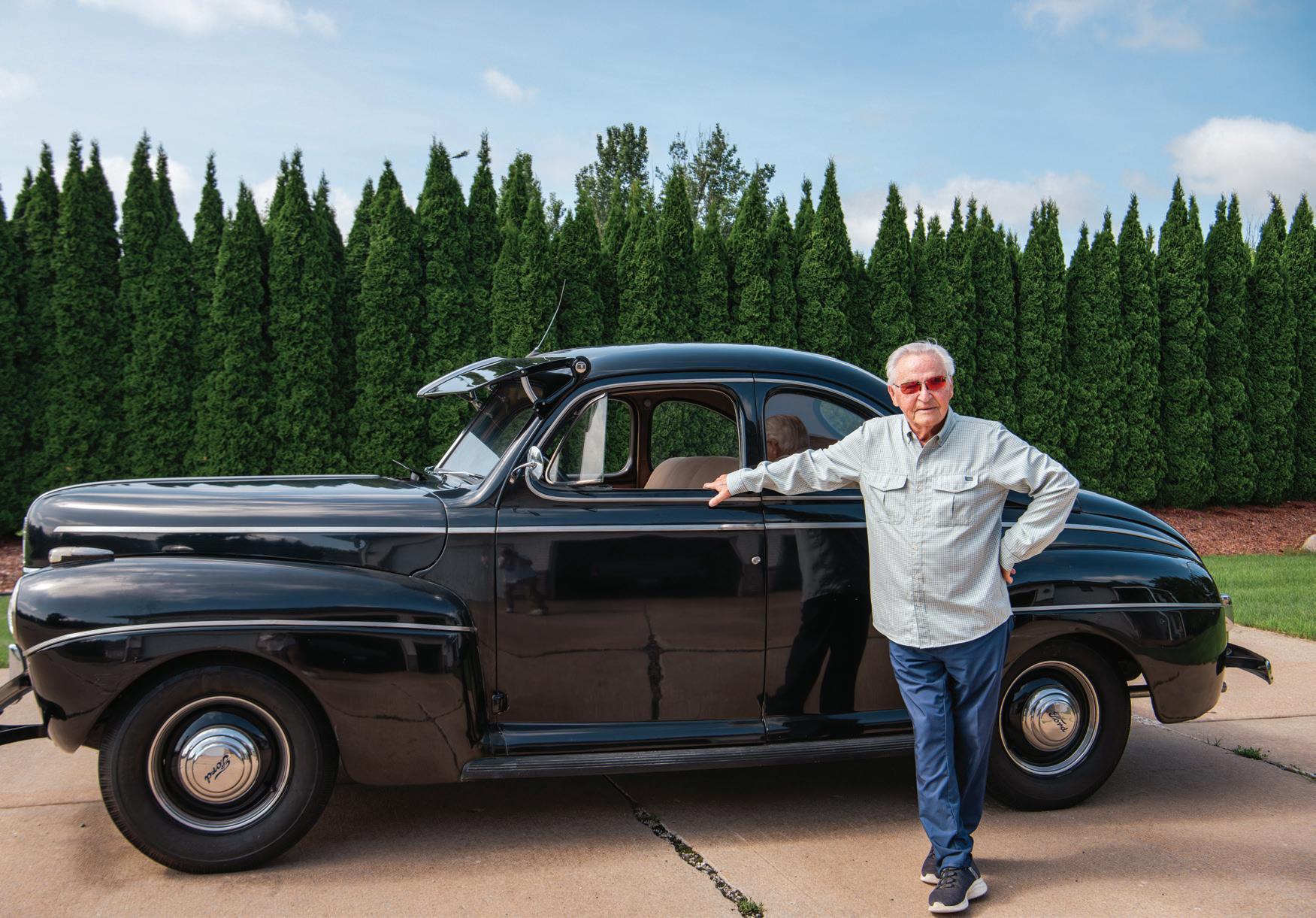
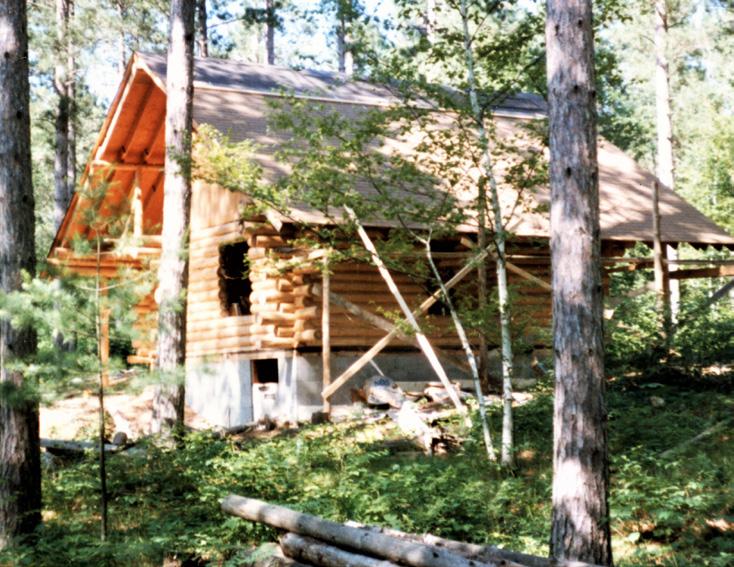

WHAT MADE YOU WANT TO OWN AND OPERATE A RESORT UP NORTH?
I wanted to get out of Los Angeles and back to a nice, clean lake in the woods. Resort life requires a handyman, and I was very handy. I’d learned wiring at Haskell and done wiring work for Western Electric. I’d also been a carpenter at one time. It all just came together.
WHAT IS THE BIGGEST OR BEST THING YOU’VE BUILT WITH YOUR OWN TWO HANDS?


I built my own log cabin. I bought a book and learned how to scribe logs and fit one right over another. I cut the trees myself. I did the wiring myself. What I didn’t know, I learned as I went along. I’d sleep in a tent and work out in the woods all summer. It was great, except for all the noises at night. I woke up one night to a hoot owl right above me. I was awake, alright! The cabin took me 10 years to finish, but it was worth it.
WHAT JOB DID YOU WORK AT THE LONGEST, AND WOULD YOU CHOOSE THAT CAREER AGAIN?
I retired from 3M. I worked there off and on for some years, and then for 10 straight years before I retired. I used to fly around the country and sometimes to other countries, making blueprints. If I had to do it over again, absolutely, I’d choose the same career.
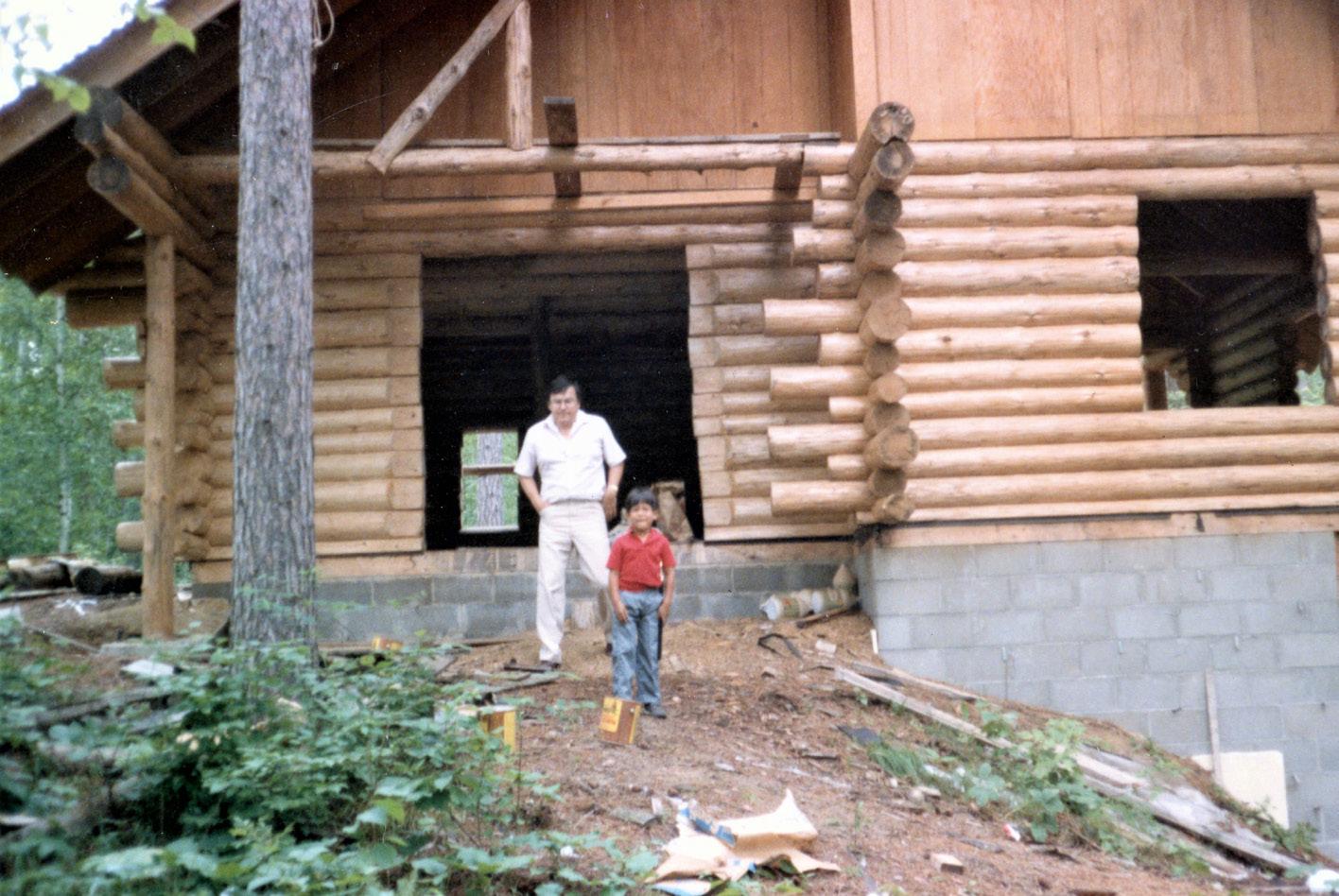
DESCRIBE YOUR BEST DAY ON THE GOLF COURSE.
Betty and I both made a hole-in-one in the same year—1981. Neither of us has made one since. Betty made hers in Monterey Park, California. I made mine in Eagan, Minnesota.
YOU AND BETTY HAVE BEEN MARRIED FOR 68 YEARS. WHAT’S THE KEY TO A LONG AND HAPPY MARRIAGE?
Two words: yes, ma’am. I suppose we also laugh a lot, but she’s heard my jokes too many times.
WHAT ARE THE MOST IMPORTANT LESSONS YOU’VE LEARNED IN LIFE?
Get up and go to work. When you get there, work hard and be kind. After retirement, get up and move around.
Jokes
Two hats were hanging on a hat rack.
One hat says to the other, “You stay here, I’ll go on a head.”
++ What does a robot eat with its guacamole?
Computer chips.
++
A man walked into a pet store and asked for 12 bees. The clerk handed him 13. “I only asked for 12 bees,” the man said.
The clerk responded, “That’s a freebee.”
YOU’LL TURN 90 YEARS OLD ON YOUR NEXT BIRTHDAY. WHAT’S THE BEST PART OF BEING ALMOST 90 YEARS OLD?
Being alive! The key is to keep walking. Keep going. For me, keep golfing. Last summer, I was in a golf league every Monday with about 75 players, and I was the oldest one. At the end of the season, I finished in second place in the first flight.
WHAT PIECE OF ADVICE DO YOU HAVE FOR YOUNG PEOPLE?
Do what makes you happy, and live a clean life. Steer clear of drugs. Those are keys to everything falling into place. W


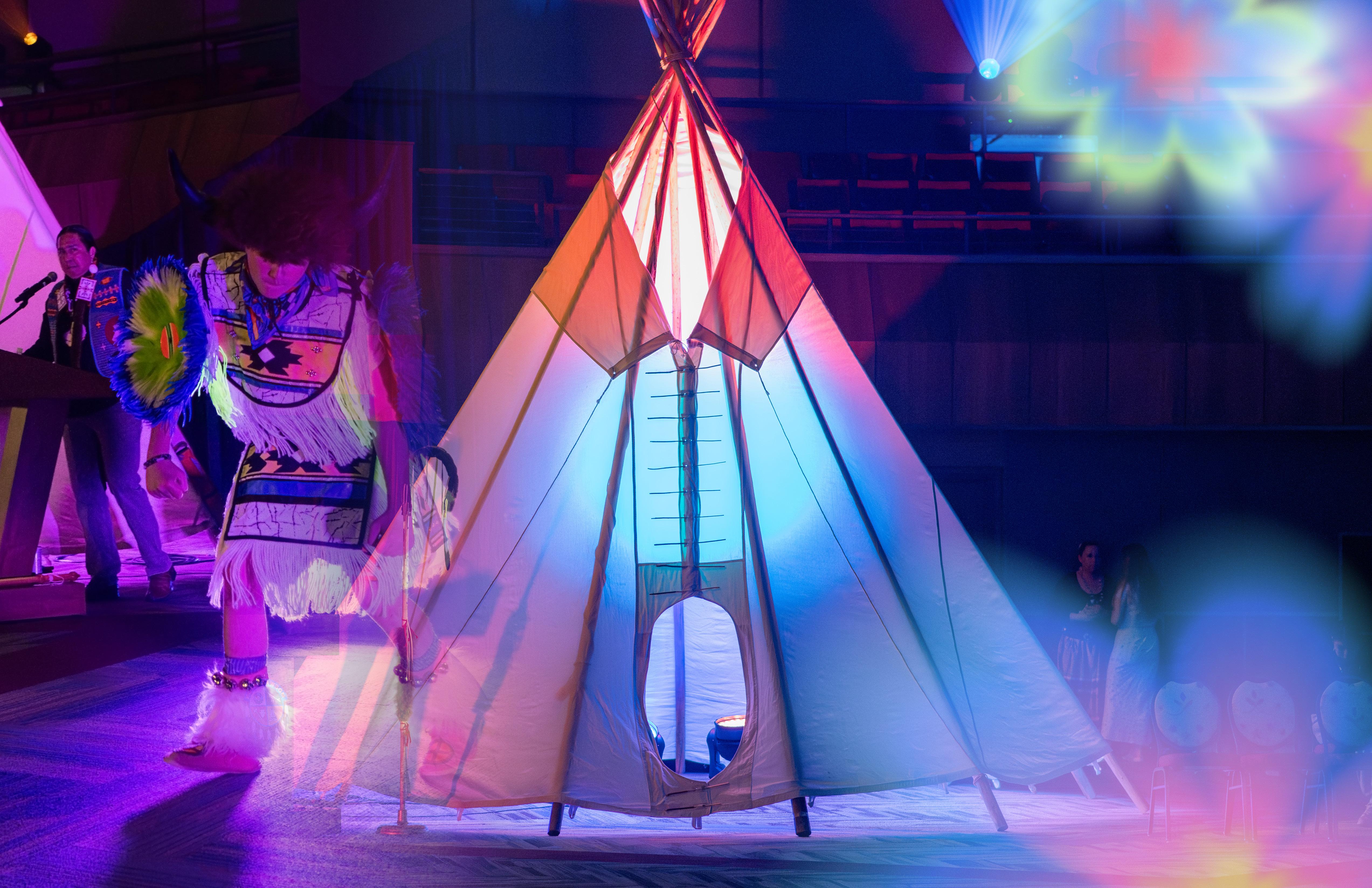
Song Celebrating Dakota Heritage Through
How Young Native Pride Honors Ancestors and Inspires the Future
BY JONI KOMPERDA
PHOTOS BY BLAKE ZIEMER

and Dance
Every year, the Shakopee Mdewakanton Sioux Community (SMSC) comes together in a powerful display of cultural pride and continuity. The center of this celebration is Young Native Pride, an extraordinary event empowering the SMSC youth to connect with their roots and share the Mdewakanton Dakota culture, language, values, and traditions with the broader community through the dynamic expression of song and dance.
Young Native Pride is an expression of cultural identity, resilience, and the enduring spirit of the Dakota people. It shows the dedication of the SMSC youth in learning, preserving, and perpetuating their ancestral traditions. For over two decades, this event has served as a valuable opportunity for Native youth to share Dakota culture, language, and values through traditional dance and drumming, ensuring these aspects of their heritage are passed down to future generations.
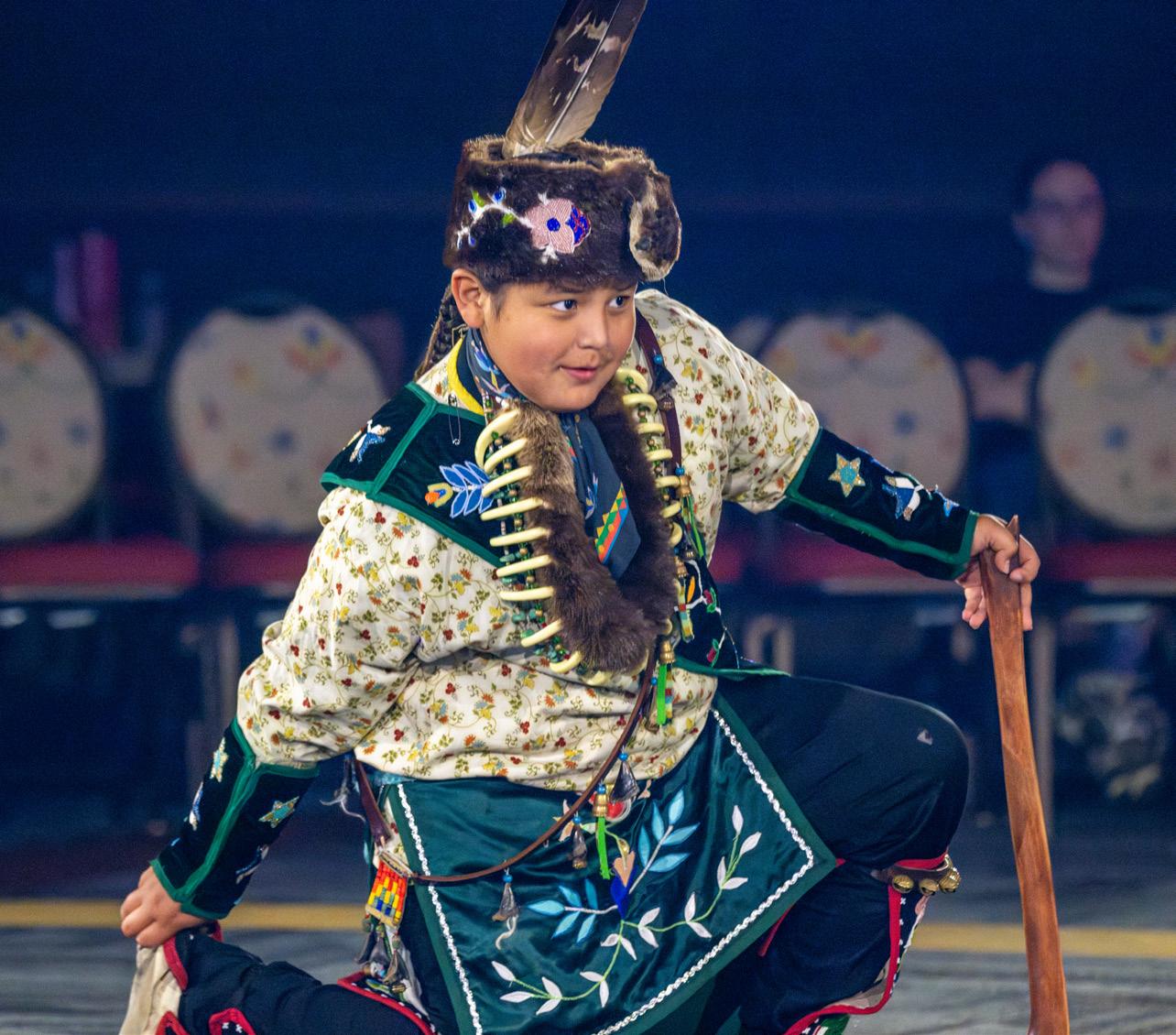
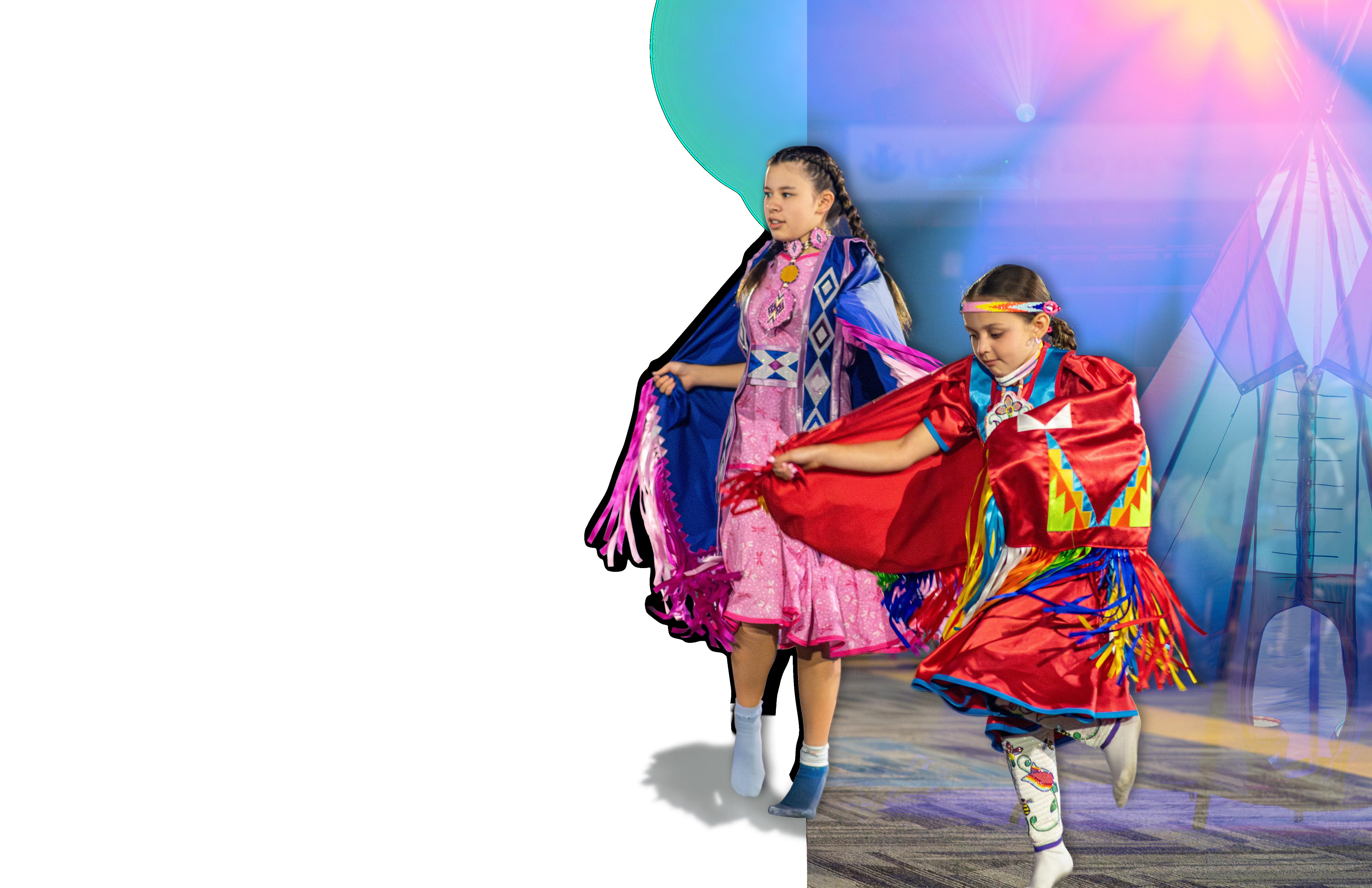

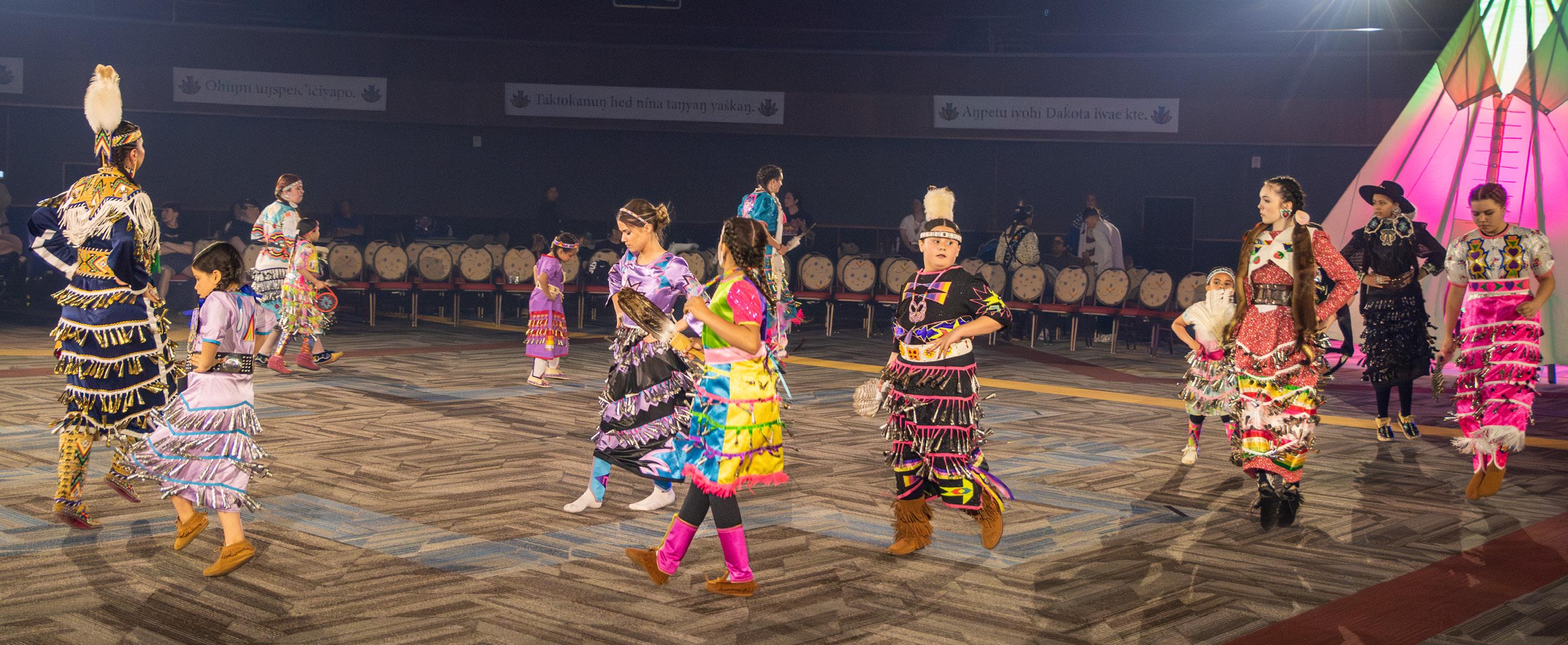

lively atmosphere of Young Native Pride. Groups such as Battle Creek, often comprised of members from various tribes, provide the heartbeat of the event, performing traditional songs to accompany the dancers. The rhythmic drumming and powerful vocals create a captivating and deeply moving energy.
EMPOWERING YOUTH, STRENGTHENING COMMUNITY
At its core, Young Native Pride is about engaging and empowering Native youth. It is designed to encourage them to connect with their heritage, express their Dakota culture, and develop a strong sense of pride in who they are. The event provides a platform for them to share their culture with a wider audience to promote understanding and appreciation. These performances are a way for SMSC youth to showcase their Dakota culture, language, traditions, and spirituality to their community and beyond. Through their participation, they gain confidence, leadership skills, and a deeper understanding of their cultural identity.
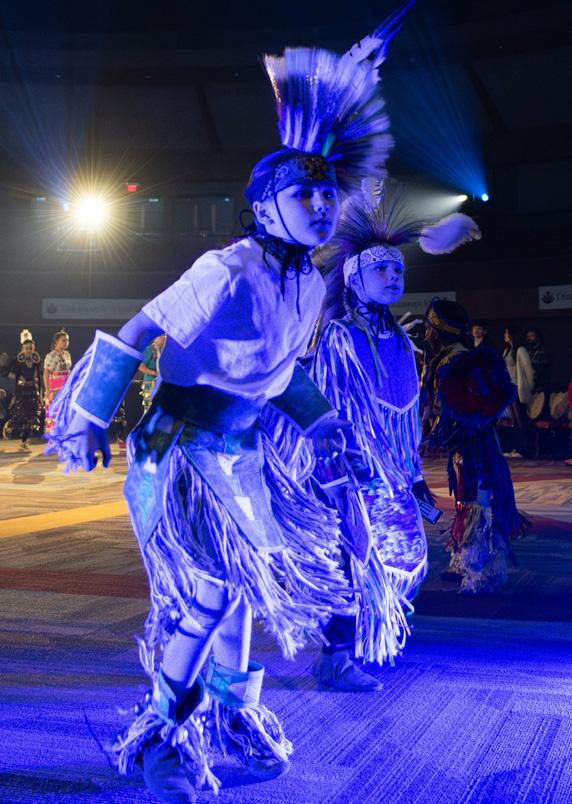
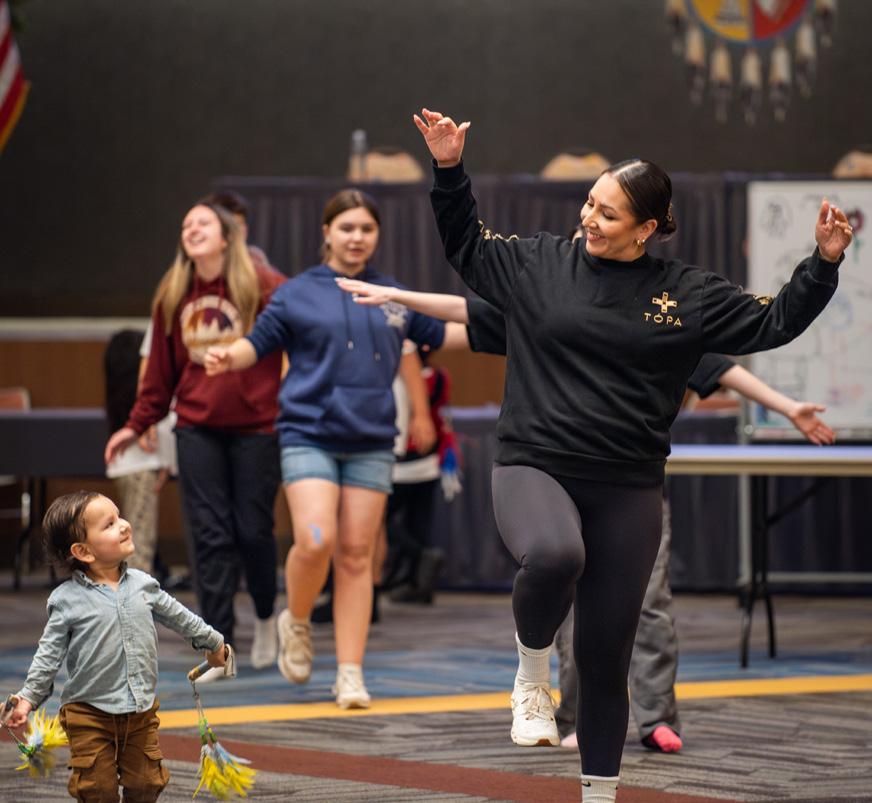
and the crafting of moccasins. Each dancer’s regalia is handmade and holds personal and symbolic meaning, reflecting their individual journey and connection to their heritage. The SMSC Youth Leadership Council often plays a key role in facilitating and participating in Young Native Pride. This involvement provides valuable leadership opportunities for the young participants and further strengthens the sense of community ownership of the event.
EXTENDING AN INVITATION TO ALL
The preparation for Young Native Pride is a significant undertaking involving the entire community. Students, their families, and SMSC staff dedicate months to creating the beautiful and intricate Dakota dance regalia. This process often involves beadwork, appliqué, ribbon work,
The SMSC believes in sharing its culture and extends a warm invitation to the public to attend Young Native Pride performances. These events are typically free and open
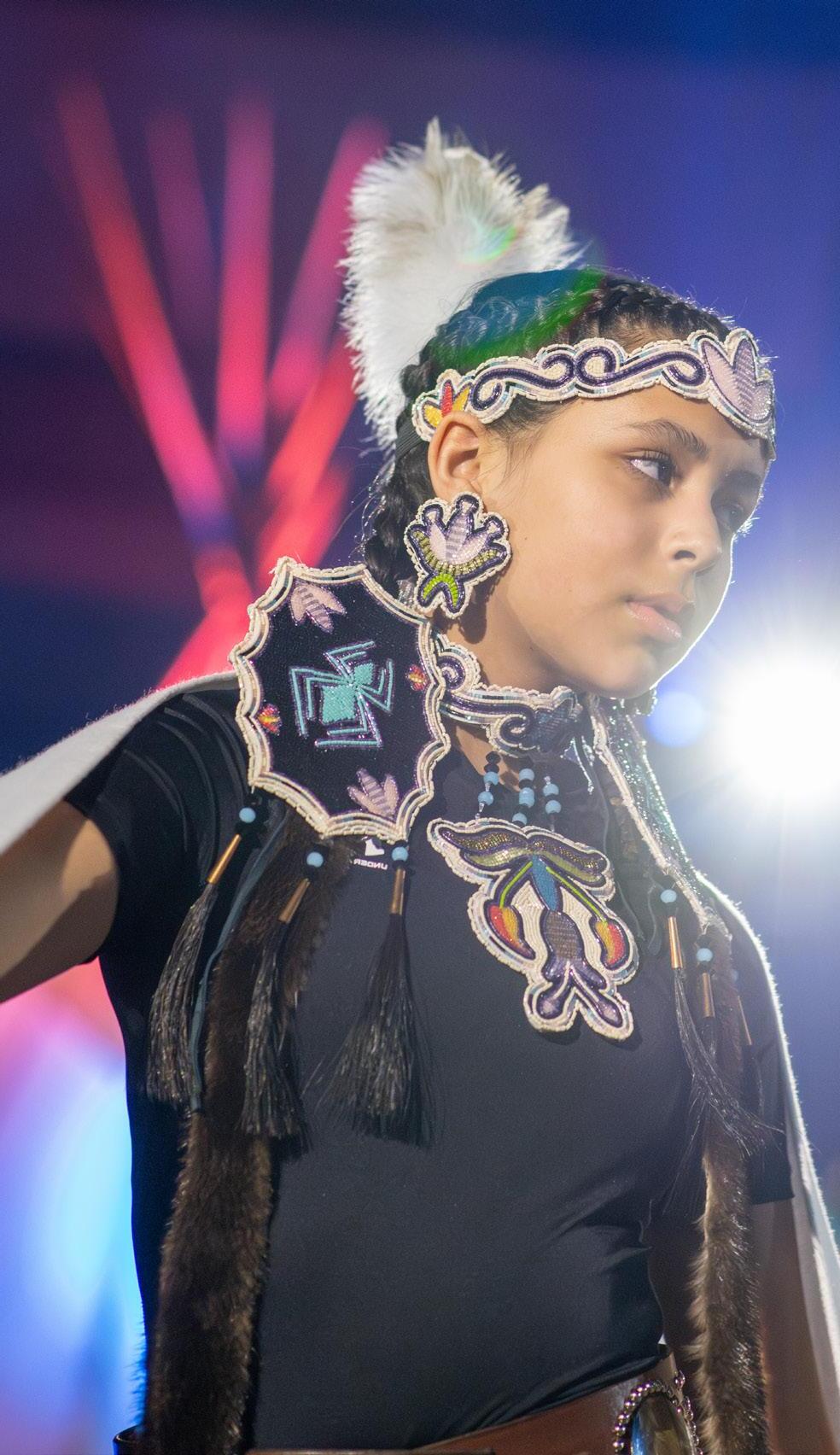

to all, offering a unique opportunity for the broader public to witness and appreciate the beauty and depth of Dakota culture and language. Performances have been held at various venues, including the Prior Lake High School auditorium and Hoċokata Ṫi, the SMSC’s cultural center, a place of gathering and celebration.
In addition to the performances themselves, the SMSC often organizes community events centered around Young Native Pride. These may include SMSC dinners to provide a time for fellowship and celebration. There are also opportunities for SMSC youth to learn Dakota language, ensuring language preservation and revitalization efforts. Programs Specialist Raine Cloud, who was a former Dakota language teacher and has worked in Dakota language revitalization for many years, joined the staff at Hoċokata Ṫi in 2024 and supports the Young Native Pride events. She said, “I’d love to continue to see Young Native Pride infused with Dakota language, with the youth using the language in their performances." In recent years, the SMSC has also embraced technology to share Young Native Pride with a wider audience, livestreaming performances to make them accessible to those who cannot attend in person, which allows the Dakota language and culture to be appreciated by all. To adapt to changes postpandemic, the SMSC invites the public to view the performances via livestream only.

CONNECTING TO THE SPIRIT OF WACIPI
Young Native Pride is deeply connected to the spirit of wacipi, a traditional Dakota celebration of life. Wacipi, meaning “they dance” in the Dakota language, is a time for people to gather, dance, sing, and celebrate the richness of their culture. While the SMSC Wacipi is a larger, multi-day event drawing people from many different communities, Young Native Pride shares the same essence: a celebration of Dakota heritage through song and dance. Young Native Pride can be seen as a smaller, more focused
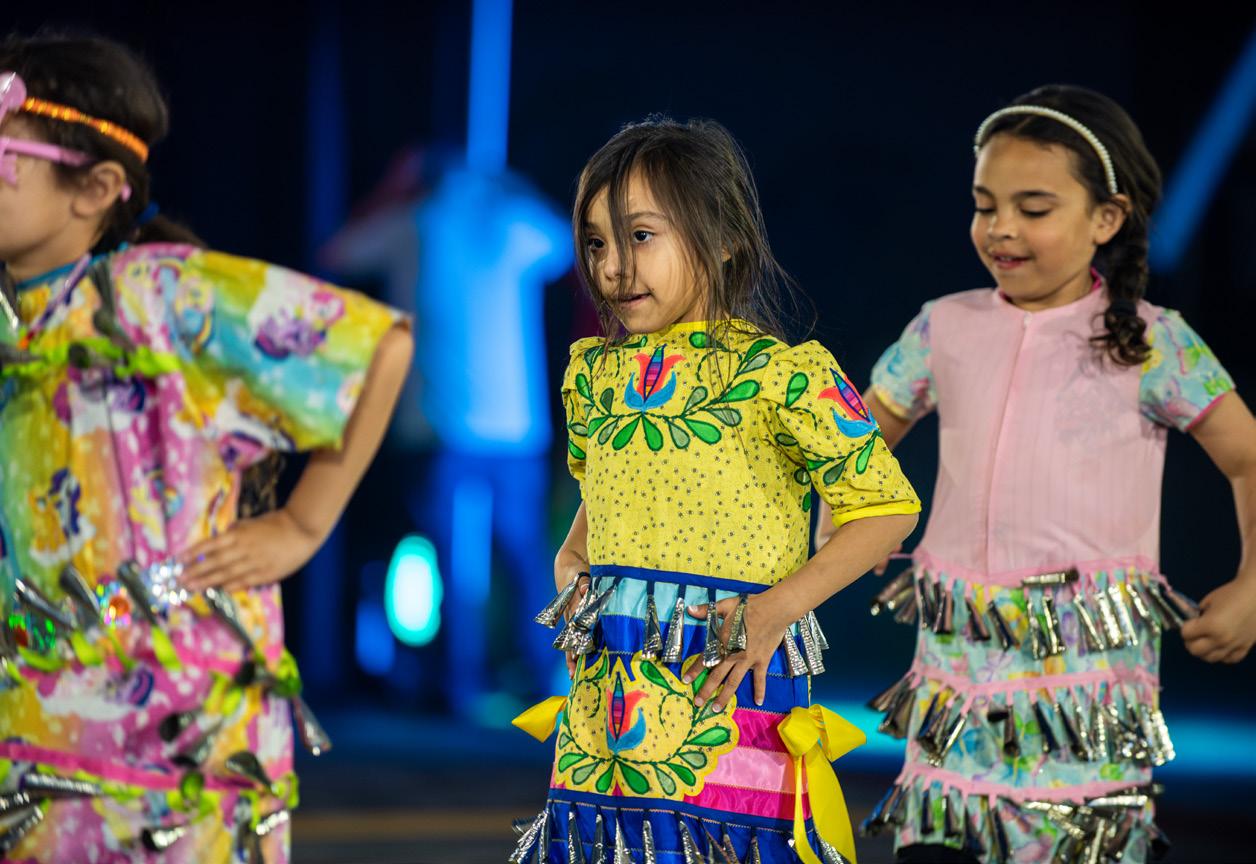

showcase of the cultural performances that are also a central part of the broader SMSC cultural activities and SMSC Wacipi celebrations.
A LEGACY OF PRIDE AND CONTINUITY
Young Native Pride is an important part of the ongoing effort to preserve and promote Dakota culture and language. Hoċokata Ṫi Director and SMSC member Andy Vig, who has a passion for Dakota language, art, and cultural preservation and revitalization, said, “You know the youth—it’s so cool, we get to work with the young people and to hear them speak our language. I don’t think it gets any better than that.” The performances reflect the resilience, strength, and enduring spirit of the Shakopee Mdewakanton Sioux Community. By engaging and empowering their youth, the SMSC is making sure these traditions will not only survive but thrive for generations to come. The dedication, hard work, and passion of the youth, their families, and the entire SMSC are evident in every aspect of Young Native Pride. It’s a celebration of identity, a transmission of knowledge, and a powerful expression of cultural pride. As Young Native Pride continues to evolve and grow, it will undoubtedly play an increasingly important role in shaping the future of Dakota culture and ensuring its traditions continue to enrich the lives of generations to come. W
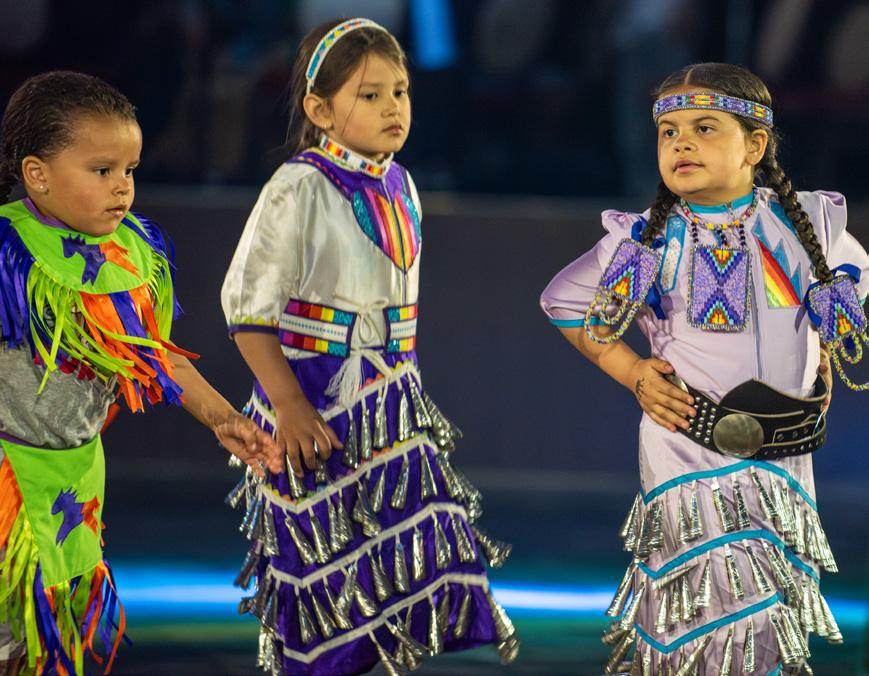
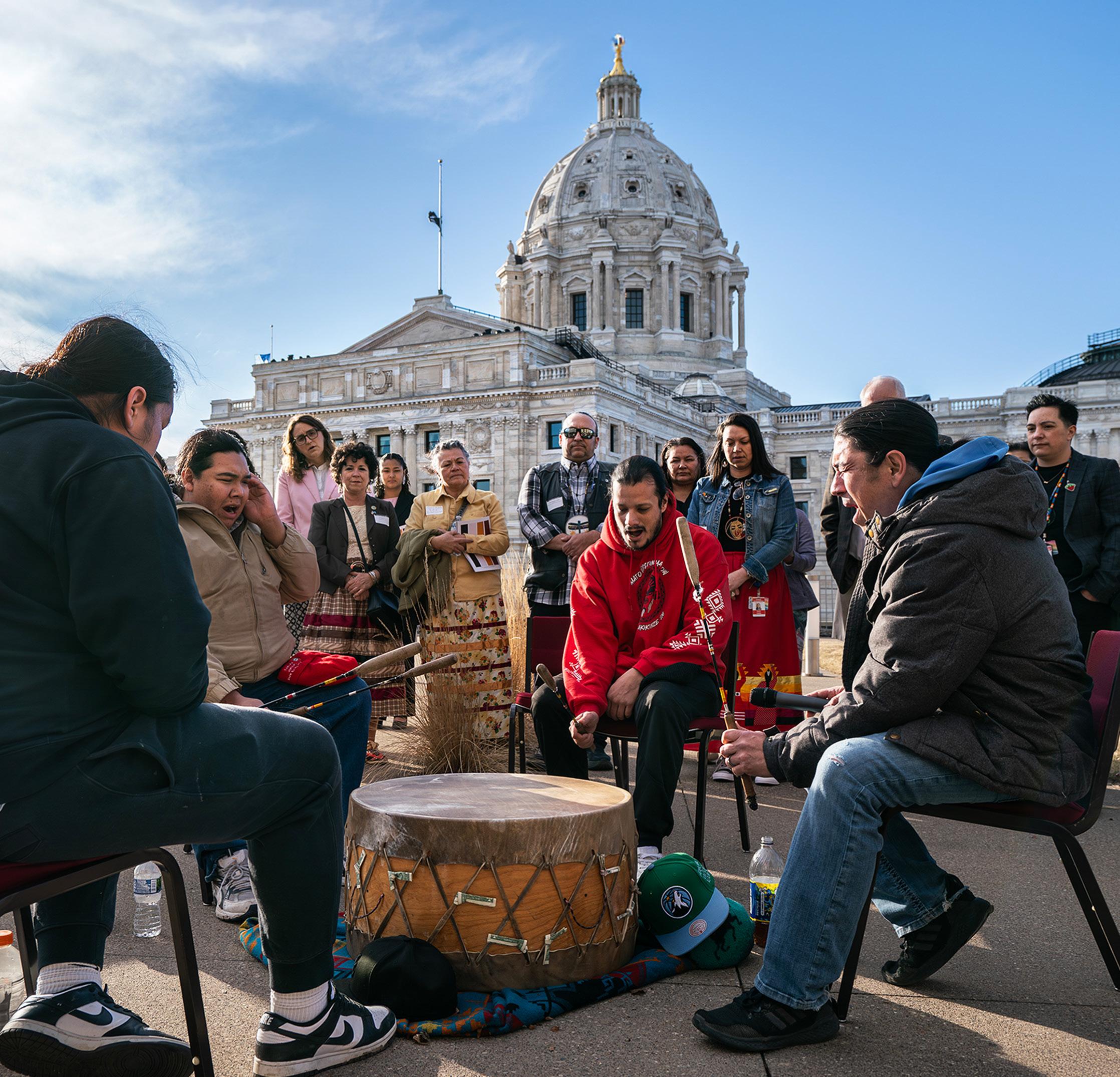


Minnesota Tribes and Lawmakers Come Together To Honor Sovereignty and Build Lasting Relationships
BY MADELEINE RUSH
PHOTOS BY MINNESOTA SENATE MEDIA SERVICES
In a moment of meaningful collaboration at the heart of Minnesota’s state government, an important dialogue between state and tribal leaders took center stage this spring. The Minnesota Senate and Minnesota House of Representatives, in partnership with the Minnesota Indian Affairs Council, hosted Sovereignty Day on March 17, 2025. This educational event for legislators highlights tribal history and culture, sovereignty, and the interplay between federal, state, and tribal law. Members of the Shakopee Mdewakanton Sioux Community (SMSC) Business Council, Secretary/Treasurer Ashley J. Cornforth and ViceChairwoman Natasha K. Hacker, participated in Sovereignty Day, along with dozens of other leaders of the 11 federally recognized sovereign tribal nations in Minnesota and state lawmakers who came together to build relationships and to talk about shared priorities.
Minnesota Governor Tim Walz, U.S. Senator Tina Smith, Speaker of the Minnesota House of Representatives Lisa Demuth, Speaker Emerita Melissa Hortman, President of the Minnesota Senate
Bobby Joe Champion, Senate Majority Leader Erin Murphy, Senate Minority Leader Mark Johnson, Minnesota Senator Mary Kunesh, and several other legislators and policy experts participated in the day’s discussions. It was a day for learning, listening, and strengthening and reflecting on the SMSC’s government-to-government relationship and partnerships.
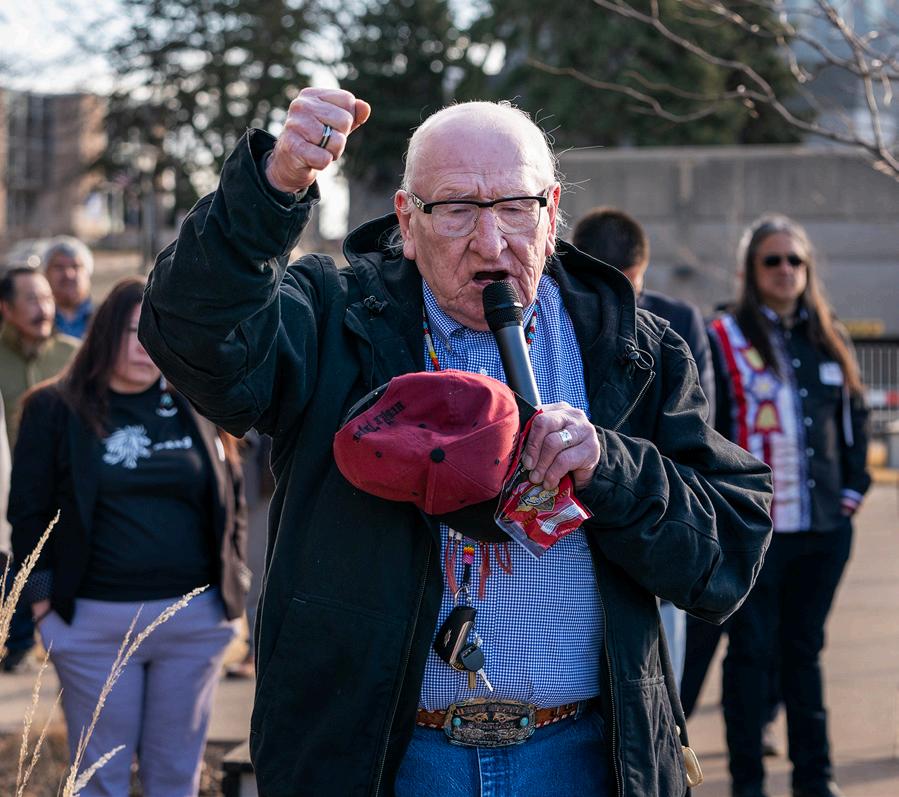
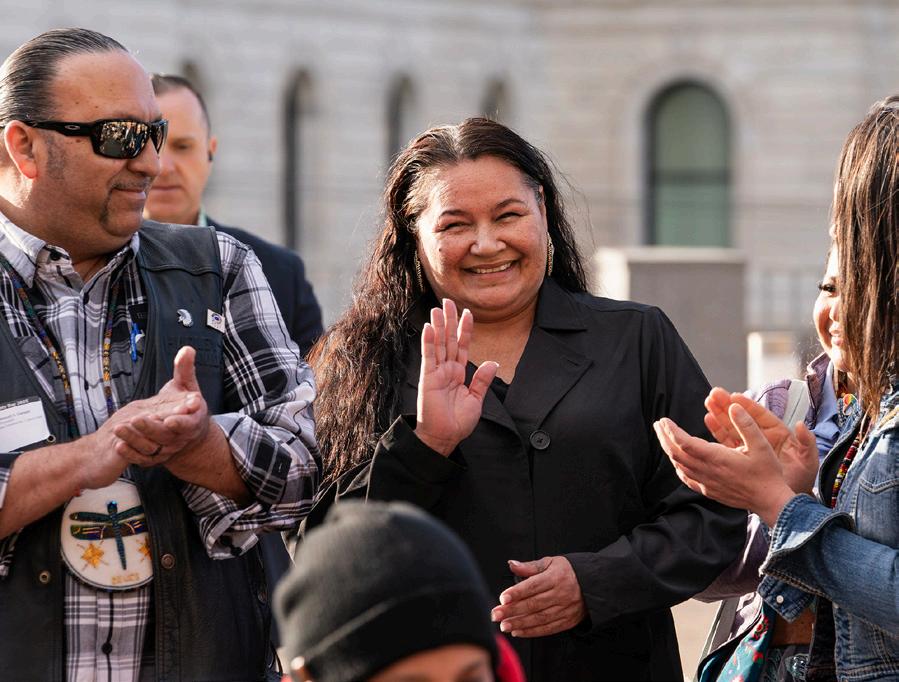
The day began with an outdoor performance from the Red Tree Singers Drum Group from the Lower Sioux Indian Community. Tribal leaders and state lawmakers then shared opening remarks and comments on the status of current tribal-state relationships. The flags of the tribal nations were on display next to the U.S. and Minnesota flags, signifying how the tribal and state governments work together.
“State laws are often created here for tribal nations as if a one-size-fits-all approach will work,” said Secretary/Treasurer Cornforth during opening remarks. “To truly recognize sovereignty, the state must recognize that each of us, as tribal leaders, have unique duties and responsibilities to best serve our own communities. Respect for tribal sovereignty means understanding— or at least acknowledging—those differences and working with each nation individually.”
Vice-Chairwoman Hacker and Secretary/Treasurer Cornforth also led a small group discussion on environmental issues, highlighting the SMSC’s successes and challenges in working with federal and state governments during prairie restoration, renewable energy, and organics recycling projects.
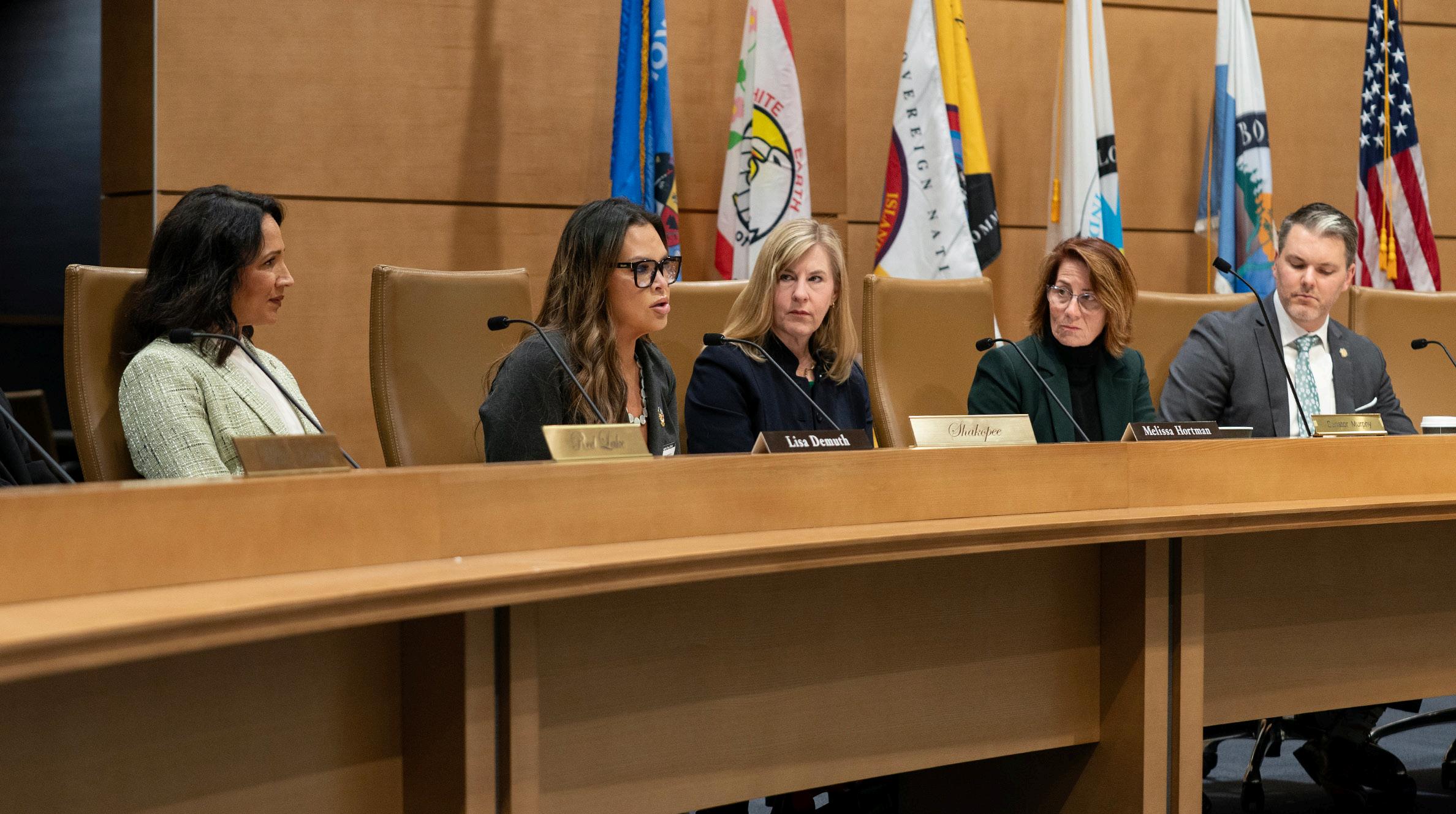
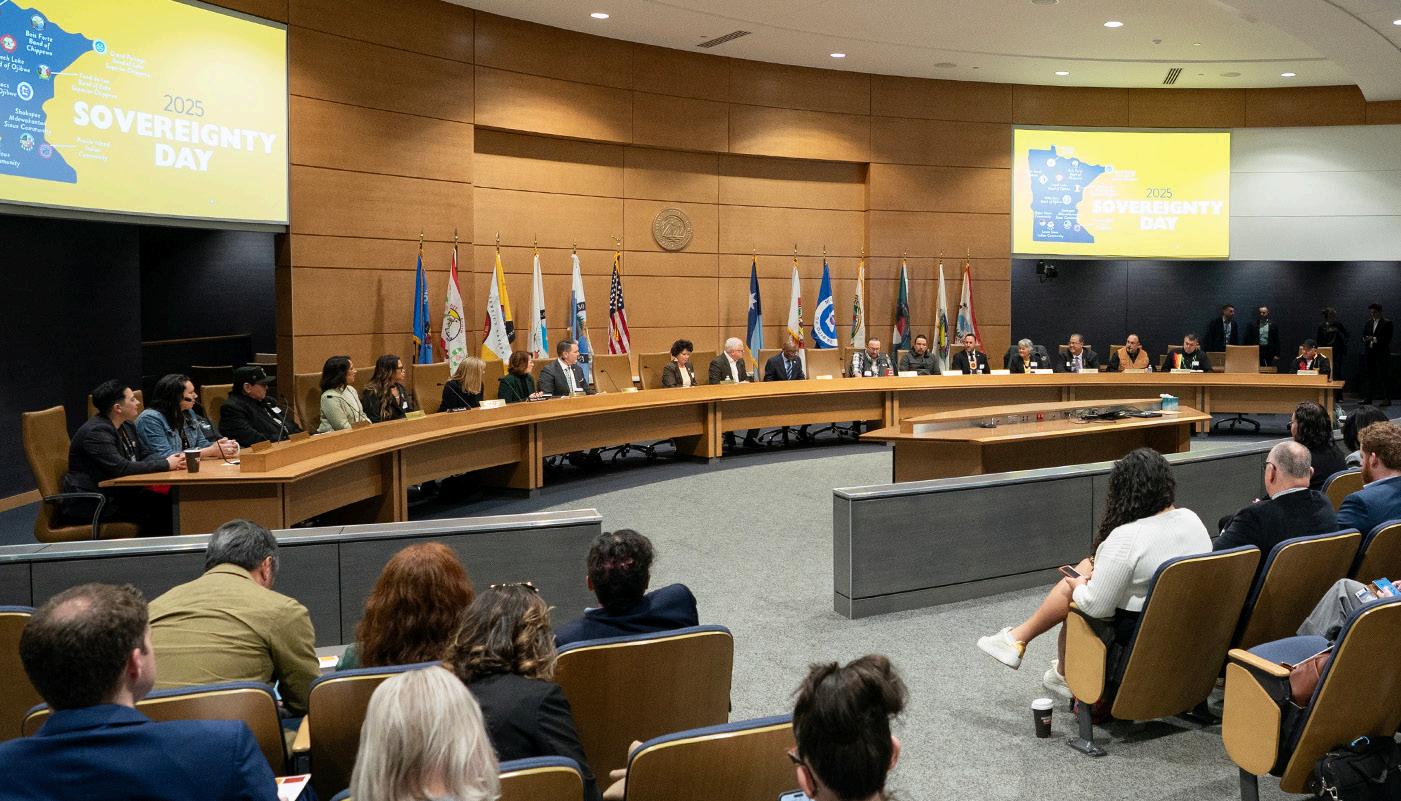

“
To truly recognize sovereignty, the state must recognize that each of us, as tribal leaders, have unique duties and responsibilities to best serve our own communities.
Respect for tribal sovereignty means understanding—or at least acknowledging—those di erences and working with each nation individually. “
Ashley J. Cornforth
SMSC Secretary/Treasurer
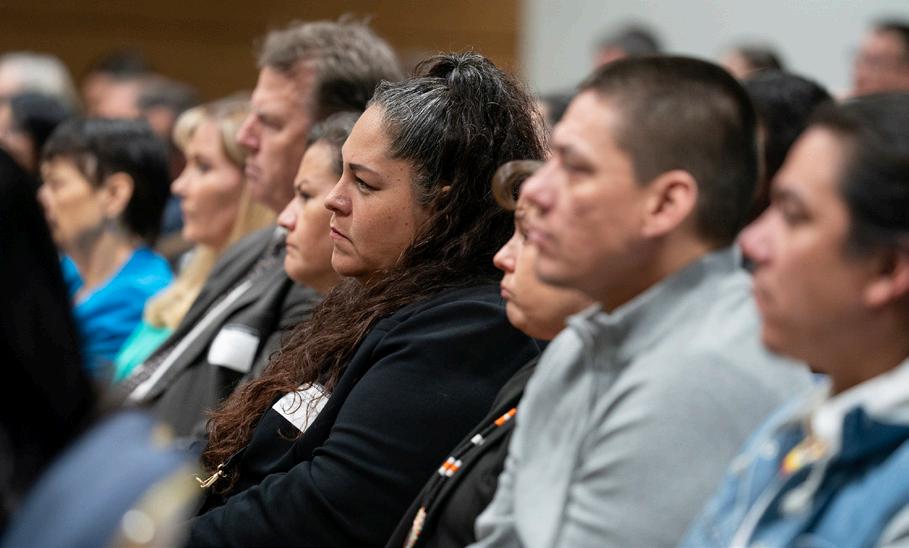
The Minnesota House held the first Sovereignty Day in 2019, an effort led by then-Speaker Melissa Hortman. In the wake of Hortman’s tragic murder, SMSC leadership mourns the loss of a strong ally and passionate leader who modeled meaningful state-tribal collaboration.
“Nurturing the important government-to-government relationships our state has with each of the 11 sovereign tribal nations that share our borders is critical work,” said Senate Majority Leader Erin Murphy. “As Leader, I have worked to ensure that the tribal nations within Minnesota not only have a seat at the table, but that we sit together at that table when we decide policies that affect us all. It has been my good fortune to visit many tribal nations in the past year, where leaders shared their unique cultures and histories, and we built upon and deepened relationships between us. Sovereignty Day at the Minnesota State Capitol is an important part of that work as we move forward together.” W
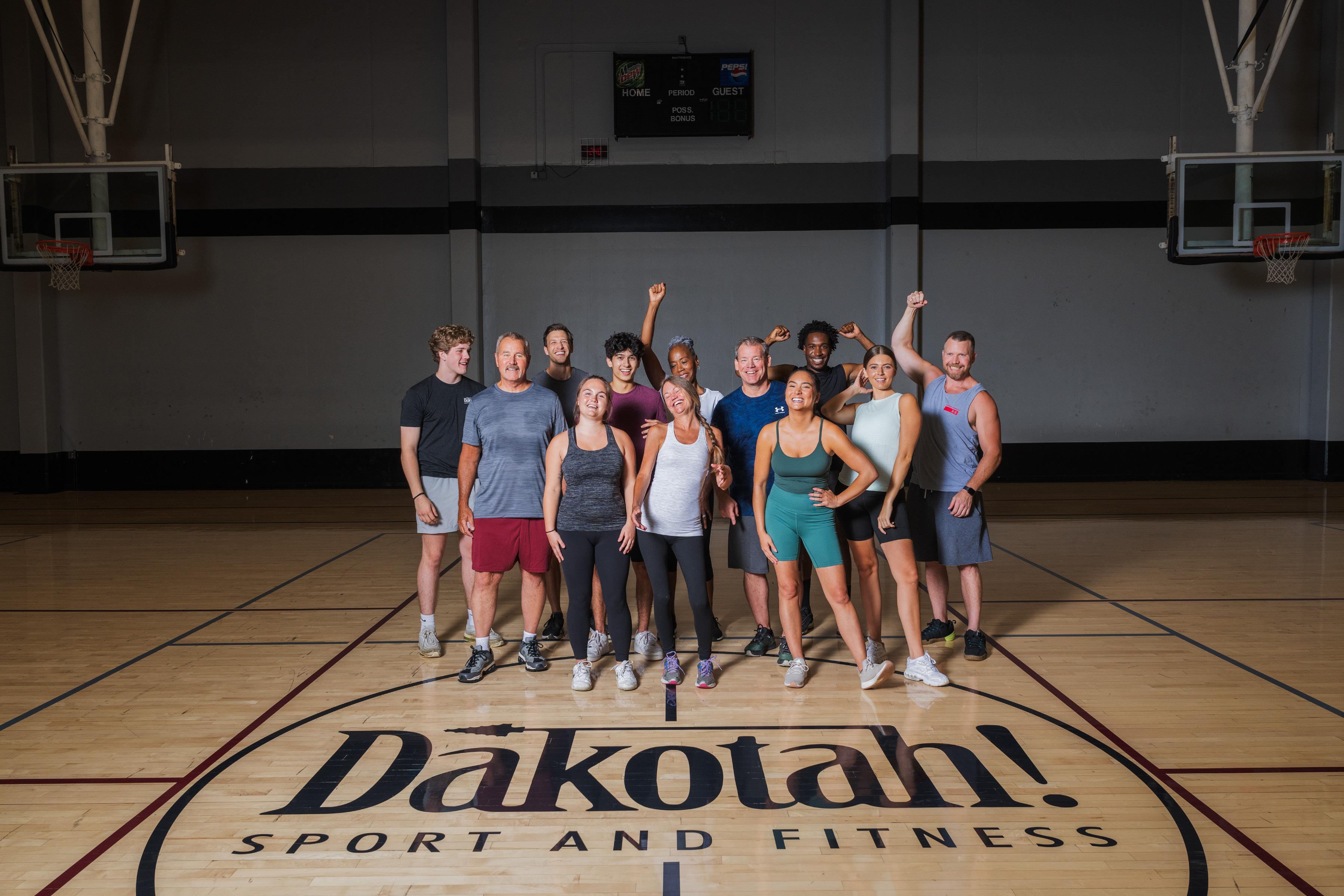
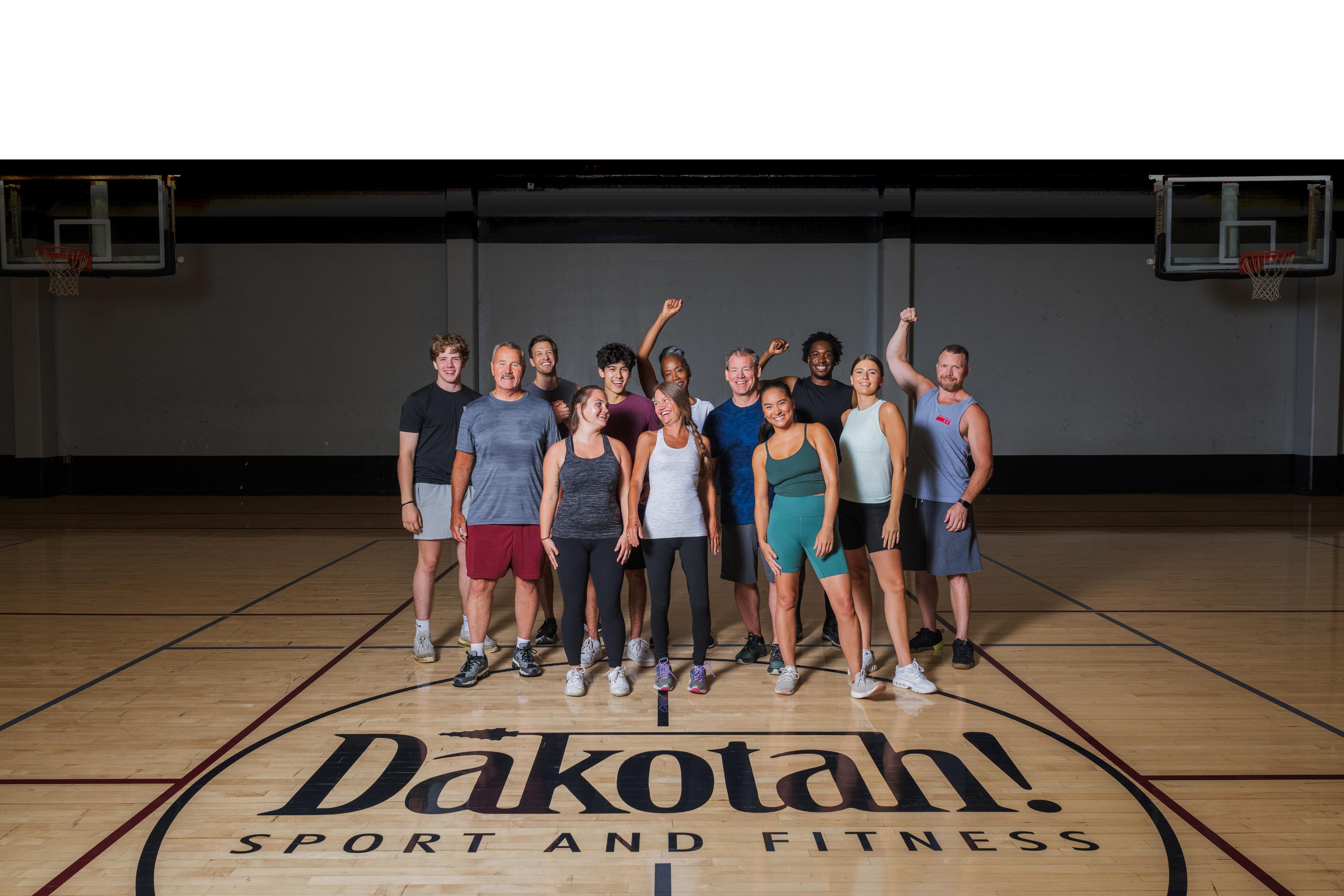
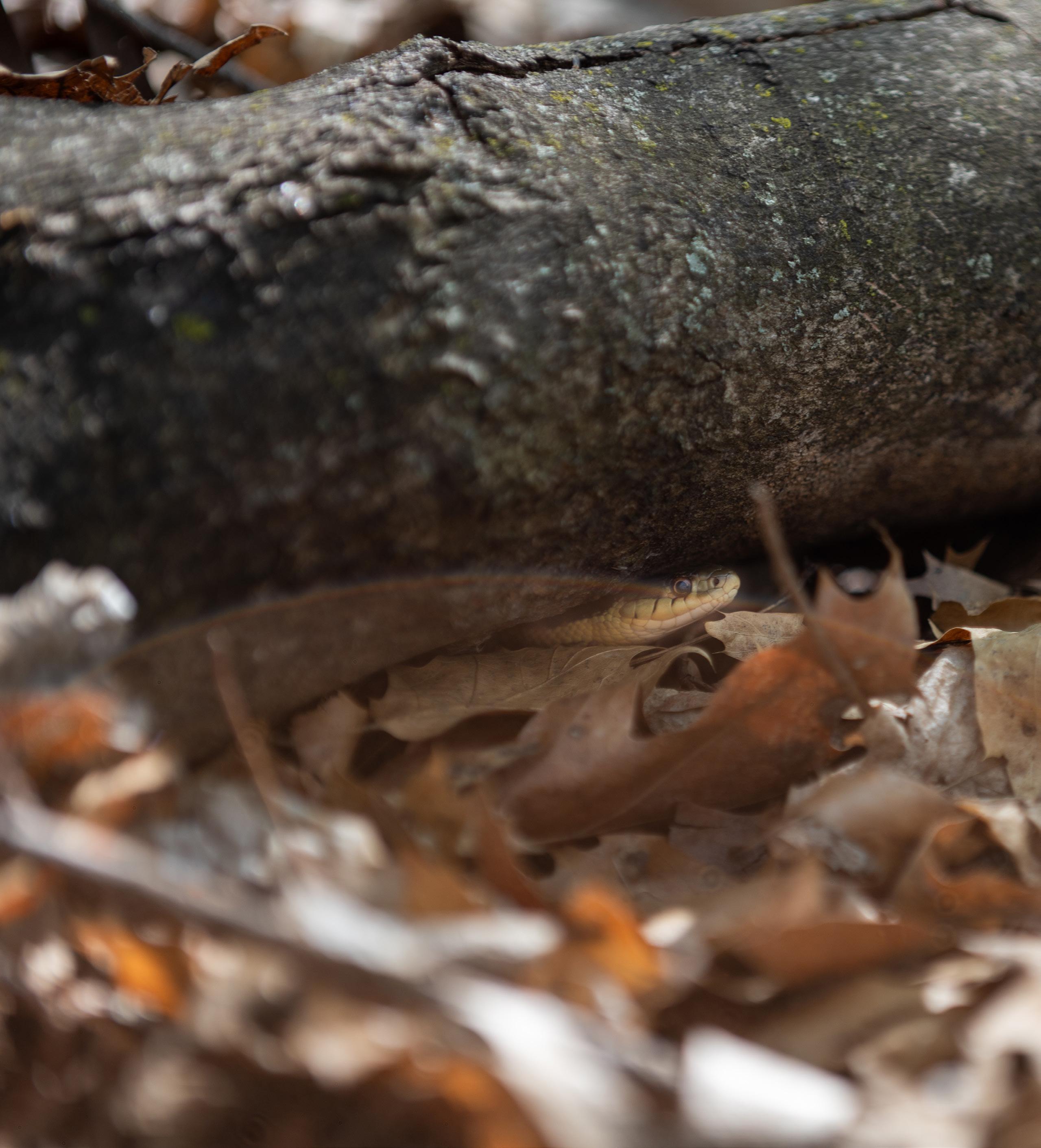


Values
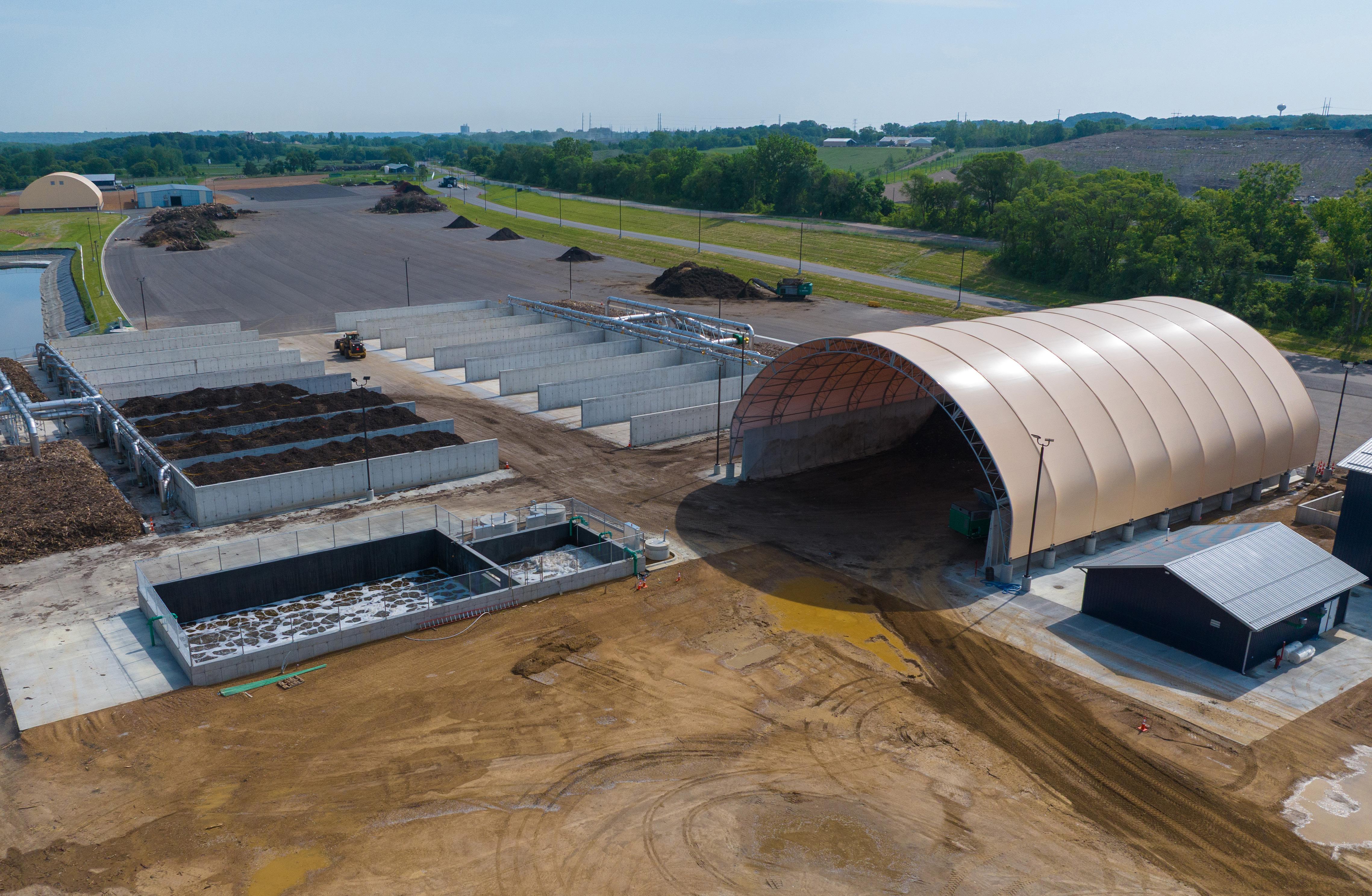
LEADING THE WAY IN ORGANICS RECYCLING THE
SMSC'S DAKOTA PRAIRIE COMPOSTING
OPENS ITS DOORS
BY JONI KOMPERDA
Since its inception in 2011, the Shakopee Mdewakanton Sioux Community (SMSC) Organics Recycling Facility has played a pivotal role in shaping the Twin Cities’ composting landscape. What began as a promising endeavor to divert food and yard waste from landfills in the metro area quickly blossomed into a resounding success, demonstrating the region’s eagerness to embrace sustainable waste management practices. The facility, which is one of only two large-scale composting facilities
PHOTOS BY BLAKE ZIEMER

processing source-separated organics in the Twin Cities metro area, experienced such overwhelming support that demand for its services rapidly outpaced its capacity at its original site off County Road 83 in Shakopee, Minnesota. Recognizing this enthusiastic response and the potential for even greater positive impact, the SMSC embarked on a visionary expansion project. That vision has now become a reality with the grand opening of Dakota Prairie Composting in Louisville Township this past June 2025.
The new Dakota Prairie Composting site, strategically located near the intersection of Highways 169 and 41, represents a substantial investment in the future of sustainable waste management and evidence of the SMSC’s responsiveness to community needs. The relocation of the SMSC’s organics recycling operations underwent many approvals and secured permits with multiple state agencies and the local county government, demonstrating interagency collaboration for the betterment of the surrounding communities.
The site is also zoned “Heavy Industrial” by Scott County, which allows compost facilities.
In addition to the new facility, the tribe funded improvements to the historically problematic Trunk Highway 41 intersection in Louisville Township. The improvements added bypass and turn lanes and installed rail crossing safety improvements, easing congestion and improving safety for everyone who uses those roads. The new site and infrastructure will allow the facility to process more organics in a location better suited for industrial activity.
Breaking ground on June 27, 2023, the ambitious Dakota Prairie Composting project has been years in the making. “Guided by our tribe’s Dakota values and commitment to caring for the Earth, our organics recycling facility will protect and preserve the environment for future generations,” said former SMSC Chairman Keith B. Anderson. “This history-making facility will help our state reduce its reliance on landfills,
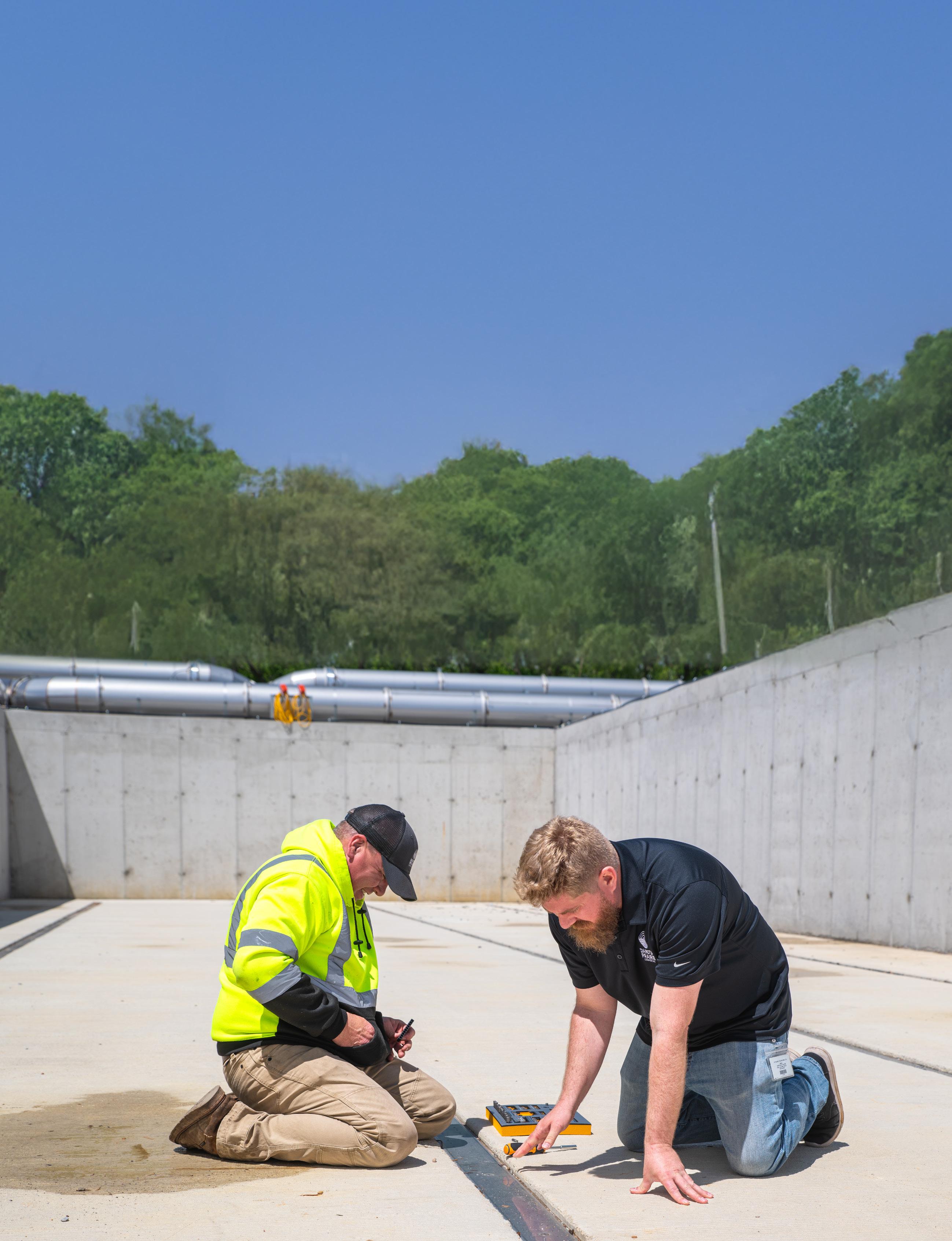
conserve energy and natural resources, and reduce pollution and greenhouse gas emissions. We are glad to celebrate this milestone and appreciate the dedication of the agencies and government officials that have supported this project.”
Dakota Prairie Composting is an expansion as well as a significant advancement. Building upon years of research and incorporating insights gleaned from site visits to leading composting facilities across the country, the new facility showcases state-of-the-art technology and modern composting processes. These innovations will triple the amount of compostable organic material the facility can process by diverting up to an impressive 212,500 tons of organics annually from landfills—equivalent to the weight of over 17,000 school buses and a reduction of 26,000 metric tons of carbon emissions per year. The upgraded operation will also further improve odor control and enhance overall efficiency.
This expansion indicates a major leap forward in Minnesota’s journey toward its ambitious recycling goal of 75% of the state’s waste by 2030. As the largest composting facility in the Midwest, Dakota Prairie Composting is poised to become a cornerstone of this effort, playing a crucial role in achieving this important target. “This facility embodies the Dakota tradition of caring for the earth and the Dakota people’s seven-generation approach to longterm planning,” said Dakota Prairie Composting Director Dustin Montey. The site will operate under
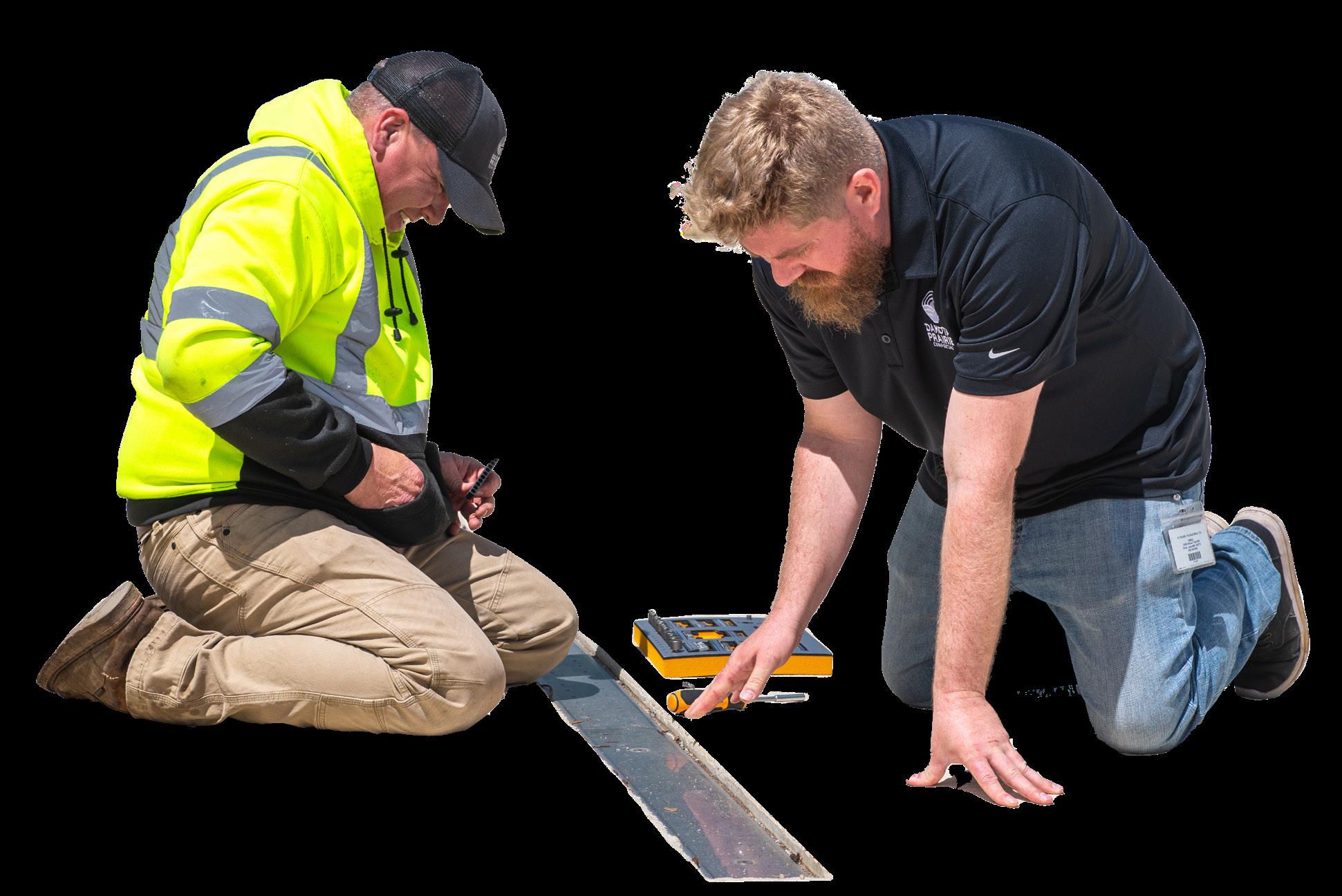



“
This facility embodies the Dakota tradition of caring for the earth and the Dakota people’s seven-generation approach to long-term planning.
Dakota Prairie Composting Director Dustin Montey
“
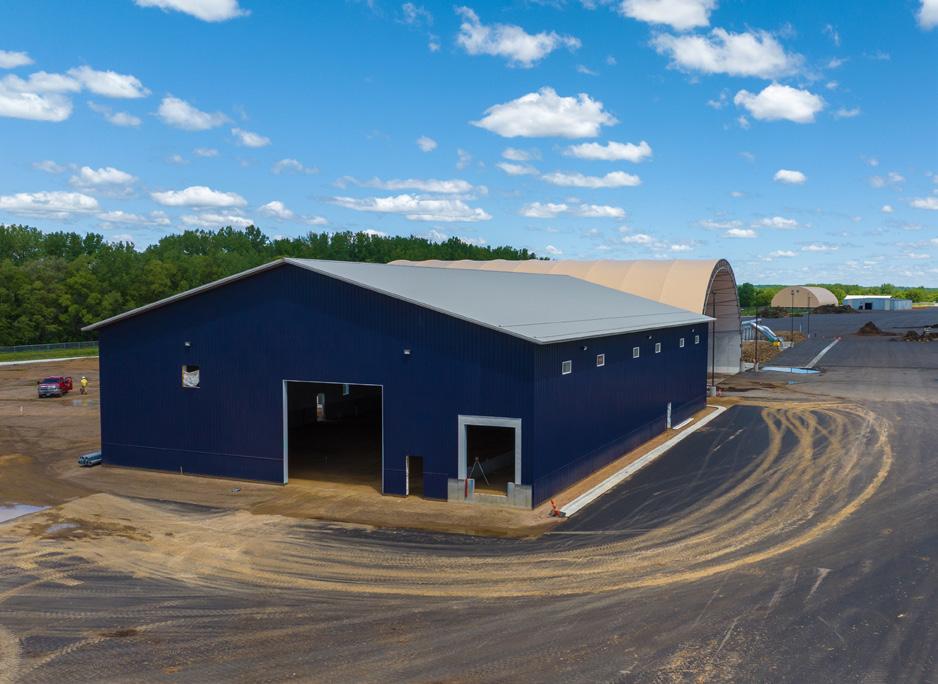
the regulatory oversight of the Minnesota Pollution Control Agency (MPCA), ensuring compliance with all applicable standards, just like all other permitted Minnesota composting facilities.

only organics or approved compostable materials for drop-off, so their loads don’t get rejected.

Dakota Prairie Composting will continue to collect and recycle commercial organics, providing the same high-quality compost, soil blends, and mulch products that have earned the original composting site its reputation for excellence. Montey explains the dedication to an exceptional product, “Our facility has a 5% contamination threshold, which means any loads of organics coming into our facility need to contain less than 5% total non-compostable material to be accepted.” The threshold ensures the facility can efficiently and effectively remove any non-compostable material present in a load and incentivizes customers to bring
Carver County residents will also enjoy expanded access, with convenient drop-off options for yard waste (for a nominal fee) and landscaping products easily accessible for purchase. While the existing Shakopee facility will eventually transition its full operations to Dakota Prairie Composting, it will continue processing wood mulch and some retail sales for a time. The adjacent bison operation will remain and expand at the Shakopee site, and any disturbed areas will be carefully restored.
The SMSC’s deep commitment to sustainability extends far beyond the realm of composting. The tribe’s NativeGreen initiative encompasses a diverse




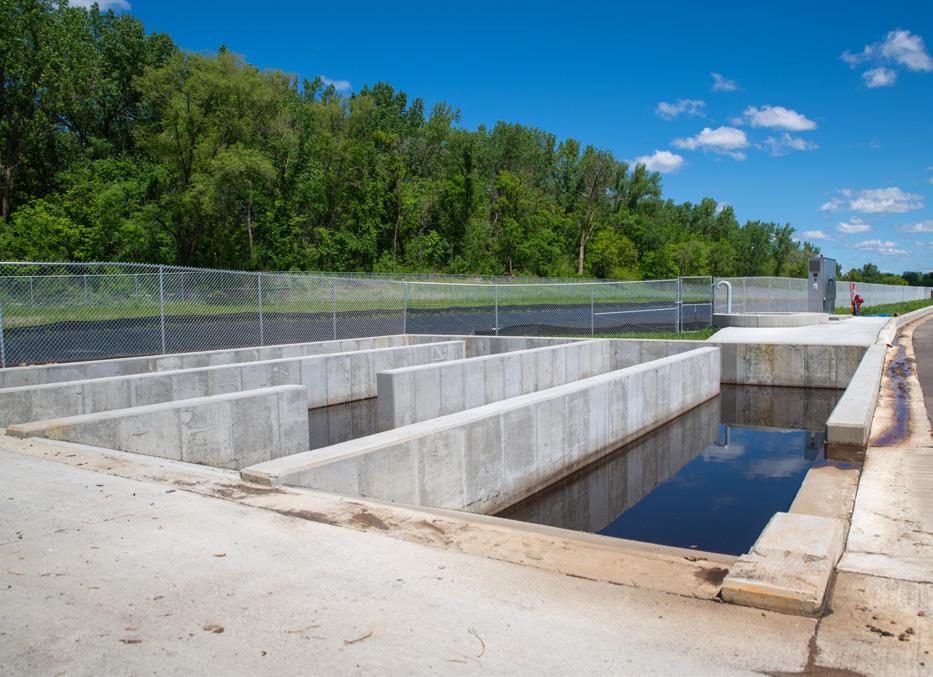
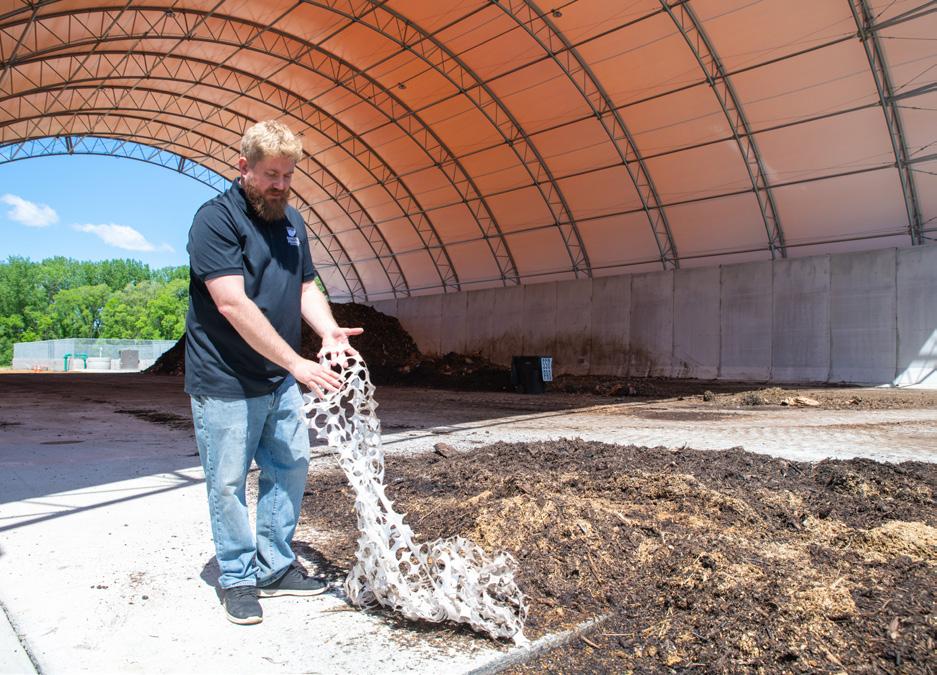
To delve deeper into the offerings and services provided by Dakota Prairie Composting, and to explore how you can contribute to a more sustainable future, you’re invited to visit dakotaprairiecomposting.com. There, you’ll find detailed information on products, services, and commitment to environmental stewardship, as well as resources to help you make informed choices about organic waste management.



For personalized assistance or to speak directly with the Dakota Prairie Composting team, don’t hesitate to call 952.233.9191.
Follow Dakota Prairie Composting on Facebook and Instagram for the latest updates, tips, and news.

Scan the QR code to see what makes Dakota Prairie Composting special.

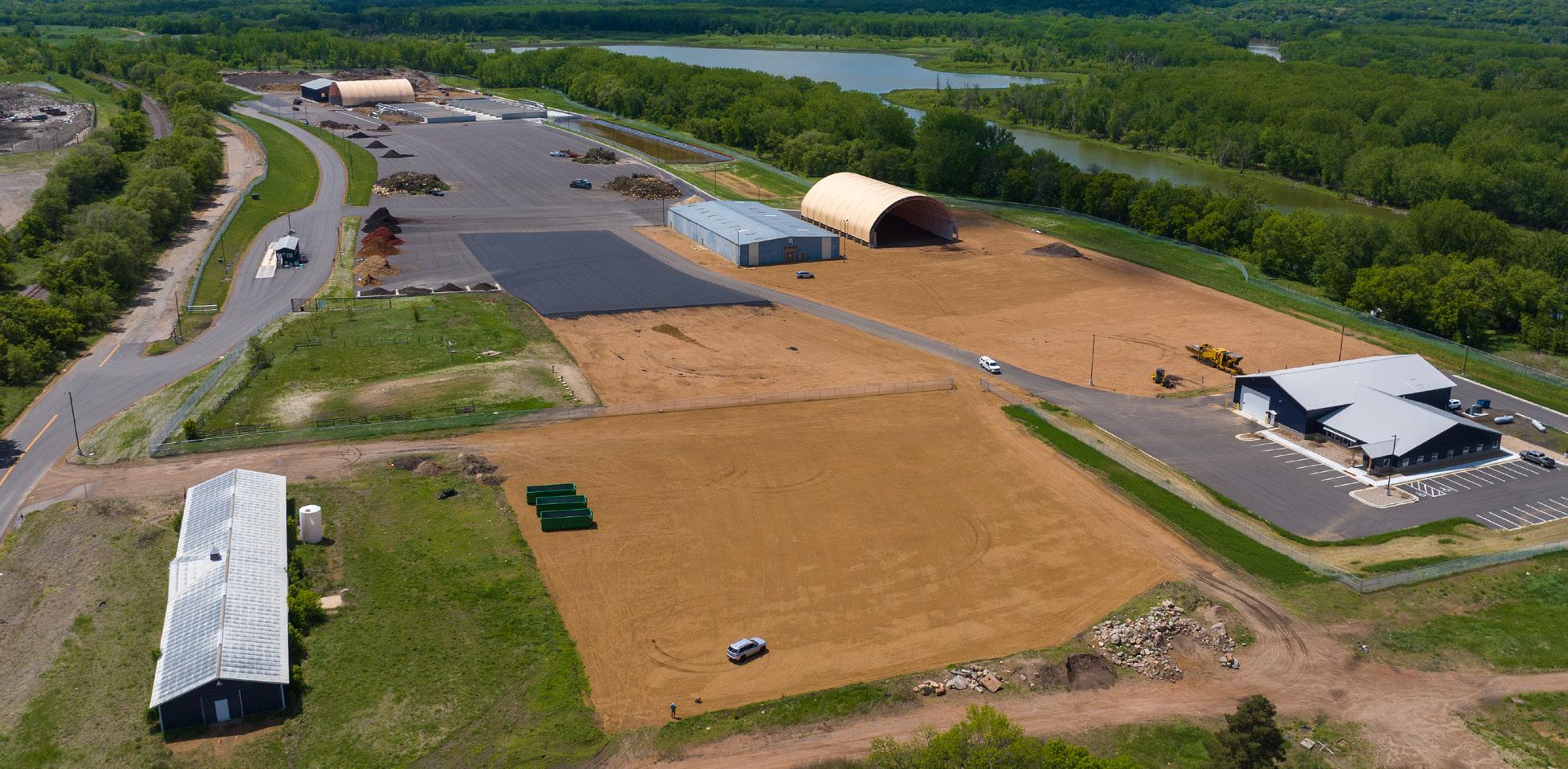
range of conservation and self-sufficiency programs, reflecting a holistic approach to environmental stewardship. The Seven Generations principle, a cornerstone of Dakota philosophy, guides their longterm planning, ensuring the actions taken today will create a positive legacy for the next seven generations. The organics recycling program itself serves as evidence of this commitment, creating a closed-loop system where organic waste from SMSCrun enterprises and facilities, like Mystic Lake Casino Hotel and the Horticulture Department, is transformed into valuable resources to enrich the earth.
With its grand opening in June 2025, Dakota Prairie Composting
has officially opened its doors to the public, ready to serve the entire region. This milestone signifies the completion of the facility, the realization of a long-held vision, and the power of the collaborative efforts among the SMSC, local cities and counties, and several Minnesota state agencies. Dakota Prairie Composting stands as a symbol of the SMSC’s unwavering dedication to environmental stewardship, a commitment deeply rooted in Dakota traditions. It represents a significant victory for the entire area, offering expanded access to sustainable waste management and high-quality composting products. It also serves as a bright ray of hope, illuminating the path towards a more sustainable future
for generations to come. Tribal Administrator Bill Rudnicki said, “We held the grand opening of the long-anticipated, state-of-theart Dakota Prairie Composting facility in June. To reflect on the journey—in 2023, we gathered for the groundbreaking ceremony, full of hope and vision. Nearly two years and a substantial investment later, we officially debuted this sustainability-driven operation. We enjoyed celebrating this achievement together.”
By converting organic waste into resources to benefit the earth, Dakota Prairie Composting is reducing landfill waste, minimizing carbon emissions, and promoting a culture of environmental responsibility to benefit us all. W

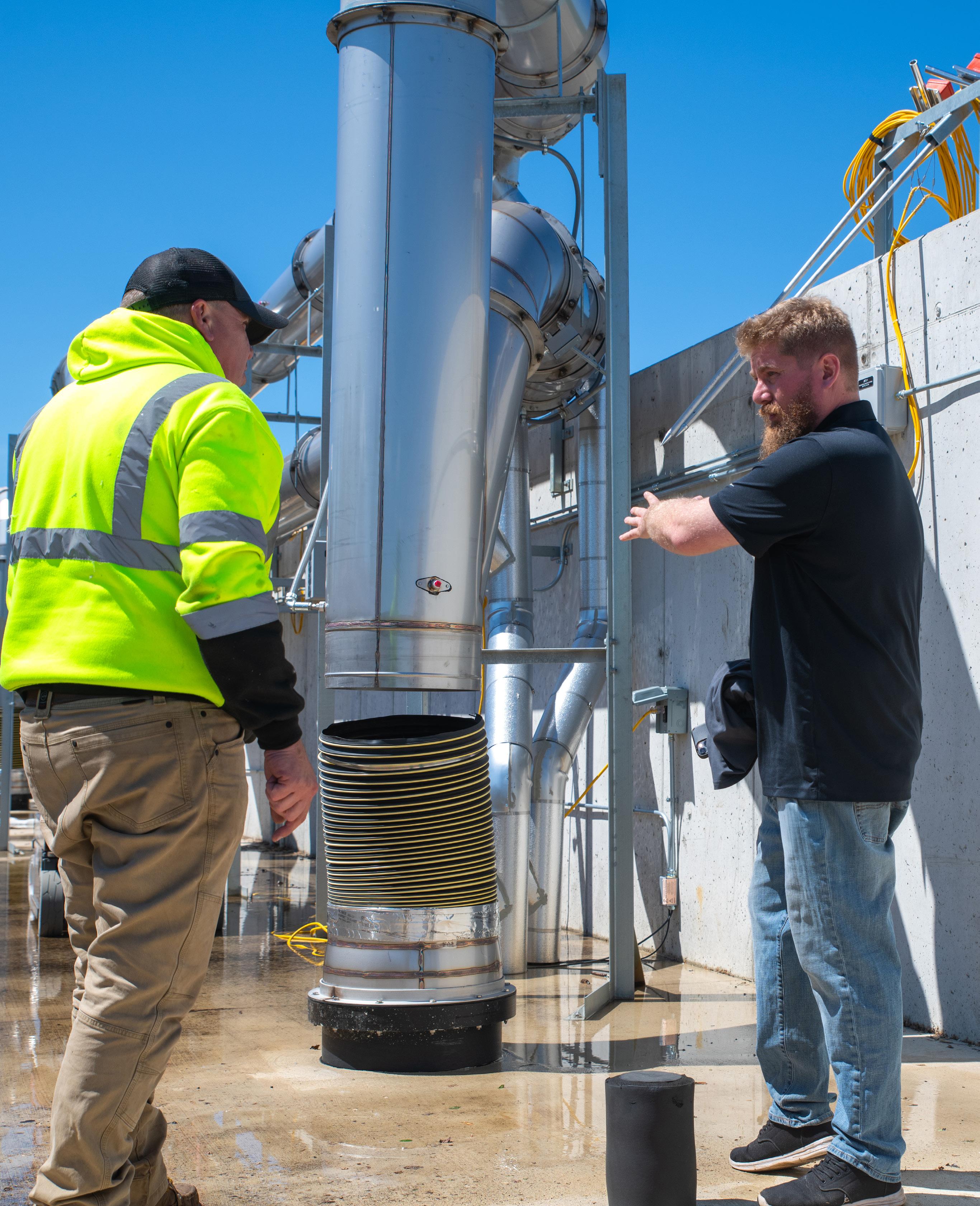


TEAM MEMBER Q&A
Lance Armstrong,
ASPIRE Counselor
Before joining the Shakopee Mdewakanton Sioux Community (SMSC) five years ago, ASPIRE Counselor and amateur skier Lance Armstrong learned that navigating rugged terrain—much like life—takes patience, perspective, and trust in the path ahead. Those same principles now guide his work as an employee counselor, where his steady presence and thoughtful guidance help others find their footing through life’s ups and downs. Whether carving fresh tracks on a snowy slope or getting lost in the rhythm of a favorite song, he draws inspiration from moments of flow—and brings that grounded energy into every conversation. He believes that with the right support, everyone has the capacity to grow, heal, and move forward. His goal is simple: to help people feel supported and empowered to take their next step.
BY CHAUNDRA RICH
PHOTOS BY BLAKE ZIEMER
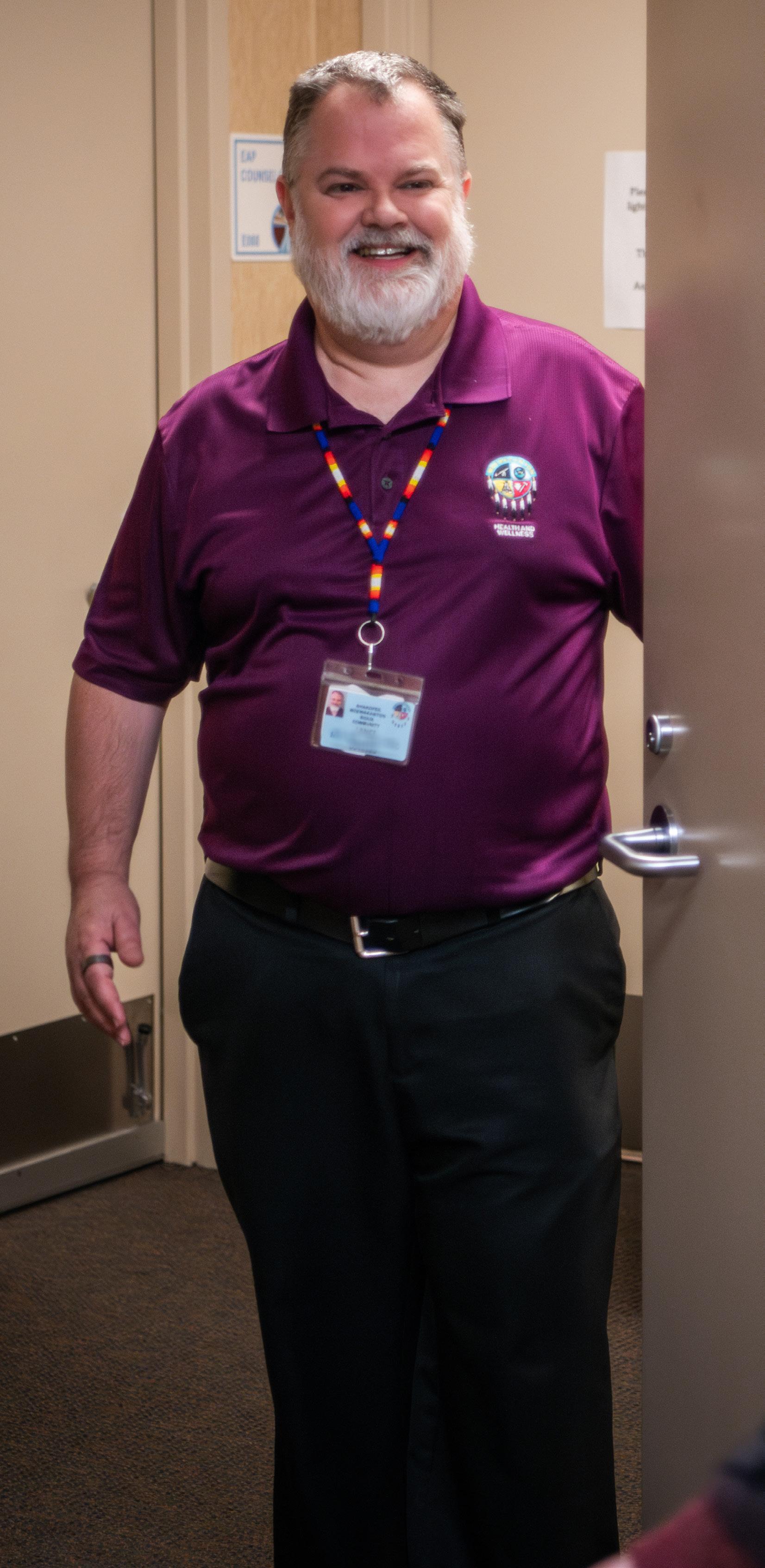
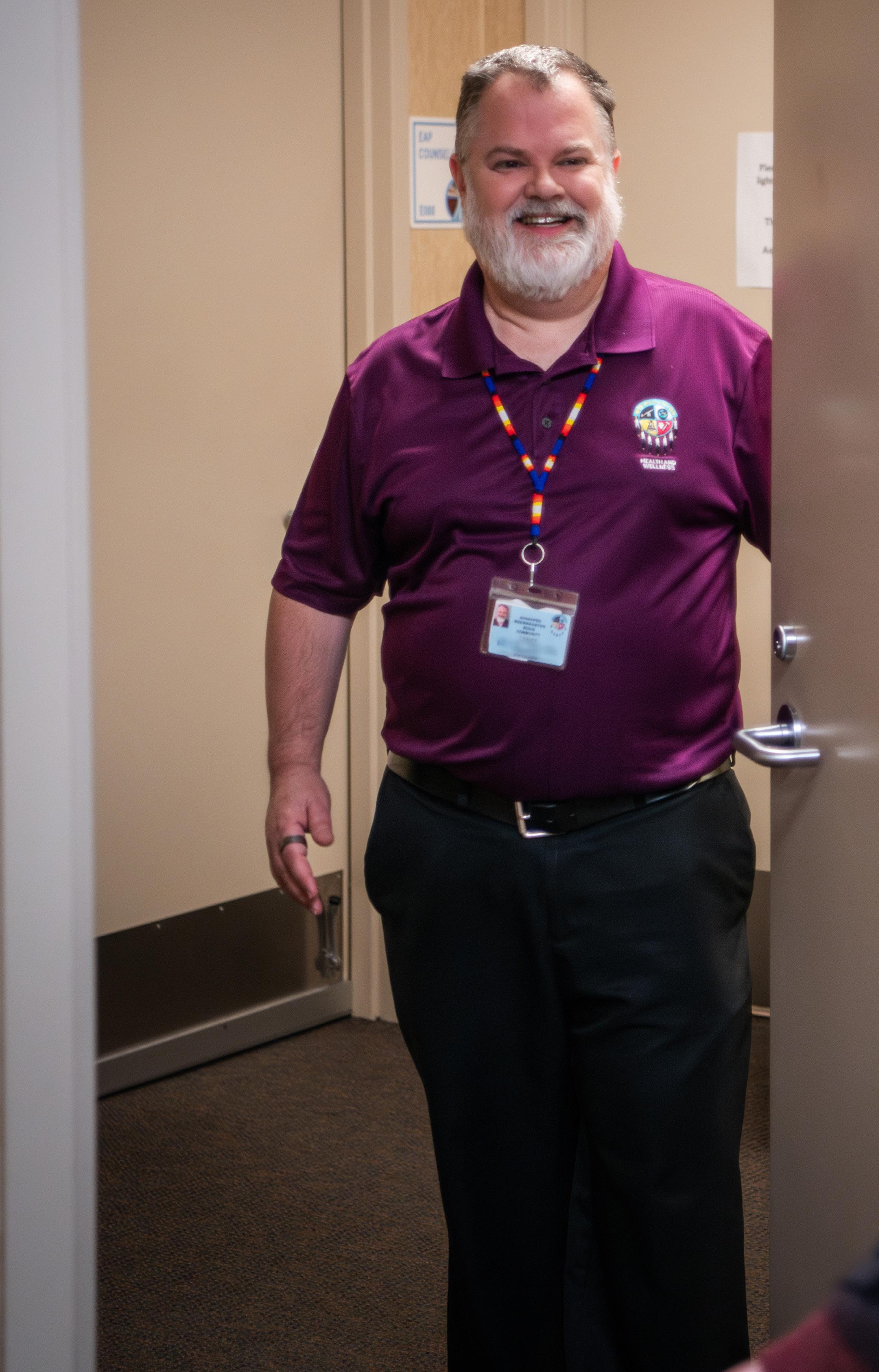


WHAT DOES A TYPICAL DAY LOOK LIKE FOR YOU?
At ASPIRE, we are open 8am-5pm and I start seeing clients around 8:30am for about an hour. In an ideal day, I’ll see about 5-6 clients. We are lucky that our waiting list isn’t too long.
When people first come in, we do an intake assessment and talk about what brings them to pursue counseling, and what they want to get out of therapy or specific goals they want to achieve and how we can make a plan going forward for them.
We do accept walk-ins, as well, and I like to save space for anyone experiencing a crisis and needing immediate counseling. Between myself and Cassie Stewart—the other ASPIRE counselor here—we will both work together to make sure everyone is taken care of.
WHO DOES ASPIRE TAKE AS CLIENTS?
ASPIRE is its own independent clinic for SMSC team members, their spouses, and any of their family members living in the home.
WHAT KIND OF COUNSELING IS PROVIDED BY ASPIRE?
It’s called brief solution-focused counseling. So, generally we can see a client for eight sessions with any given life issue. If they need further counseling on the same thing after those eight sessions, we would refer them to another place. However, there is no limit to the number of different reasons you can seek our help with throughout the year.
TELL US ABOUT YOURSELF.
I’m originally from Idaho. I moved to Minnesota in ’99 with my wife for her graduate program and because she had family out here. I miss the mountains, but Minnesota has been a great place to raise a family. My parents still live in Idaho, so I try to visit as often as I can. I grew up with a skiing family. My mom is 81 and she still goes skiing!
WHAT ARE SOME PROJECTS YOU’VE BEEN WORKING ON?
During my time with the SMSC, I’ve gotten more active in different projects, like the team member Pop-Up Clinics and Health in a Hurry articles. I wrote one on self-care and another on suicide prevention. In my second year here, I started doing a few seminars at different clinic events as well.
At the SMSC, team members have access to free, on-site counseling through ASPIRE—just one of the many ways we support our staff. Looking for meaningful work with real support? Join our team.
SHARE HOW YOU MIGHT HELP SOMEONE REACH THEIR HIGHER POTENTIAL THROUGH COUNSELING.
I think the biggest successes I have is when someone comes in very distraught and we are able to get them to slow down, breathe, and process what is going on, while coming up with a continuous care plan. I’ve been a counselor for over 20 years, and I’ve seen just about everything come through my doors, from addiction to family matters, and run-of-the-mill stresses from work and life, but what keeps me going is that at the end of a session they typically report feeling much better. They tell me, ‘That just felt good getting it off my chest.’ Even if we don’t have a solid solution for the problem, I see them feeling better in the moment. Nobody really comes in feeling worse off after coming to therapy.

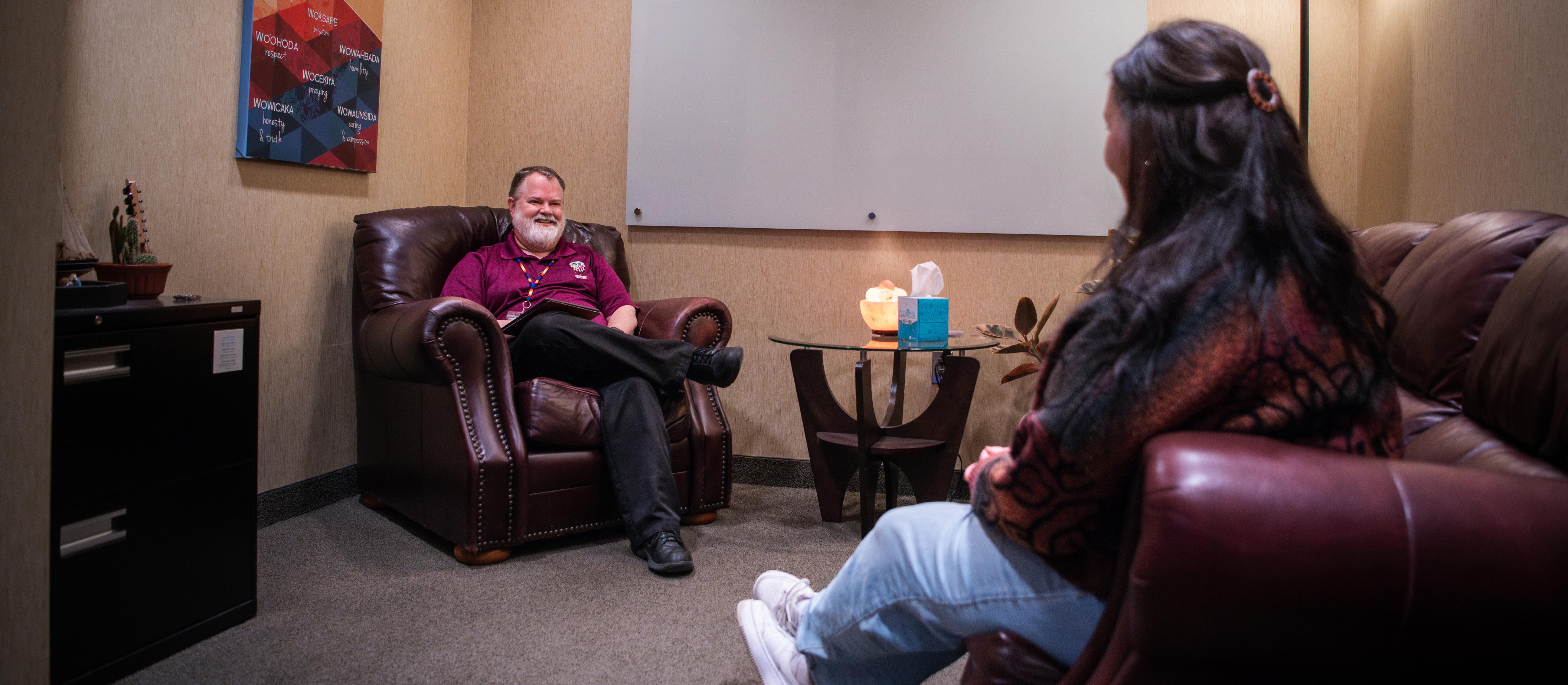

WHAT
DOES A CONTINUED CARE PLAN LOOK LIKE FOR THOSE THAT HAVE FINISHED THEIR COUNSELING SESSION WITH ASPIRE?
It can be a variety of things. Sometimes it is making a plan to see a therapist long-term. Other times it can be making dietary, lifestyle, or health changes to help them feel better. One of the things that makes ASPIRE unique is that it’s solution-focused therapy. So, a lot of times when they don’t need continued care, you’ve kind of wrapped everything up for them so that they can go back to life as usual. Of course, that’s under an ideal circumstance. My main advice to people is continue to do what is working and continue to use your coping skills.

“What keeps me going is that at the end of the session they report feeling better.”
ASPIRE Counselor
Lance Armstrong
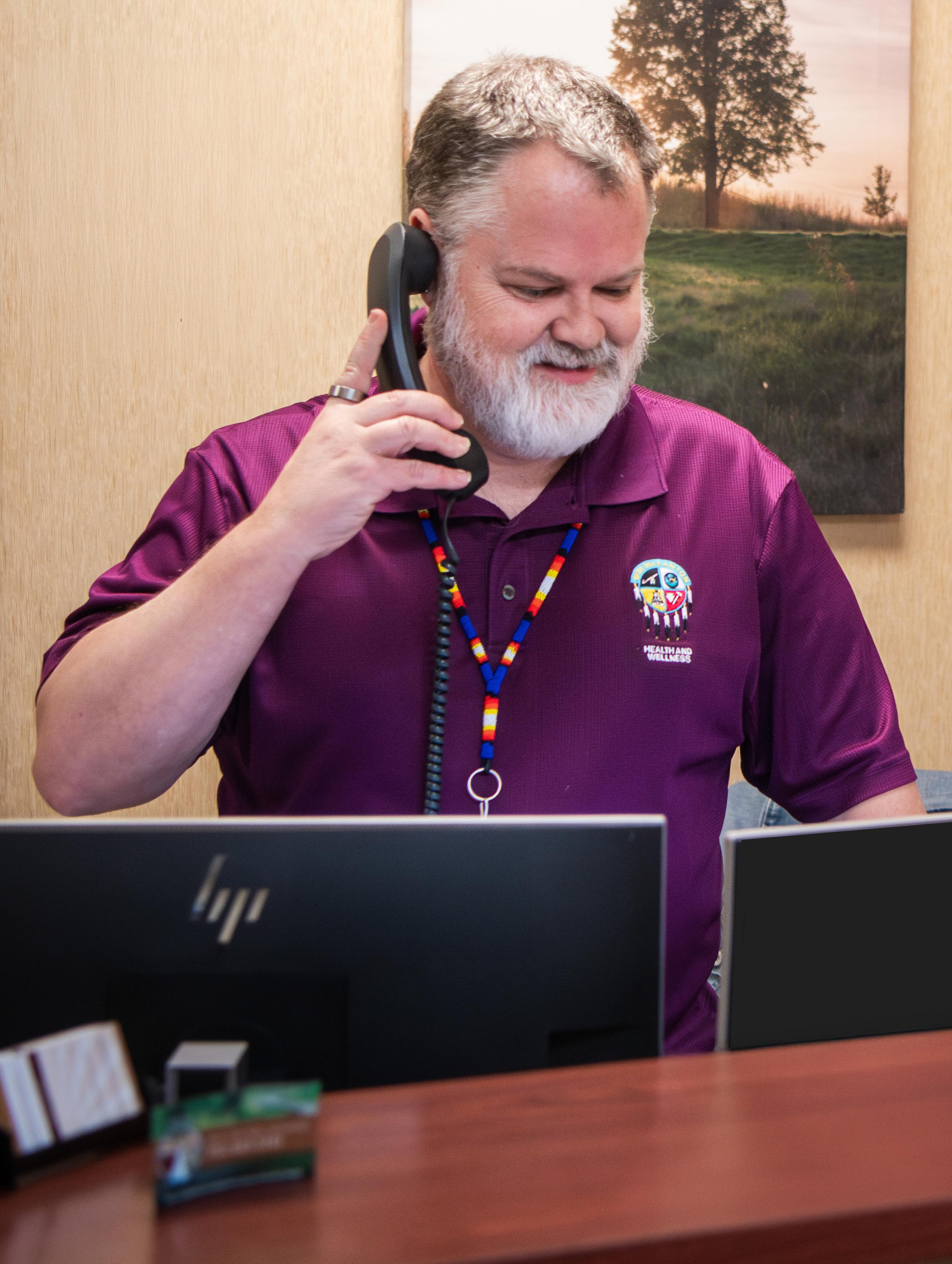
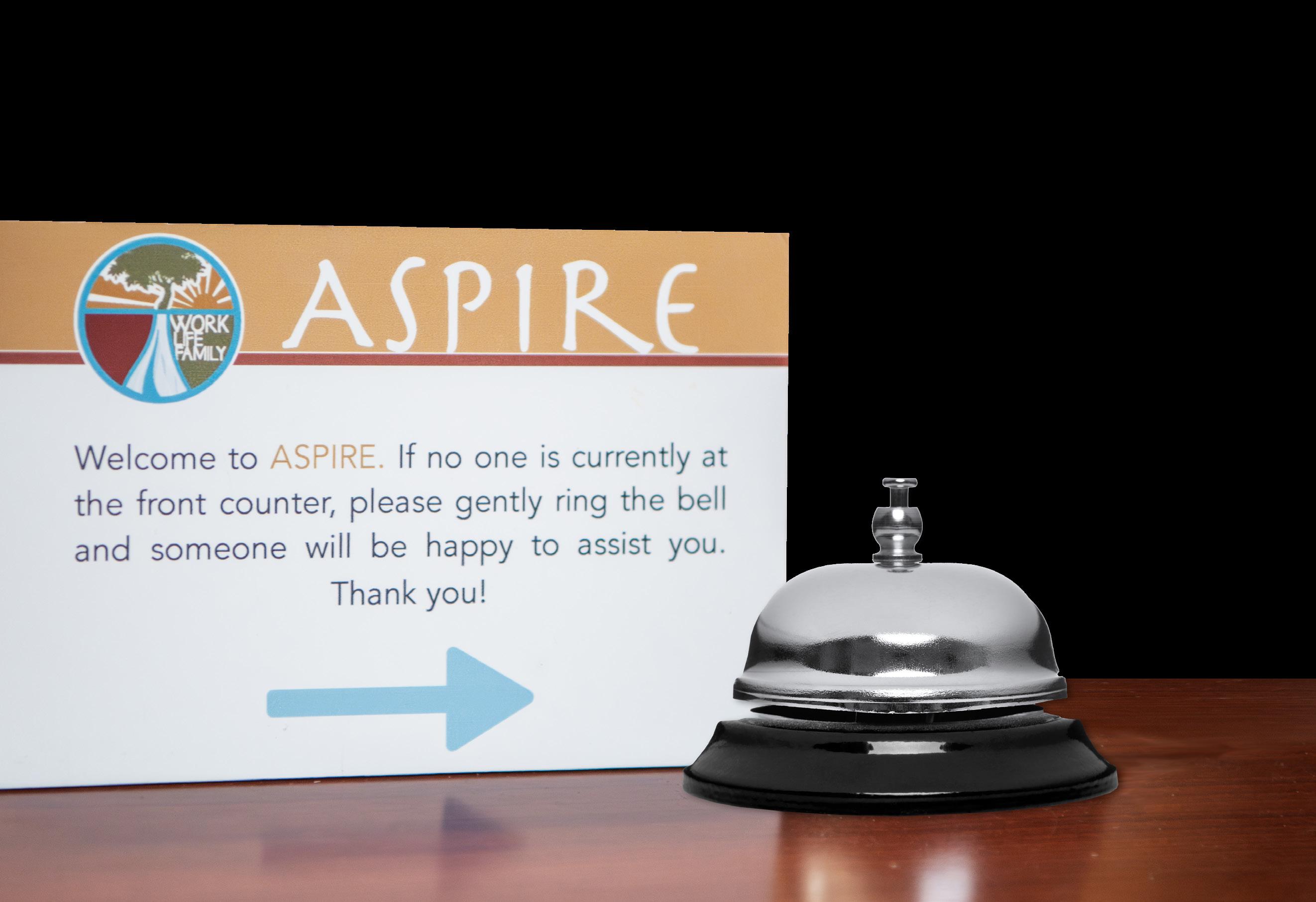

WHAT IS YOUR ADVICE FOR MANAGING WORKPLACE STRESS?
Self-care. It’s finding that work-life balance. And simple things your mom has told you: diet, exercise, and sleep. These are always so important, and they are also most commonly put to the side when people become stressed. People say ‘I’ve been running on empty’ because they’ve forgotten the things that they need to do to make decisions that help situations be less stressful.
WHAT ADVICE WOULD YOU GIVE TO SOMEONE JUST STARTING OUT AS A COUNSELOR?
Have a good clinical supervisor that you trust and can bring ideas too. One of the most challenging things about being a counselor is being self-assured and confident in what you do and the advice and feedback you give, and you need a good team behind you for that. My team is great for helping me process through things. You need someone to keep you on track and provide good guidance, so you don’t feel alone in the work you do.
DO YOU HAVE ANY ADVICE FOR ANYONE JOINING THE SMSC TEAM?
The coolest thing I’ve seen about the SMSC team is a lot of longevity. Especially in leadership positions or those that develop the teams—they’ve been here a long time. I see people that have been here 20 plus years and love it. They say nothing but great things about their time. I feel like a ‘new guy’ because I’ve only been here five years!
DO YOU ATTRIBUTE THAT LONGEVITY TO ANYTHING IN PARTICULAR?
Well, when you have good management, you have longevity. I’ve had jobs when I made less money but stayed longer because I believe in the vision of that place. I think that’s why people stay with the SMSC. And the benefits are pretty great, too. W

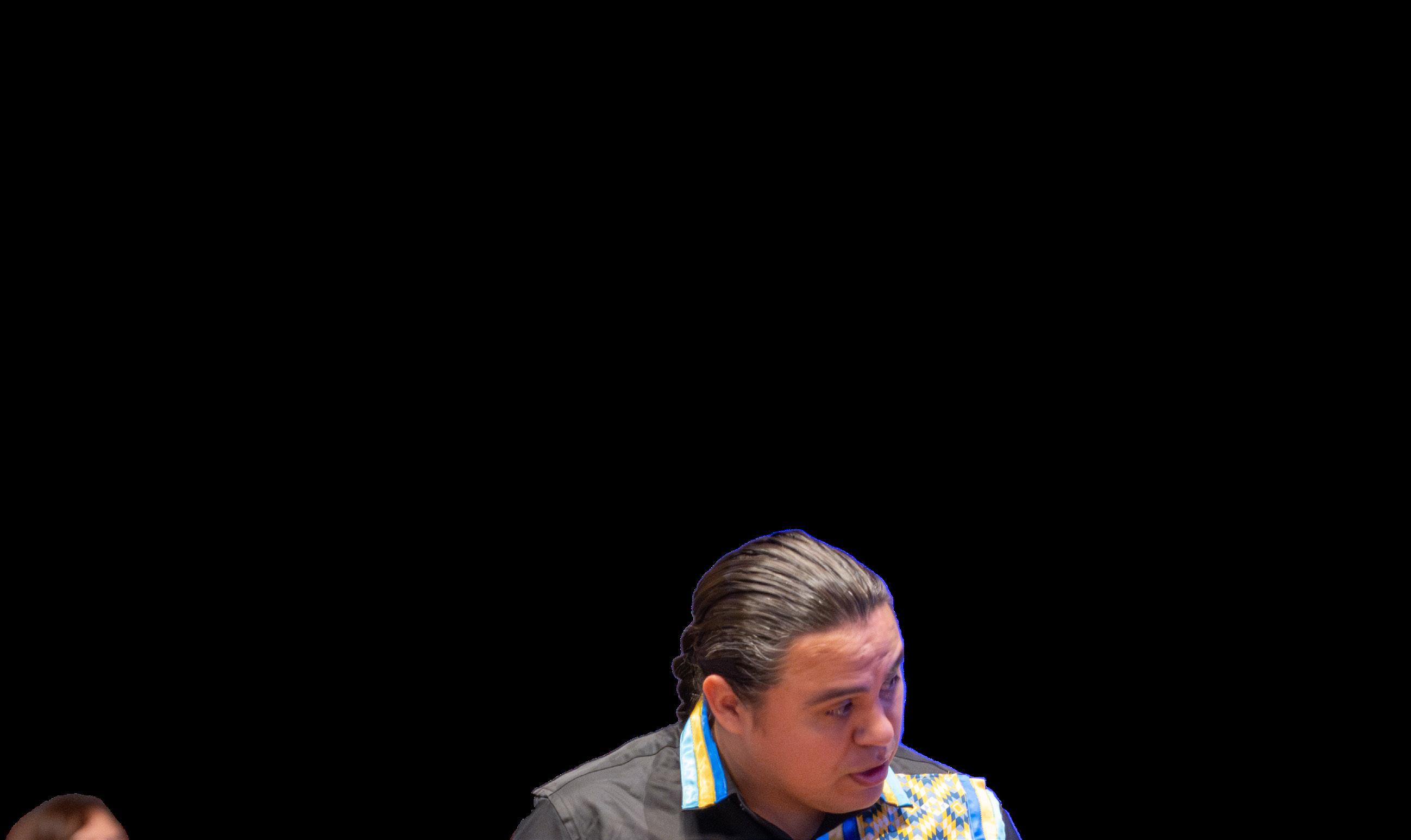
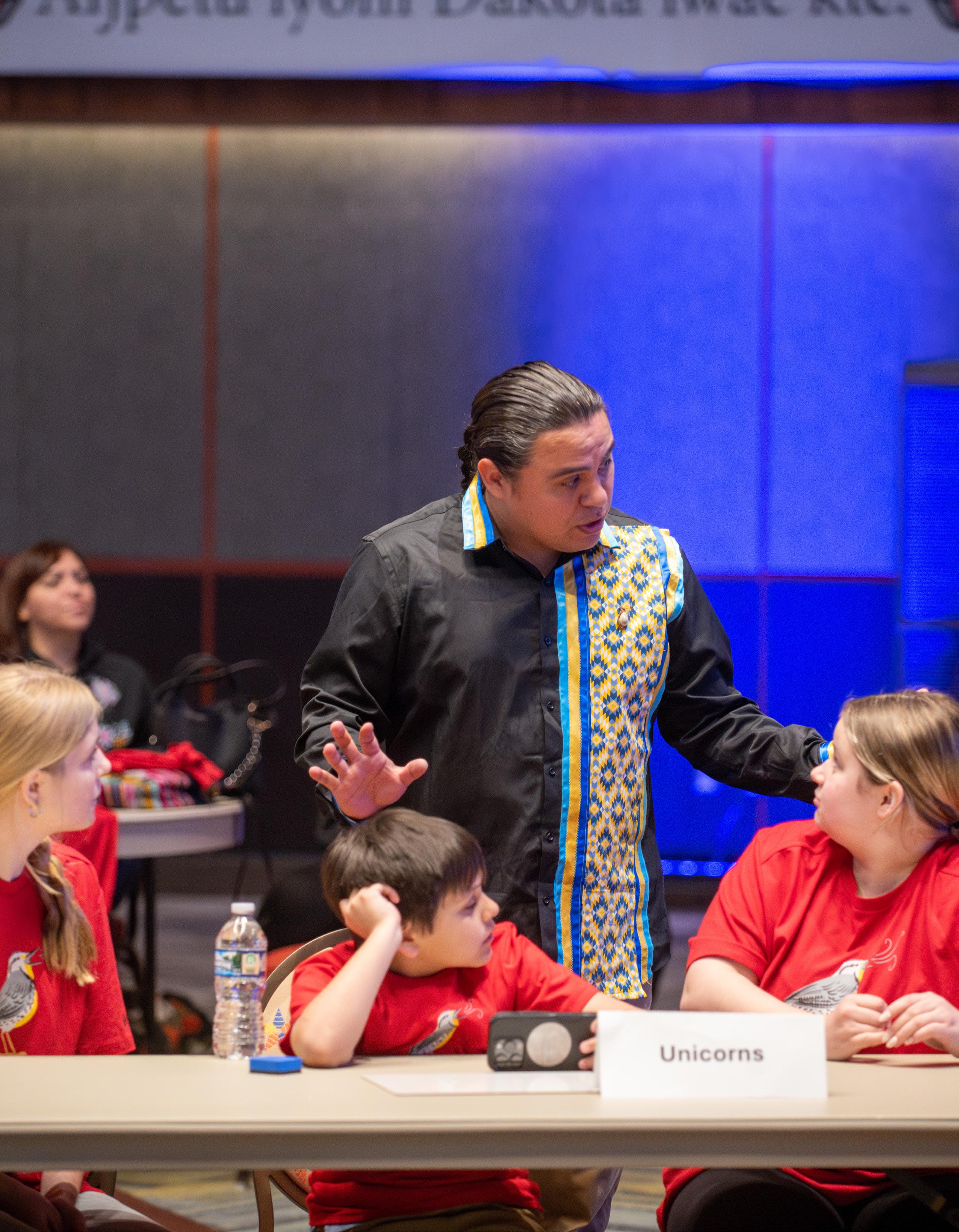
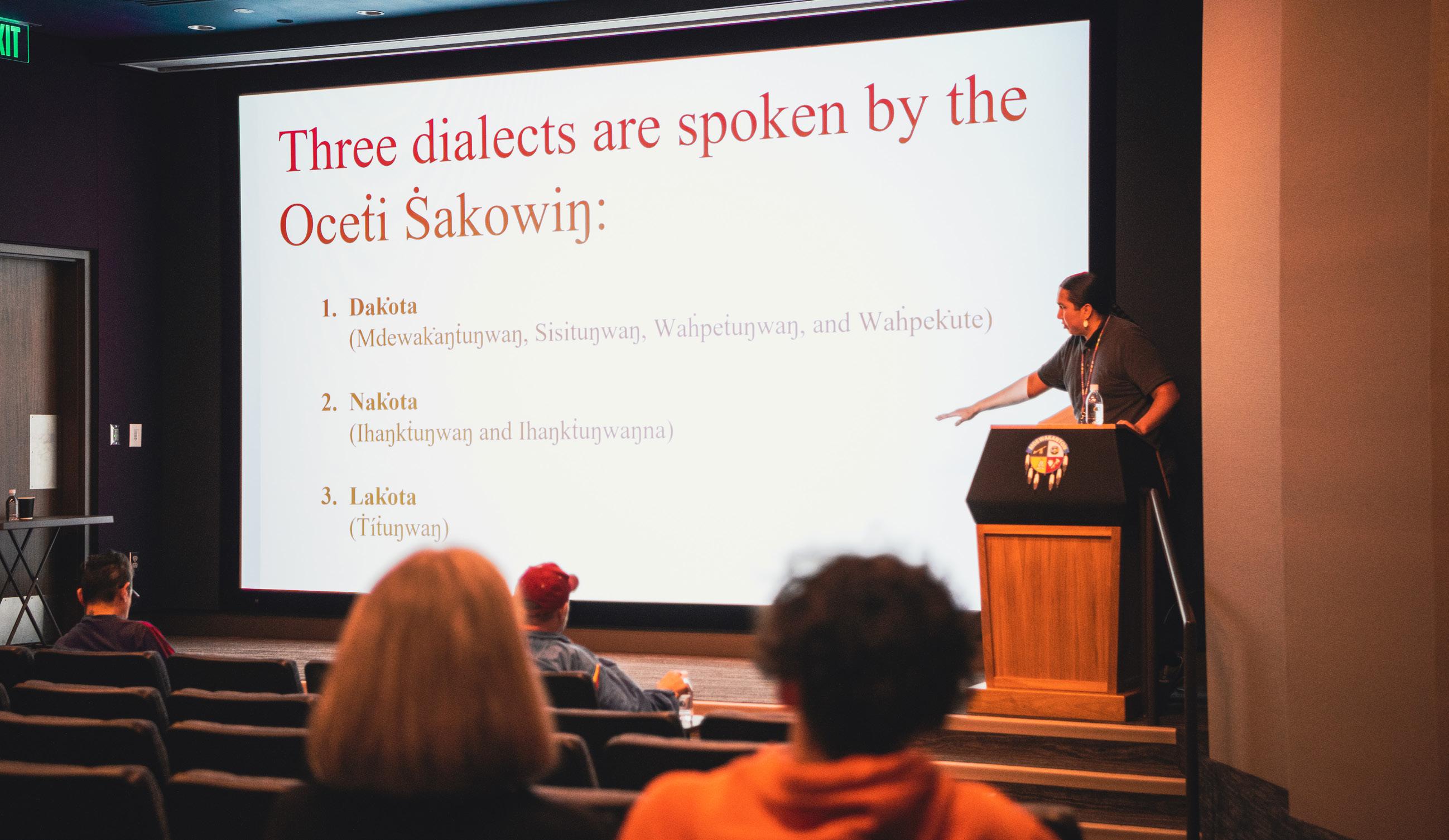


The Dakota language—like many Indigenous languages— was systematically stripped from Native people during the boarding school era from the 1880s through early 1900s. Native children were sent to these schools to be “civilized,” and were punished for speaking their Native language. For decades, fear and shame surrounded the use of Indigenous languages—feelings that still linger today.
The Dakota language remains critically endangered, but meaningful progress is underway to reclaim this core piece of Native identity and culture. The SMSC is investing significant time and resources to strengthen the language within the tribe and beyond.
GROWING THE LANGUAGE AMONG TRIBAL MEMBERS
While the Dakota language has been preserved through audio recordings and dictionaries, revitalization depends on fluent speakers who carry the deeper cultural meanings embedded in the language. With so few first-language Dakota speakers left , the SMSC recognized the urgent need for action.
Through a $2 million commitment, the SMSC partnered with four tribal colleges to launch a Dakota language training program in 2017 called Voices of Our Ancestors. Students from five tribes in the Midwest were invited to become fully immersed in the Dakota language, 40 hours a week for two years. Of the 20 students who were selected for the intensive program, five were from the SMSC. These tribal members brought back critical knowledge to the SMSC, helping take revitalization efforts to a new level.
The success of Voices of Our Ancestors has led to exponential growth of the language, with each new learner helping to sustain and grow the language throughout the tribe. “We’re still running on the coattails of Voices of Our Ancestors,” said Director of Hoċokata Ṫi Andy Vig, who was one of participants in the program. “The effort was to get more Dakota language speakers, and it worked.”
Today, the SMSC has a team dedicated to teaching the language to tribal members. The Dakota Iapi Típi (which translates to Dakota Language Home) offers semiweekly classes for speakers of all levels and seasonal family nights for beginners. The team also encourages the language through youth culture camps, tribal member programming, and providing translation services for the SMSC’s departments and enterprises.
Language is promoted beyond the circular walls of the Dakota Iapi Típi as well. Raine Cloud, who leads cultural programming for SMSC tribal members, weaves the language into all of her classes and daily conversations with tribal members. “I have been taught that our Dakota language and culture cannot be separated,” said Cloud, who also took part in the Voices of Our Ancestors program and is a board member of Dakota Wicoḣaŋ, a nonprofit organization that works to revitalize the Minnesota Dakota language. “I hope to spark some interest and curiosity about the language. We have a wonderful Dakota Iapi Ṫípi at Hoċokata Ṫi that can help nurture a budding language learner.”

SUPPORTING STUDENTS AT PRIOR LAKE HIGH SCHOOL
This language revival isn't limited to tribal programming— it’s also finding its way into public education. On the first day of the 2024–25 school year, 22 students at Prior Lake High School made history by walking into a classroom to attend Dakota Language I—the district’s first-ever Dakota language class.
Leading the course was Freddy De Leon, the district's Indian Education Coordinator. Even though this represented his first opportunity to teach in a formal setting and he is Lakota rather than Dakota, De Leon stepped up to teach the class after a last-minute staffing
change at the high school. He had spent the previous five years attending weekly Dakota language classes led by SMSC tribal member Sonya Seaboy—who was part of the Voices of Our Ancestors program—and after some encouragement from that group and other mentors, he agreed to lead the course.
“I was never afforded the opportunity to take a Native language class, so I didn’t want to see the opportunity taken away from these students,” De Leon said.
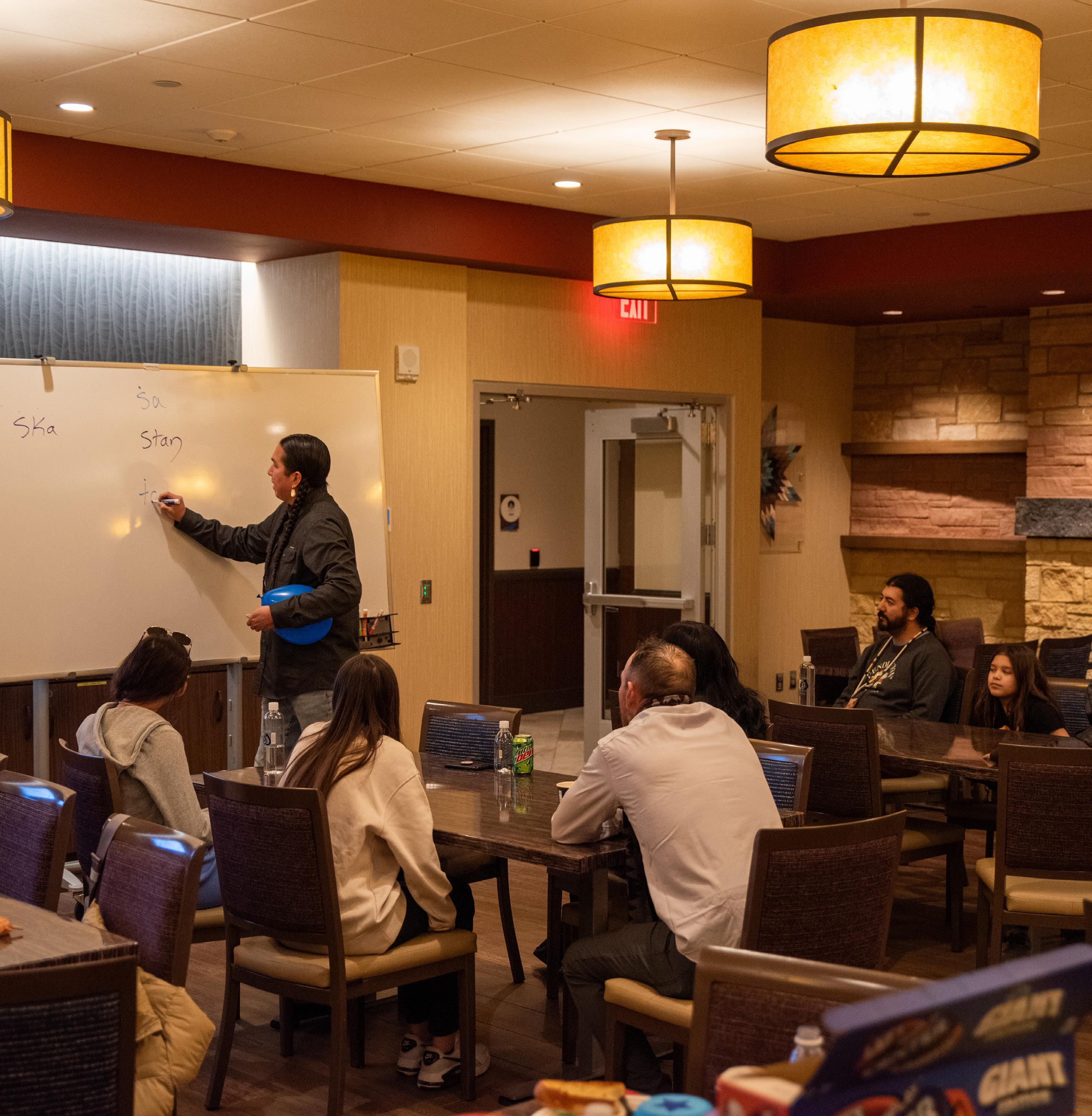
Knowing students would benefit from more experienced Dakota speakers, he reached out to several people for help, including the Dakota Iapi Típi team, who responded

enthusiastically when asked for support. The team visited the class several times a month throughout the school year to lead lessons and offer guest presentations. The SMSC also provided original printed posters and reference materials to enrich the classroom experience.
“It’s been tremendous for me personally. And the students—they love it,” De Leon said of the SMSC’s support. “They’re always asking when the language team will be back.”
Over the course of the year, students began with foundational vocabulary—colors, numbers, animals, verbs, and basic phrases. But they quickly outpaced the lesson plans. By spring, they were speaking full sentences in Dakota.
Of the 22 students, 18 are Native American, including 13 from the SMSC. The class has complemented the tribe’s broader efforts to get its youth involved in the language. “For the SMSC, it was important that the tribe was involved knowing that a lot of our students are going there. We want to be a support system for them,” Vig said.
During the school’s first-ever student-led powwow in March, De Leon honored the Dakota Iapi Típi team and others who supported him throughout the year with a handmade quilt and other gifts. “I was trying to, as much as I can, show my appreciation to the SMSC for the help they have given. I truly am thankful,” De Leon said.
Looking ahead to the 2025–26 school year, the district plans to expand its offerings, according to De Leon, adding another Dakota Language I class and launching Dakota Language II.
PROMOTING THE LANGUAGE
As momentum builds in both classrooms and across the SMSC, the Dakota Iapi Típi continues to broaden its reach with new tools and events.
In 2021, the SMSC’s Dakota language teachers created a calendar with the names, dates, and cultural significance of traditional moons of the Mdewakanton Dakota people. The calendar, which heavily features the Dakota language, showcases the time frames and significance of the seasonal moons that the Mdewakanton Dakota observe throughout the year. It has been distributed to the public every year as a way to increase the understanding of Native people and traditional ways of life. The digital version was enhanced in 2025 to include audio for every Dakota word in the calendar.
Another successful endeavor was launched in 2022 when the SMSC’s Dakota language team started its annual Dakota Iapi Akiċiyapi (Dakota Language Bowl). Though it has only been around for three years, it has quickly become a popular and impactful springtime competition among Dakota language speakers of all skill levels and ages. Each year, the event draws teams from across the Upper Midwest and Canada, which challenges participants to showcase their Dakota language proficiency through a variety of rounds that tests speaking, listening comprehension, and overall knowledge. It also provides speakers an opportunity to engage in the language with others.
The 2025 language bowl set a record for participation, which included six teams made up of students from De Leon’s high school class—a vivid example of the continuing trickle-down effect of the Voices of Our Ancestors program.
With more than 100 speakers at the competition, ranging from the first-language Dakota speakers who judged the competition to the elementary students who participated for the first time, Vig reflected on the importance of the day. “It was the culmination of 40 years revitalizing the language.”
With each new speaker, the Dakota language grows stronger, carrying the strength of a people determined to reclaim their voice. W
VISIT HOCOKATATI.ORG TO WATCH VIDEOS THAT HIGHLIGHT DAKOTA LANGUAGE AND TRADITIONAL LIFEWAYS.
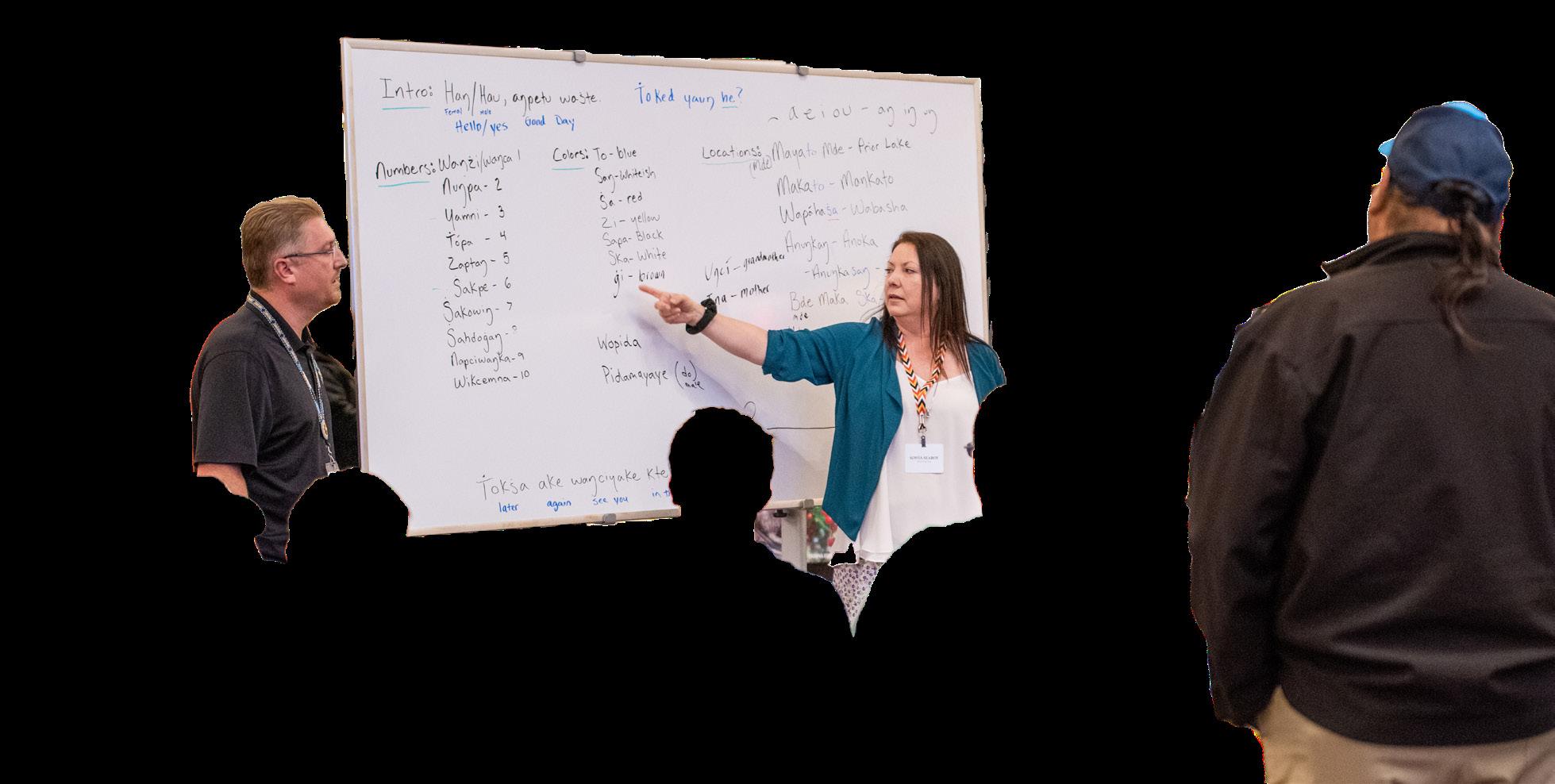
Being outside—among the trees, near the water, and close to wildlife—quiets our minds and allows our perspectives to gently shift. Nature reconnects us to what truly matters: balance, beauty, and belonging. As we slow down to listen, observe, and breathe, we are reminded that being outdoors is good for our health—and essential for our spirit.
For more than 25 years, the Shakopee Mdewakanton Sioux Community (SMSC) Natural Resources Department has honored and protected the relationship between the people and the land. Grounded in the seven Dakota values of wóohoda (respect), wóokiya (generosity and helping), wówauŋsidaŋ (caring and compassion), wóksape (wisdom), wócekiya (prayer), wówahbadaŋ (humility), and wówicaka (honesty and truth), the department works every day to restore, protect, and preserve the natural world—for the community today and for generations to come.
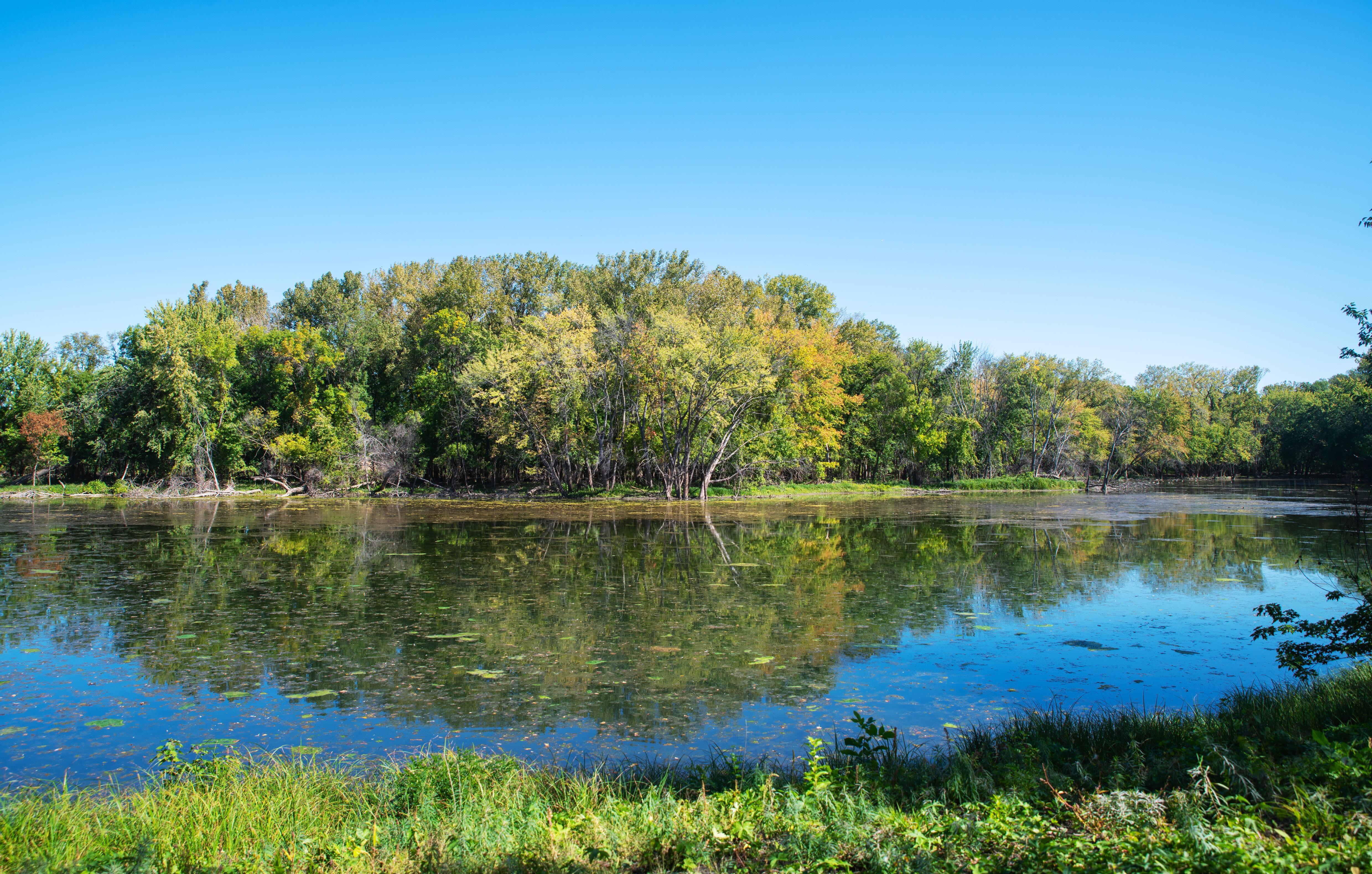
THE SMSC’S LEGACY OF ENVIRONMENTAL STEWARDSHIP
Good Stewards of the Earth
BY ERIN E. BELANGER

“Over the past 25 years, it’s been an honor to help grow the Natural Resources program into what it is today,” said Director of Natural Resources Scott Walz. “We've worked hard to restore the land, protect our waterways, and adapt practices for being good stewards of the earth.”
Protecting Habitats, Restoring Balance
The Natural Resources Department’s efforts begin—and often end—with the land. Over the years, the department has actively restored and maintained a variety of diverse ecosystems across SMSC lands, including prairies, wetlands, forests, and woodlands. Through thoughtful and strategic land management practices rooted in both science and tradition, the team works to heal damaged landscapes, promote native plant communities, and create healthier environments for wildlife.
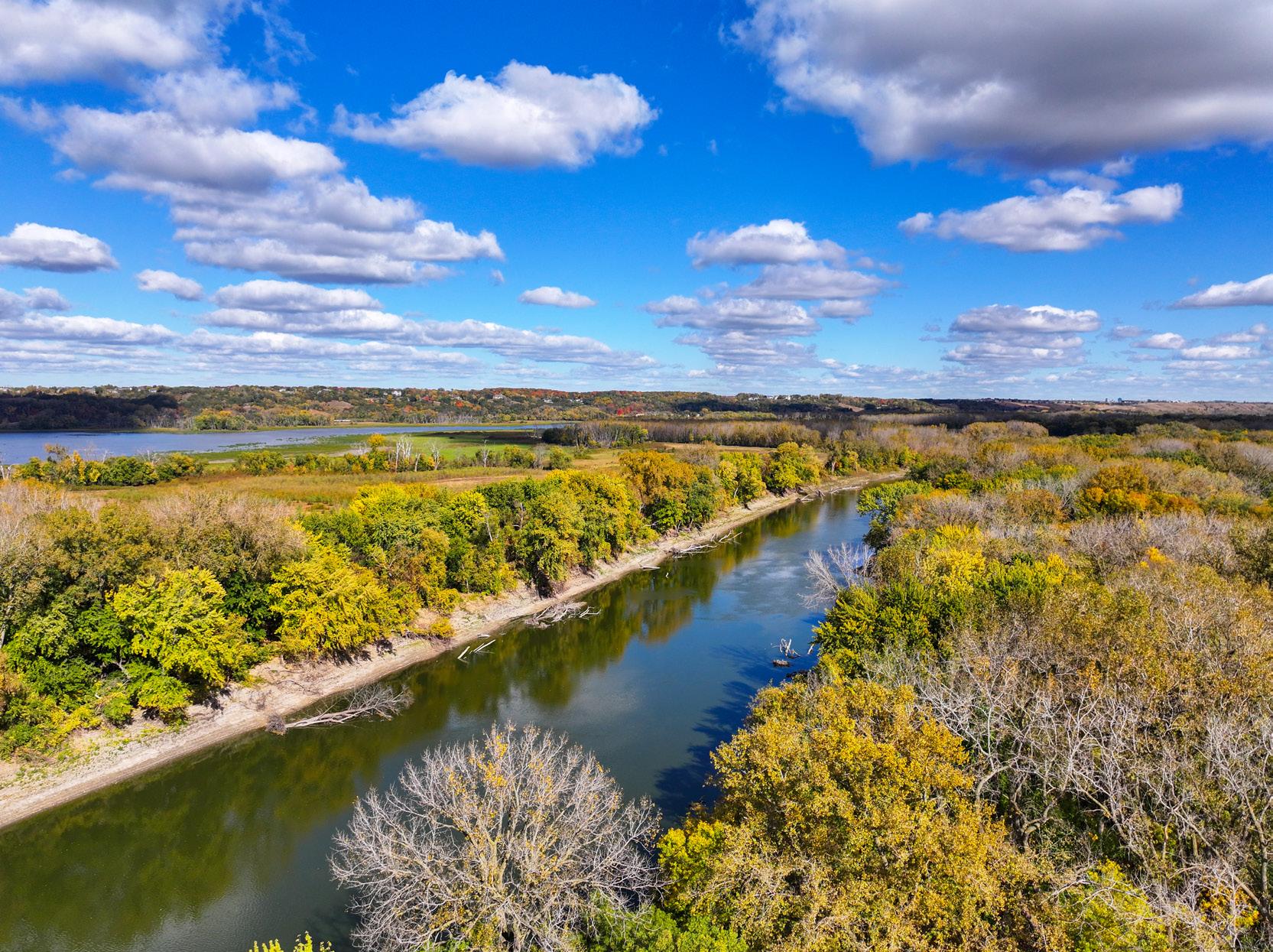


Prescribed Burns
Among these practices is the use of prescribed fire— carefully planned, controlled burns that replicate the natural role of fire in the ecosystem. Long before European colonization, Dakota and other Indigenous peoples used fire with the purpose of clearing land for agriculture, improving forage for bison and other game, reducing brush for easier travel, and to stimulate growth of vital plants and seeds.
Today, the SMSC uses this traditional land management tool during early spring and late fall, when weather conditions are most favorable. Ferin Davis Anderson, manager of natural resources explained, “Fire helps native plants in prairies, oak savannas, and wetlands stay healthy and vigorous. It’s also a great tool to reduce weeds and other invasive woody species that outcompete native plants for resources.”
By integrating ecological science with cultural wisdom, prescribed burns at the SMSC restore natural balance and serve as an act of healing stewardship for the land.
Wildlife and Habitat Management
Through careful stewardship, the SMSC supports a rich array of wildlife. Bird and wildlife species surveys offer insights into the health of the ecosystem and guide ongoing habitat efforts.
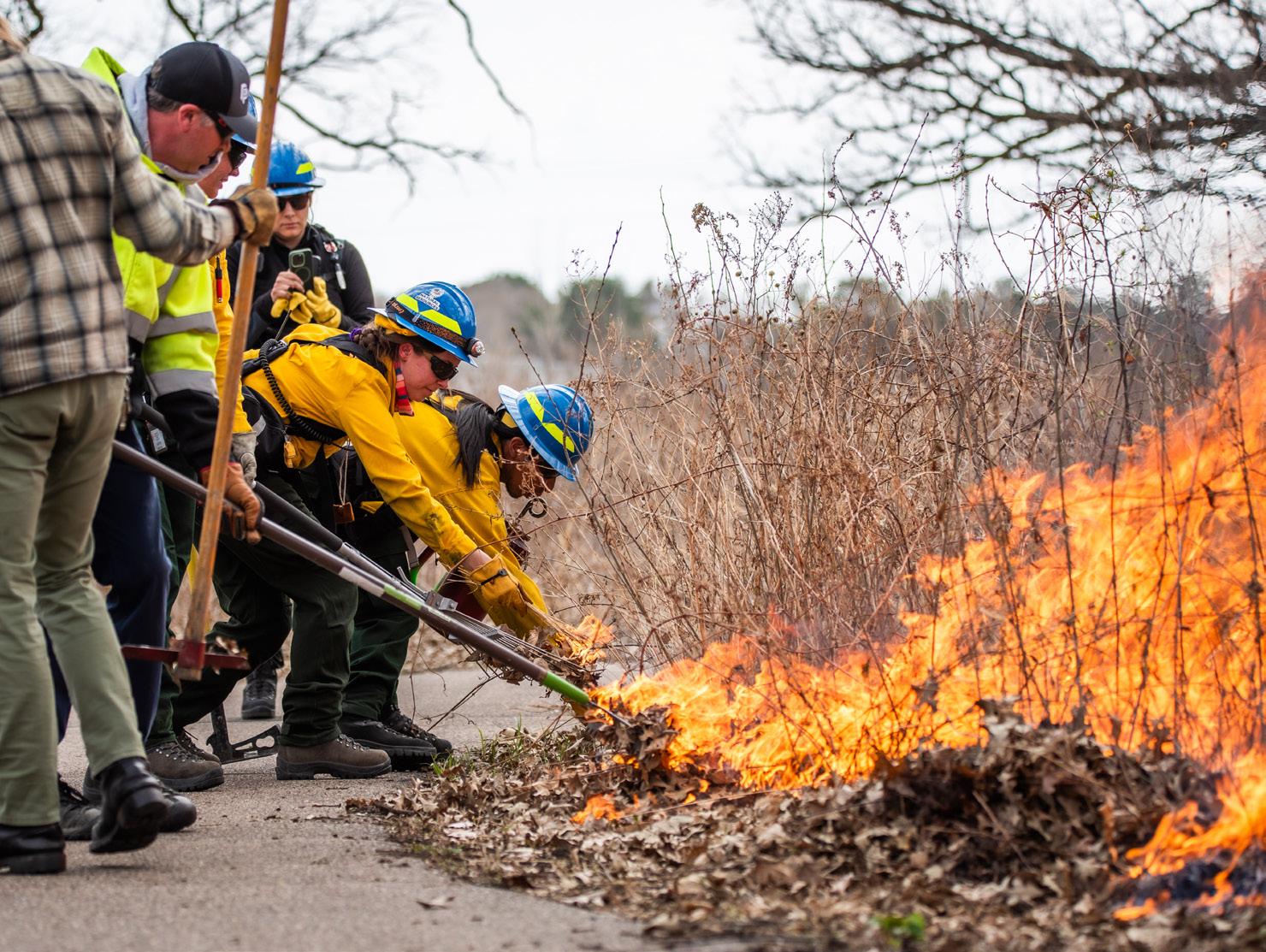
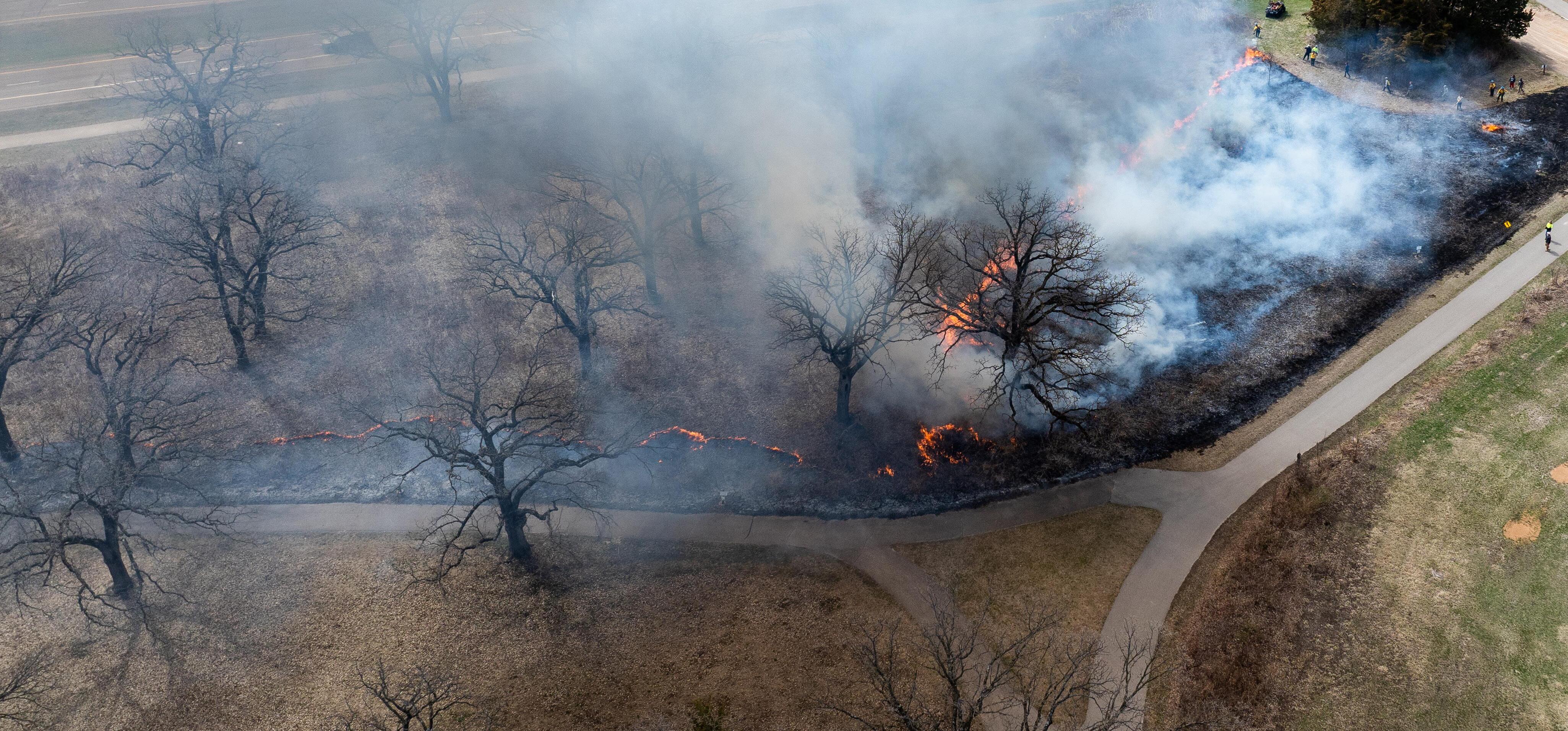

“Conducting bird surveys is not just about counting species—it’s about understanding the health of our ecosystems,” said Supervisor of Natural Resources Rachel Crownhart. “Birds are indicators of environmental change, so when we protect their habitats, we’re also protecting our air, water, and future.”
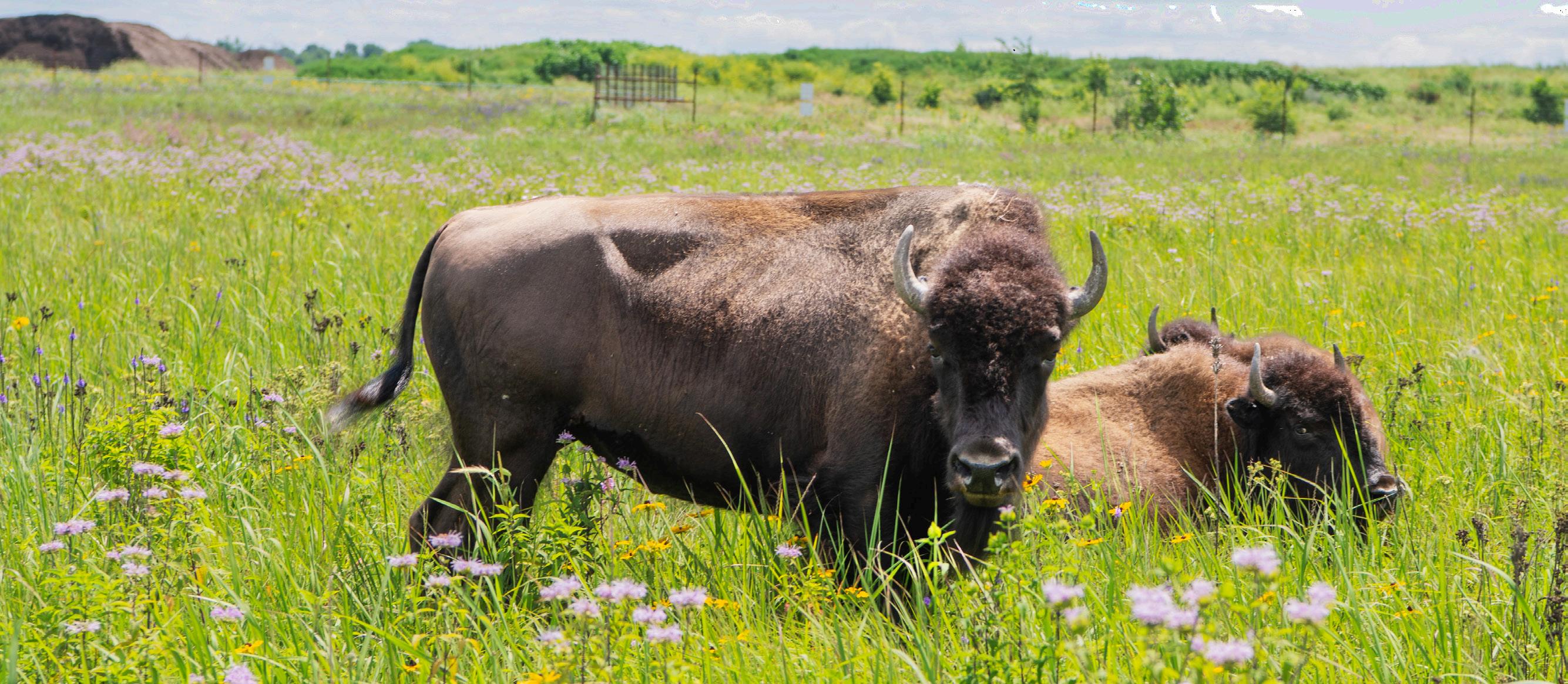




Reintroduction of Bison
One of the most symbolic and impactful habitat projects has been the reintroduction of a bison herd, or pteoptaye, to SMSC tribal lands. Once nearly eliminated, the bison population is an essential part of the prairie ecosystem and central to Dakota culture. “The return of the bison restores ecological function and spiritual connection to our homelands,” said SMSC member and Bison Technician Sam Crofut. “The bison help regenerate the prairie.”
Crofut and other natural resources staff carefully manage the herd, which provides a refuge for native grassland and migrating bird species. This contributes to a healthier ecosystem and a deeper understanding of the prairie’s biodiversity, while serving as a reminder for the community of its enduring relationship with the land—a living embodiment of resilience and renewal.
Water Management
Water is another vital cornerstone of the SMSC’s environmental mission. The Natural Resources Department carefully monitors lakes, streams, and wetlands to ensure clean, healthy water systems within the community and beyond. Through restoration projects, natural shoreline buffers, and innovative stormwater management strategies, the team works to protect water quality for the long term.
“Water is life—and caring for it is one of our greatest responsibilities,” said Jennie Sirota, supervisor of water resources. “Every stream, wetland, and lake tells a story. Through monitoring, restoration, and thoughtful stewardship, we’re protecting those stories for future generations while honoring our
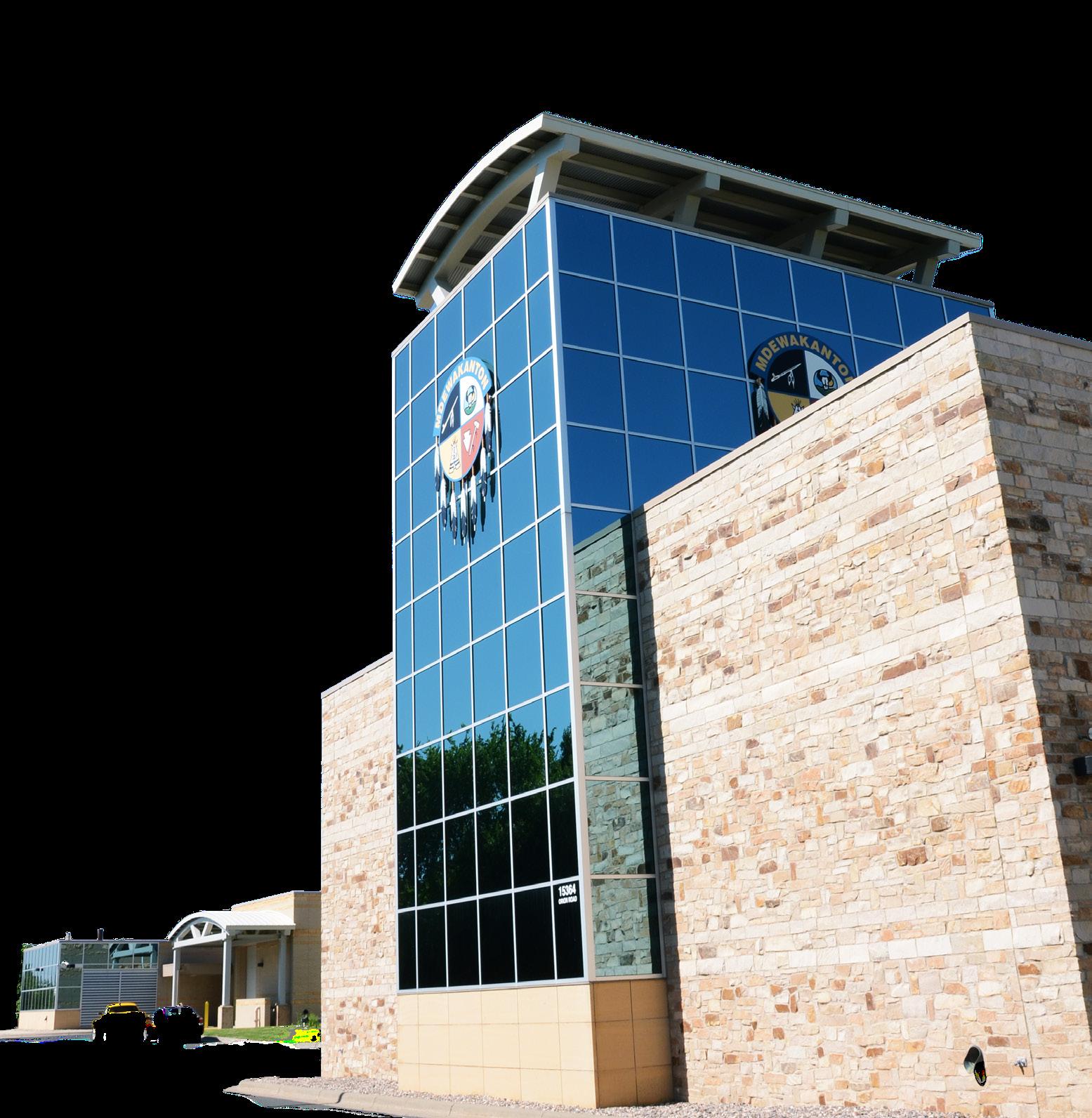
Sustainability in Action
The SMSC’s commitment to environmental stewardship extends beyond conservation. Sustainability is woven into the infrastructure of the community—from renewable energy to resource-efficient buildings and transportation.
Through its NativeGreen initiative, the SMSC promotes sustainable living across the region. This includes community-wide efforts in clean energy, conservation, and environmental education—all guided by the balance of traditional Dakota knowledge and modern innovation.
Some of the tribe’s most visible sustainability projects include:





SOLAR ENERGY SYSTEMS : This system generates renewable power for tribal operations.
GREEN ROOFS : Two major facilities feature a total of 63,000 square feet of living rooftops that reduce stormwater runoff, moderate building temperature, and provide pollinator habitats.
ELECTRIC VEHICLES (EVS) : The SMSC has installed EV charging stations for team members and guests throughout the reservation. The tribe also has a growing EV fleet, which reduces emissions and models clean transportation.
HYDRONICS PLANT : The SMSC has installed a hydronics plant and system that utilizes heated and chilled water to heat and cool SMSC Gaming Enterprise buildings, drastically lowering fossil fuel use.
EARTH WEEK EXTRAVAGANZA : For 25 years, the Natural Resources Department has hosted this annual event featuring fun, hands-on activities and educational programs for all ages—encouraging the community to learn about environmental stewardship and discover everyday ways to care for the earth.
“These projects reflect the tribe’s integrated approach—balancing tradition, education, and technology to build a more sustainable future,” said Operations Administrator Steve Albrecht. “We’re always looking for new ways to care for the land through the lens of the Dakota values—whether it’s through clean energy, green infrastructure, conservation practices, or forward-thinking.”

Looking to the Future
As the SMSC celebrates 25 years of natural resource leadership, the focus is firmly fi xed on the future. The community is actively exploring a bold vision of carbon neutrality, aiming to eliminate its net greenhouse gas emissions by the year 2035. This long-term planning showcases the tribe’s enduring commitment to environmental leadership—one that stretches far beyond short-term goals and embraces generational responsibility. “We have a dedicated team that understands it’s our responsibility to protect the earth, for today and well into the future,” said Albrecht.
A Legacy of Environmental Stewardship
As the Natural Resources Department marks 25 years of progress, it remains at the heart of the SMSC’s vision for a healthier, greener, and more sustainable world.
From educational sustainability programs to large-scale restoration and renewable energy efforts, the SMSC Natural Resources Department has grown into a dynamic leader in environmental stewardship. Its work reflects the tribe’s deep-rooted values and its mission to protect the land not only for today but for generations to come. W

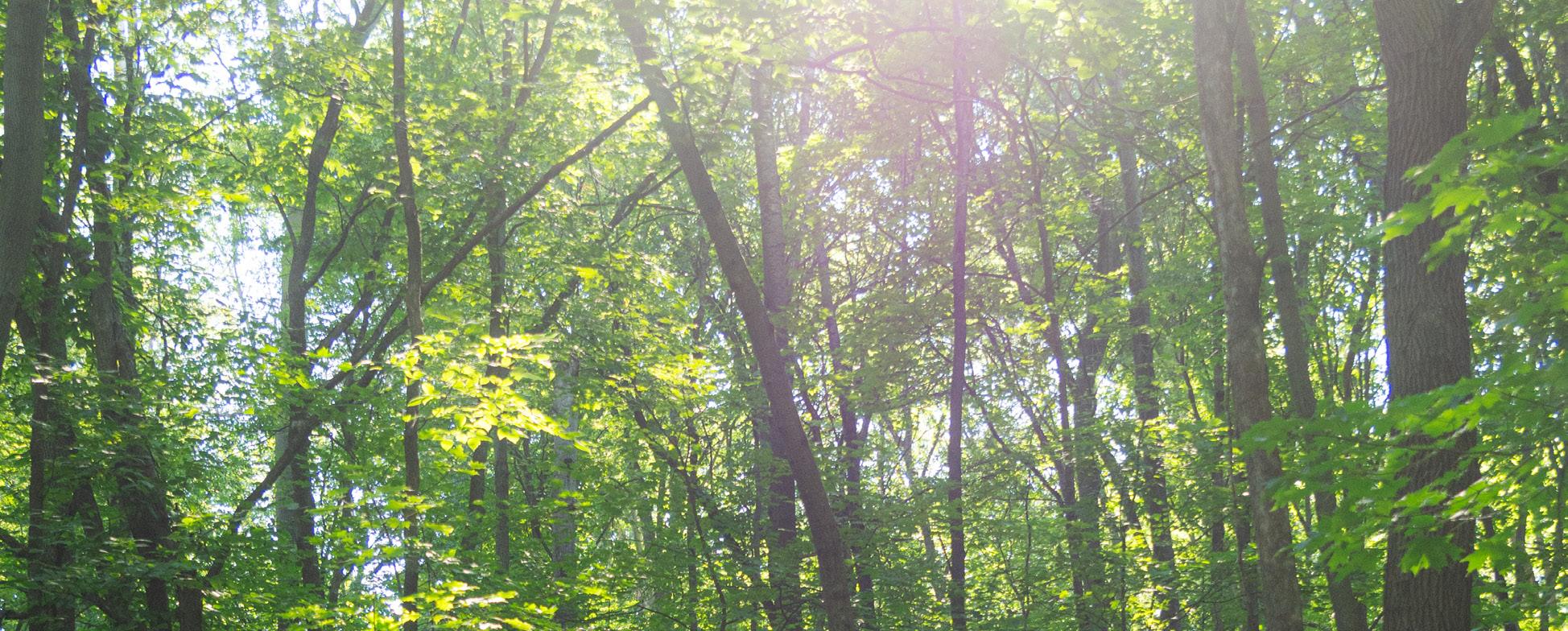
Learn more about the SMSC's commitment to environmental stewardship at smscnativegreen.org or scan the QR code.
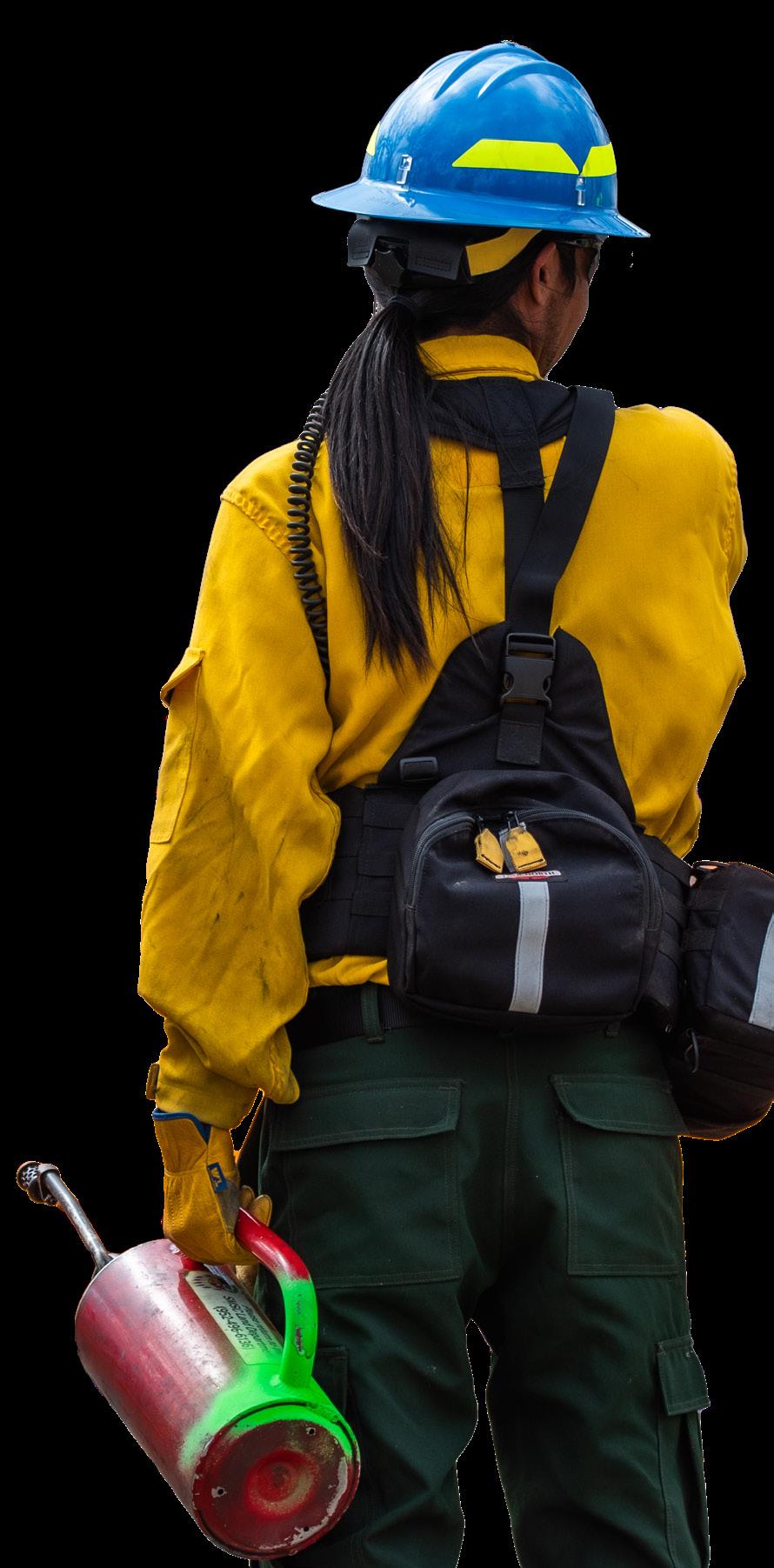
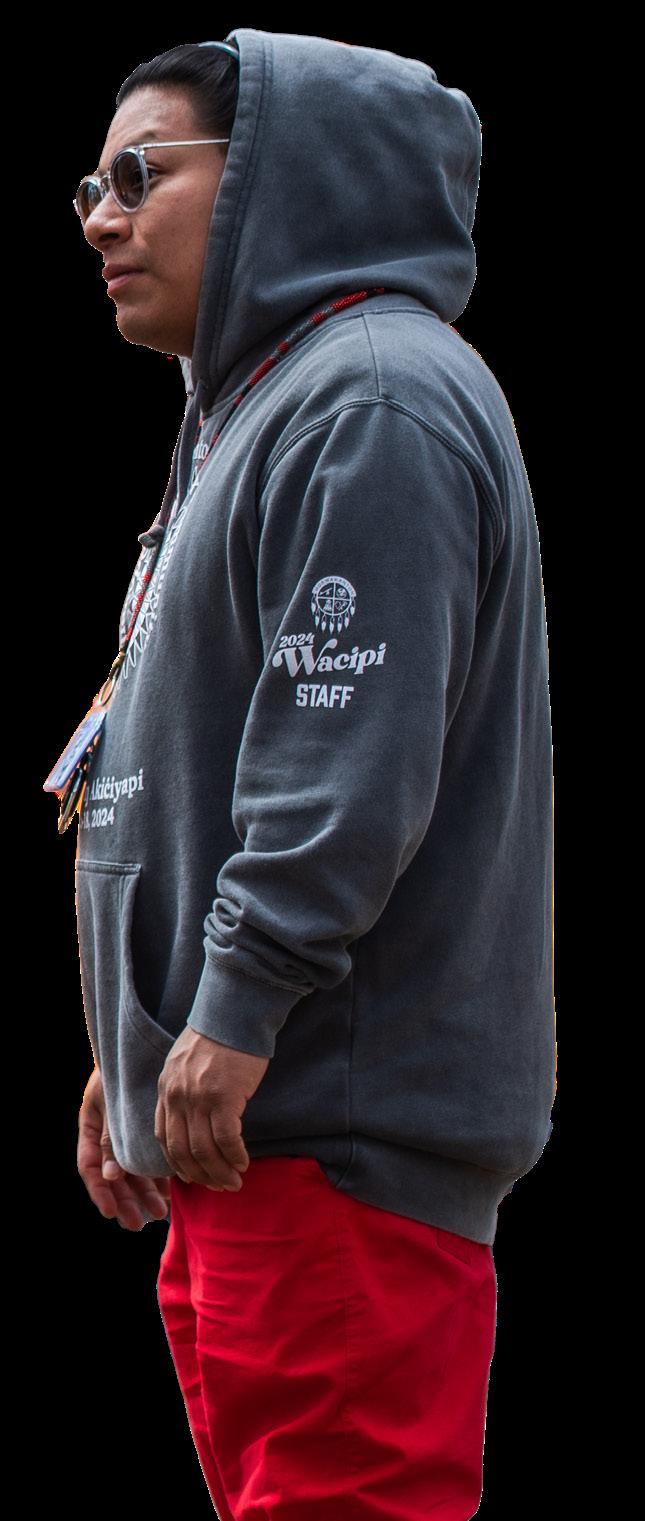
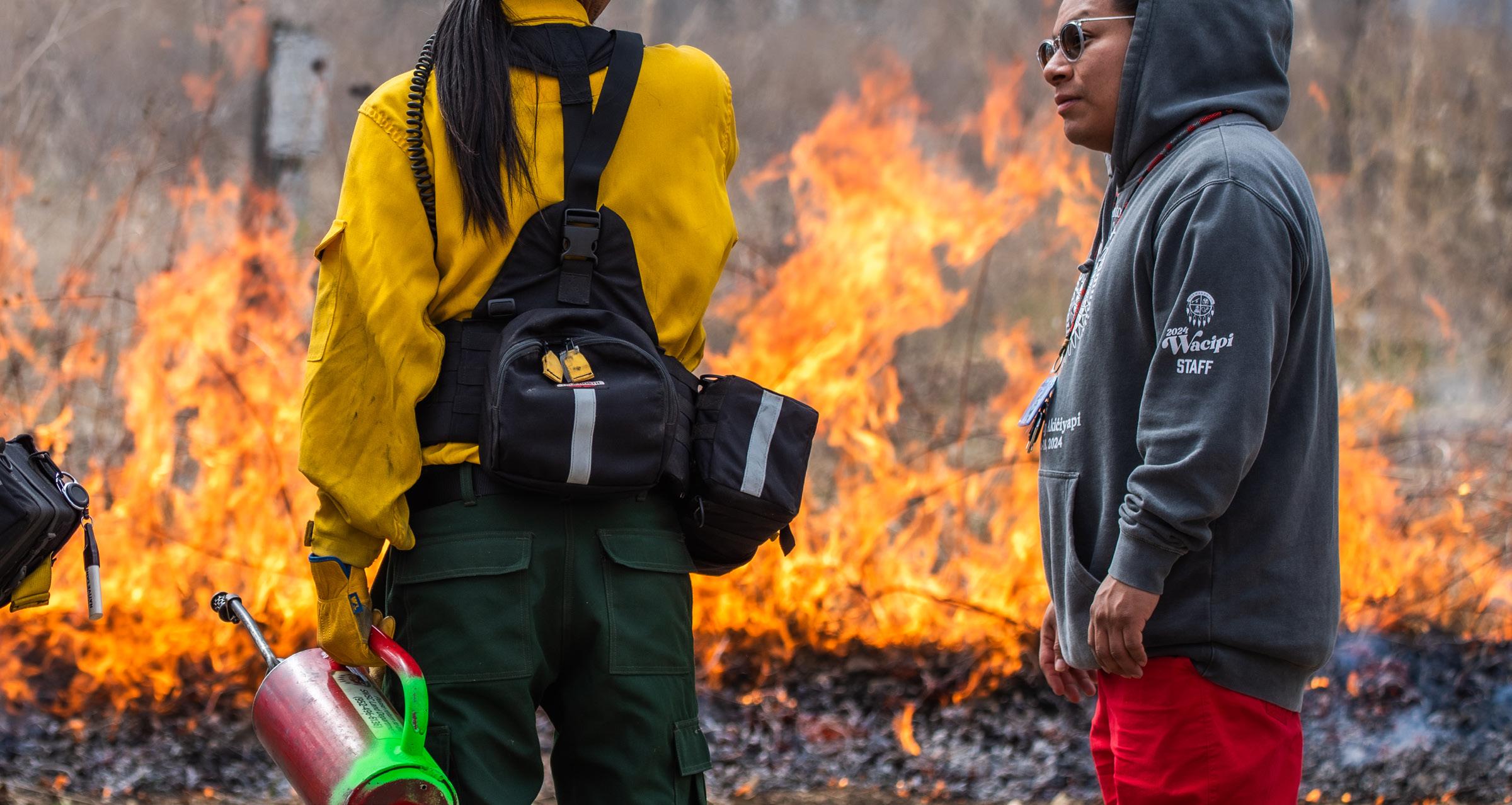
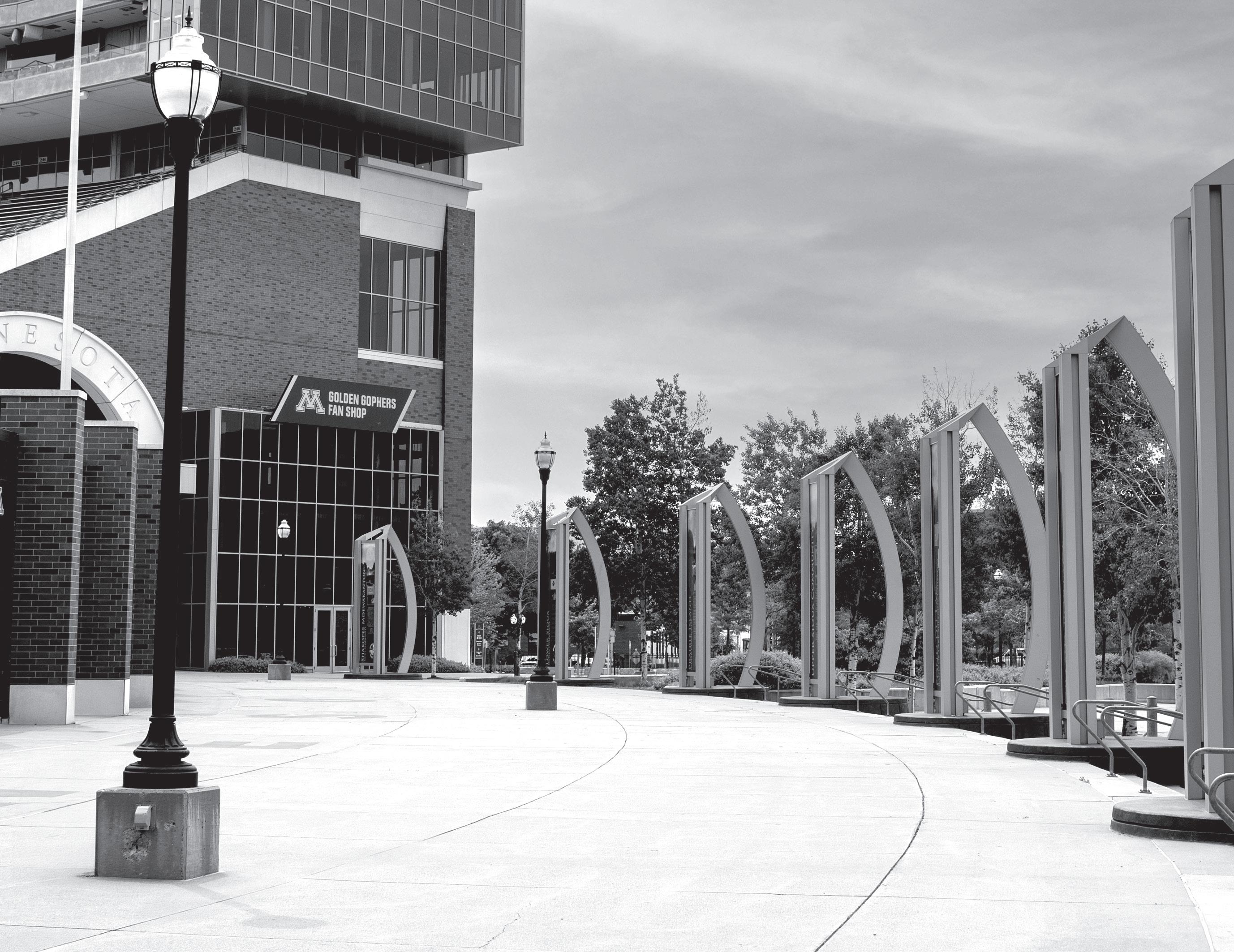
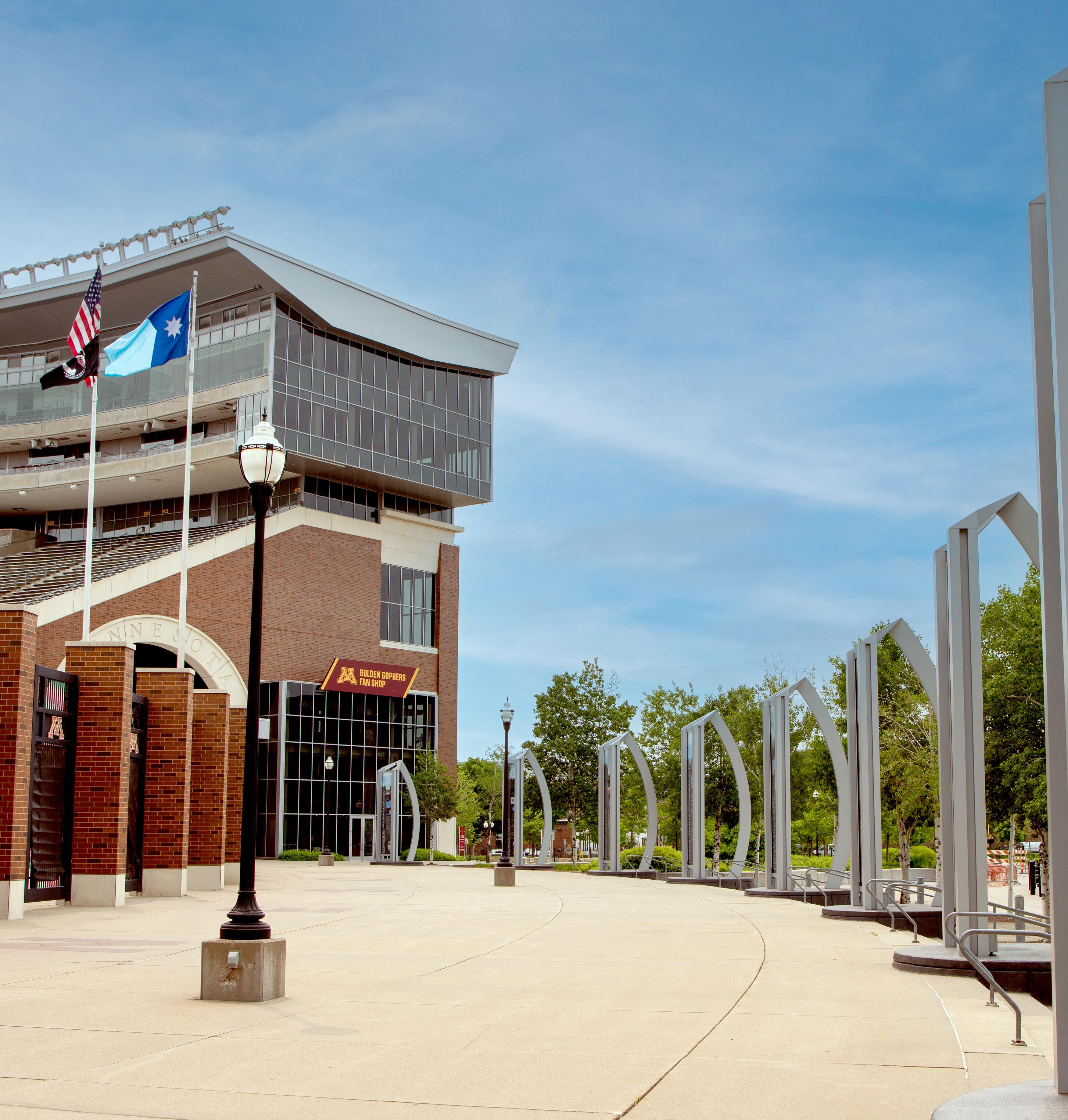

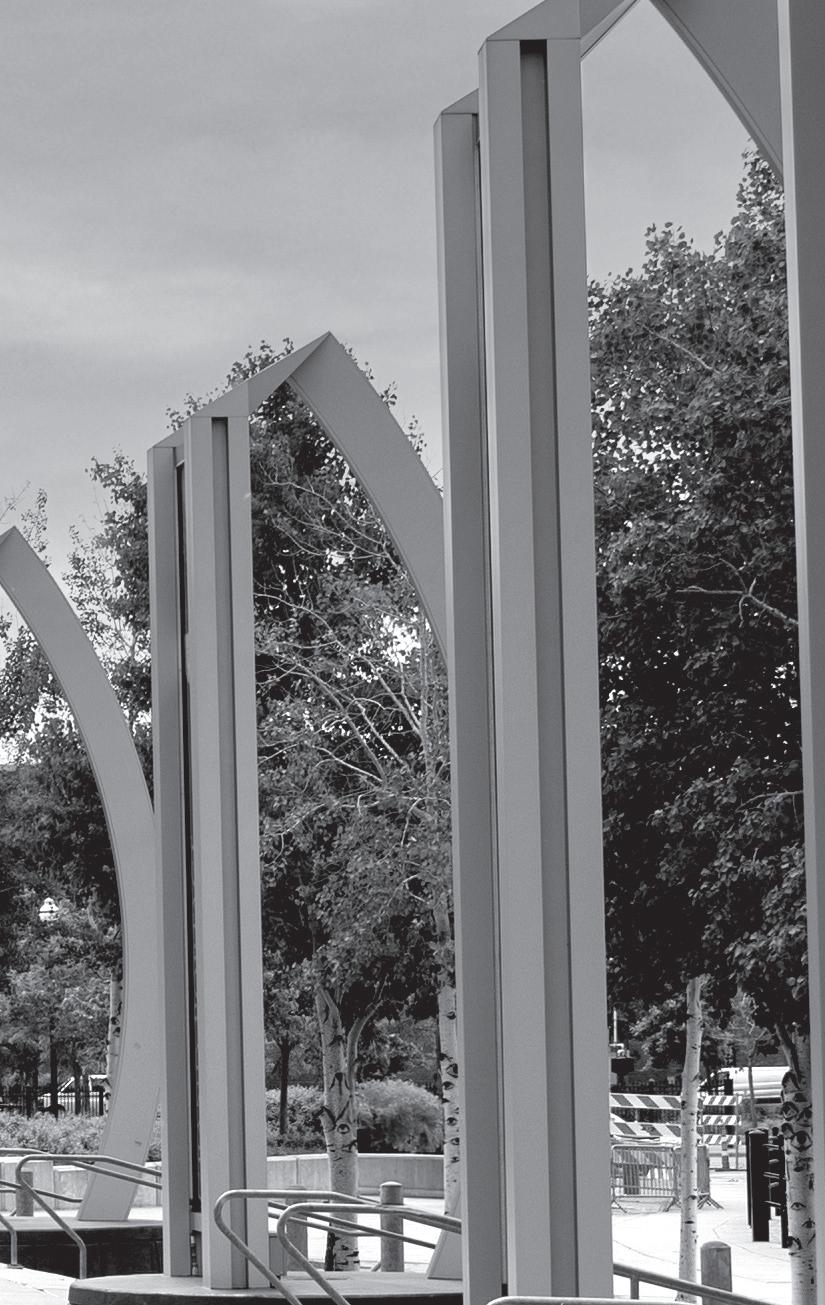
Tribal Nations Plaza Marks
15 Years of Tribe-University Collaboration
BY GRACE ROSE

It has been 15 years since Tribal Nations Plaza opened on the University of Minnesota campus in Minneapolis. The plaza, which encompasses the main western entrance to Huntington Bank Stadium where the University’s Golden Gophers play for thousands of fans, is named in honor of the 11 tribal nations in Minnesota.
Each tribal nation is represented by a soaring, 18foot skymarker, featuring glass panels that display flags, maps, images, and educational facts from the communities they represent.
Each of Minnesota’s 11 tribes are represented by 18-foot glass panels, called skymarkers, that display information about the tribal nation’s history, culture, and government.
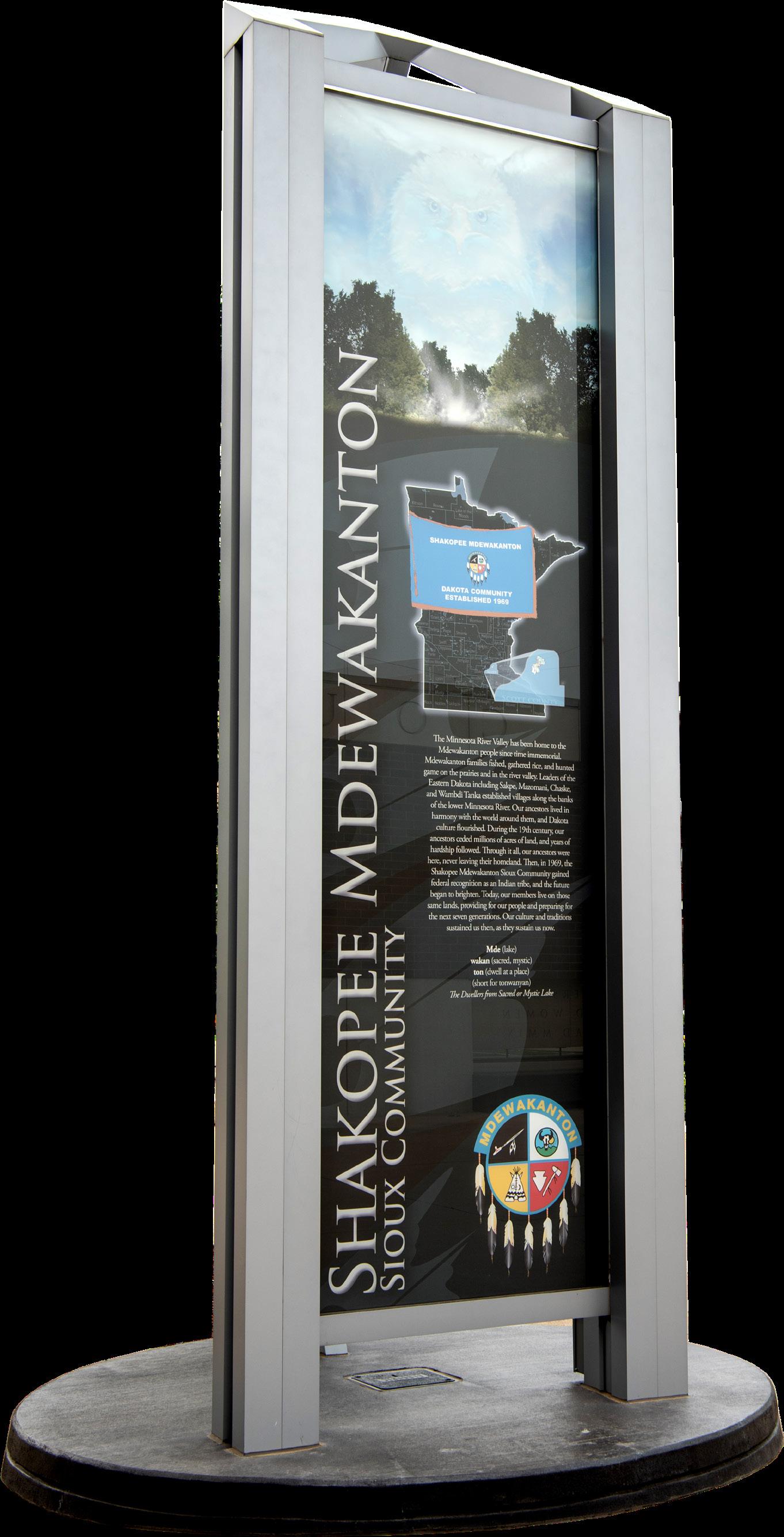
The plaza was made possible thanks to a $12 million donation from the SMSC—the largest single private gift Gopher Athletics had ever received at the time. “We feel it is very important to tell the story of American Indians in Minnesota through this plaza,” said then-SMSC Chairman Stanley R. Crooks.
The SMSC’s Business Council and other tribal members led the plaza development process, working with the University and other tribal nations for many months on the design and content.
“This plaza is an opportunity to educate people about the tribes in Minnesota,” said SMSC Secretary/
Treasurer Ashley J. Cornforth.
“Native people and reservations are located across our state as well as right here in the Twin Cities.
The plaza is a permanent space to remind people of that fact, and that Native people and tribes are not just historical but make ongoing contributions to Minnesota.”
Tribal Nations Plaza has seen millions of visitors over the past 15 years. It recently needed some repairs to address wear and tear. Last summer, the University made improvements to the plaza ahead of the fall football season. This included repairing the bases of each skymarker, which had become weathered over the years.
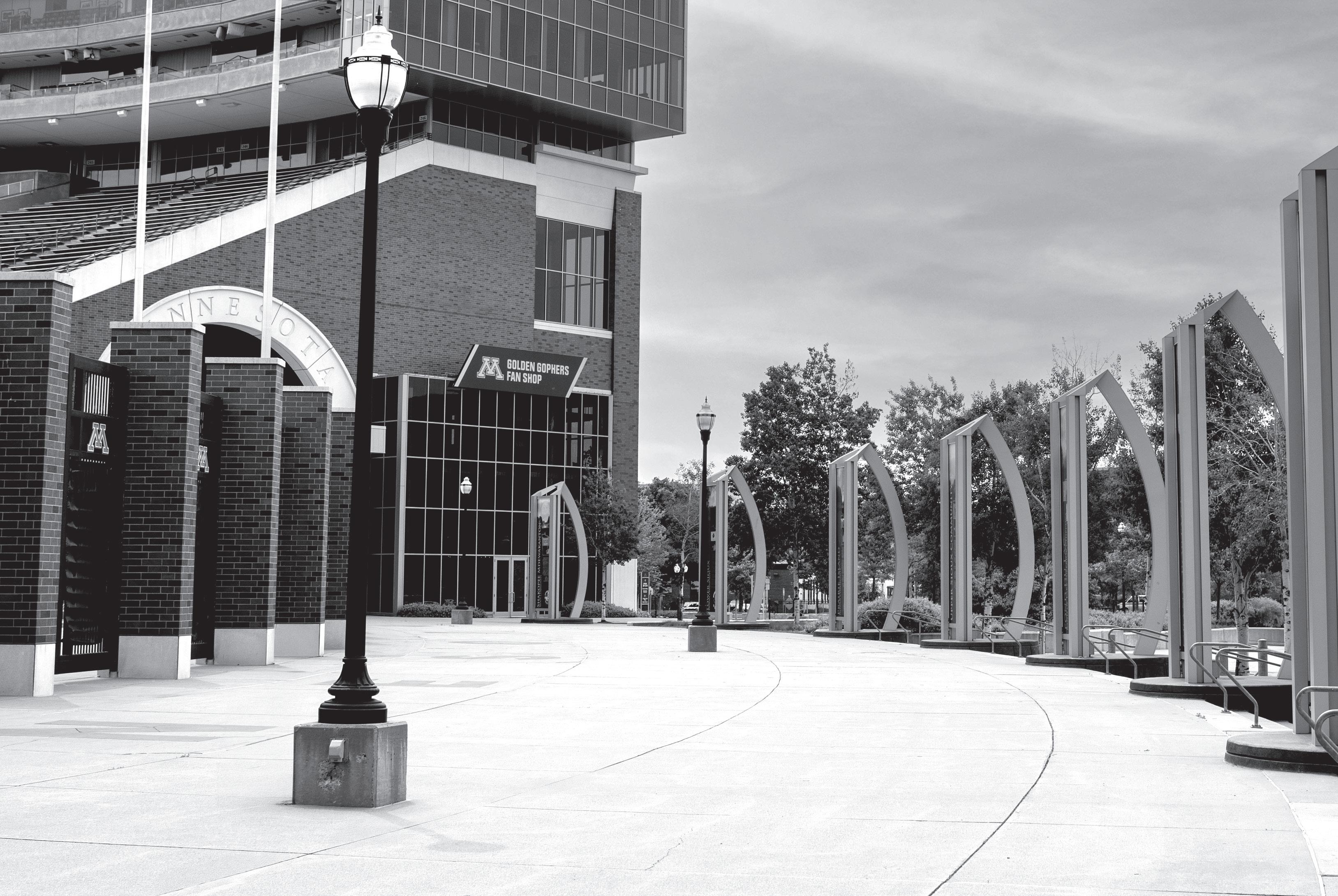

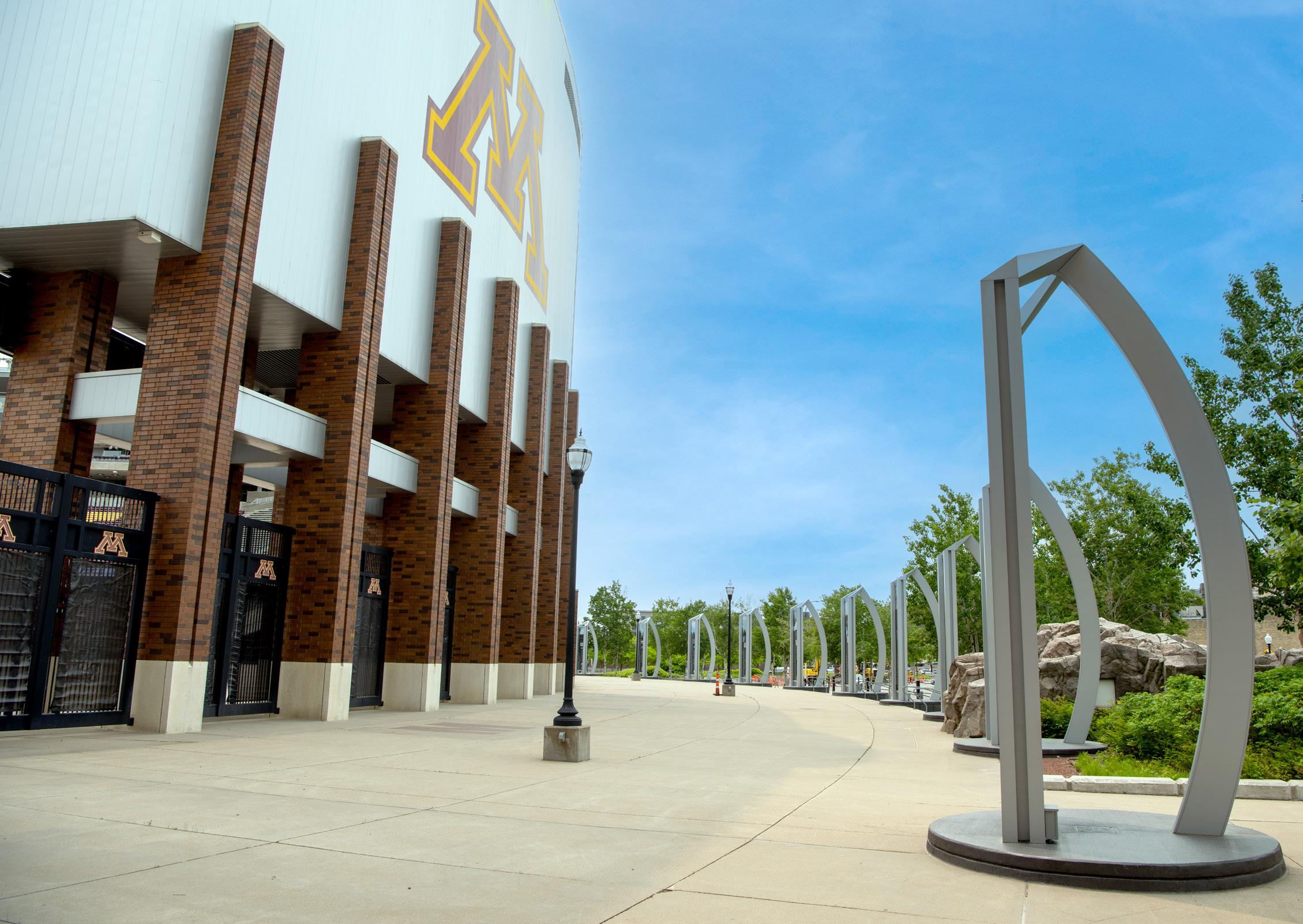
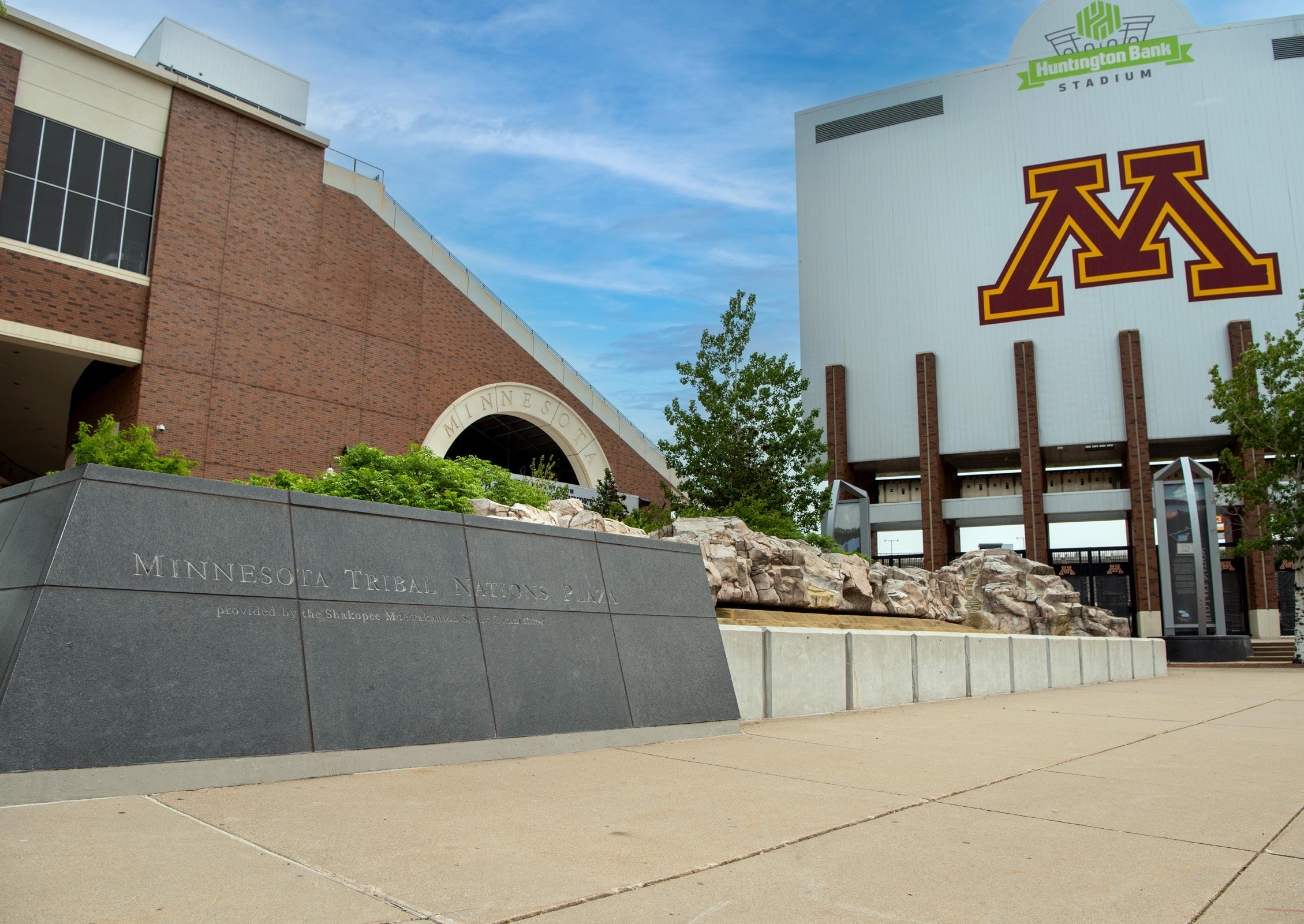


The University also added LED lighting strips on the skymarkers to provide additional lighting and draw more attention to the tribal information.
“Our campus sits on the traditional homeland of Indigenous peoples. Our University has focused a lot of attention in recent years on how we can acknowledge this history and increase access for Native students, staff, faculty and community members,” said Travis Smith, senior vice present for central programs at the University of Minnesota Foundation.
“Tribal Nations Plaza has helped with raising greater awareness for tribes among our students and across the state. Each year, hundreds of thousands of
people walk through the plaza and learn more about Native people. We are very grateful to the SMSC for its generous gift and drive to see this happen.”
SUPPORTING NATIVE STUDENTS
In addition to funding Tribal Nations Plaza, the SMSC made another gift to the University in 2008. The tribe gave an additional $2.5 million to establish the SMSC Scholarship. Leveraging a former university matching program, this impact was then doubled to $5 million.
The SMSC Scholarship program supports talented Native students with demonstrated financial need so they can attend the University. SMSC tribal
members volunteer their time to serve on the SMSC Scholarship Selection Committee to help review applications and accept new scholarship recipients.
“As an SMSC scholarship recipient, I’ve been given more freedom to pursue my goals,” shared Mica Standing Soldier, a 2017 University of Minnesota graduate from the Oglala Sioux Tribe in South Dakota. “Without financial help, I wouldn’t be able to study and grow as a student and leader. Everyone wants to feel a sense of financial stability, and this support has given me peace of mind and the confidence to continue my journey.”


Over the past 15 years, more than 200 students have received this scholarship, representing hundreds of tribal nations from across the United States. The tribe donated an additional $500,000 to the successful program in 2017.
ADVANCING RESEARCH
Extreme poverty and the loss of traditional foods have caused many Native Americans to suffer from inadequate diets and have led to widespread, chronic health problems. To address this crisis, the SMSC created Seeds of Native Health in 2015. The five-year, $11 million philanthropic campaign focused on improving Native nutrition through advocacy, grant-making, and research.
There are talented individuals working across Indian Country to address the dietary health issues. Both the SMSC and the University recognized the need to bring these thought leaders together. As a result, the tribe’s Seeds of Native Health campaign and the University of Minnesota’s Healthy Foods, Healthy Lives Institute partnered together to create an annual Conference on Native American Nutrition.
This conference series was the only academic conference series in the world devoted solely to the food and nutrition of Indigenous peoples. Each year, the conference focused on the current state of Indigenous and academic scientific knowledge about Native nutrition, dietary health and food science, and identified new areas of work needed.
“I am a practicing dietitian of over 30 years, and no other conference has impacted me or uplifted me as much as this conference,” shared attendee Sarah Mircale, a SNAP-Ed program manager with the Chickasaw Nation. “It is also the only nutrition conference I’ve attended or heard of where Indigenous peoples are as honored as those who conduct academic nutrition research.”
Thanks to the tribe and University’s partnership, the series brought together more than 2,000 tribal officials, researchers, practitioners, funders, and others across six conferences. W
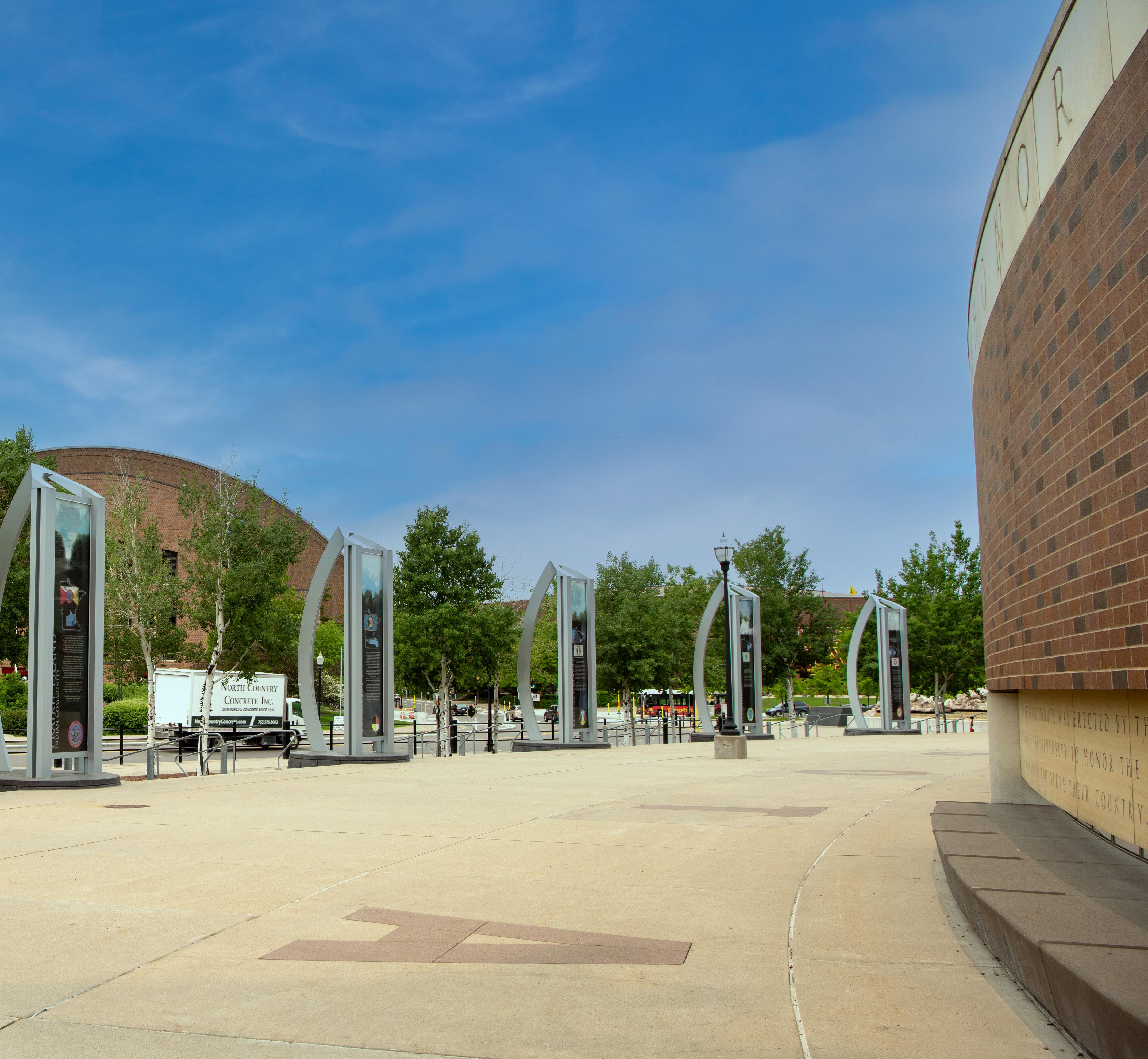
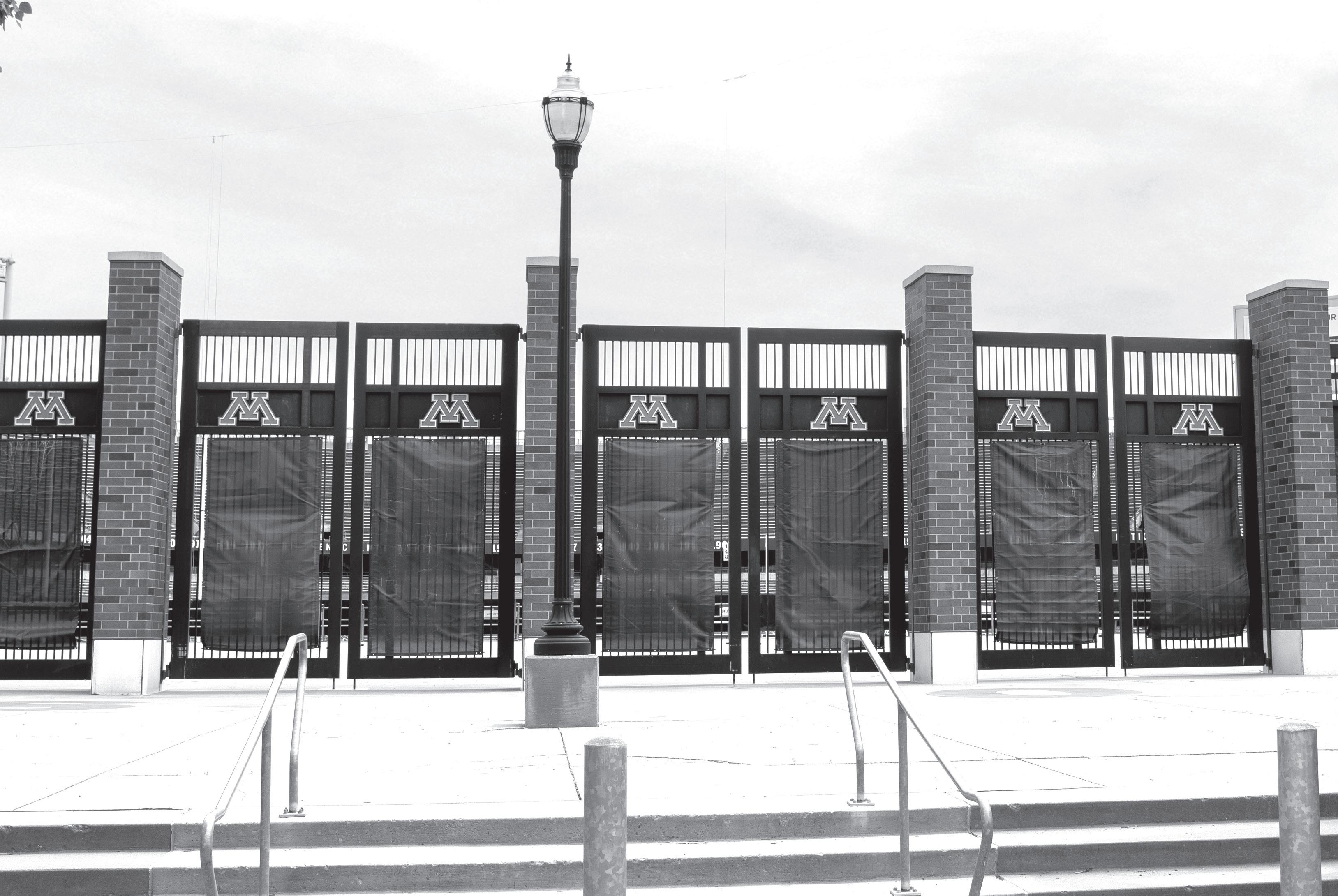
As an SMSC scholarship recipient, I’ve been given more freedom to pursue my goals. Without financial help, I wouldn’t be able to study and grow as a student and leader. Everyone wants to feel a sense of financial stability, and this support has given me peace of mind and the confidence to continue my journey.
Mica Standing Soldier. 2017 University of Minnesota graduate from the Oglala Sioux Tribe in South Dakota


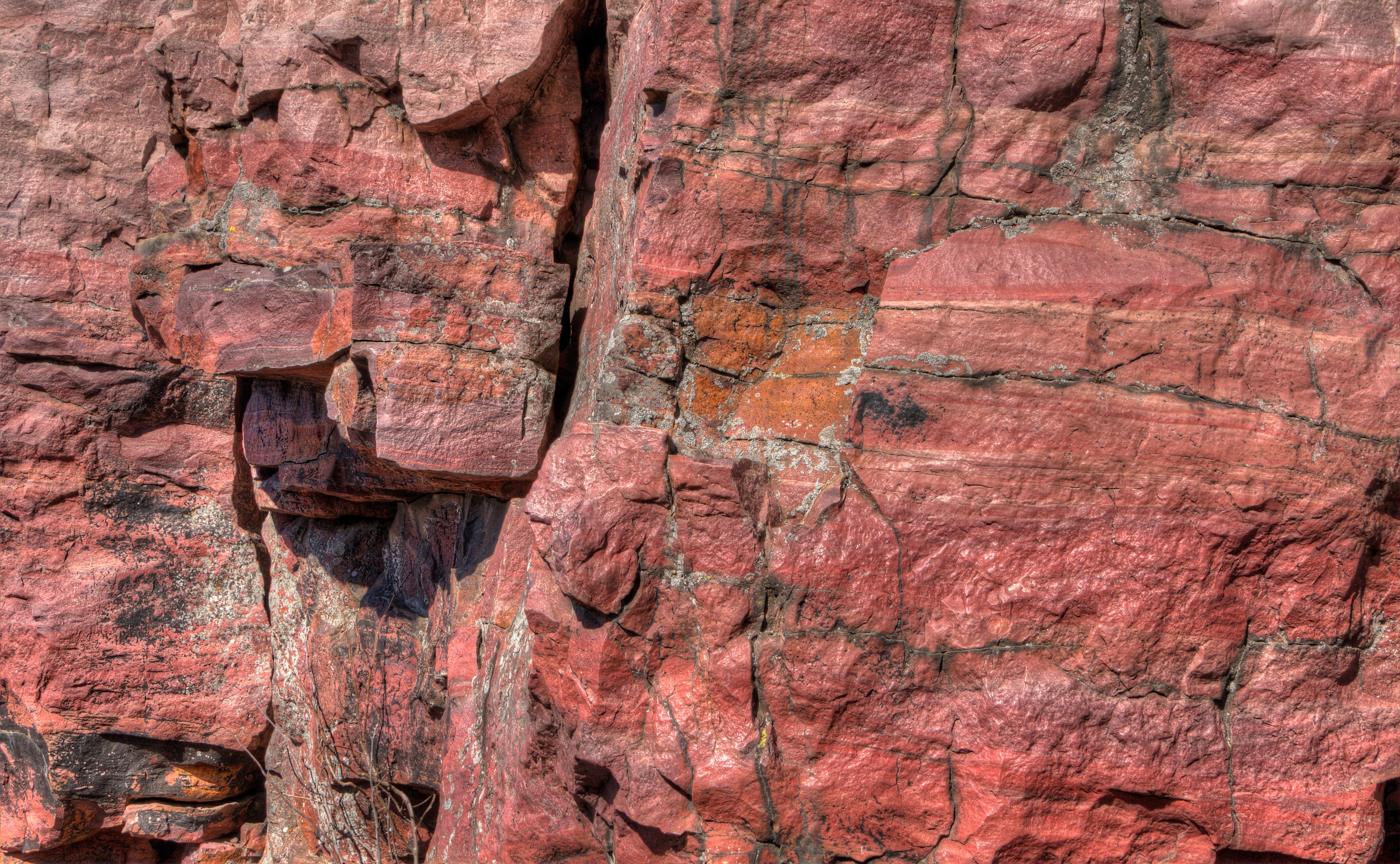
Partners in Preservation
Leading an Effort to Care for Sacred Dakota Pipes
BY JESSE MENDEN

In late October 2023, a vehicle pulled up to the entrance of Hoċokata Ṫi, the cultural center of the Shakopee Mdewakanton Sioux Community (SMSC). Inside were numerous small boxes, each carefully packed for transport. Within each box was a pipe bowl, and accompanying wooden stem, hand-carved from the unique stone quarried at Pipestone National Monument.
This area located in southwestern Minnesota, which is operated by the National Park Service (NPS), is an important cultural and spiritual site for Native people. It is known for its fine-quality pipestone, a durable yet relatively soft stone, which has been quarried by Native people for thousands of years to make pipes and other carvings. Though the monument’s grounds are not the only source of pipestone in North America, this location became the preferred source because of the quality of the stone, which ranges in color from brick red to mottled pink.
Pipes are sacred objects for Native people and are often used in prayer and ceremonies. The pipestone itself is sacred, and the process of quarrying and carving a pipe is deeply ceremonial and has been passed down through generations.
Numerous tribes around the country have oral traditions connecting them to the Pipestone National Monument site and archeologists have found evidence for over 3,000 years of human activity. Today, the monument is officially affiliated with 23 tribal nations—including the SMSC—who consult with the NPS on a government-to-government basis. Native people from across the country carry on the quarrying traditions to this day.
In addition to the quarry, the NPS also operates a visitor center and maintains more than 100,000 objects in its collection. When the park began planning to renovate its visitor center, it needed a location to temporarily store the pipes and other objects. An advisory committee consisting of members from the affiliated tribes met with Pipestone National Monument staff and two goals became immediately clear: the pipes should be cared for according to Dakota values and they should remain on Dakota homelands, keeping them close to where they were carved.
At the suggestion of an SMSC tribal member, the NPS contacted Hoċokata Ṫi for help. While all the affiliated tribes can provide traditional care for the pipes, not all have access to a large space equipped with museumgrade preservation systems. Built in 2019, Hoċokata Ṫi was designed with object care in mind: it features security measures, temperature and humidity controls, and protections against water and fire damage.
With an agreement in place between the NPS and SMSC, the monument’s staff began preparations based on the wishes of the advisory committee. In advance of moving the pipes to Hoċokata Ṫi, NPS staff was trained on cultural protocols, and each pipe was packed individually with prayer ties and offerings, according to Dakota traditions. Today, these sacred objects remain safe within Dakota homelands at Hoċokata Ṫi, preserving the connection to the land until returned to Pipestone National Monument.
Although this partnership between the SMSC and NPS may appear straightforward, some see it as a significant shift in how federal agencies and tribal nations collaborate. Historically, agencies like the NPS have cared for Native collections without tribal input about display methods or care.
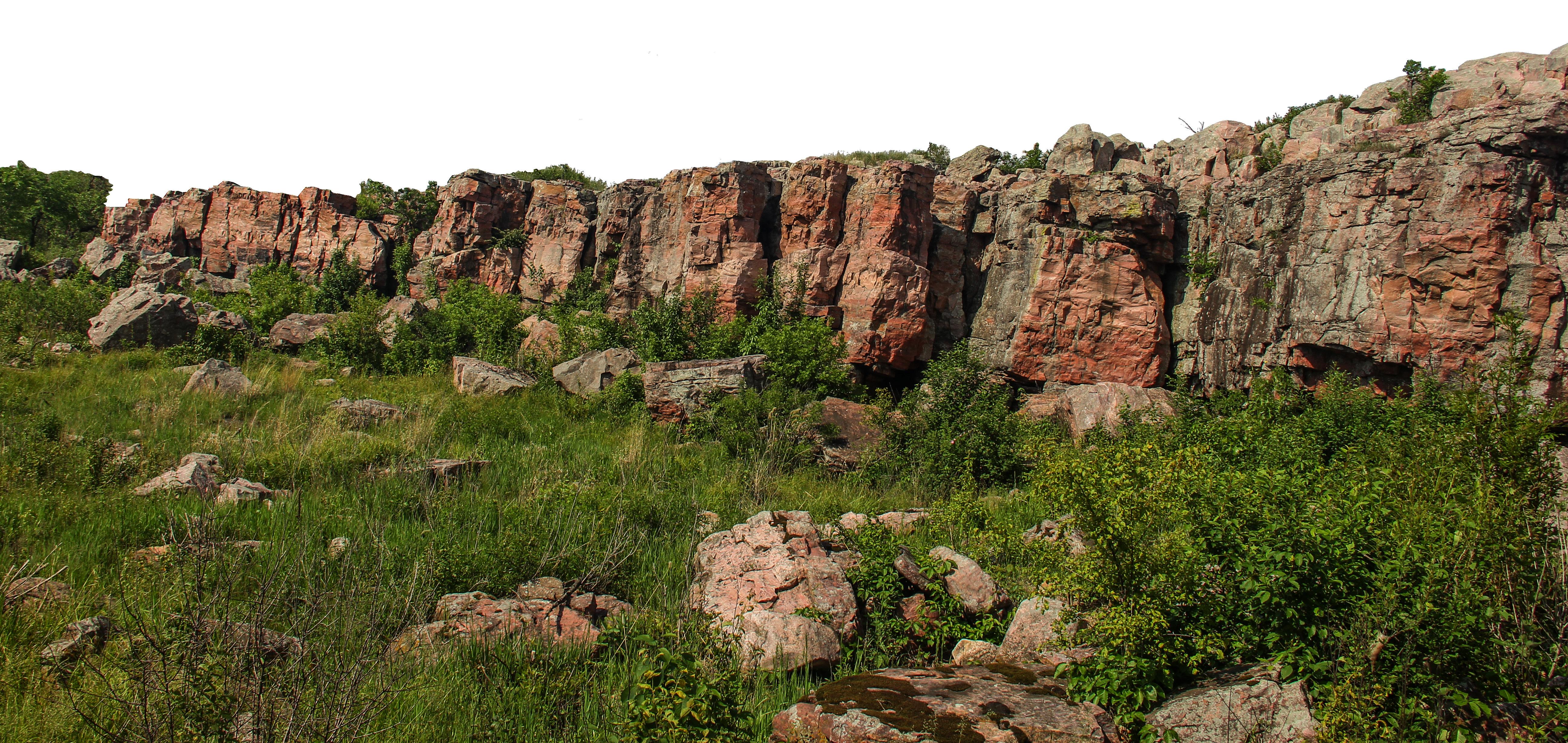
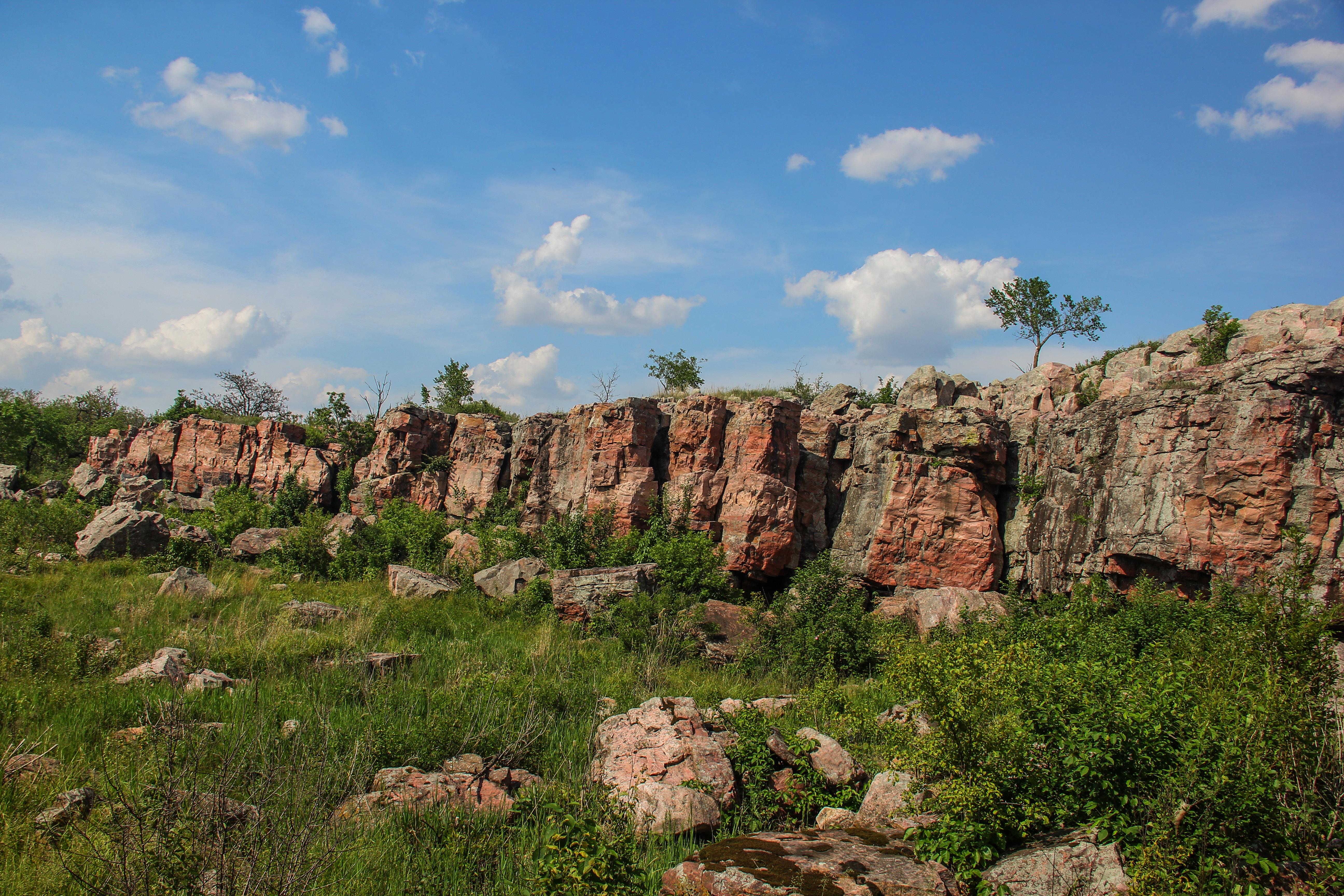
“If you’re an advisory group, you’re only thinking about the care of the pipes in the context that they are with the NPS at their place,” said Javi Avalos, manager of collections and archives at the SMSC. “This was different because the care of the items were thought of in terms of the tribes having custody of them and caring for them in a traditional way instead of a Western manner.”
While more Native American tribes are becoming active stewards of culturally significant objects, this collaboration stood out enough to earn a spot on the agenda at the 2024 Association of Tribal Archives, Libraries, and Museums annual conference in Palm Springs, California. Avalos, Director of Hoċokata Ṫi Andy Vig, and Gabrielle Drapeau, the NPS staff member who worked closely with Dakota tribes on this project and is also an enrolled member of the Yankton Sioux Tribe, presented together about the experience. They discussed not only the process behind relocating the pipes, but the ongoing efforts to care for them in ways grounded in Dakota cultural knowledge.
The SMSC and NPS anticipate that the pipes will return to Pipestone National Monument in late 2025. Once back in the collections space, each pipe will be stored according to the wishes of the advisory committee, in a cedar box—a wood associated with spiritual protection, healing, and purification—lined with sweetgrass braids tied with prayer ties to cleanse negative energy and carry prayers.
“This truly marks a paradigm shift ,” Avalos said. “It was a rare moment when the federal government turned to tribal nations not just for permission, but for leadership.” W


Bey d the Bey d the
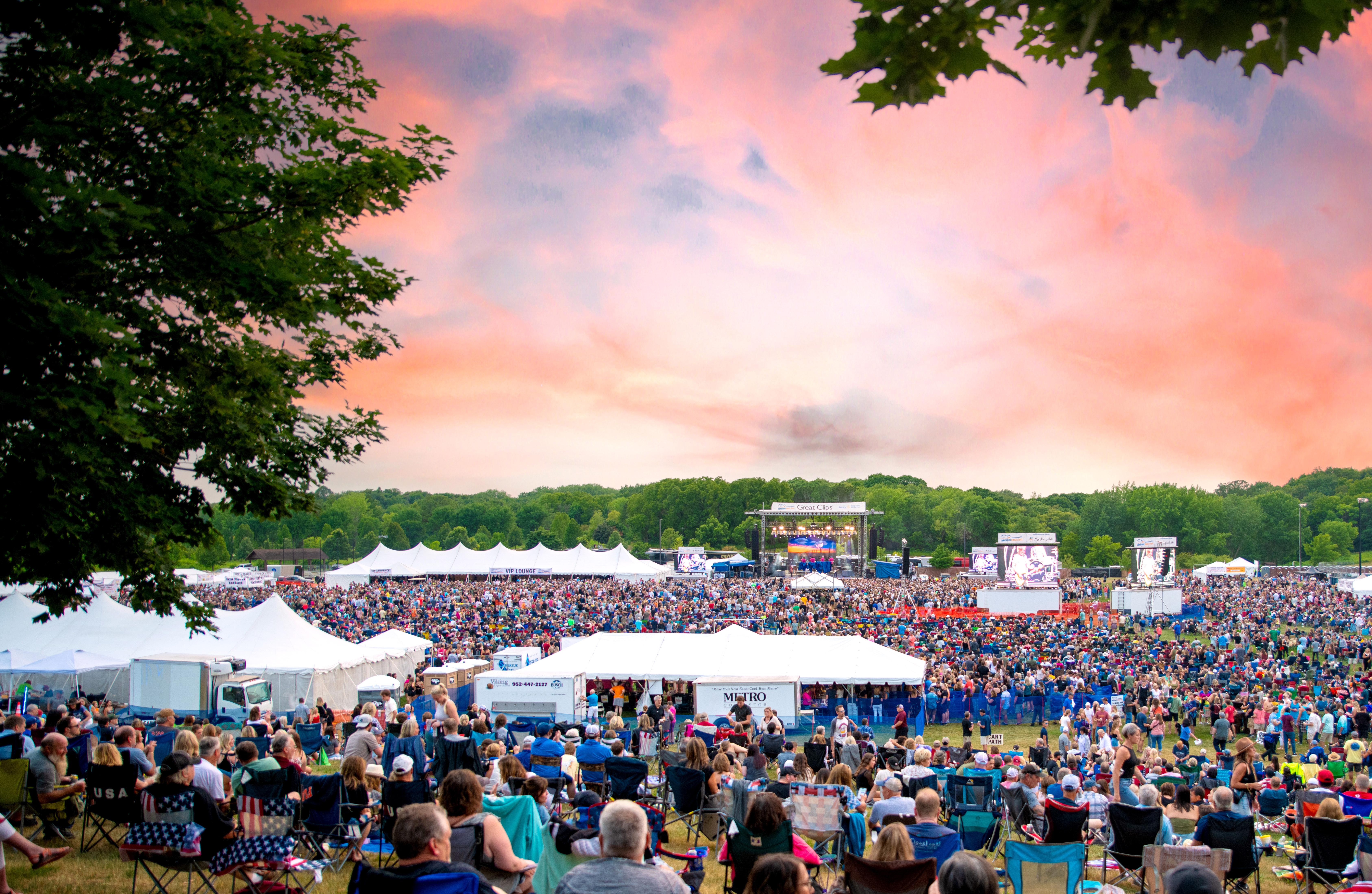
Uniting Community and Celebration at Lakefront Park
BY ERIN E. BELANGER

s the sun slips below the horizon, an electric buzz surges through the crowd as concertgoers enter Lakefront Park—now transformed into a vibrant music festival. As fans scout out the perfect location to place their chairs and blankets, many greeting familiar faces, others head o to the concession stands. eir voices carry waves of excitement, and the open-air venue is palpable with readiness. Cheers ripple through the audience as stage lights icker and stagehands conduct their nal checks. With each passing second, the energy builds. e air thickens with anticipation and intensity—
The night is ab t to ignite.
The Prior Lake Rotary’s Lakefront Music Fest is an annual two-day music event that takes place on the southwest edge of the Twin Cities in Prior Lake. At the heart of the celebration is Lakefront Park, a 127-acre gem nestled in the city’s downtown. Over the years, the event has experienced tremendous growth, attracting over 32,000 fans a year— from near and far—to the city’s park for a weekend of rock and country music.
Originally founded as the Lakefront Jazz & Blues Festival, the event has evolved into one of the largest outdoor music festivals in the area, thanks to a lineup that offers something for every music lover. Imagine a warm Friday night in mid-July, filled with the sound of three powerhouse rock acts that electrify the crowd. Over the years, the stage has hosted rock ‘n roll legends like Pat Benatar, Sammy Hagar, Lynyrd Skynyrd, Steve Miller Band, Styx, REO Speedwagon, and more.
Then act two—a Saturday night lineup of unforgettable performances. Country stars including Dierks Bentley, Elle King, Darius Rucker, Tyler Hubbard, Brad Paisley, and Martina McBride have also graced the big stage at Lakefront Park.
Fueling the event are strong, committed partnerships—united by a shared passion for giving back
to the community, supporting the missions of dozens of organizations, and celebrating the power of music to bring people together as a community. Each year, the festival is organized by Prior Lake Rotarians, with vital support from the Shakopee Mdewakanton Sioux Community (SMSC) and the city of Prior Lake. The event raises money for the Prior Lake Rotary Foundation, funding educational, humanitarian, and environmental initiatives locally and around the world. Proceeds are also shared with a variety of regional organizations, many of which provide volunteers who help run the well-attended weekend event. For over a decade, the SMSC and Mystic Lake Casino Hotel have proudly served as the event’s presenting partner. “It takes many hands to make something of this magnitude happen,” said Kelsey Scares The Hawk, charitable giving specialist for the SMSC. “The collaboration behind the scenes is just as powerful as what happens on stage.”
Scares The Hawk, who helps manage the SMSC’s monetary and in-kind donations, explains that the tribe’s commitment to Lakefront Music Fest stems from a deep-rooted cultural value of being a good neighbor and giving back to the community.


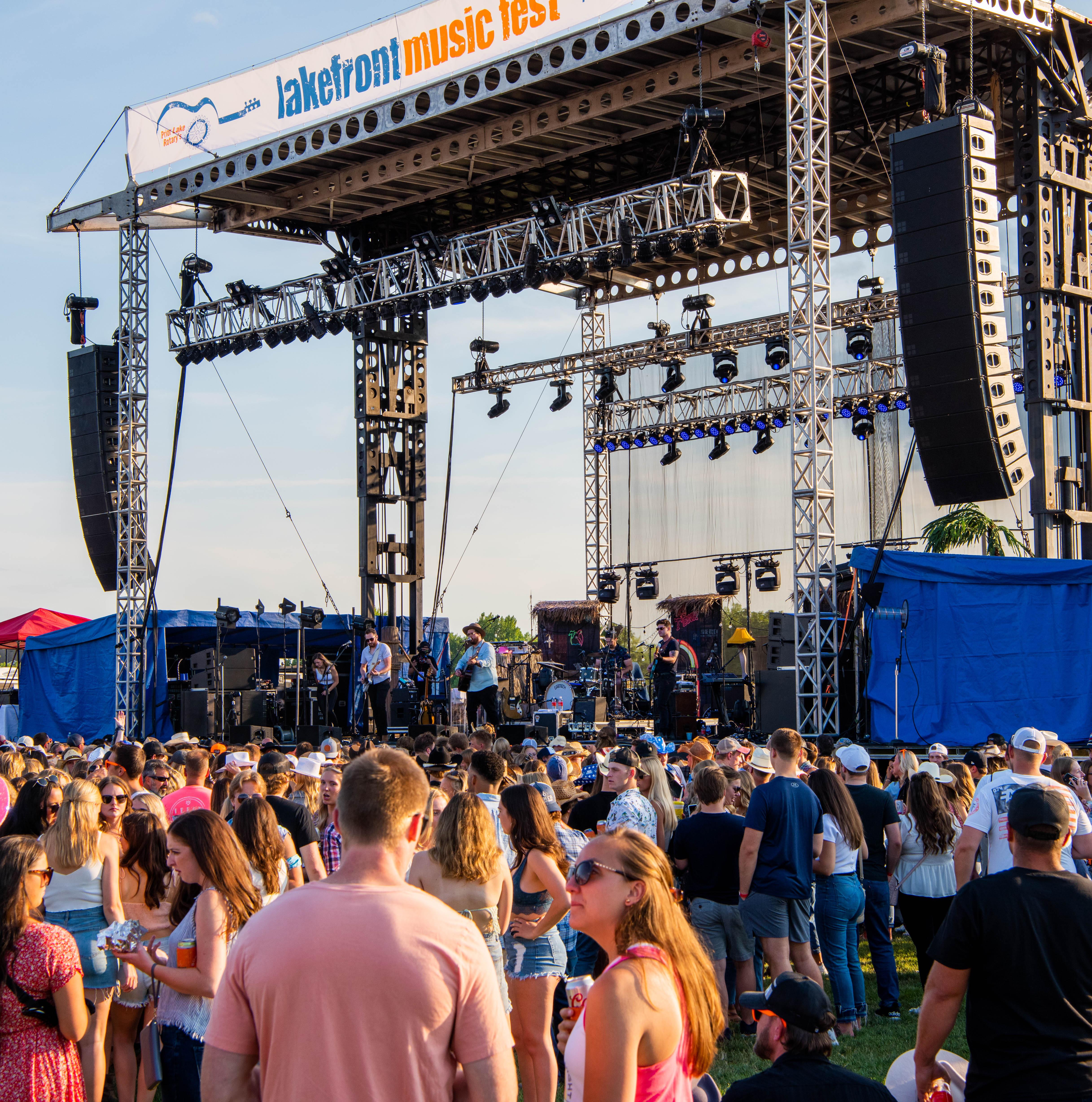

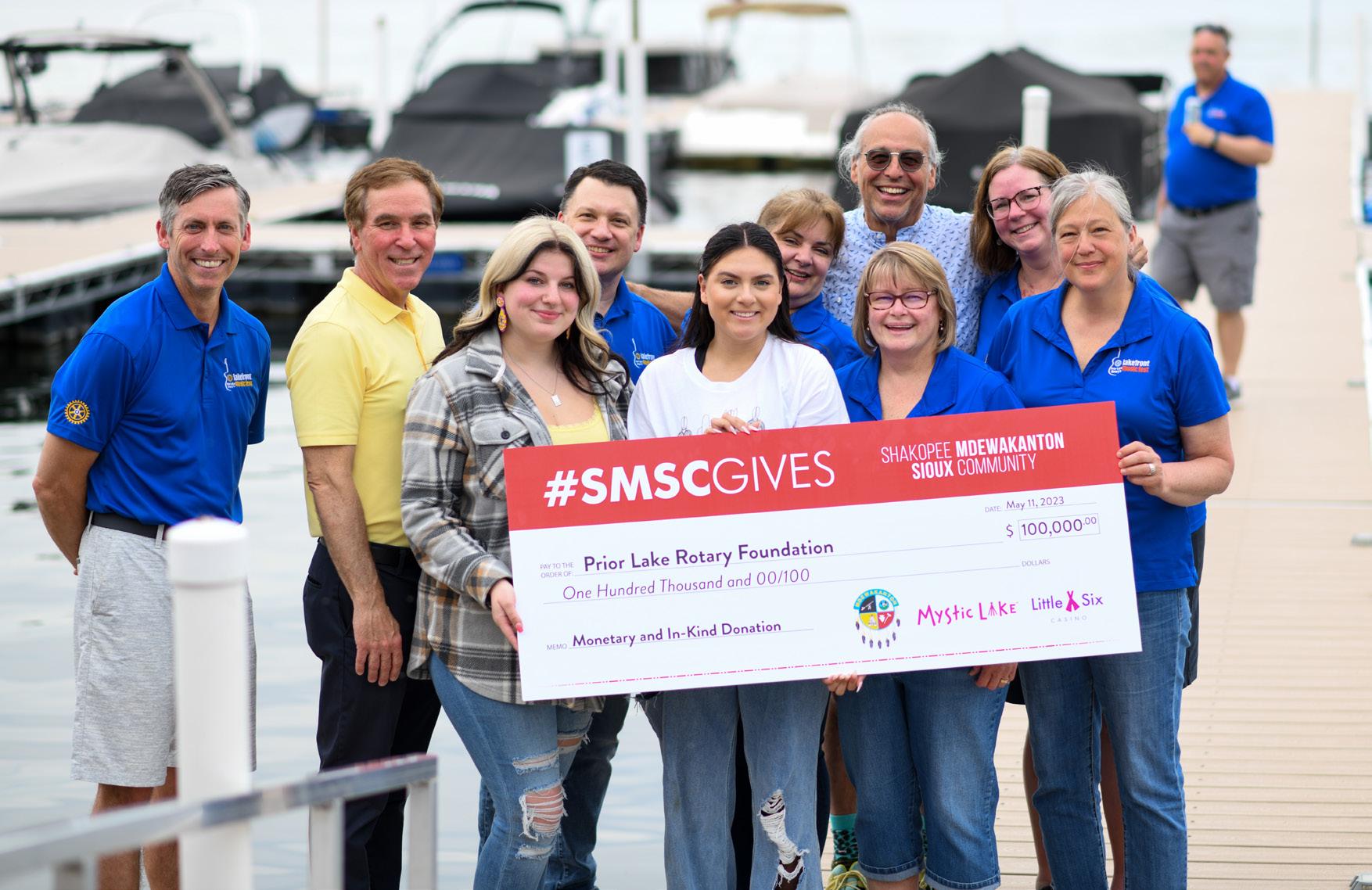
Through wóokiya—the Dakota value of generosity and helping—the SMSC believes in supporting initiatives that uplift surrounding communities and strengthen relationships through collaboration and shared celebration. “Support of the festival reflects the tribe’s longstanding commitment to stewardship, being helpful, and promoting community well-being,” explained Scares The Hawk.
Additionally, the Prior Lake Rotary’s mission of serving the community is guided by Rotary International’s motto, “Service Above Self.” Whether it’s through promoting education, environmental sustainability, health, or community development, Rotarians demonstrate how collective action and shared values can make a real impact.
“Our Prior Lake Rotary thrives because of the passion and dedication of our members,” said longtime Rotarian Paul Perez. “We’re not just a club—we’re a community of action, always looking for ways to make a difference.”
Perez, who also serves as the SMSC’s director of property services, shared that his deeper involvement with the event began when the SMSC became a partner. “I didn’t get deeply involved with the event as a Rotarian until the SMSC came on board—then I felt like it was time to step up. I volunteered to be the transportation officer, which was a great fit since I could support both the Rotary and the SMSC,” explained Perez.
Over the years, Perez has taken on a range of critical roles, including serving as co-chair of the festival. “I really enjoy helping build and maintain a strong relationship between the Rotary, the event, and the tribe,” he explained. “My role involves a lot of communication, coordination, and being that gobetween—which I enjoy. I’m glad to be part of it and help keep things running smoothly.”
As the event has grown, the SMSC has consistently provided support— ranging from financial contributions to technical assistance, equipment,
staffing, and various in-kind donations. SMSC Director of Fire and Emergency Services Eric Zimmerman said, “We are proud to be part of a celebration that brings so many people together in such a meaningful way. Supporting safety and logistics is one of the many ways we’ve helped make it all happen over the years.”
Zimmerman explained that the SMSC’s Mobile Command Center is loaned to the Prior Lake Police Department for the event, providing crucial support for police officers and other safety teams to ensure the event runs smoothly and safely.
“The ability to truly partner with the tribe in many different areas of operations is crucial to the success of our communities,” said Prior Lake Police Chief Liam Duggan. “Especially as it relates to public safety initiatives and special events such as the Lakefront Music Fest, the SMSC continues to share their knowledge, people and resources such as the Mobile Command Center among many others that help ensure safe and enjoyable experiences for everyone.”
The role of the city of Prior Lake also includes providing crucial infrastructure, coordinating logistics, and ensuring access for vendors. City officials and staff work hand in hand with the Rotary and the SMSC to manage permits, public safety, transportation, and crowd control. This collaboration stands as a model for how public-private partnerships can strengthen community events and elevate them to new heights.
“Lakefront Music Fest is truly a partnership between the city, the Rotary, and the SMSC,” said Prior Lake City Manager Jason Wedel.
“The SMSC has played a vital role in the festival’s growth and ongoing success from the very beginning. Their generosity has been key to the event’s success.” Wedel continued, “An event of this size simply wouldn’t be possible without that trusted collaboration. The Rotary provides invaluable resources and organizes an incredible team of volunteers, while the SMSC offers generous, wide-ranging support year after year.”
Prior Lake Rotary’s
The Rotary’s Lakefront Music Fest continues to grow in both stature and demand, often selling out in advance with Foreigner headlining rock night and Miranda Lambert taking the stage for country night in 2025. The event’s ongoing success is a testament to the combined efforts of the Prior Lake Rotary, the SMSC, and the city of Prior Lake—partners united not only by music but by a shared commitment to serve their community.
More than just a celebration of music, the Prior Lake Rotary’s Lakefront Music Fest offers a lasting legacy that is reflected by the thousands of fans it draws every year and by the significant contributions it makes to local initiatives and global causes. As the event continues to grow, the festival remains a shining example of how music can bring people together, inspire generosity, and create a lasting positive impact on a community for years to come. W
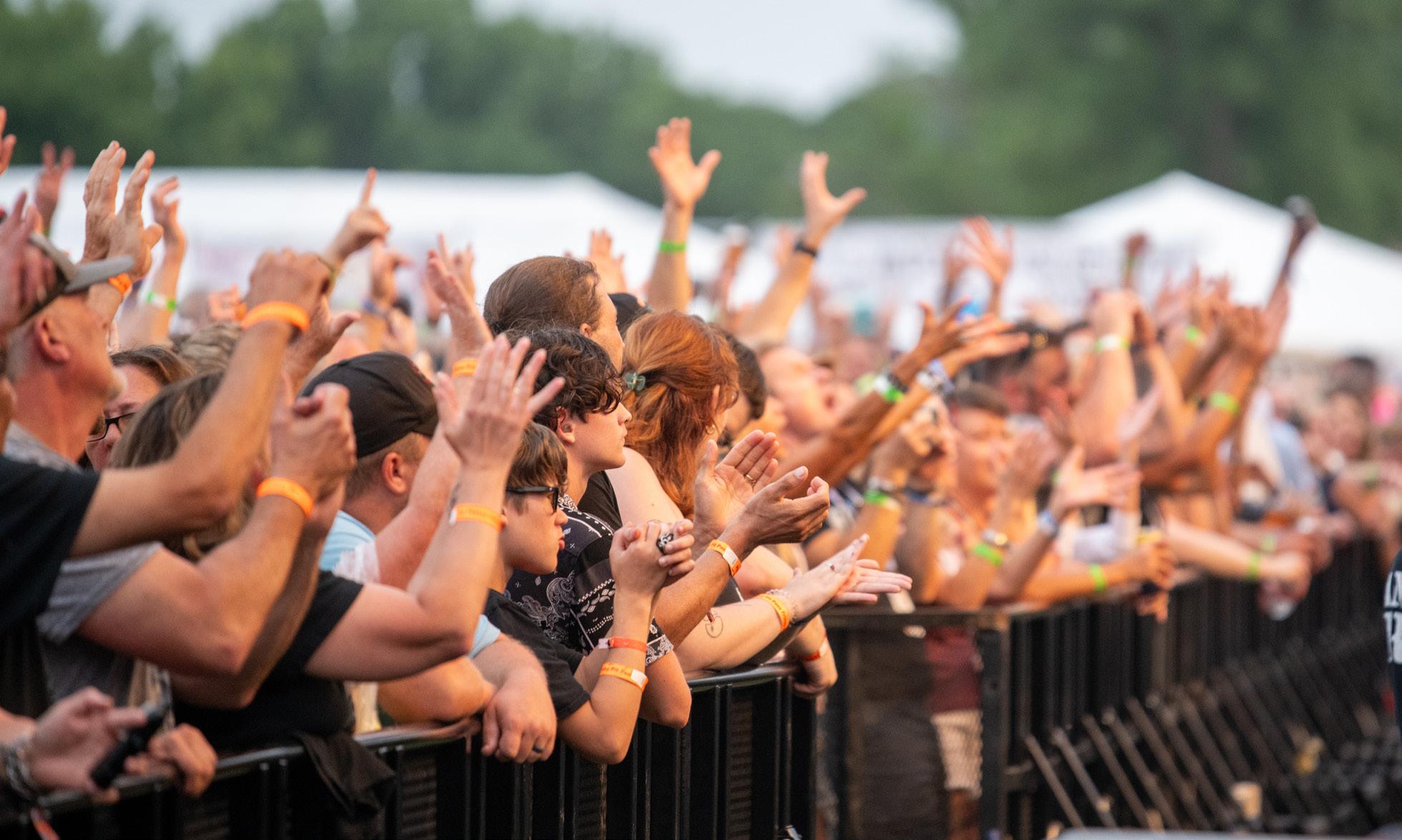
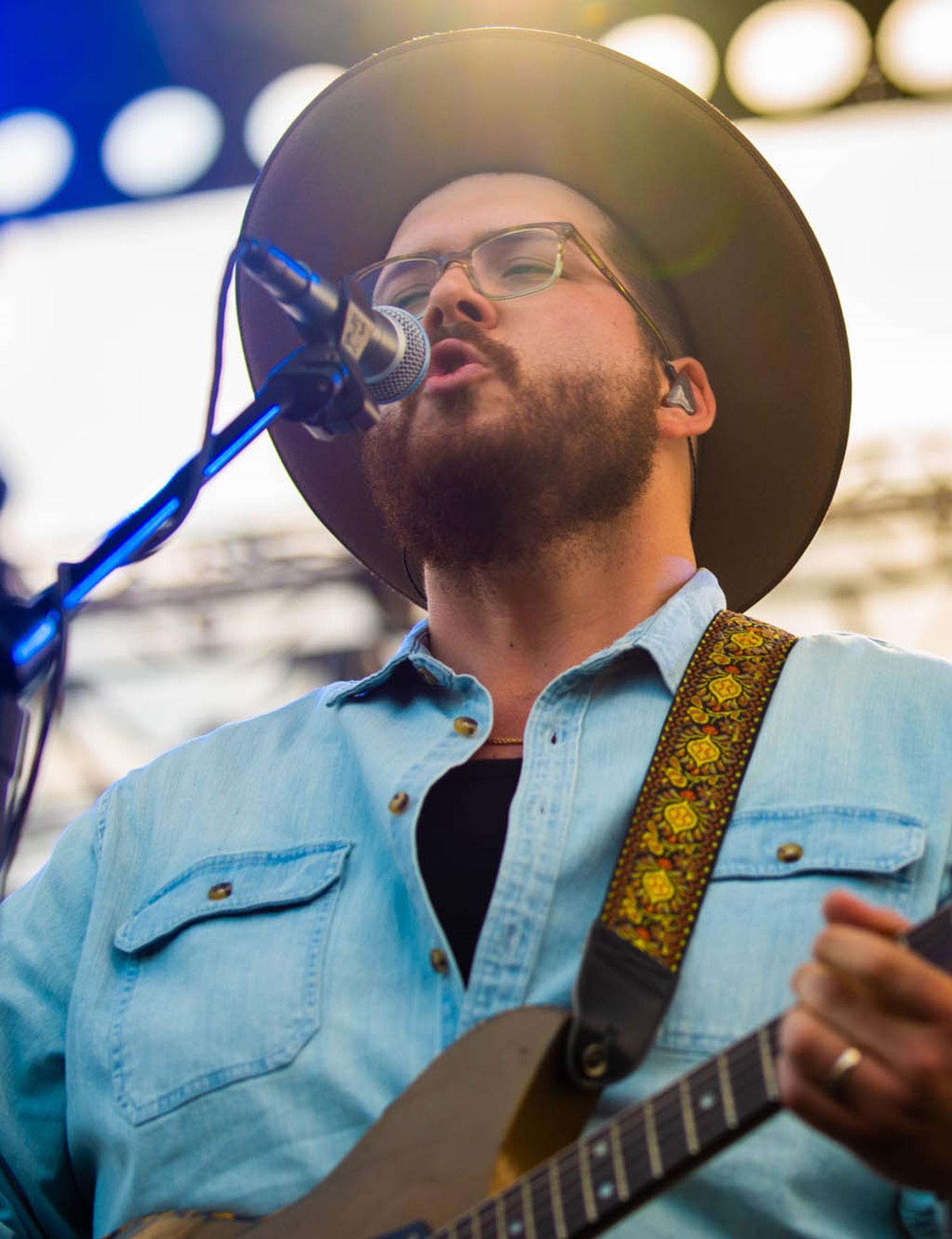
Lakefront Park • Prior Lake

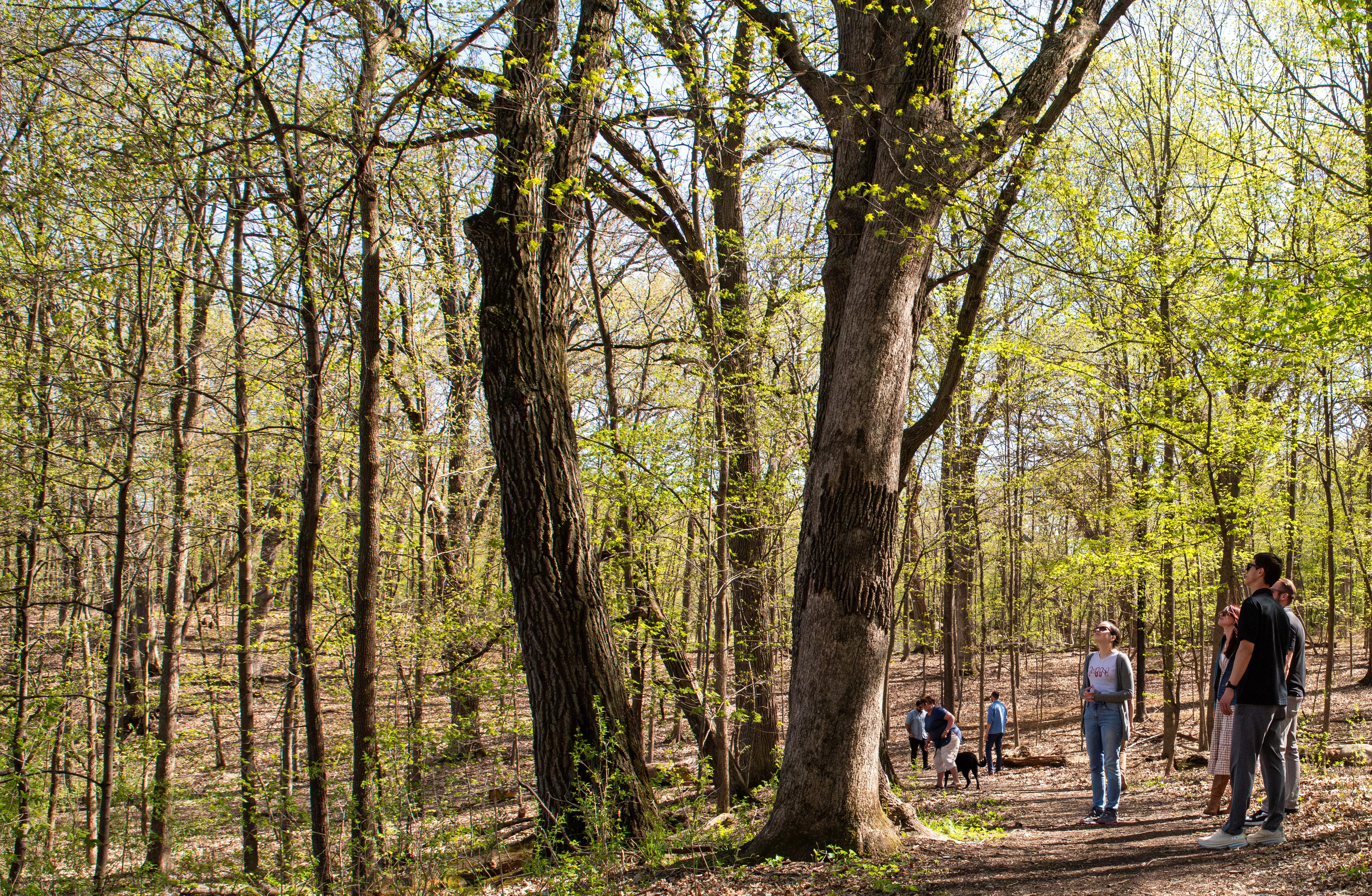
Honoring Dakota Values in Nature
A New, Collaborative Interpretive Trail at Lowry Nature Center
BY JONI KOMPERDA
PHOTOS BY BLAKE ZIEMER

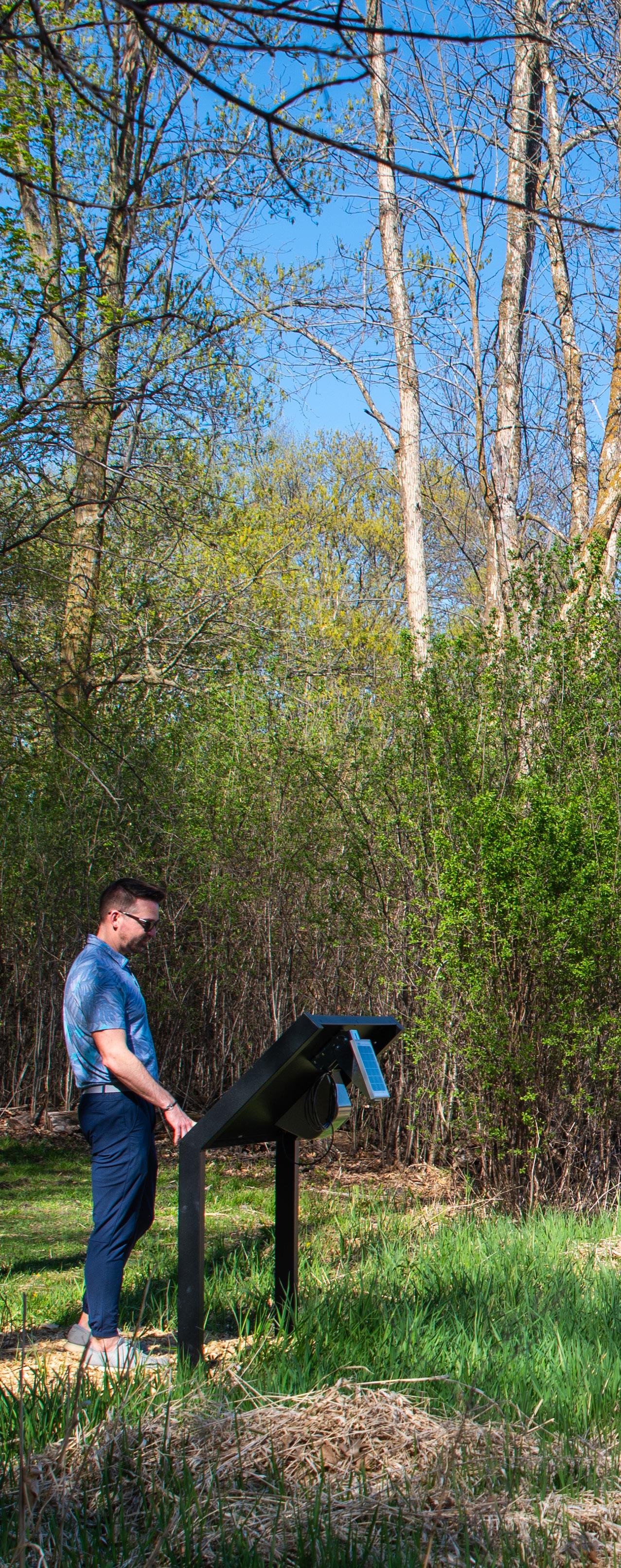
The vivid greens of summer are upon us, and with them comes an exciting opportunity to connect with nature in a deeper, more meaningful way. Thanks to an $80,000 grant from the Shakopee Mdewakanton Sioux Community (SMSC) through its Understand Native Minnesota campaign, the Three Rivers Park District developed a new interpretive trail at the Lowry Nature Center in Carver Park Reserve. This new trail o cially opened in the spring of 2025, o ering visitors a unique opportunity to explore the natural world through a Dakota lens, learning about plant names, uses, and the rich cultural heritage that has shaped this land for centuries.
The SMSC’s Understand Native Minnesota campaign was a philanthropic endeavor dedicated to improving the narrative about Native Americans in Minnesota’s K-12 education system. This grant to the Three Rivers Park District is one of many actions toward that commitment. “We are excited to support the Three Rivers Park District’s efforts to incorporate Native American perspectives into its mainstream interpretative work,” said SMSC member and former Secretary/Treasurer Rebecca Crooks-Stratton, who led the Understand Native Minnesota campaign. “As part of our tribe’s efforts to enhance the Native narrative in Minnesota
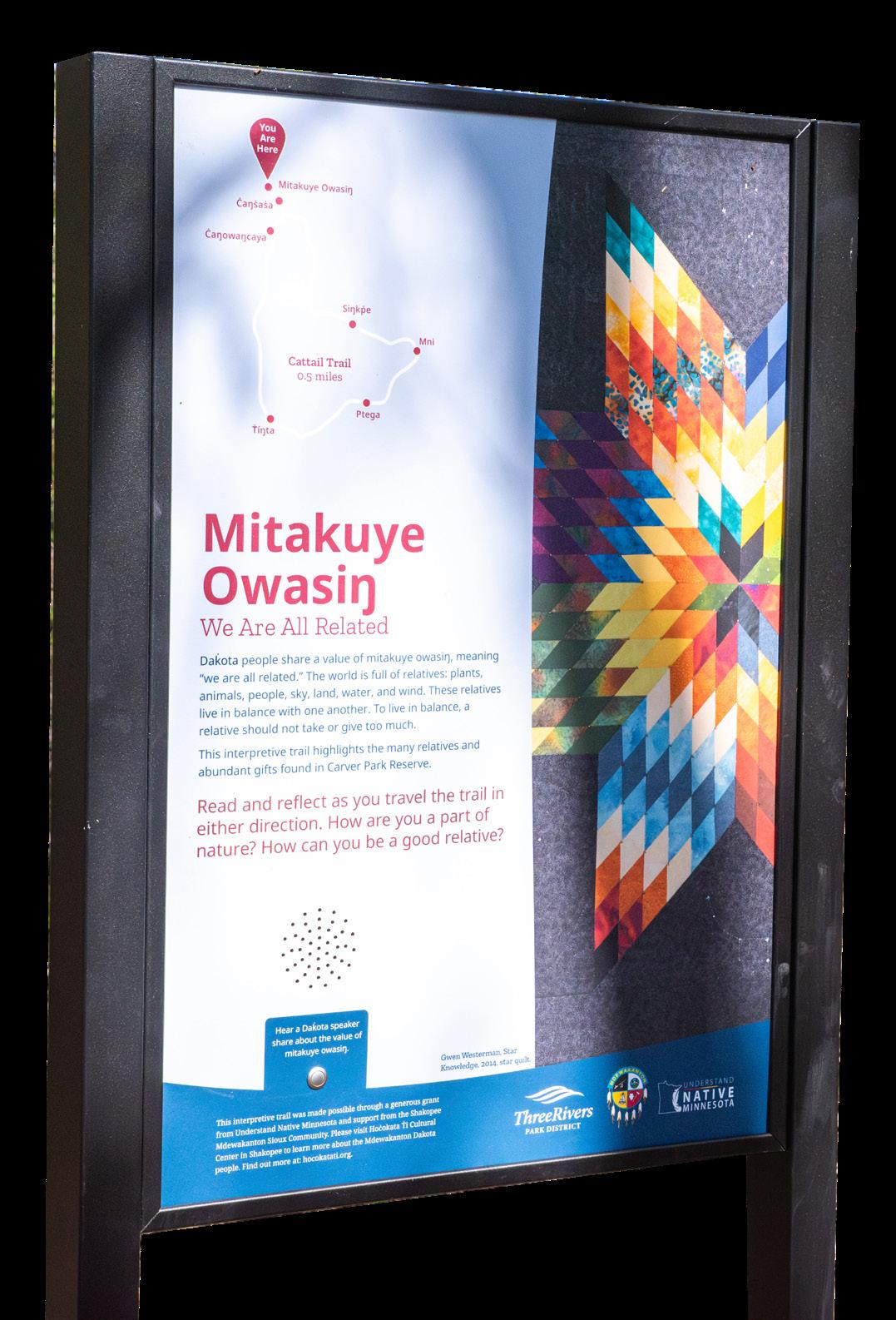
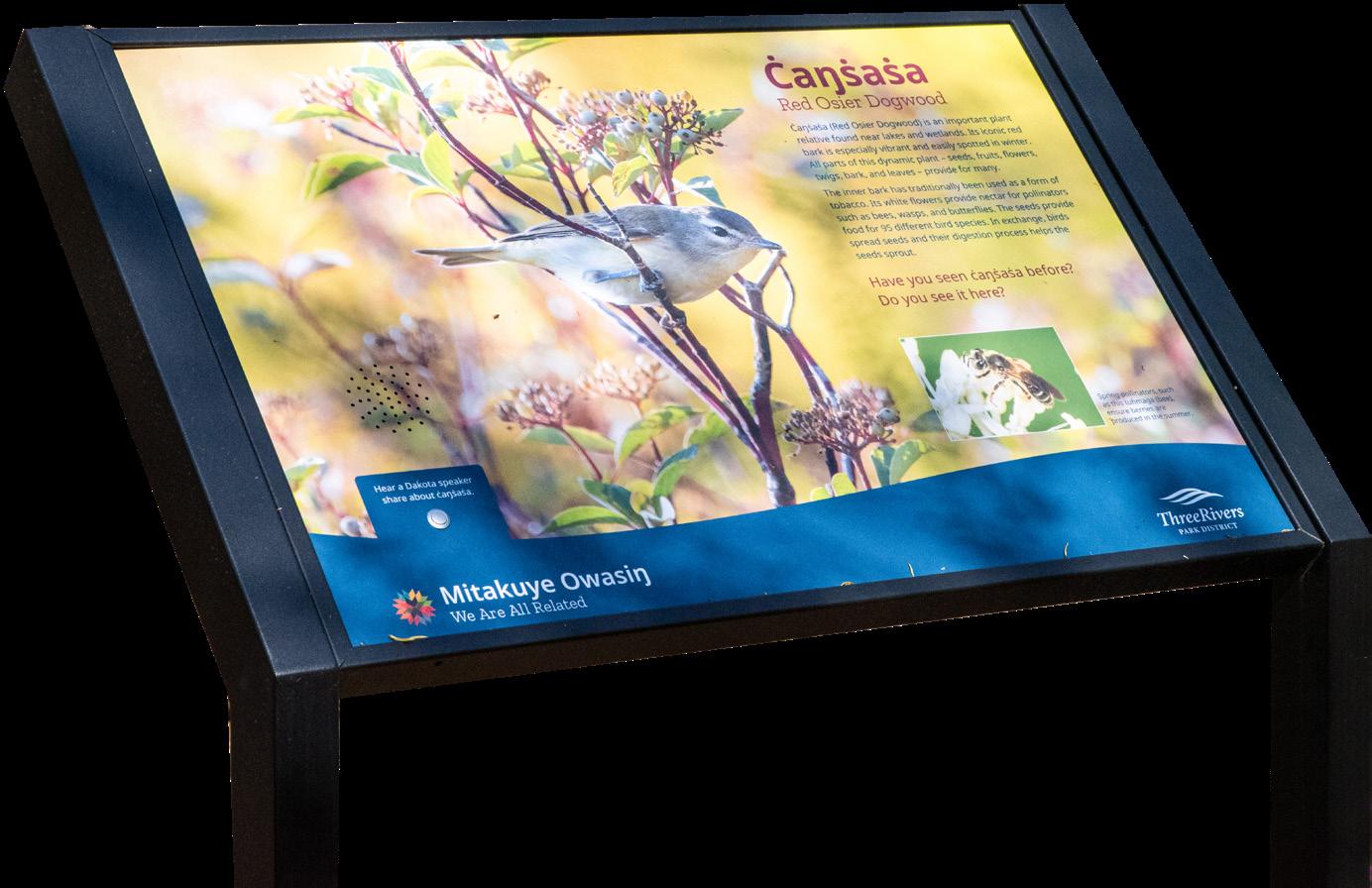
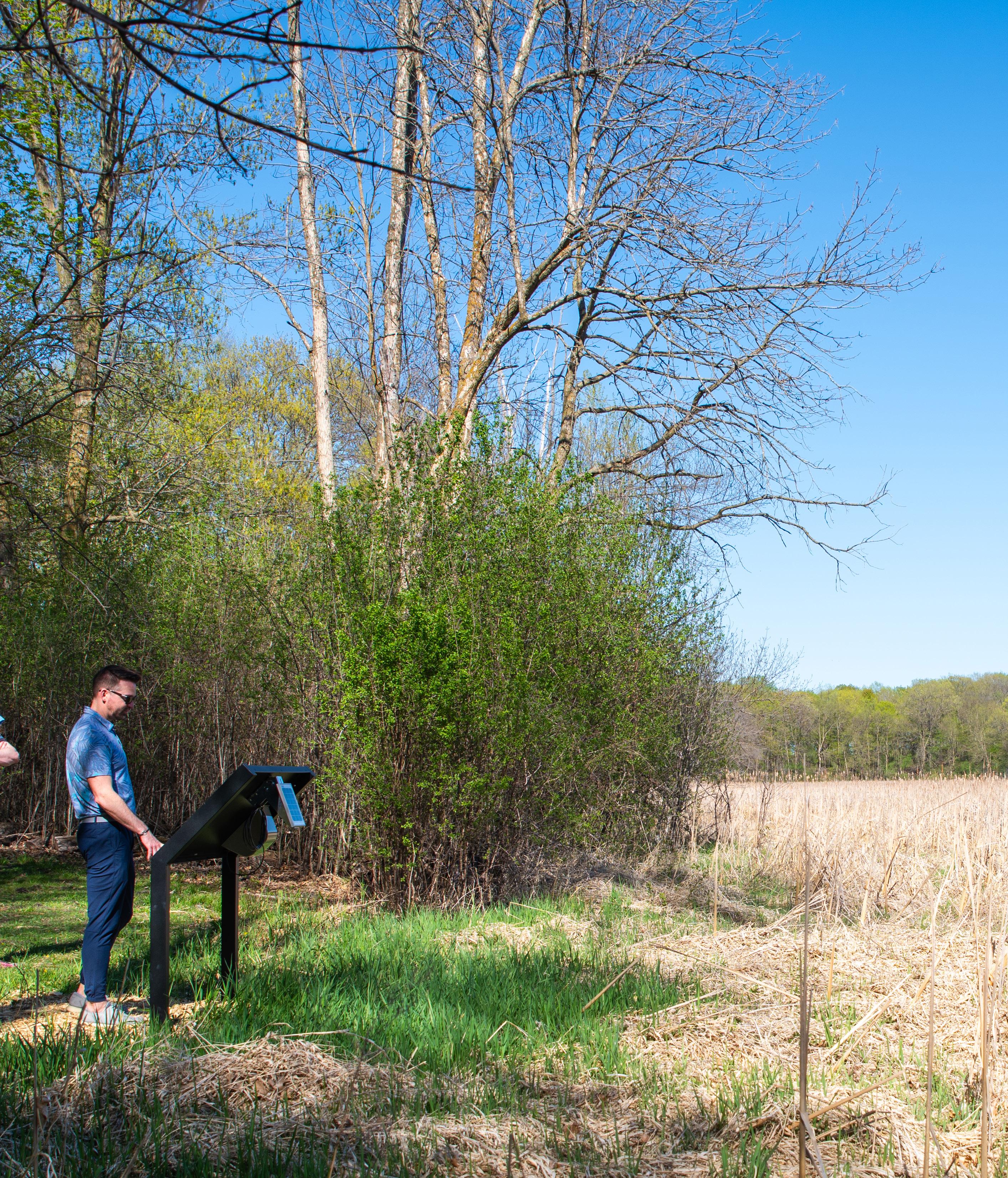
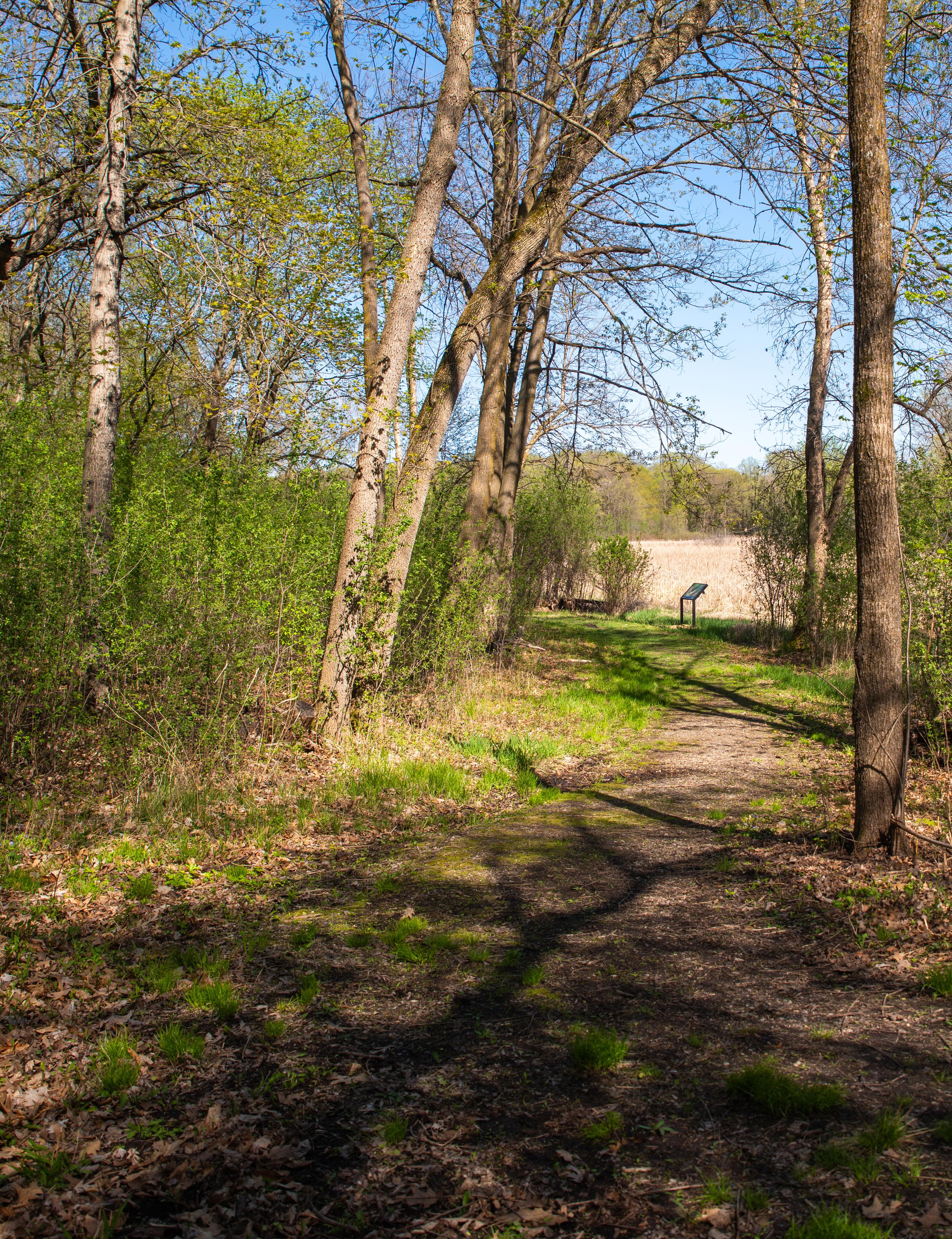
school systems, this Mitakuye Owasiŋ Interpretive Trail will bring greater awareness of the Dakota people who occupied the lands in what is today Minnesota.”
The development of the interpretive trail was a collaborative effort, ensuring Dakota voices were centered in the project. The Three Rivers Park District project team worked in consultation with the SMSC and engaged with a Dakota Advisory Group comprised of elders, cultural advisors, and knowledge-keepers. The expert project team provided invaluable guidance on Dakota language and cultural perspectives, ensuring the trail accurately and authentically represents Dakota content. Together, the group identified locations along the existing trail to highlight specific plant species or landscape features. Interpretive signs were then created to share the traditional Dakota perspective, offering visitors a unique educational experience.
Hoċokata Ṫi’s Director Andy Vig and Dakota Language Support Specialist Caitlin Welch, both SMSC members, generously contributed their voices to the recordings included on the trail. Welch said about the project, “Andy and I each provided about half of the recorded voices presented on the trail. I was excited to see it all



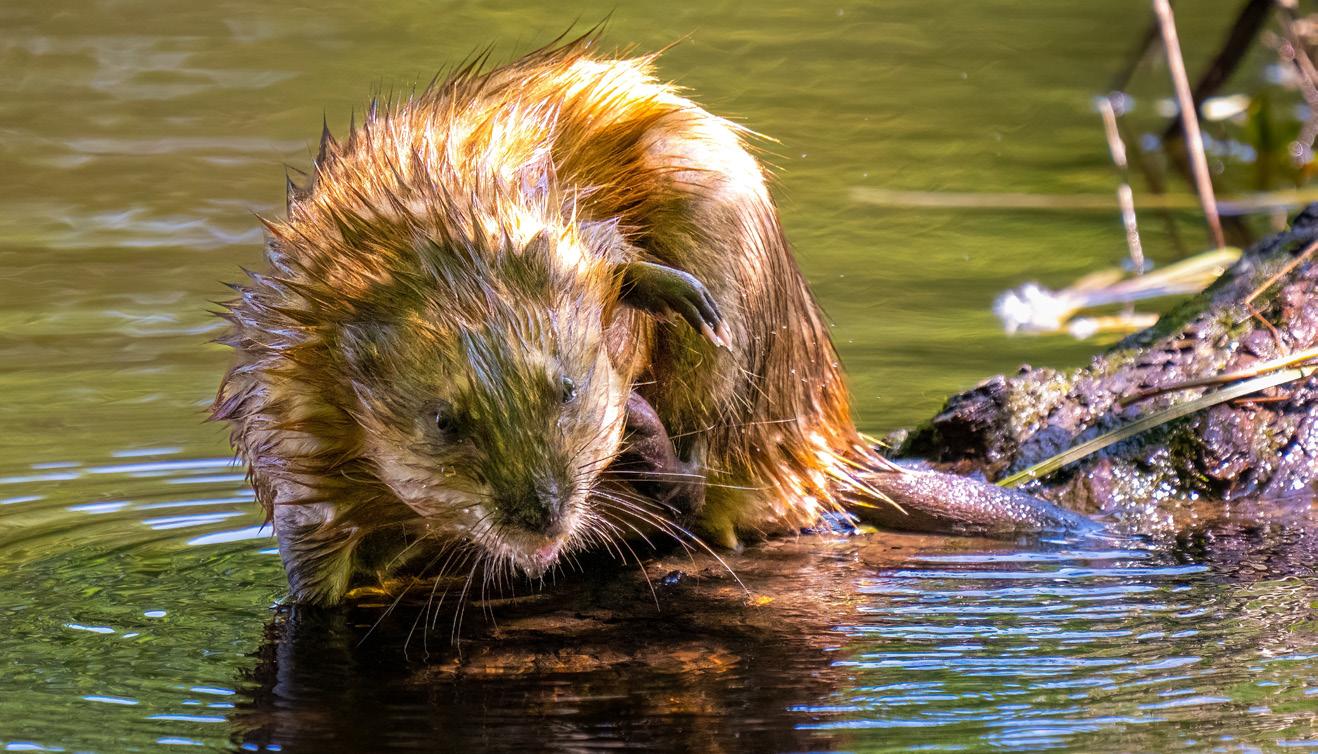
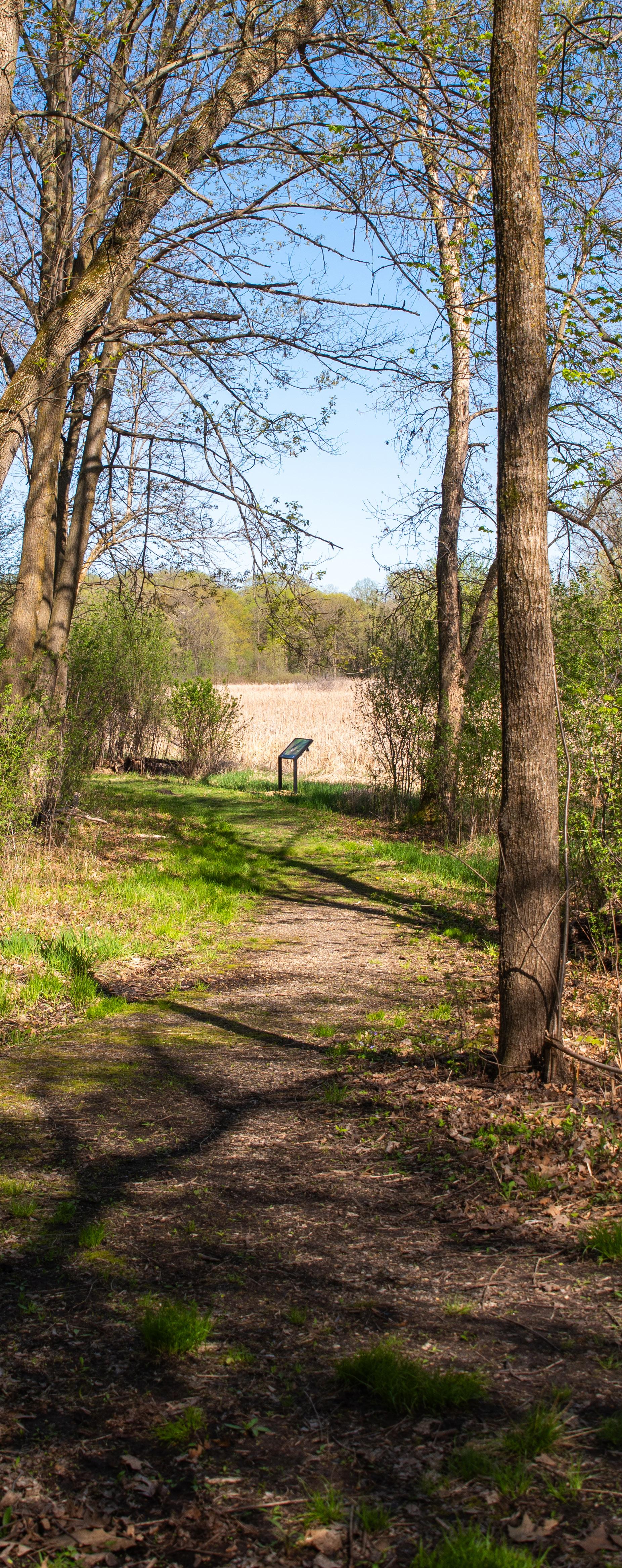

come together and open up to the public. It’s especially meaningful to me since we don’t always get to see our Dakota heritage, language, and culture reflected in public spaces like this. It fills my heart with warmth and strength to see this trail come to life.”
Hoċokata Ṫi is the SMSC’s cultural center, serving as a place of gathering for the tribe as well as a venue to showcase the tribe’s history and culture through the Mdewakanton: Dwellers of the Spirit Lake public exhibit from the Dakota perspective. It also houses a gift shop with over 90 Native American artists or business owners. “We intended to capture the Dakota lifeways— the things our people went through for thousands of years,” Vig said about the exhibit. “We wanted to share our history through our lens. What our exhibit is really known for is it shows what our tribe is doing today and our people. We’re still here.” Through projects like the Mitakuye Owasiŋ Interpretive Trail, the SMSC actively demonstrates the ongoing vitality of Dakota culture and perspectives in the modern world. The trail is evidence of the enduring presence and active expression of Dakota language and connection to the land.
At the heart of the Dakota worldview is the concept of mitakuye owasiŋ, which translates to “all my relatives,” “we are all related,” or “all my relations.” This philosophy emphasizes the interconnectedness of all life, recognizing humans are not separate from, but rather a part of, the natural world. This perspective shapes how Dakota people interact with the environment, viewing plants, animals, and the land itself as relatives deserving of respect and care. The Mitakuye Owasiŋ Interpretive Trail brings this worldview to life, inviting visitors to connect with nature in a way that supports understanding and appreciation.
As visitors walk along the Mitakuye Owasiŋ Interpretive Trail, they will encounter a variety of plants and landscape features, each interpreted through a traditional Dakota perspective. Hoċokata Ṫi’s Supervisor of Programs and Interpretation Michael Kurtz said, “The panels along the trail help you understand the different biomes—like grassland, wetland, and forest—from a Dakota perspective. They were specifically chosen for their variety and interconnectedness to explain the unique lands, animals, resources, and plants in an impactful way—the way Dakota people see them.” The trail enhances current Native American education materials, providing valuable resources for preK-12 school groups and general park visitors. The interpretive signs feature Dakota plant and animal names and uses, offering insights into how the Dakota people have historically relied on the land for food, medicine, and materials.
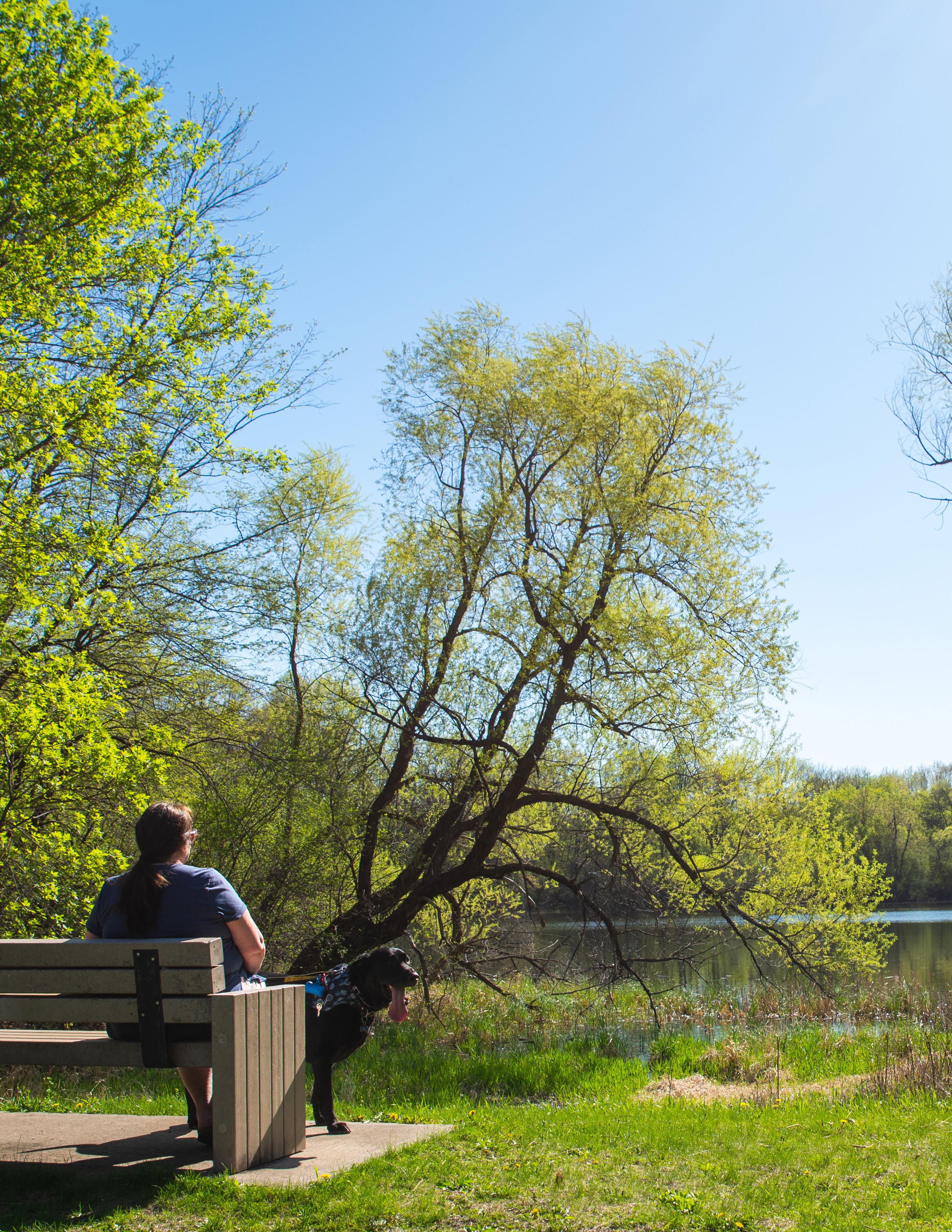
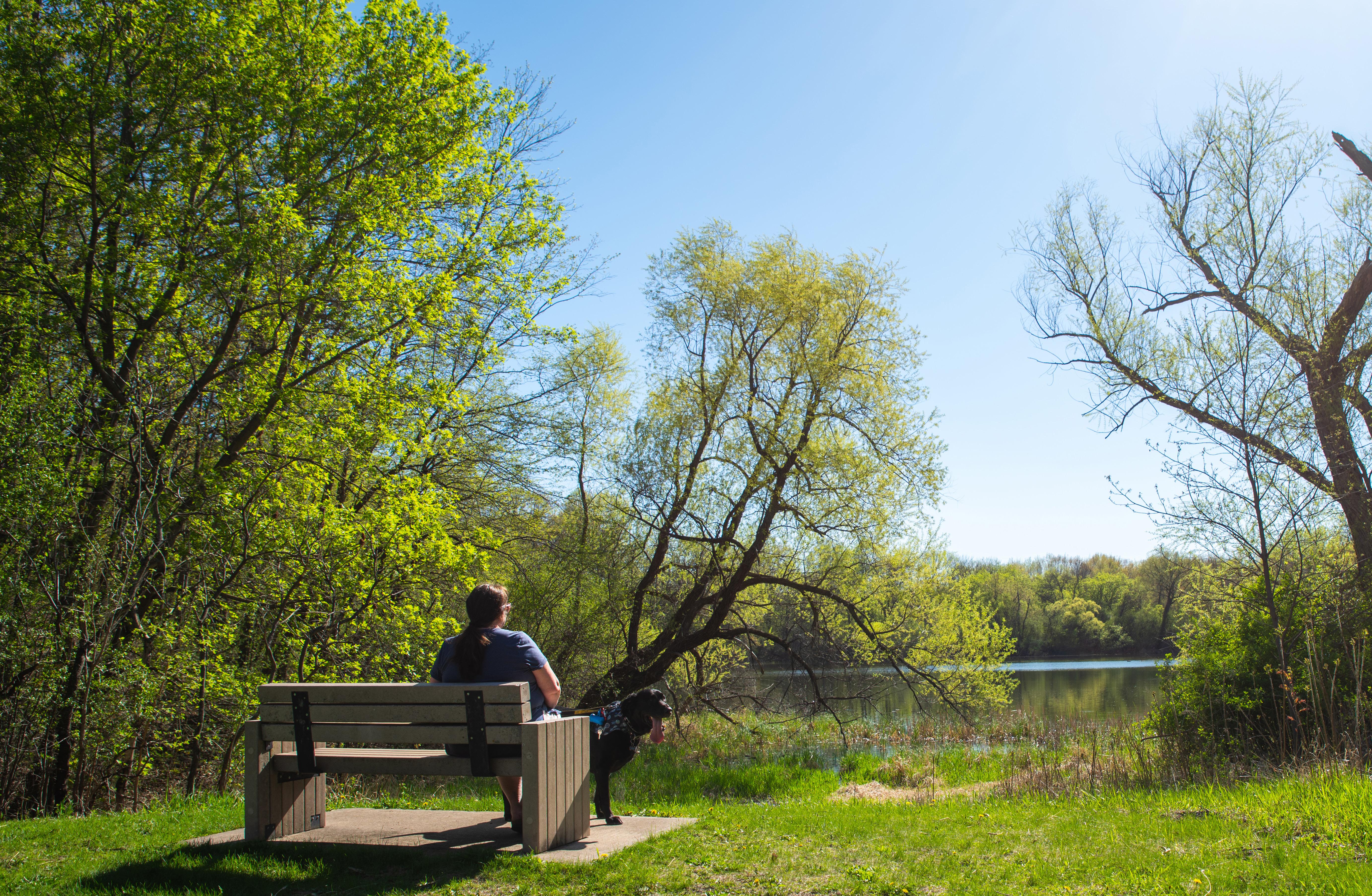
“ I was excited to see it all come together and open up to the public. It’s especially meaningful to me since we don’t always get to see our Dakota heritage, language, and culture reflected in public spaces like this. It fills my heart with warmth and strength to see this trail come to life. ”
SMSC member and Dakota Language Support Specialist Caitlin Welch

The interpretive panels and audio along the Mitakuye Owasiŋ Interpretive Trail offer an immersive understanding of specific plants, animals, and land features found locally at Lowry. For instance, visitors can learn about the Dakota perspective on the relationship with bison (ṫaṫaŋka), viewing them as relatives, which is a core part of the mitakuye owasiŋ principle of interconnectedness and ecological balance. The exhibit content focuses on showcasing specific elements found in the local environment, such as the common sunflower (wahcazizi), the sugar maple tree (ċaŋhasaŋ), and the significance of various biomes like the prairie (ṫíŋta) and the forest (ċaŋowaŋcaya), highlighting their importance within the Dakota worldview and how they contribute to the unique natural environment of the area.
The interpretive trail serves as a valuable resource for park educators, enhancing their ability to provide accurate and authentic Native education offerings and training. By providing a deeper understanding of Dakota perspectives, the trail contributes to a more inclusive and comprehensive educational experience for all visitors. The opening of the Mitakuye Owasiŋ Interpretive Trail was celebrated on March 29, 2025, with a special event at the Lowry Nature Center. The celebration included a team and partner potluck, followed by a public ribboncutting ceremony. This event marked the culmination of the project and indicated the strong working relationship between the SMSC and the Three Rivers Park District. Kurtz reflected on the partnership, “The SMSC has worked with other Three Rivers Parks too, like the Richardson Nature Center. It’s great to see this collaboration continuing to do important cultural and educational work for the public.”
The Lowry Nature Center, located within the 3,719-acre Carver Park Reserve in Victoria, Minnesota, is the perfect setting for this interpretive trail. As the first public nature center to open in Minnesota, Lowry has been serving the community since 1969. The center hosts over 500 school groups and field trips annually, providing valuable environmental education to thousands of students. In 2022, Lowry hosted more than 43,000 visitors, and its staff taught 280 public programs and accommodated 575

school field trips. Allison Neaton, who worked on the project as the education supervisor at Lowry Nature Center, expressed her excitement about the collaboration, stating, “Schools have come to Lowry for many years for field trips to enhance classroom learning about Dakota traditions. We are excited to collaborate with the Shakopee Mdewakanton Sioux Community and other Dakota people to accurately and authentically interpret Dakota perspectives on natural resources in Carver Park.” The Mitakuye Owasiŋ Interpretive Trail adds another layer of depth to the center’s educational offerings, providing a unique opportunity for visitors to learn about Dakota culture and perspectives.
The Mitakuye Owasiŋ Interpretive Trail provides a path toward cultural understanding and connection. It’s a place where visitors can learn to see the natural world through a different lens, appreciating the rich heritage and perspectives of the Dakota people. It serves as an invitation to learn, connect, and appreciate the interconnectedness of all life.
The trail is also a compelling example of how collaboration and a commitment to understanding can create meaningful educational experiences.
The partnership between the SMSC and Lowry Nature Center/Three Rivers Park District is ongoing; it will not end now the signs are installed and the ribbon is cut on the new trail. So, as you enjoy the beauty of summer, be sure to visit the Lowry Nature Center and embark on this journey of discovery. And as you explore the trail, take time to reflect on the concept of mitakuye owasiŋ and consider how viewing the land as a relative can change your relationship with the environment. W
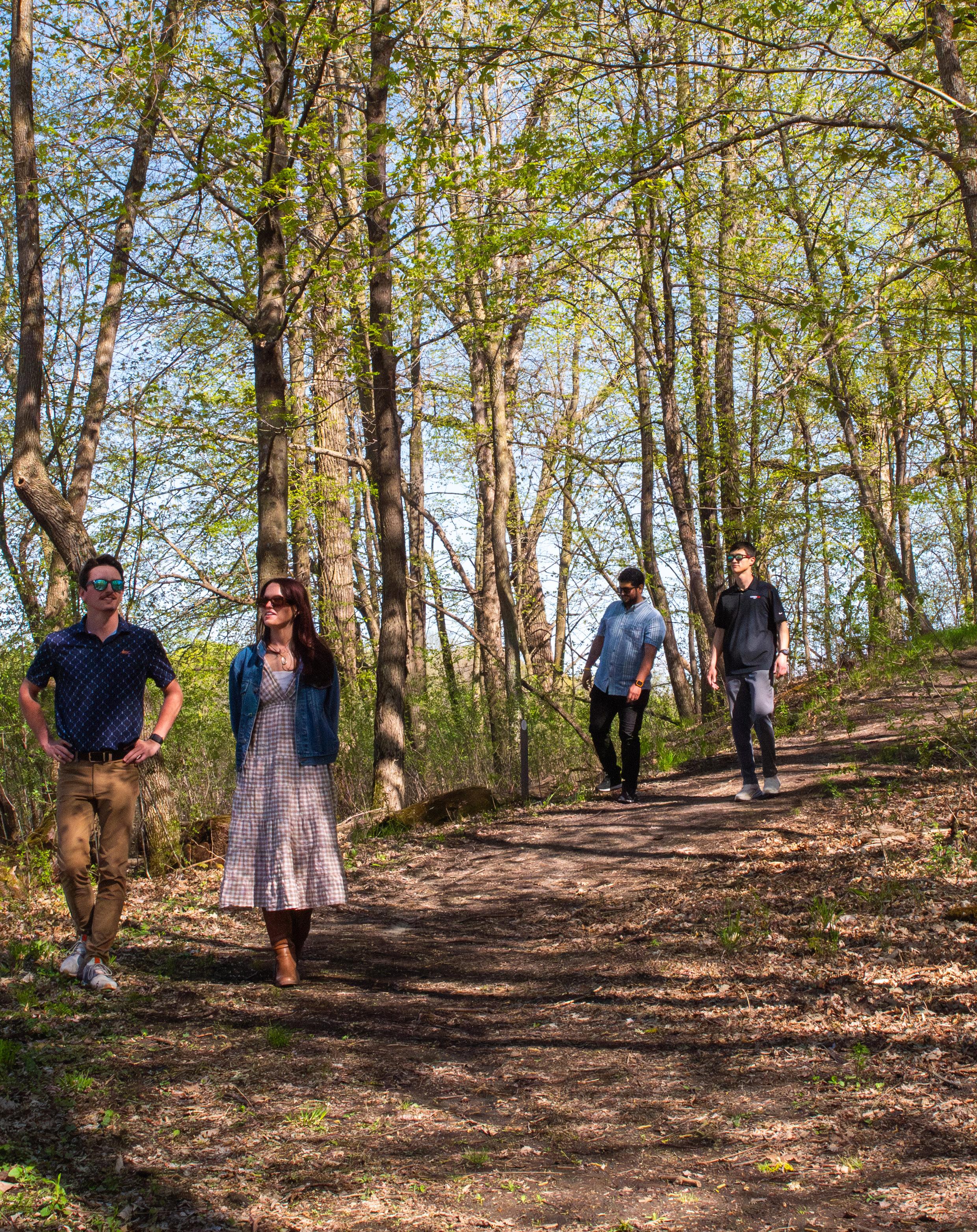
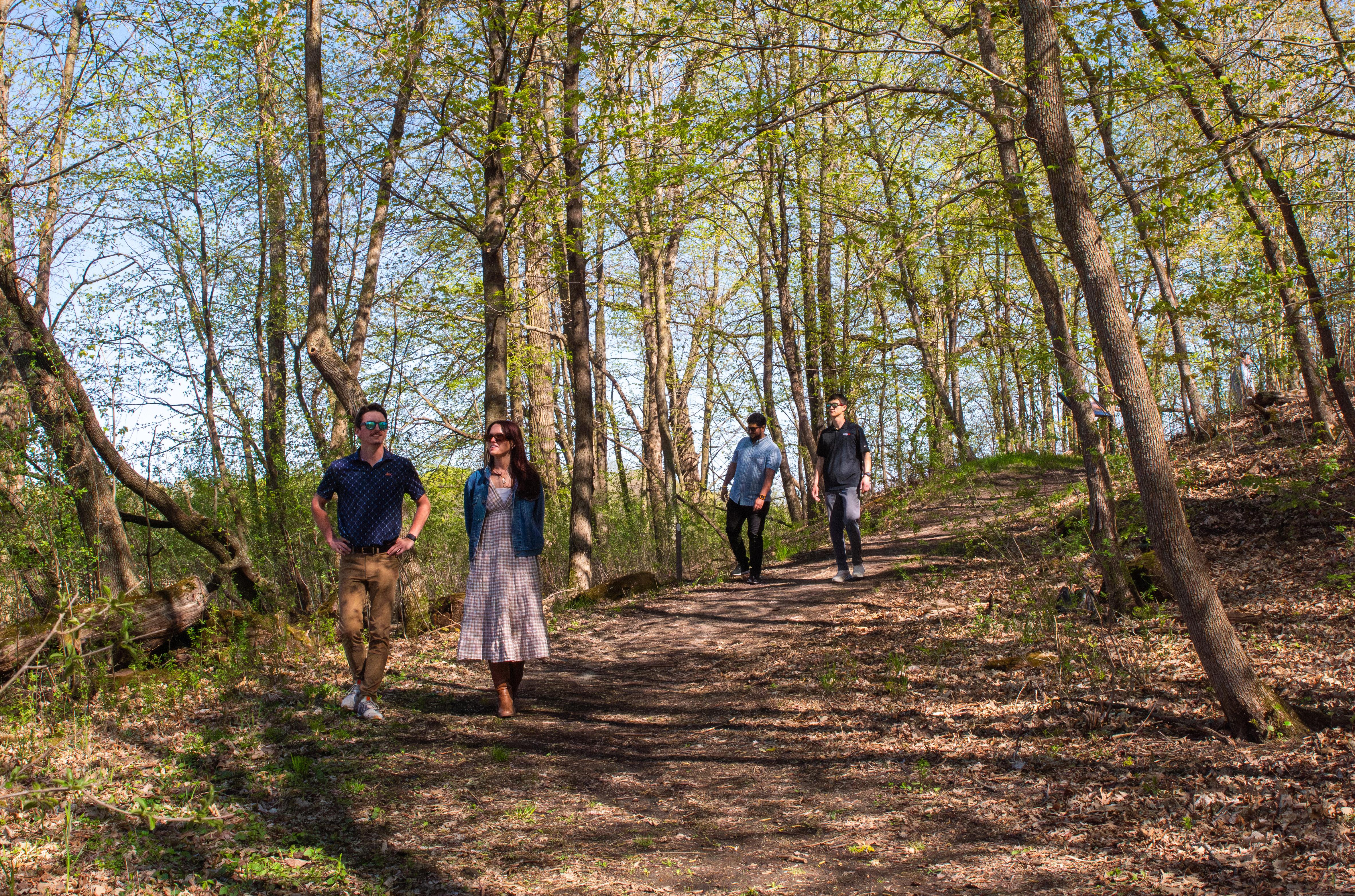

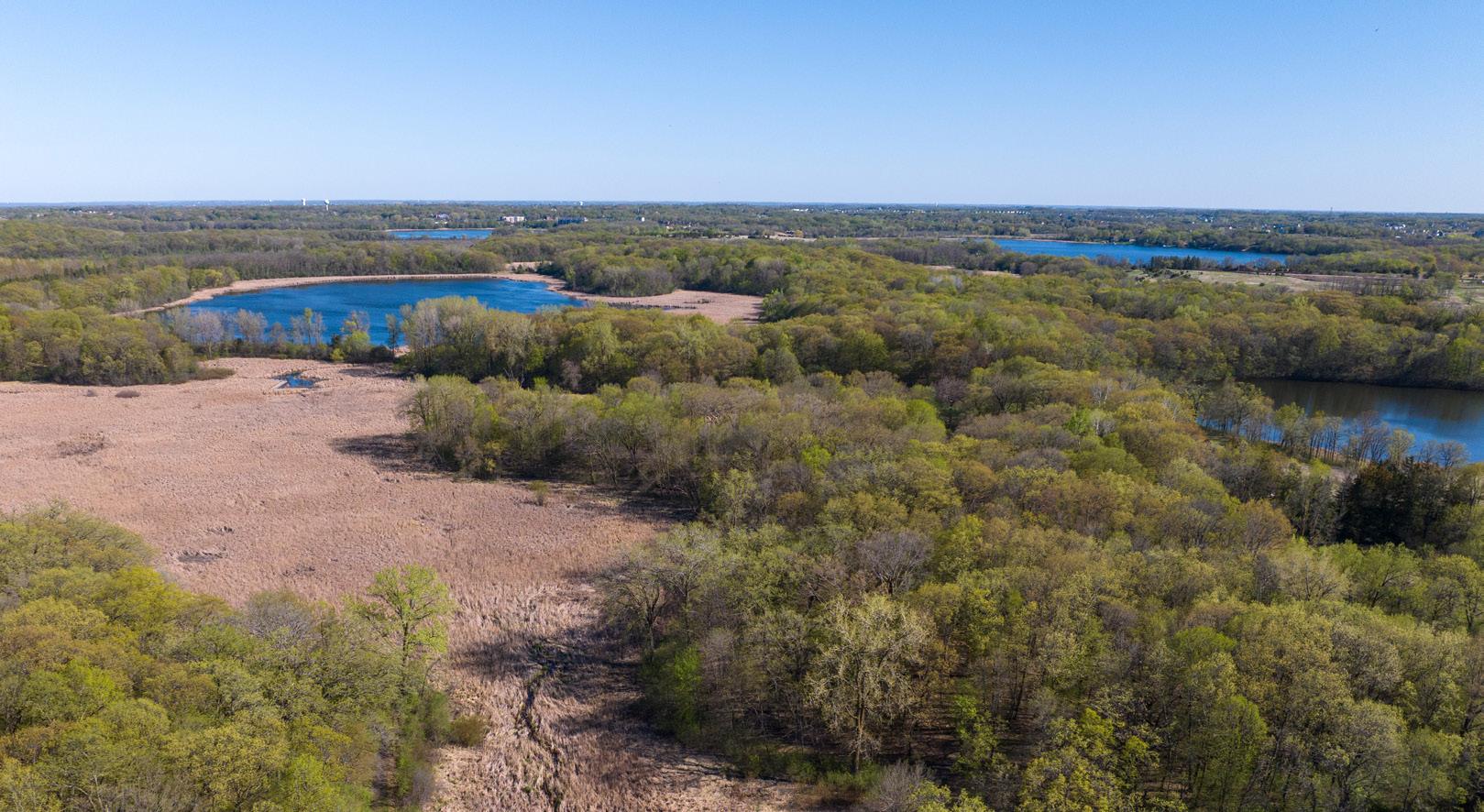
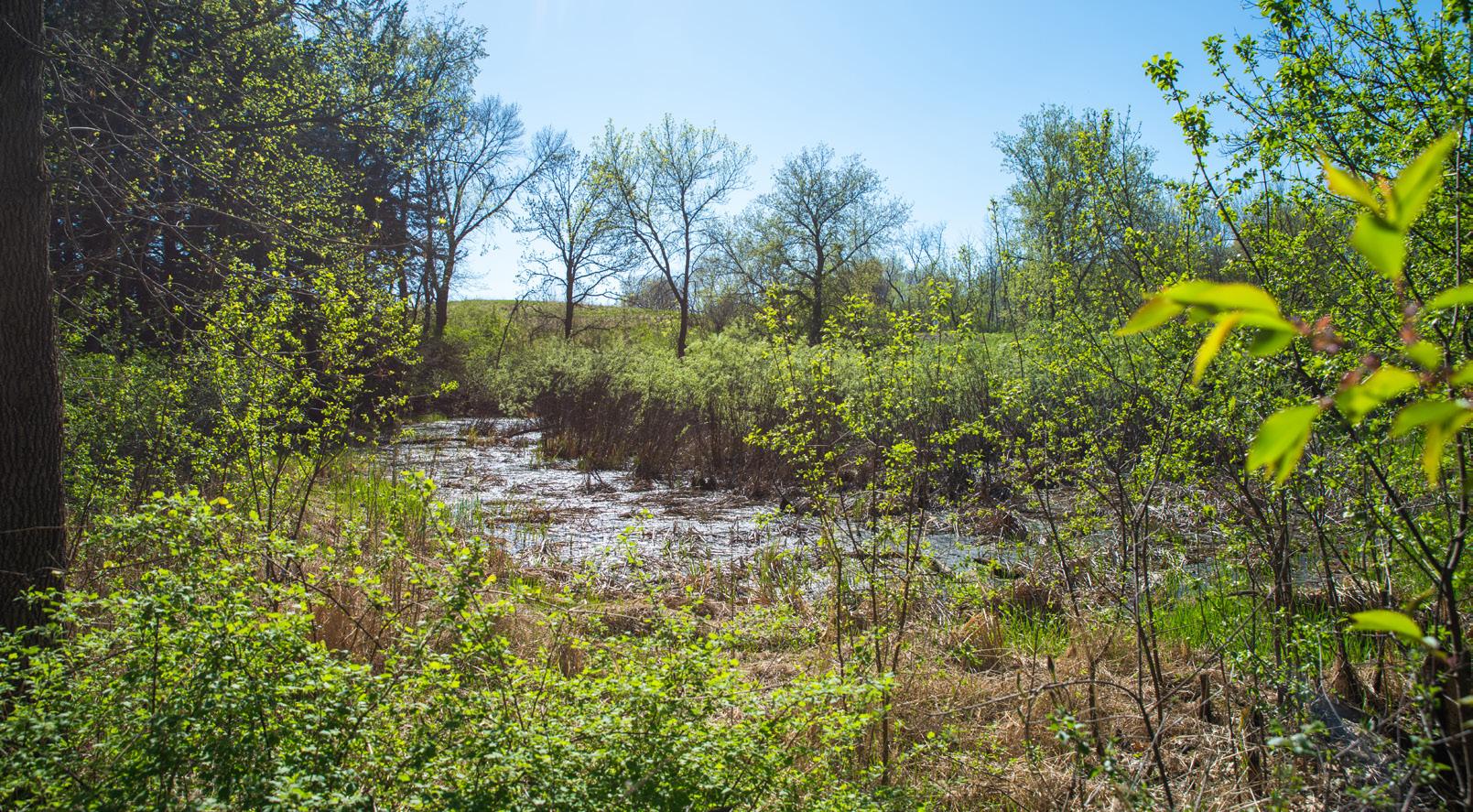
Curious to visit the Lowry Nature Center and experience the Mitakuye Owasiŋ Interpretive Trail? The nature center is located at 7025 Nature Center Drive, Victoria, MN 55386 .
It’s FREE! There is no fee to park or enter the nature center, and it is open Monday–Saturday, 9am–5pm and Sunday, 12–5pm.
Call 763.694.7650 or visit threeriversparks.org/location/lowry-nature-center for more information.
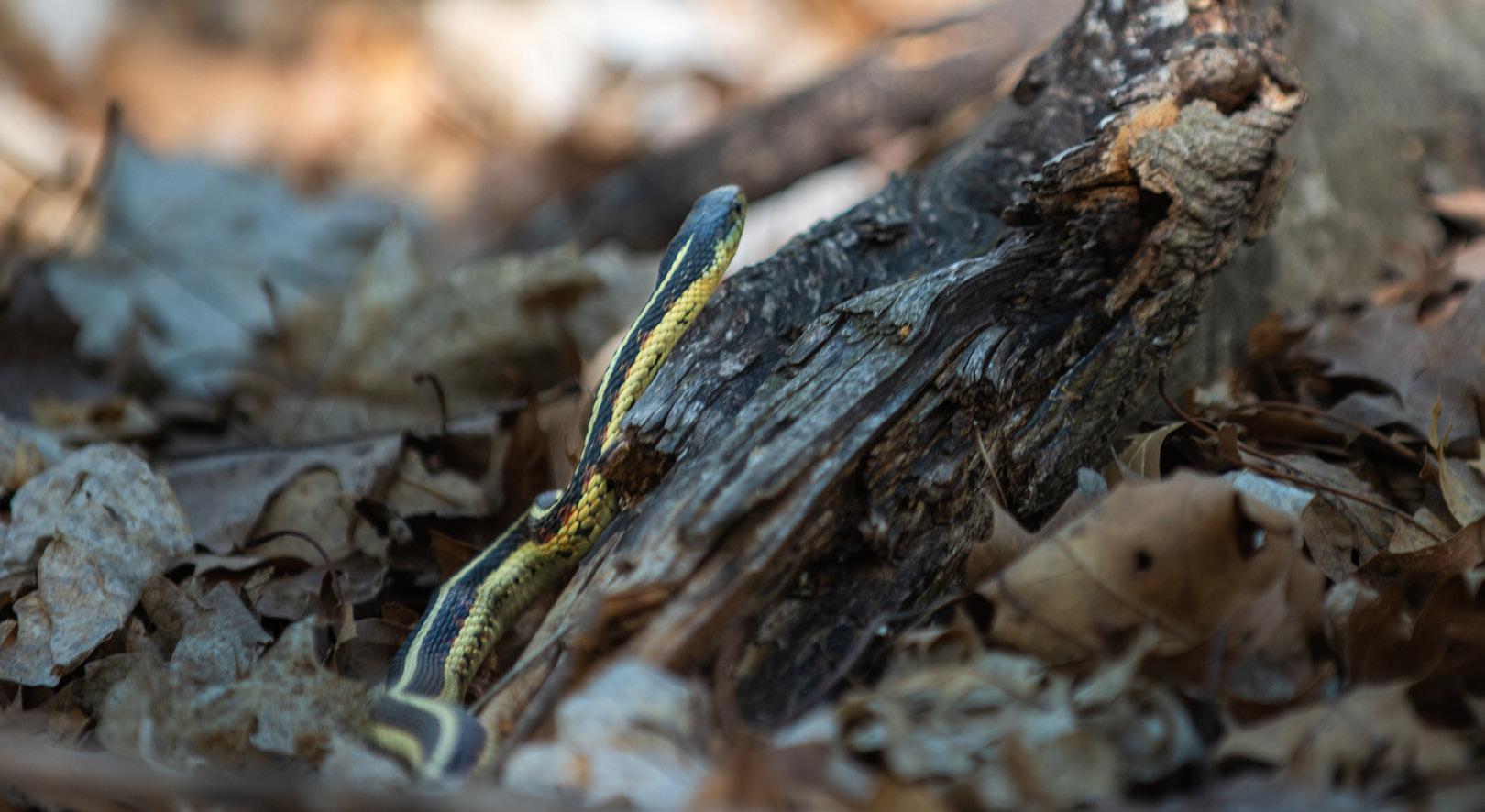

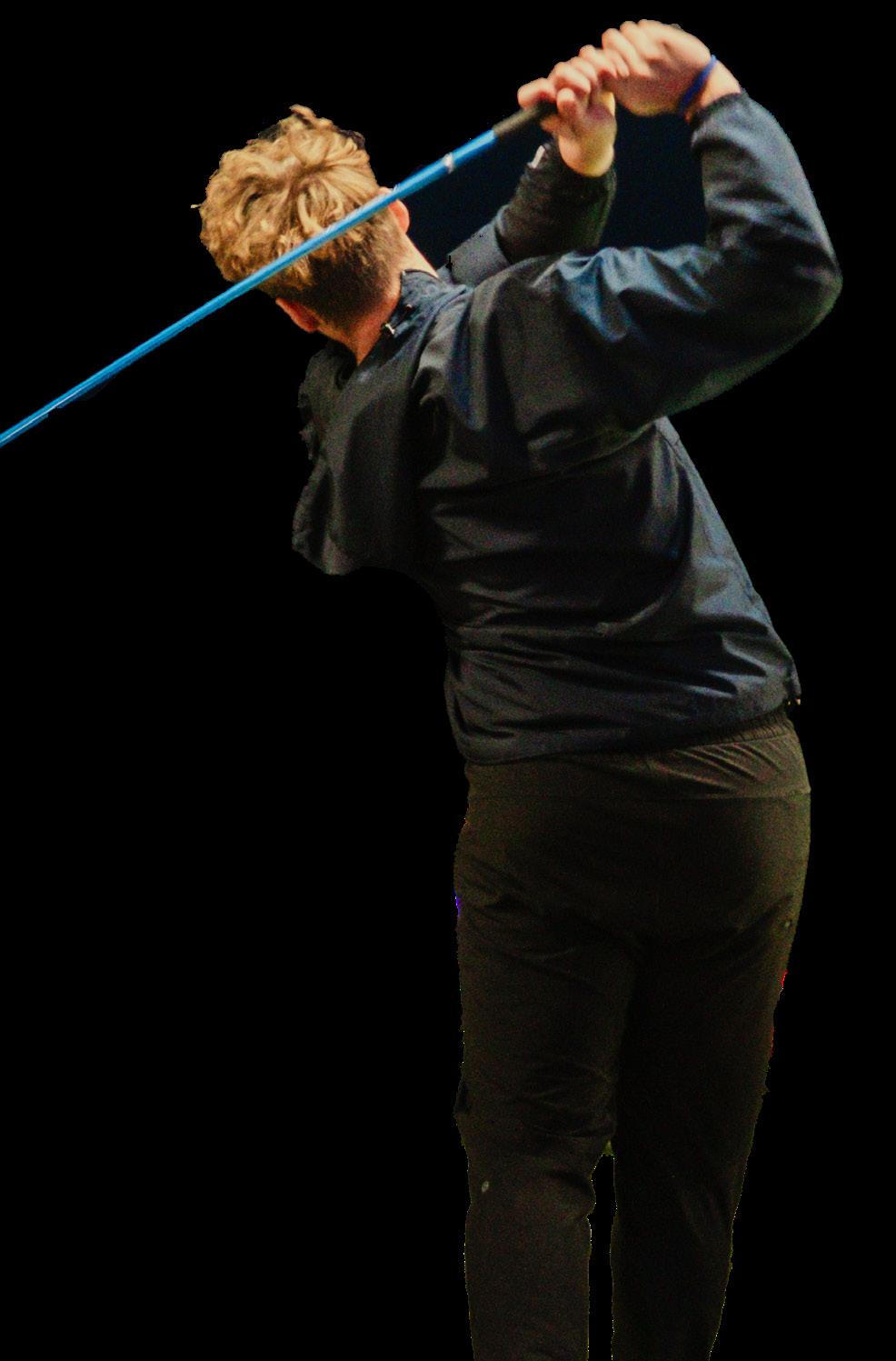



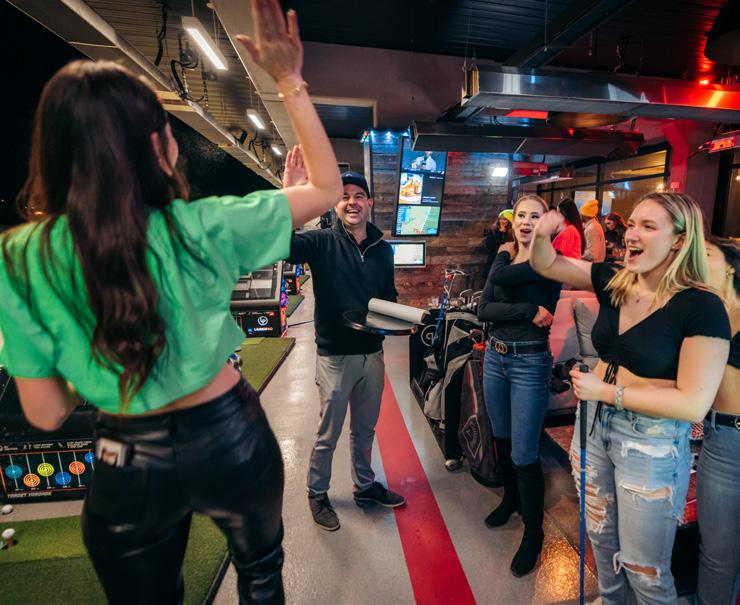



Lifestyle
All the events, products, dining, and entertainment options from in and around our community to refresh, enlighten, and inspire.
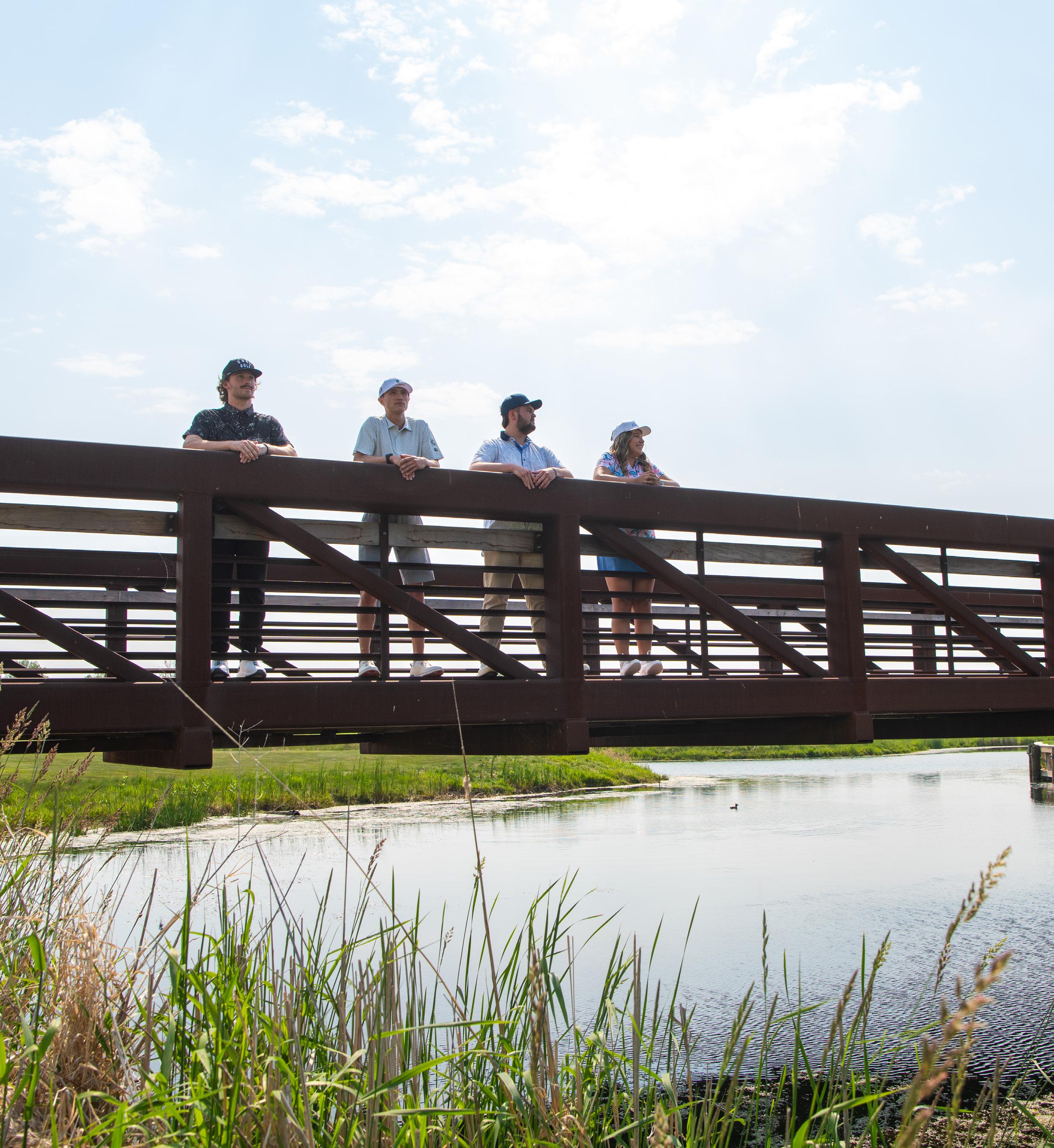

Two Decades of Swings Serenity and
BY BRIAN DEUTSCH
PHOTOS JAKE MILLER

Since 2005, The Meadows at Mystic Lake has been recognized as one of the top golf destinations in the region. Two decades on, the enterprise is just getting started.
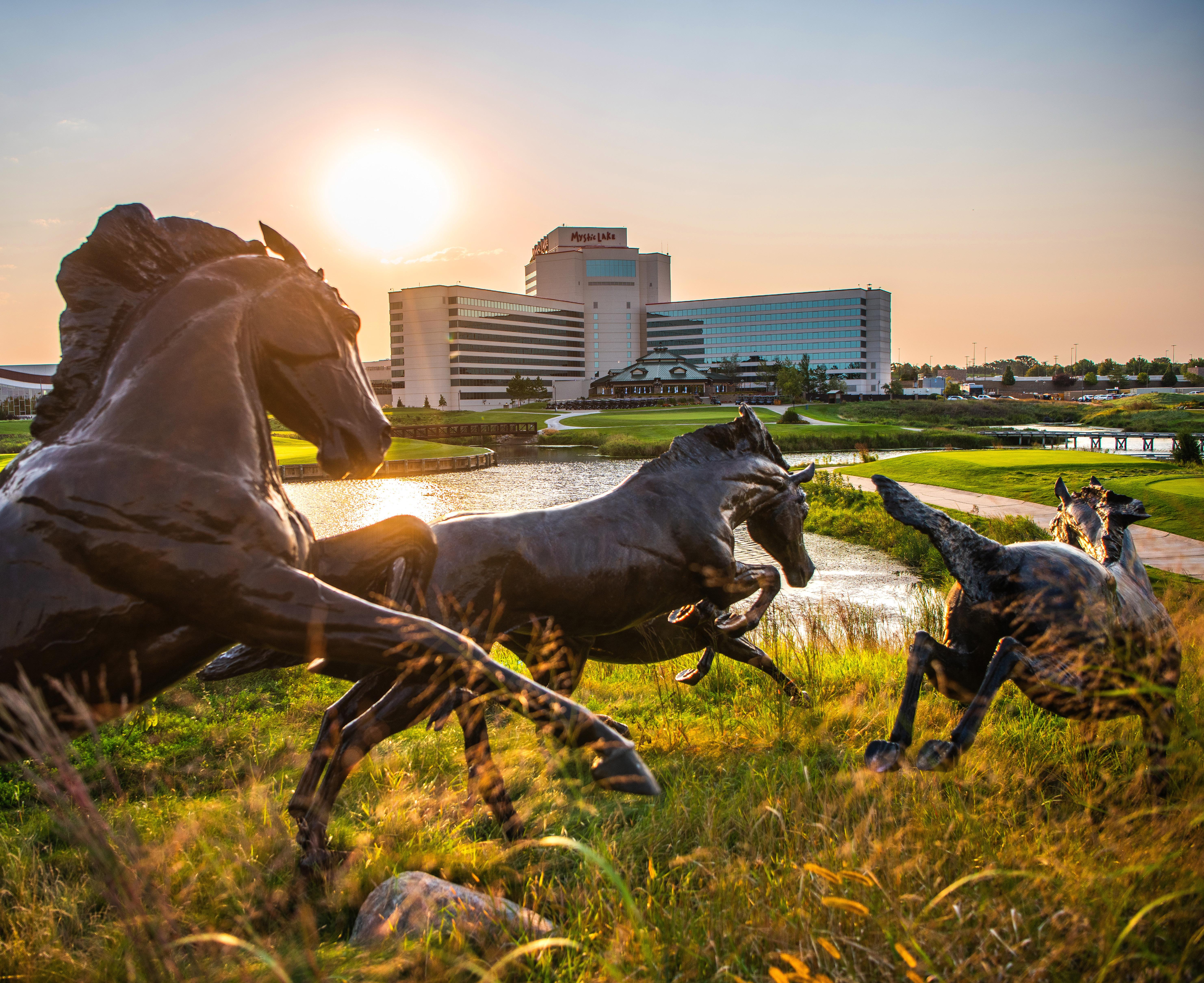
“The Meadows is more than a round of golf, it's an experience. With waterfalls, native plantings, and statuary, it's unlike any other golf course.”
— Garrett Gill, president of Gill Design, Inc.

On March 26, 2025, following an unseasonably mild winter in Minnesota, golfers flocked to The Meadows at Mystic Lake to celebrate an unexpected early start to the golf season. The unofficial holiday is one Midwest golfers anticipate longingly all winter, braving the cold and snow with bated breath and dreams of green grass, sunshine, and that cherished “Open for the Season” message.
And now in its 20th year of operation, the Shakopee Mdewakanton Sioux Community’s prestigious public golf course has not only lived up to the dreams of visitors, it has exceeded them in nearly every imaginable way.
The Meadows at Mystic Lake’s reputation for innovation began at the onset more than 20 years ago.
Originally operated privately as Lone Pine Country Club, the course was purchased by the SMSC in 2002 before being completely remodeled over a two-year period the following year. Reopened in late summer 2005 as The Meadows at Mystic Lake, the course was brought to life by the team of Garrett Gill and Paul Miller—then partnered together at Gill Miller, Inc. The pair, who completed more than 200 golf courses during their partnership, designed one of the most enticing courses in the Twin Cities area with a focus on serenity and natural beauty.
“[The Meadows] is more than a round of golf, it’s an experience,” Garrett Gill, now the president of Gill Design, Inc., said. “With waterfalls, native plantings, and statuary, it’s unlike any other golf course.”
Located inside the footprint of Mystic Lake Casino Hotel in Prior Lake and easily accessible from anywhere in the metro area, the course’s layout sprawls over 11 acres with rolling fairways, manicured greens, and waterways along with an abundance of wildflowers and prairie plants that add to the beauty of the course.
“We
had an opportunity to enhance the natural features of the landscape to create a dramatic golf experience that is second to none in the state of Minnesota.”
— Paul Miller, president of Paul Miller Design, Inc.

Book your tee time at The Meadows at Mystic Lake by visiting golfthemeadows.com and scan the QR code for exclusive content.
“The Meadows at Mystic Lake is the most exciting golf course project that I have been involved in,” said Paul Miller, now the president of Paul Miller Design, Inc. “We had an opportunity to enhance the natural features of the landscape to create a dramatic golf experience that is second to none in the state of Minnesota.”
By nearly every metric, the results have certainly spoken for themselves over the years.
The United States Golf Association (USGA)-rated par-72, 7,207-yard championship layout has annually drawn numerous prestigious awards and recognitions from the Minnesota Star Tribune, Golf Digest, Golfweek, and Midwest Gaming and Travel, among others. Meanwhile, the course’s beautiful scenery and challenging level of play has drawn golfers to the area with numbers nearly doubling from 15,000 rounds to 27,000 rounds last year.
The reputation of The Meadows at Mystic Lake extends far beyond the everyday golfer as the venue has attracted high-level events over the years including Legends of the LPGA events in 2022 and 2023 and a U.S. Women’s Open Qualifying Event in early 2025.
All the while, the staff overseeing The Meadows at Mystic Lake have worked tirelessly to maintain that reputation and momentum by bolstering the course’s offerings. From significant course layout upgrades—including unparalleled practice facilities—to new advancements in golf technology, training, and amenities, The Meadows at Mystic Lake has become an all-in-one location for everything a golfer could want or need.
“The Meadows is thriving after 20 years in operation and a significant reason for this is the SMSC's continued efforts to enhance the golfer and visitor experience,”
Director of Golf Mike Luckcraft said.
“We are beyond grateful for that investment and support, and I think that’s one of the big draws of the course that keeps bringing people and event partners back year after year.”
For a golf facility that aims to meet every need for every visitor, “what’s next?” could be a tough question to answer—especially after two decades of operation.
But the staff at The Meadows welcomes the challenge with a goal of creating memorable experiences for every visitor, whether they are working on their game, picking up the latest apparel and equipment in the golf shop, or grabbing drinks and dinner.
“New and improved” is a constant state of operation at The Meadows at Mystic Lake and one that has been rewarding visitors for 20 years.
Meanwhile, the growth and success of The Meadows at Mystic Lake has also

been vital to the vision for the SMSC’s newest upcoming enterprise— LaunchPad Golf The Meadows.
Opening in the fall of 2025, the golf entertainment experience will bolster the SMSC’s golf offerings and create a year-round haven for players of all ages and skill levels.
“It’s certainly an exciting time for all of us. It’s been amazing to watch The Meadows continue to evolve and grow over the years and to be part of such a great facility that earns recognition on an annual basis,” Luckraft said.
“We have a great team here across the board, and all of our team members are focused on providing the best experience for every visitor, whether this is their first visit to The Meadows or if they’ve been coming here for two decades. Either way, we want them to remember their visit and hopefully we’ll continue to see them for another 20 years.”



A Golf Lover’s
Paradise
The allure of The Meadows at Mystic Lake goes far beyond the pristine course with virtually every amenity a golfer could dream of, including the latest and greatest equipment and apparel available at The Meadows Golf Shop. Open year-round and stocked with the brands golfers know and love, The Meadows Golf Shop has the right fit for every occasion—from replacing a forgotten item to fi nding the perfect memento after an unforgettable round.

Stay ahead of the field with state-of-the-art clubs and equipment from industry leaders like Callaway and TaylorMade. Featuring the hottest items of the season, The Meadows at Mystic Lake also hosts exclusive club fitting events for top brands throughout the year—giving golfers an edge over the competition. Using TrackMan Pro technology and the visualization of ball flight, our trained sta can guide players to the correct length, lie angle, grip size and style, club lo , and set makeup to help golfers play their best.



TAYLORMADE QI35
DRIVER $649

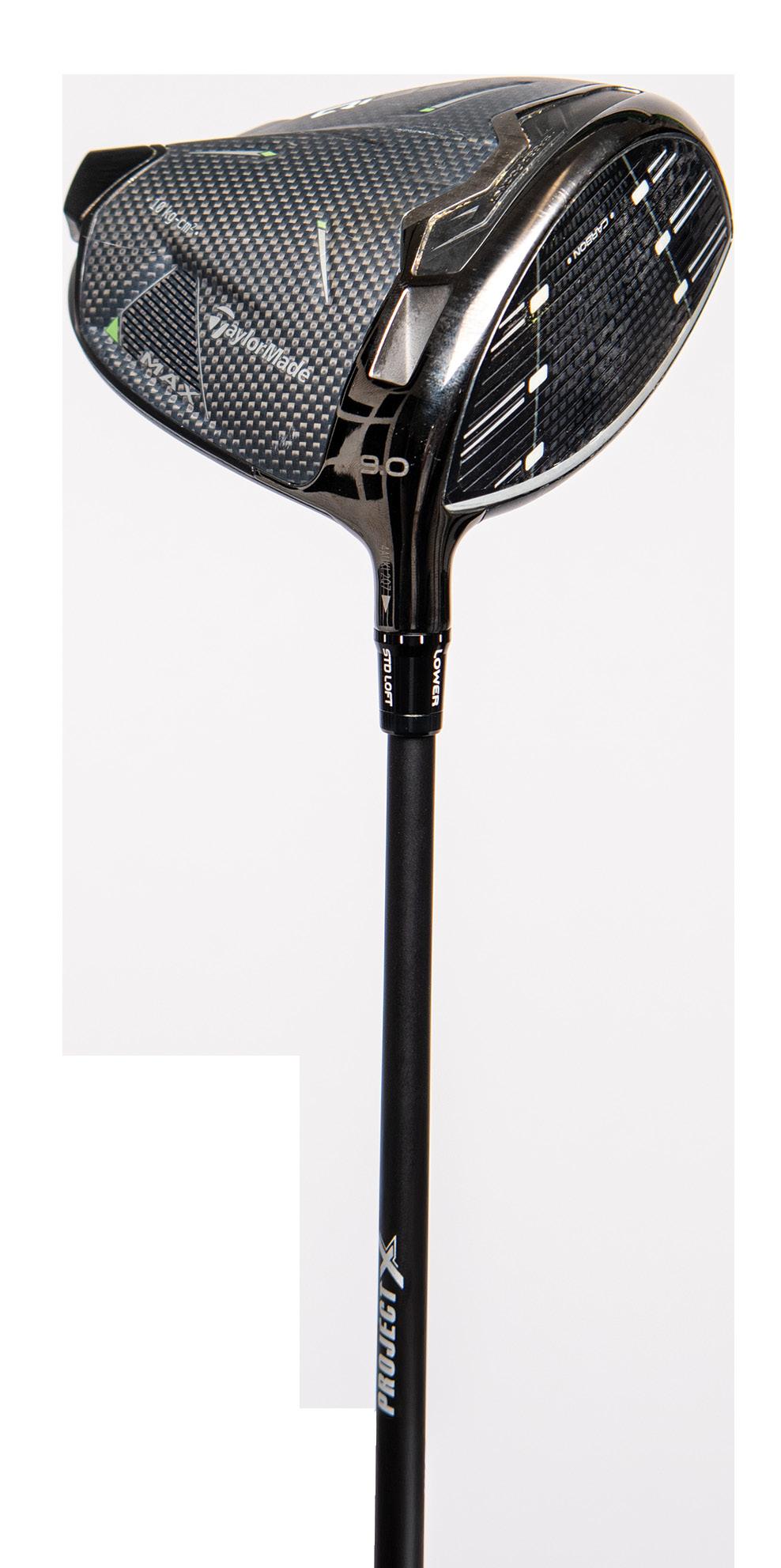

ODYSSEY AI-ONE
JAILBIRD CRUISER $349
PITCHFIX DIVOT TOOL $15
TAYLORMADE SPECIAL RELEASE (DOZEN) $65
Look your best on the course with some of the top brands in golf apparel, including Waggle, UNRL, Greyson, and more—all available at The Meadows Golf Shop. Stop in and check out with the newest releases, including seasonal drops from your favorite golf brands.






CALLAWAY HAT $40
CALLAWAY HAT $40
WAGGLE HAT $45
GREYSON MEN’S POLO $118
UNRL HAT $34
RALPH LAUREN SKORT $130
WAGGLE WOMEN’S POLO $70
G/FORE WOMEN’S MG4X2 HYBRID GOLF CROSS TRAINER $199

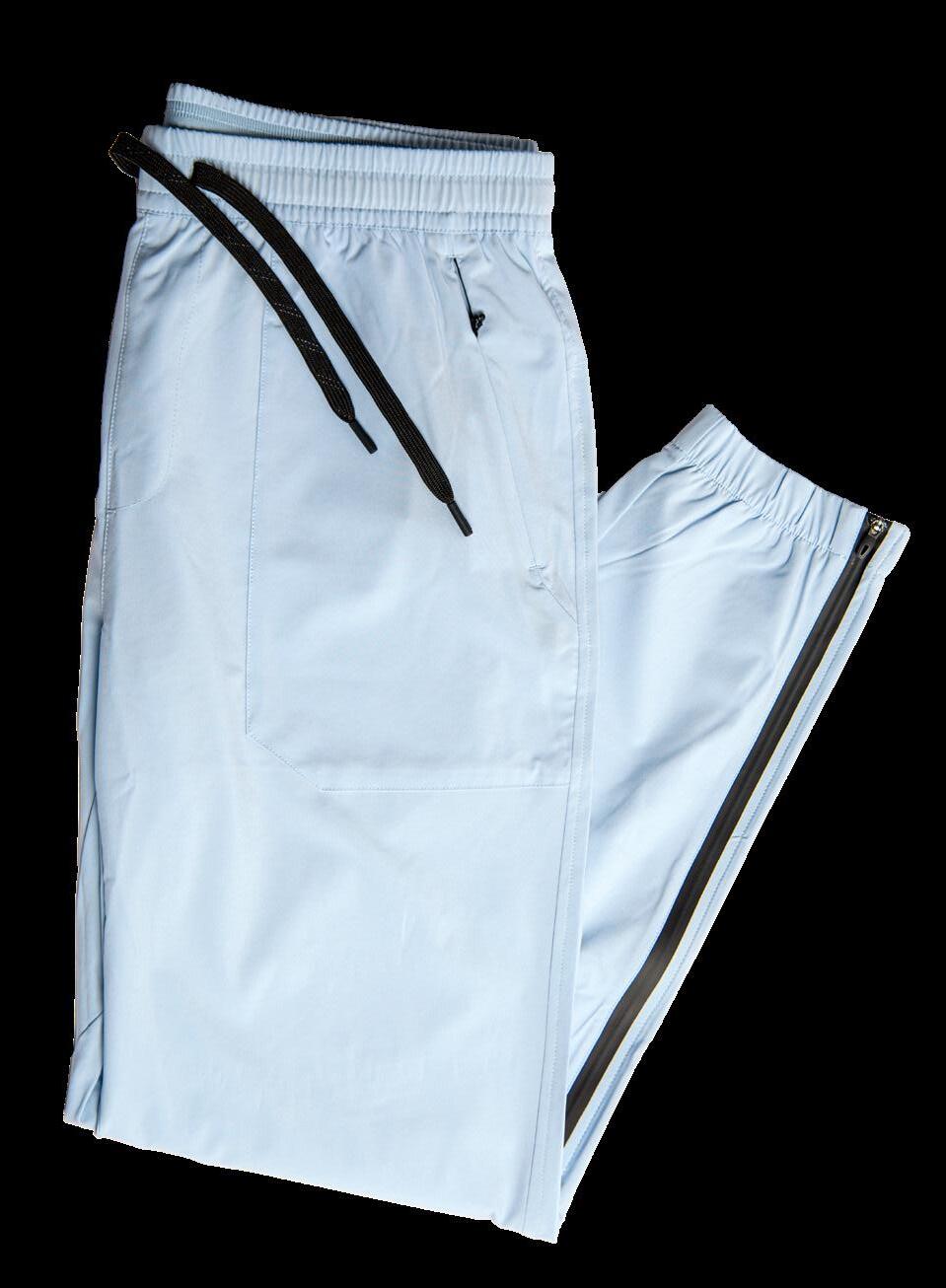




Work on your game all year long at The Meadows at Mystic Lake and The Meadows Golf Shop. From beginners clinics to private lessons, our team of golf professionals will set goals and track progress for all ages and abilities. Training at The Meadows includes TrackMan Pro—the world’s most accurate swing and ball flight analysis. As one of the few venues in Minnesota that o ers the revolutionary service for indoor and outdoor use, golfers can train using the same technology used by tour professionals and industry experts.
UNRL MEN’S POLO $90
UNRL TRACK PANTS $85
UNRL MEN’S STRATFORD SHORTS $75
G/FORE MEN’S GALLIVAN2R GOLF SHOE $175
WAGGLE MEN’S POLO $75

Take a Moment
for Yourself
WITH THE SPA AT MYSTIC LAKE

Let your stress melt away and treat yourself to the ultimate escape. The Spa at Mystic Lake is your invitation to relax, renew, and recharge so you can feel your best.

The renovated space is a peaceful retreat nestled inside Mystic Lake Casino Hotel. When The Spa first opened in 2006, it featured steam rooms and luxury showers but over the years it has expanded to include even more ways for guests to pamper themselves.
Treat yourself this summer to well-deserved self-care with a Papaya-Pineapple Crème Fraîche Wrap. This tropical-inspired body treatment gently exfoliates and deeply hydrates the skin using natural enzymes and rich moisturizers. It leaves your skin feeling silky-smooth, nourished, and rejuvenated from head to toe.
Soothe your body, mind, and soul with a healing River Rock Stone Massage or refresh your complexion and feel completely restored inside and out with a Blissful Detox Facial.
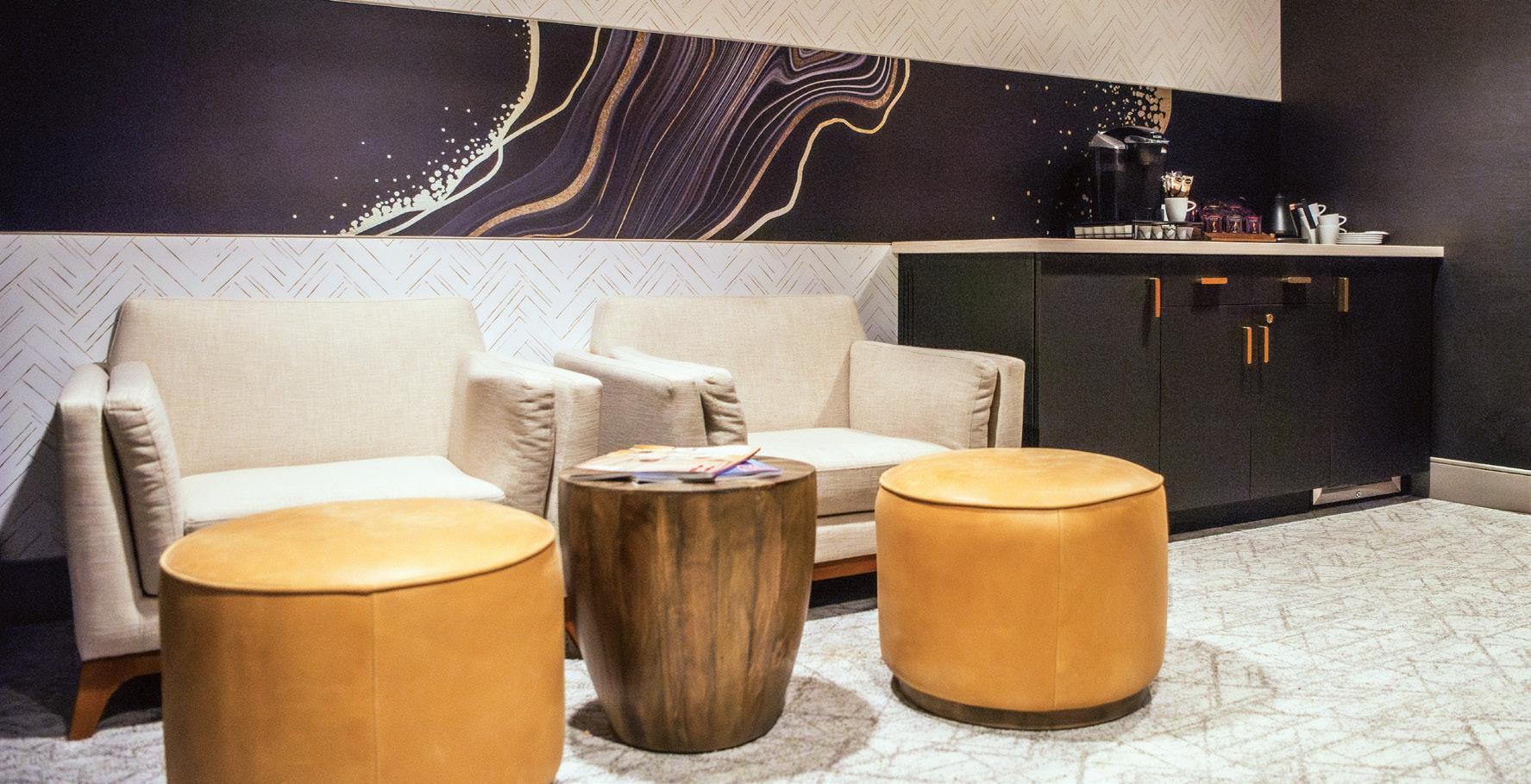


If you don’t have a lot of time to devote to self-care, we have the perfect option for you! Stop by for a 60-minute massage—it’s the most popular offering and a great way to quickly relieve muscle tension and improve circulation. Waxing and lash services are also available—perfect for preparing for a special event, date night, or a weekend escape with friends.
The pampering doesn’t have to end there! Step outside The Spa doors and explore all that Mystic Lake Casino Hotel has to offer. Play a round at our championship golf course, The Meadows at Mystic Lake, or feel the rush of excitement with every hand in our all-new baccarat room. Savor cuisine that’s a cut above at Mystic Steakhouse or live it up with the stars in the Mystic Showroom—there are countless ways for you to indulge!
Whether you’re seeking a pause from the day to day, a rejuvenating treatment, or simply maintaining your beauty routine, there’s always a meaningful reason to visit The Spa at Mystic Lake. W
THE SPA AT MYSTIC LAKE HOURS
Monday-Friday 10am-8pm Saturday 9am-8pm Sunday 9am-4pm
Book your appointment by calling 952.233.2990 or view a full list of services online at mysticlake.com/golf-and-spa
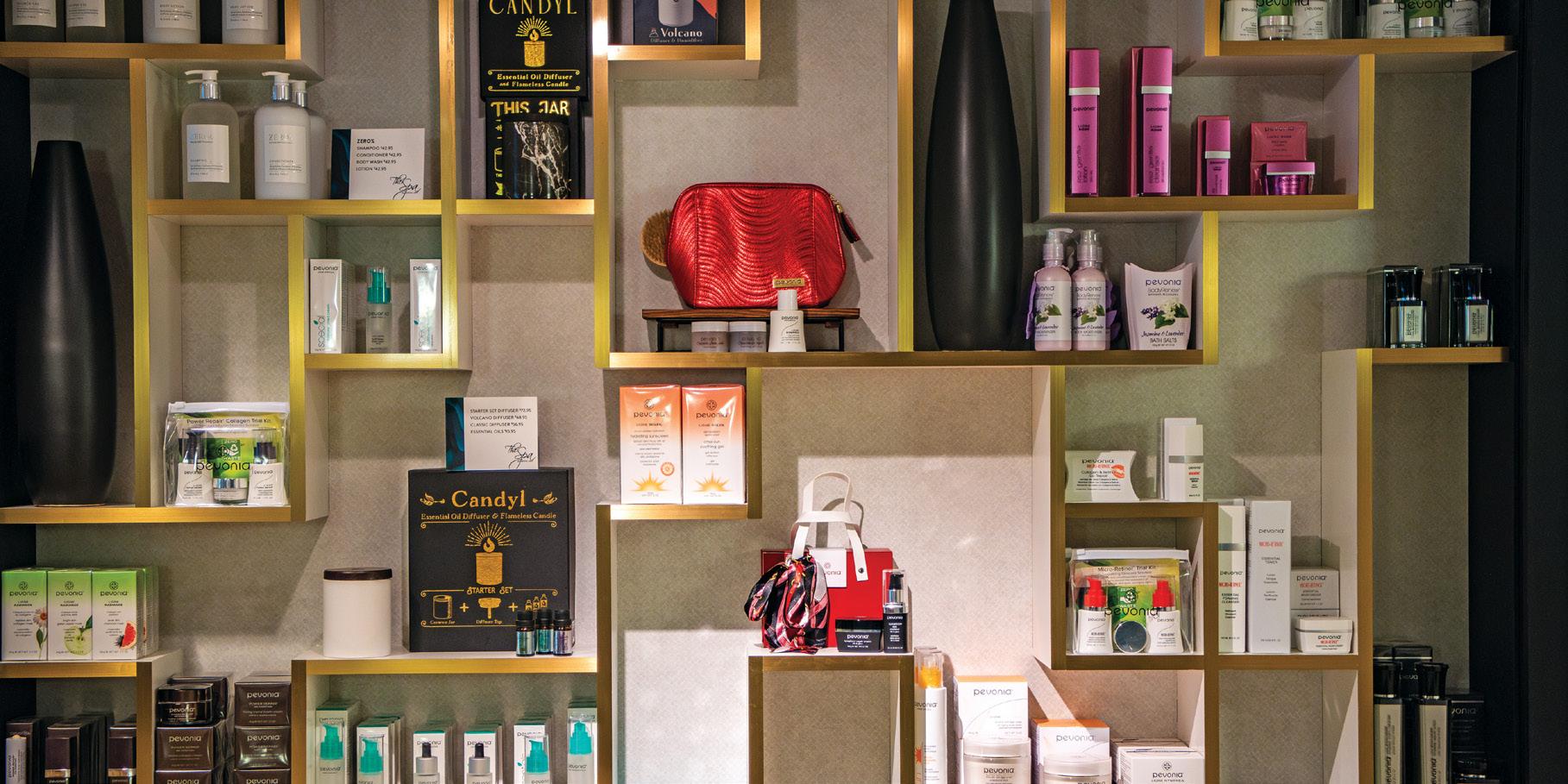
Simple and Sweet
A Tasty Treat You Can Feel Good About Eating
Sun Blossom Cookies are a favorite treat around the Shakopee Mdewakanton Sioux Community. Named after the sunflower seed butter and sunflower oil that give them their unique flavor, these cookies are naturally sweetened with a touch of maple syrup and made with wholesome ingredients. Gluten-free and dairy-free, they’re the perfect addition to your outdoor barbecue or picnic this summer that everyone can enjoy.
Sun Blossom Cookies
Makes 18-24 Cookies
Ingredients
1½ cups pumpkin seed flour
1½ cups oat flour
¾ cup sunflower seed butter (or choice of nut butter)
¾ cup maple syrup
½ cup sunflower oil
1½ cups dried cranberries
1 cup white chocolate chips (optional, non-vegan)
Directions
Preheat oven to 325 degrees.
In a small bowl, combine pumpkin seed flour and oat flour. Whisk until well combined. Set aside.
In a large bowl or stand mixer, combine sunflower seed butter, maple syrup, and oil. Whisk until well combined.
Fold cranberries and chocolate chips into the wet ingredient mixture.
Slowly add in flour mixture and stir until well combined.
On a parchment-lined baking sheet, roll out the dough into one-inch balls and press gently to create a disc. Cookies should be flat, but not thin.
Bake for 8-10 minutes or until the edges are golden brown. W

Hosting a party or event this summer?
Add Sun Blossom Cookies to your order om SMSC-owned Native Harvest Catering. View the menu at nativeharvestcatering.com.
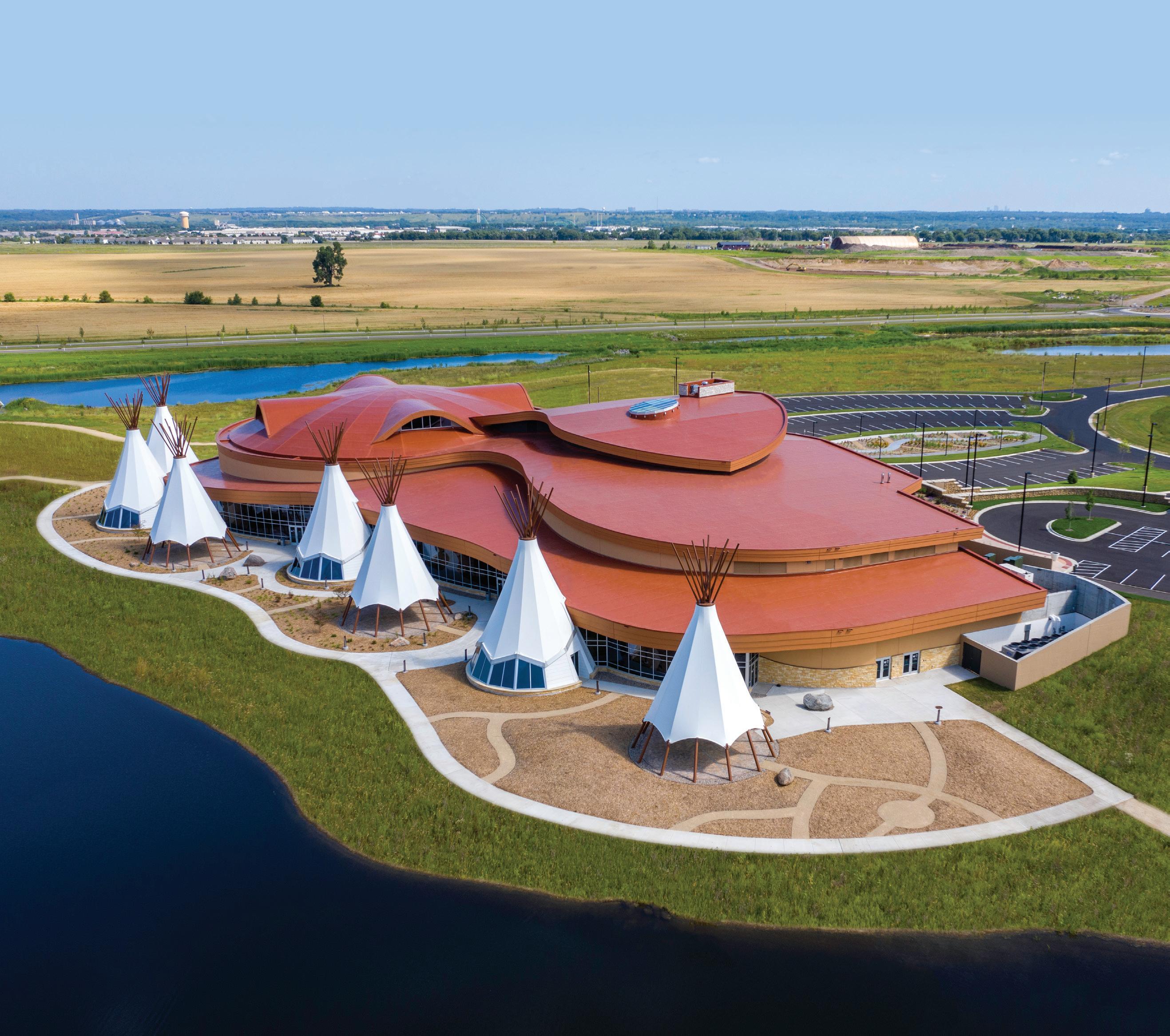

DISCOVER DAKOTA LIFEWAYS, PAST AND PRESENT AT HOĊOKATA ṪI
The Shakopee Mdewakanton Sioux Community (SMSC) owns and operates Hoċokata Ṫi, the tribe’s cultural center and gathering space. Visitors to the awardwinning facility can discover Dakota history at the public exhibit, Mdewakanton: Dwellers of the Spirit Lake and check out unique goods from Native artists at the gift shop.
Plan your visit at hocokatati.org

HOCOKATATI.ORG
Owned and operated by the
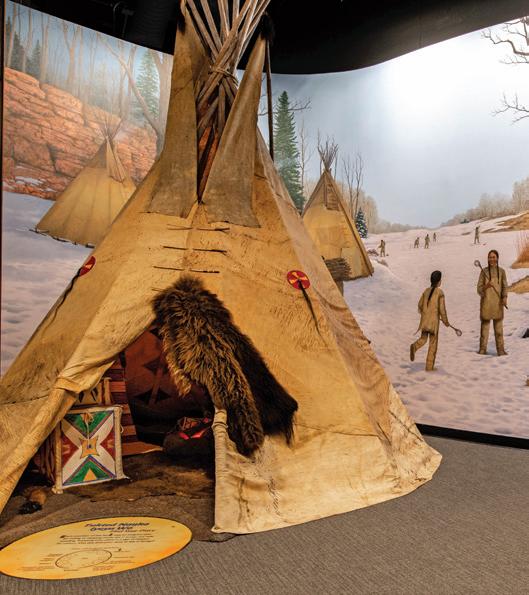
Explore Dakota history and heritage through a multisensory experience that traces the roots, culture, language, and lifeways of the Mdewakanton people, past and present. Sit within a traditional Dakota tipi, view artifacts, touch the hides of animals traditionally hunted by the Dakota people, learn Dakota terms, and much more.
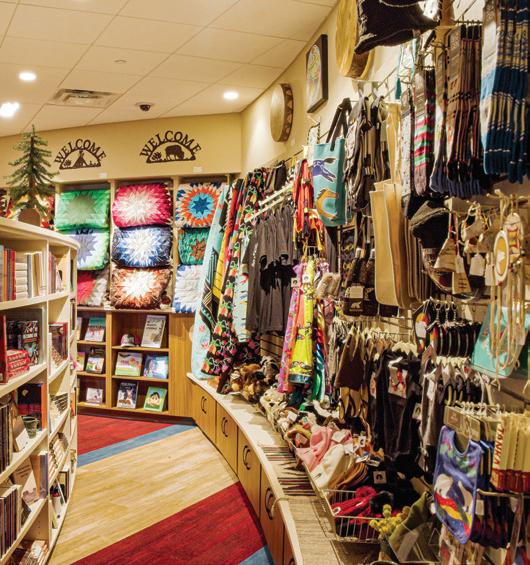
Check out a variety of one-of-a-kind items from more than 70 Native artists and Native-owned businesses, including art, books, hand-crafted jewelry, home goods, and so much more. With an ever-changing selection of new products, the gift shop always has something new and exciting!
Shakopee Mdewakanton Sioux Community
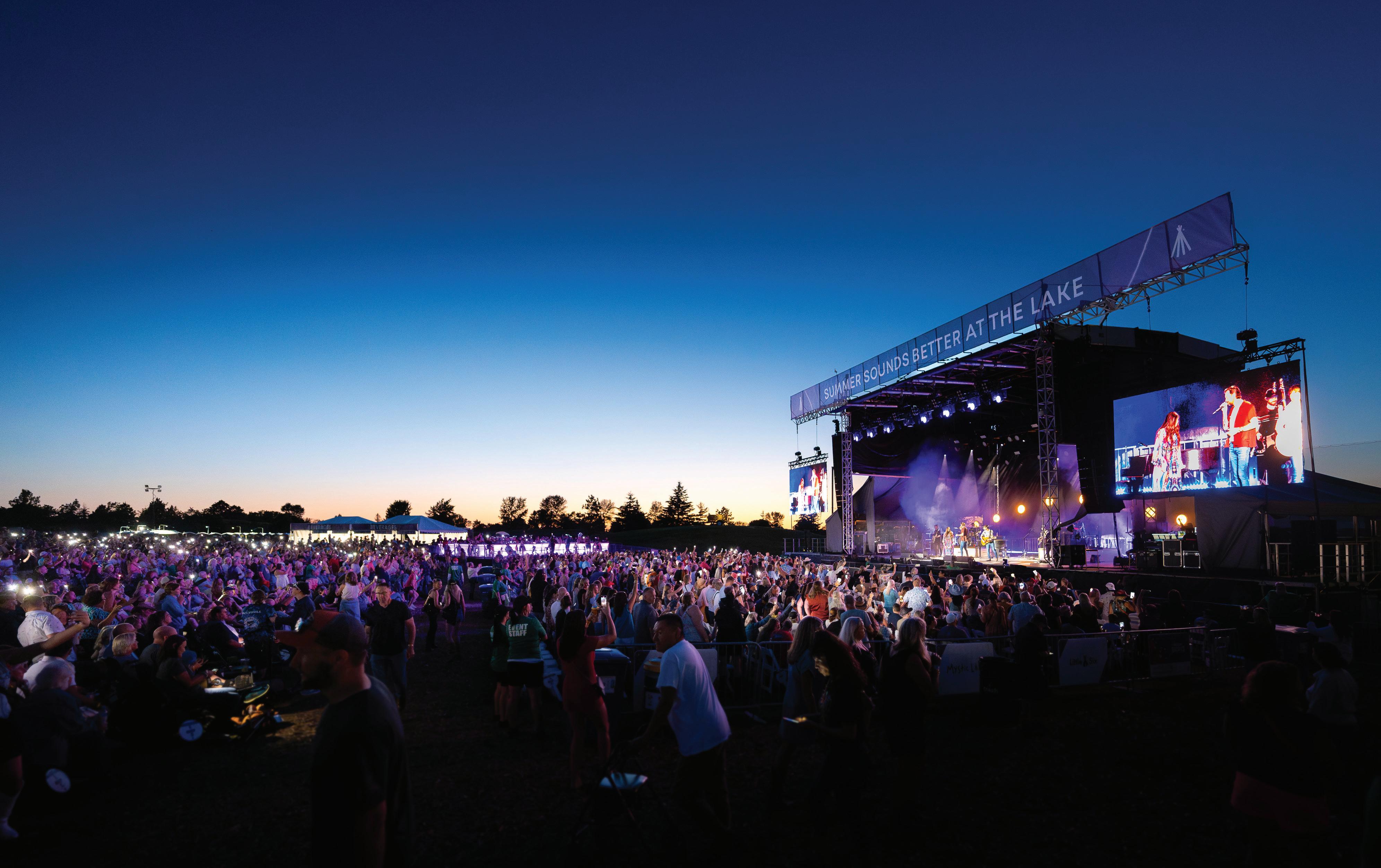

Scan the QR to view upcoming live performances at Mystic Lake Casino Hotel.
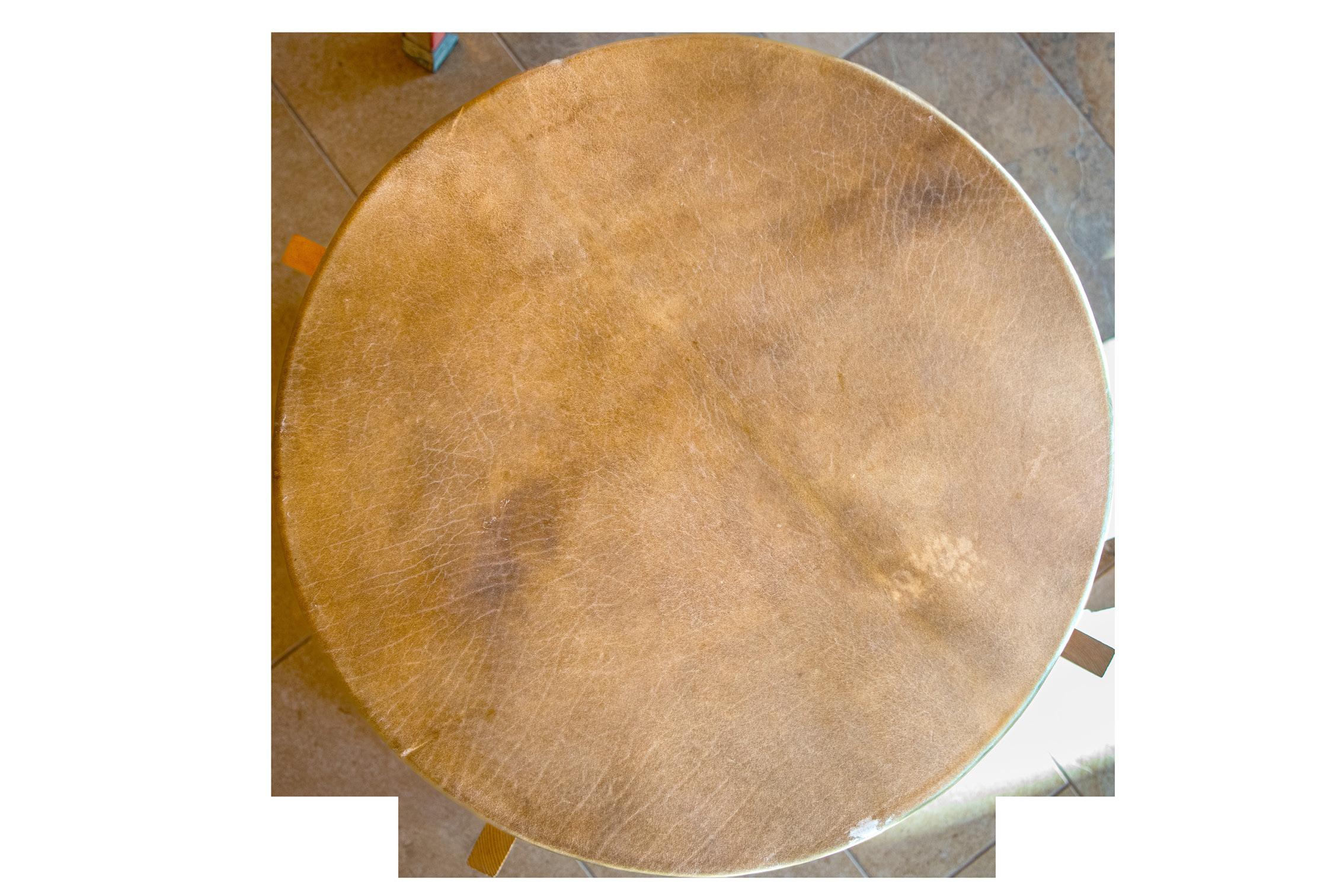
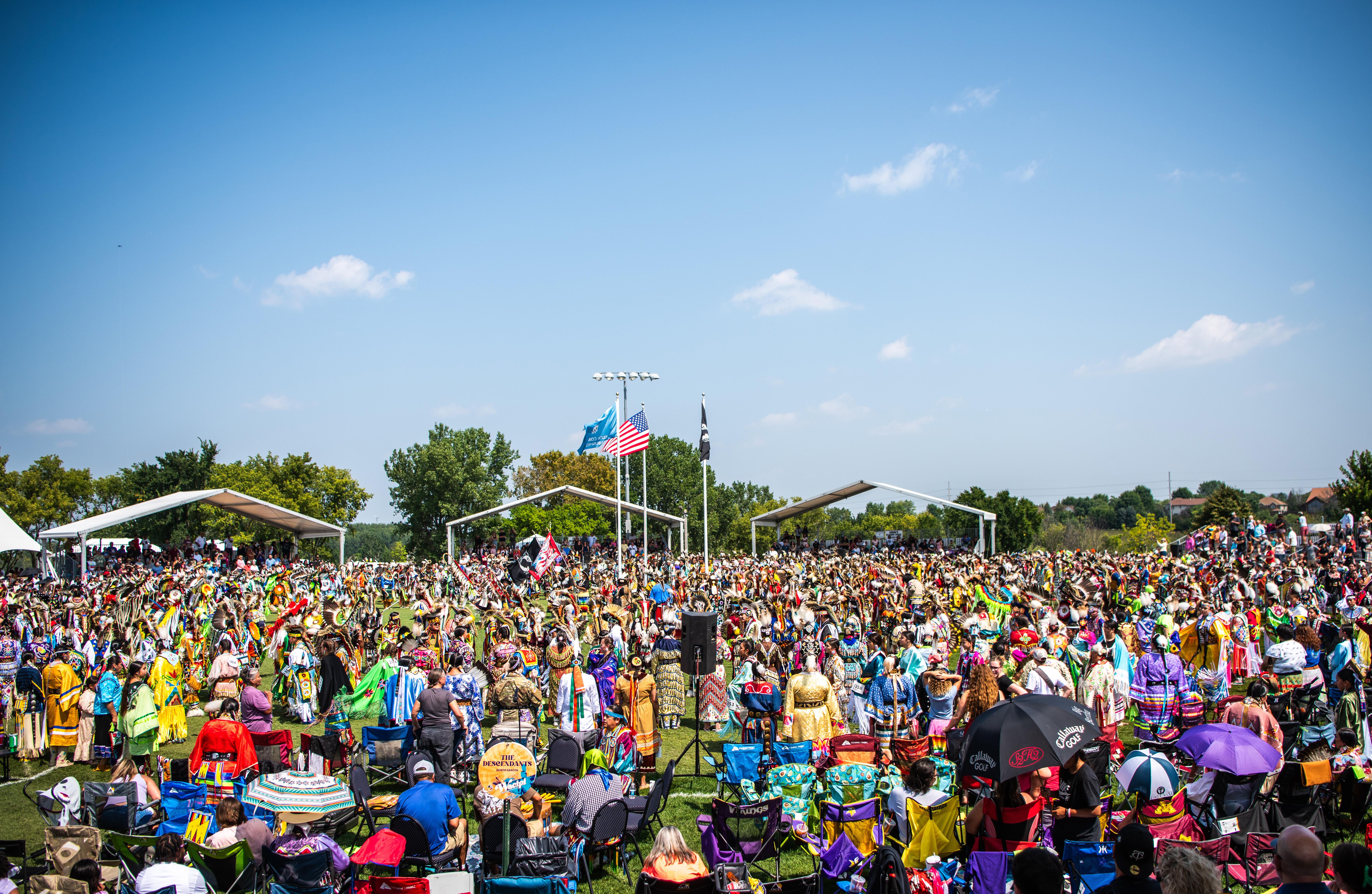



AUGUST15-17,2025 PublicWelcome

